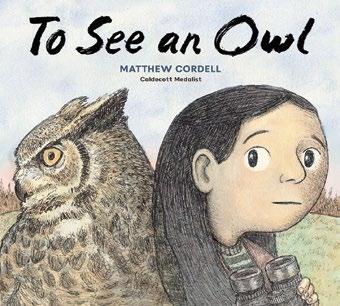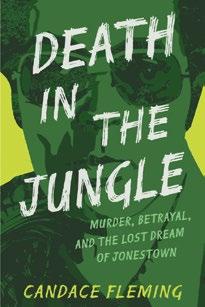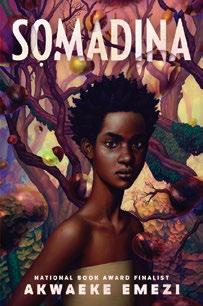FEATURING 296 Industry-First Reviews of Fiction, Nonfiction, Children’s, and YA Books



FEATURING 296 Industry-First Reviews of Fiction, Nonfiction, Children’s, and YA Books


The bestselling novelist shows readers a good time in The Note




FROM THE EDITOR’S DESK
HAPPY NEW YEAR! Now fasten your seat belts: Given the dire state of our world at present, 2025 promises to be a bumpy ride. In such ominous times, you’d expect readers to seek out escapist fare—cozy mysteries, breezy rom-coms, books with magic and dragons galore.
But booksellers found the opposite trend in effect in the days immediately following the U.S. presidential election—the results of which, let’s face it, depressed roughly half the electorate. As Kirkus and many other outlets reported in November, consumers were seeking out dystopian fiction. The Handmaid’s Tale, Margaret Atwood’s prescient 1985 novel of life in a theocratic regime where women are second-class citizens forced to bear children, was the No. 2 seller on Amazon, while
George Orwell’s Animal Farm and Ray Bradbury’s Fahrenheit 451—classic depictions of totalitarianism—also saw dramatic spikes in sales.
Sometimes you just have to embrace the darkness, I guess. During those uncertain postelection weeks, I picked up an advance reading copy of Ali Smith’s forthcoming novel. In her acclaimed Seasonal Quartet, the Scottish-born author offered a real-time snapshot of the United Kingdom in the aftermath of the Brexit vote, written rapidly as events were unfolding. It was politically engaged writing— Summer won the Orwell Prize for political fiction—set firmly in our current-day society.
Now, in Gliff (Pantheon, Feb. 4), Smith imagines a future (not so distant?)
Frequently Asked Questions: www.kirkusreviews.com/about/faq
Fully Booked Podcast: www.kirkusreviews.com/podcast/
Advertising Opportunities: www.kirkusreviews.com/book-marketing
Submission Guidelines: www.kirkusreviews.com/about/publisher-submission-guidelines
Subscriptions: www.kirkusreviews.com/magazine/subscription
Newsletters: www.kirkusreviews.com
For customer service or subscription questions, please call 1-800-316-9361
where the government compiles vast troves of data on its citizens and renders certain people “unverified,” literally painting red lines around their homes. We encounter this world through the eyes of tween siblings whose existence becomes precarious after their mother departs to work in an “art hotel” and her boyfriend abandons them. The reader, like young Rose and Briar, is trying to decipher the rules and meanings of this inscrutable society. Our starred review calls it a “dark vision brightened by the engaging craft of an inventive writer.”
Gliff, while often philosophical and high-minded (one thematic strain has to do with the slipperiness of language and meaning in an authoritarian state), will satisfy readers seeking out dystopian scenarios. Here are two more books, also out soon, that take readers to the dark side.
Darkmotherland by Samrat Upadhyay (Soho, Jan. 7): This epic new novel, by the Nepalese American author of Mad Country and other books, imagines a fictional
Himalayan nation ruled by an autocrat known as PM Papa. After a devastating earthquake destroys half the country, a state of emergency is declared—and “all political activities [are] immediately banned.” Our starred review likens the book to “Pynchon by way of Rushdie… Dizzyingly complex and dazzlingly written, full of rewards and arch humor for the patient reader.”
The Capital of Dreams by Heather O’Neill (Harper Perennial/HarperCollins, Jan. 7): In the fictional country of Elysia, young Sofia Bottom-Zier, daughter of a leading intellectual, is sent on a “Children’s Train” to the countryside after the invading “Enemy” promises children safe passage out of the besieged capital. But are they actually being sent to their executions? In a starred review, our critic praises this “fairy tale–adjacent bildungsroman” as “heartbreaking, magical, and real.”








Co-Chairman
HERBERT SIMON
Publisher & CEO
MEG LABORDE KUEHN mkuehn@kirkus.com
Chief Marketing Officer
SARAH KALINA skalina@kirkus.com
Publisher Advertising & Promotions
RACHEL WEASE rwease@kirkus.com
Indie Advertising & Promotions
AMY BAIRD abaird@kirkus.com
Author Consultant RY PICKARD rpickard@kirkus.com
Lead Designer KY NOVAK knovak@kirkus.com
Magazine Compositor
NIKKI RICHARDSON nrichardson@kirkus.com
Kirkus Editorial Senior Production Editor ROBIN O’DELL rodell@kirkus.com
Kirkus Editorial Senior Production Editor
MARINNA CASTILLEJA mcastilleja@kirkus.com
Kirkus Editorial Production Editor
ASHLEY LITTLE alittle@kirkus.com
Copy Editors
ELIZABETH J. ASBORNO
LORENA CAMPES
NANCY MANDEL BILL SIEVER
Contributing Writers
GREGORY MCNAMEE
MICHAEL SCHAUB
Co-Chairman
MARC WINKELMAN
Editor-in-Chief TOM BEER tbeer@kirkus.com
President of Kirkus Indie
CHAYA SCHECHNER cschechner@kirkus.com
Fiction Editor
LAURIE MUCHNICK lmuchnick@kirkus.com
Nonfiction Editor JOHN McMURTRIE jmcmurtrie@kirkus.com
Young Readers’ Editor
LAURA SIMEON lsimeon@kirkus.com
Young Readers’ Editor
MAHNAZ DAR mdar@kirkus.com
Editor at Large MEGAN LABRISE mlabrise@kirkus.com
Senior Indie Editor DAVID RAPP drapp@kirkus.com
Indie Editor ARTHUR SMITH asmith@kirkus.com
Editorial Assistant
NINA PALATTELLA npalattella@kirkus.com
Indie Editorial Assistant
DAN NOLAN dnolan@kirkus.com
Indie Editorial Assistant SASHA CARNEY scarney@kirkus.com
Mysteries Editor
THOMAS LEITCH

Contributors
Reina Luz Alegre, Autumn Allen, Paul Allen, Stephanie Anderson, Jenny Arch, Kent Armstrong, Mark Athitakis, Nada Bakri, Colette Bancroft, Audrey Barbakoff, Elizabeth Bird, Elissa Bongiorno, Hannah Bonner, Melissa Brinn, Jessica Hoptay Brown, Cliff Burke, Kevin Canfield, Catherine Cardno, Tobias Carroll, Sandie Angulo Chen, Amanda Chuong, Tamar Cimenian, K.W. Colyard, Emma Corngold, Kim Dare, Michael Deagler, Cathy DeCampli, Dave DeChristopher, Elise DeGuiseppi, Suji DeHart, Steve Donoghue, Elspeth Drayton, Eamon Drumm, Jacob Edwards, Lisa Elliott, Tanya Enberg, Chelsea Ennen, Kristen Evans, Joshua Farrington, Brooke Faulkner, Margherita Ferrante, Amy Seto Forrester, Mia Franz, Ayn Reyes Frazee, Jenna Friebel, Nivair H. Gabriel, Carol Goldman, Amy Goldschlager, Carla Michelle Gomez, Melinda Greenblatt, Vicky Gudelot, Tobi Haberstroh, Dakota Hall, Alec Harvey, Peter Heck, Lynne Heffley, Ralph Heibutzki, Loren Hinton, Zoe Holland, Yung Hsin, Abigail Hsu, Julie Hubble, Kathleen T. Isaacs, Kristen Jacobson, Wesley Jacques, Kerri Jarema, Ivan Kenneally, Colleen King, Katherine King, Stephanie Klose, Lyneea Kmail, Alexis Lacman, Megan Dowd Lambert, Christopher Lassen, Tom Lavoie, Judith Leitch, Donald Liebenson, Elsbeth Lindner, Coeur de Lion, Patricia Lothrop, Mikaela W. Luke, Wendy Lukehart, Kyle Lukoff, Leanne Ly, Joan Malewitz, Joe Maniscalco, Collin Marchiando, Emmett Marshall, J. Alejandro Mazariegos, Kirby McCurtis, Jeanne McDermott, Zoe McLaughlin, Carrigan Miller, J. Elizabeth Mills, Chintan Modi, Tara Mokhtari, Clayton Moore, Rebecca Moore, Andrea Moran, Rhett Morgan, Molly Muldoon, Jennifer Nabers, Christopher Navratil, Liza Nelson, Katrina Nye, Erin O’Brien, Tori Ann Ogawa, Mike Oppenheim, Emilia Packard, Megan K. Palmer, Derek Parker, Sarah Parker-Lee, Hal Patnott, Deb Paulson, Alea Perez, John Edward Peters, Jim Piechota, Christofer Pierson, Vicki Pietrus, William E. Pike, Shira Pilarski, Judy Quinn, Kristy Raffensberger, Jonah Raskin, Kristen Rasmussen, Matt Rauscher, Maggie Reagan, Caroline Reed, Stephanie Reents, Amy B. Reyes, Jasmine Riel, Amy Robinson, Lizzie Rogers, Elisa Rowe, Gia Ruiz, Lloyd Sachs, Bob Sanchez, Caitlin Savage, Meredith Schorr, E.F. Schraeder, Gretchen Schulz, Danielle Sigler, Leah Silvieus, Linda Simon, Margot E. Spangenberg, Allison Staley, Allie Stevens, Mathangi Subramanian, Jennifer Sweeney, Deborah Taylor, Eva Thaler-Sroussi, Bill Thompson, Renee Ting, Lenora Todaro, Bijal Vachharajani, Katie Vermilyea, Francesca Vultaggio, Sara Beth West, Paul Wilner, Kerry Winfrey, Marion Winik, Jean-Louise Zancanella, Natalie Zutter

WELCOME TO 2025, and get ready for some great books. If you’ve been waiting for a new novel from Alafair Burke—her last two were continuations of the work she did with the late Mary Higgins Clark, and she hasn’t published a solo thriller since Find Me in 2022—you’ll be excited to read The Note (Knopf, Jan. 7). Bonus: The book begins with a weekend in the Hamptons, so no matter where you are, you’ll be able to imagine you’re sitting on the beach—but surely you wouldn’t leave a note on the windshield of an annoying stranger’s car, accusing the owner of cheating on his companion. That’s what Kelsey Ellis does, though, and when the man is reported missing, she and her friends May Hanover and Lauren Berry come under suspicion. “Burke builds an intricate structure of secrets layered within secrets, revealed for maximum suspense,” according to our starred review. (Read an interview with Burke on p. 12.)
Ready for a story about the survivors of an apocalypse? In her earlier novels, Erika Swyler wrote about both mermaids and astronauts;
now, in We Lived on the Horizon (Atria, Jan. 14), she combines fantasy and science to create a far-future society that’s even more stratified than our own, with people known as Saints living in the lap of luxury while everyone else works endlessly to support them. When one of the Saints is killed, Saint Enita Malovia tries to figure out what it means. “Swyler achieves a seemingly impossible amount of sophisticated worldbuilding using an economy of vibrant, graceful prose,” according to our starred review.
Perhaps you’ve been eager to read Han Kang since she became the first South Korean winner of the Nobel Prize in Literature in October. Her latest novel, We Do Not Part (translated by e. yaewon and Paige Aniyah Morris; Hogarth, Jan. 21), is a story of friendship and history. Kyungha, the narrator, lives near Seoul, and she gets a text one day from an old friend, Inseon, who’s in the hospital, asking her to travel to Jeju Island to take care of Inseon’s pet bird. Then there’s a snowstorm. “The quiet intricacy of the author’s prose glitters throughout, but nowhere is
this so evident as in her descriptions of the snow,” according to our starred review. “This is a mysterious book that resists easy interpretation, but it’s clearly addressing the violent legacies of the past.”
If you’re looking for a debut novel, consider A Gorgeous Excitement by Cynthia Weiner (Crown, Jan. 21). Set in New York during the summer of 1986, when the author was a teenager there herself, it’s inspired by the life of Jennifer Levin, the 18-yearold who was strangled in Central Park by Robert Chambers, a man she’d been dating, whom the tabloids dubbed “the Preppy Killer.” Weiner’s protagonist, Nina Jacobs, is getting ready to leave town for college, and she spends the summer temping by day and hanging out in a bar that doesn’t card underage patrons by night. With its “strong young characters and skin-crawling atmosphere created by creepy men, crimes in the news, porn shops, and overheated adolescent sexuality…this edgy coming-of-age novel succeeds on all counts.”
Laurie Muchnick is the fiction editor.


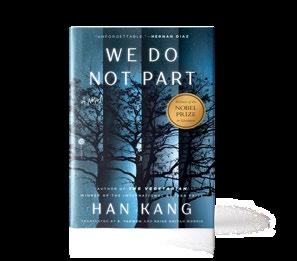

In the wake of the destructive Black Sunday dust storm in 1935, four outcasts dare to offer their dying town a radical vision of the future.
Antonina Rossi, an Italian immigrant and survivor of the Milford Home for Unwed Mothers, is the prairie witch of Uz, Nebraska. By falling into a trance, she relieves customers of memories they no longer want and deposits them in the vault of her subconscious. When the dust storm sweeps those memories clean away, Rossi recognizes her “bankruptcy” for what it really is: a mortal danger. Like most witches, Rossi is an outsider, and she throws her lot in with a band of fellow misfits. There’s Asphodel Oletsky, a teen basketball star and born hustler in love with her best friend; Harp
Oletsky, Dell’s shy bachelor uncle, whose farm miraculously survives the roiling clouds of dust; and Cleo Allfrey, a Black government photographer sent to document the crisis with a camera that somehow captures the past—and the possibilities of the future. Russell has always expertly woven the strange into depictions of the everyday, and her long-awaited second novel is no exception. Though the language here is looser and more conversational than in her past work, she still has a knack for capturing images in a deft turn of phrase—the flowers of a potted begonia have “small, blushing faces,” for instance. But what’s really on display here is Russell’s reckoning with America’s past and her hopeful appeals for its future. She juxtaposes the

immigration story of the Oletskys against the forced removal of Native Americans from the West and lets the catastrophe of the Dust Bowl resonate with the contemporary horrors of climate change. Characters struggle with their complicity in the American project of Native erasure and violence against vulnerable people, reinforced by the collective forgetting that
prairie witches enable. While the full picture of the novel takes time to develop, the final portrait is as unforgettable as the images Cleo Allfrey hangs on her darkroom line: A singular, haunting vision that fearlessly excavates the past and challenges the reader to face the future head-on. A storytelling tour de force that lives up to the promise of its name.
THE JACKAL’S MISTRESS
Austin, Emily | Atria (256 pp.) | $27.99
Jan. 28, 2025 | 9781668058145

Two small-town sisters have very different experiences of post–high school life.
Growing up in a conservative, remote small town named Drysdale, Margit and Sigrid could not have been more different and never called themselves friends. While Margit graduated from high school, Sigrid did not. Margit went on to college, majoring in literature, while Sigrid worked at Dollar Pal. Margit is straight and Sigrid is gay. Margit grew up trying to be perfect and control every outcome because of her parents’ vicious fights—both verbal and physical— whereas Sigrid lived in a dream world where her parents were swamp monsters that she had to hide from and she spent much of her time playing with toys in the basement or with her best friend, Greta. The sisters come together, though, when Sigrid tries to die by suicide. The book is divided into three sections: The first is made up of Sigrid’s 21 attempts at a suicide note; the second, labeled “The Truth,” is told from Margit’s point of view after she finds Sigrid; the third is Sigrid’s journal after she wakes up from a coma. The book covers uncomfortable topics in depth and often in an overly breezy manner. Margit and Sigrid are both far from reliable narrators, and with the many iterations of Sigrid’s suicide note and the dueling point-of-view sections, there’s a lot of repetition and different versioning of events, so it’s hard to track plot developments, characterization, and motivations.
A dark story of unhappiness, mental health struggles, and growing up with volatile parents.
Baker, Angelica | Flatiron Books (288 pp.)
$28.99 | Feb. 25, 2025 | 9781250345776

Six friends travel to Hawaii to celebrate their 30th birthdays and, after dodging imminent death, spend their time together drinking, bickering, reaching for one another, and investigating their years of interconnection.
Clare, Kyle, Renzo, Mac, Jessie, and Liam have known one another since seventh grade in L.A. They’ve fallen in and out of friendship and love with one another and have emerged as a (sometimes begrudgingly) inseparable unit. On this particular reunion in January 2018, they’ve gathered in Kyle’s parents’ second home on the island of Kaua‘i, planning to spend the week in full-on vacation mode. Then comes an emergency text advisory: “Ballistic missile threat inbound to Hawai‘i…This is not a drill.” After a few pages of watching the characters panic, we learn that the message was human error. The group feels its aftershocks long after that morning, though, and the anxiety it sows feeds the interpersonal reckonings that follow. Much of the richness in this novel is found in the conversations among the friends, which extend from their shared history and personal lives to politics, race, and class. Hawaii is a fitting backdrop for the more political conversations, but the relationship
between the group and the land is not as fully fleshed-out as the friends’ grudges and crushes. The main protagonist, Clare, spends much of the book reminiscing on years past and chewing over her writing career, marriage to her college sweetheart, and relationship with each member of the group. Baker beautifully expresses the pressures of growing older while not feeling older, as well as the comfort of being with people who knew you as an adolescent—when you were unformed and naive, as you might still feel from time to time. “When you’ve known people this long,” Clare thinks, “when you knew them in middle school, knew their mothers and their childhood bedrooms, you can always see the ghosts at their shoulders.” A delayed coming-of-age story that’s both perceptive and absorbing.
Bohjalian, Chris | Doubleday (336 pp.)
$29.00 | March 11, 2025 | 9780385547642
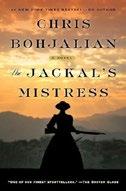
A gravely wounded Union soldier heals with the ministrations of a Southern woman. It’s 1864 in Virginia, and Union Captain Jonathan Weybridge loses his right leg and several fingers on the battlefield at Gilbert’s Ford. A fellow soldier stanches the bleeding by applying a tourniquet, but otherwise leaves him to die. Then, a formerly enslaved woman named Sally discovers him and brings him to the home of 24-year-old Libby Steadman She is a white woman whose husband, Peter, had freed the people enslaved at the gristmill he inherited and is now in a Yankee prison, if he’s even still alive. Sally and her husband, Joseph, now work at the gristmill, but the other freed slaves have long since skedaddled. Libby has a 12-year-old niece, Jubilee, who refers to Weybridge as a jackal, a not uncommon insult hurled at Union
soldiers. Weybridge’s health slowly returns while he frets about his wife in Vermont. Libby and her family come to recognize his human decency, that he’s more than simply a jackal or a “bluebelly.” Meanwhile, rumors circulate that Libby is harboring a wounded Yankee, and she and her family go to great lengths to hide him. She and the captain will quickly hang if discovered. She secretly enlists the help of a local doctor and part-time drunk whom she isn’t convinced she can trust, but she has no choice. Will Libby and the captain ever hear from their beloved spouses again? She refers to him as “someone…I kept alive at a price I could not afford.” Bohjalian’s inspiration for the novel comes from documented historical events—a Virginia woman really did save a Union soldier who’d hailed from Vermont—and the set-up has led to a masterful yarn. No one knows how close to each other the real people became, and there’s no evidence that the real Libby ever shot two Confederate soldiers dead with a Colt pistol or that a freedman (Joseph, in the story) killed a man who’d tried to rape her. Those and other details are a credit to the author’s imagination. If there is a nit to pick, it’s with a title that might misdirect readers’ expectations. It’s not wrong, but don’t expect anything steamy or licentious.
A compelling story about two people who long for their spouses in a time of war.
Kirkus Star
Saint of the Narrows Street
Boyle, William | Soho Crime (448 pp.)
$28.95 | Feb. 4, 2025 | 9781641296403
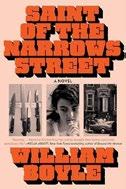
Smacking her abusive, low-life husband in the head with a cast-iron pan, a young Brooklyn mom sets off a chain of events that threatens her and her family, including her young son.
Risa Taverna is the essence of well-behaved (“she’s lived all tightened up”). But when her drunk husband, Sav, points a gun at her; her 8-month-old son, Fab; and her close sister, Giulia, she takes action. Tragically, Sav hits his head on a table on the way down and dies. With the help of Fab’s “Uncle Chooch,” who has long pined after Risa, the desperate sisters bury the body in upstate New York and tell everyone in their Italian neighborhood of Gravesend that Sav ran off to parts unknown. Everyone except Fab, who barely speaks, manages to lead a normal-ish life until years later when Sav’s wretched older brother, Roberto, shows up questioning Risa’s story (he will regret doing so). Years later, Father Tim, a young priest with money problems, tries to extort money from Risa to keep him from spreading rumors about Sav that he heard in a bar. And in the final section of this flowing epic, Fab, now an angry, delinquent teenager with gambling debts, goes off in search of the father he barely knew but is fast turning into. An established noir master, Boyle outdoes himself in crafting a novel of deep dimensions marked by intergenerational trauma, family strife, and failed religion (“the cardboard taste of a million communion wafers remained in his mouth”). It’s a page-turning performance with unforgettable scenes, including a nearly unbearable one in which Risa can’t help serving the blackmailing priest warmed up lasagna even as he’s threatening her. The names of the characters, including Jane the Stain, All Bad Allie, and Cyclone Archie, are worth the price of admission.
A great, gravely unsettling novel that welcomes repeated readings.

The Last Hamilton
Bregman, Jenn | Crooked Lane (288 pp.) $29.99 | Feb. 11, 2025 | 9781639109913

A Machiavellian plan to dominate the world’s gold reserves stretches all the way back to that guy from the Lin-Manuel Miranda musical. In Manhattan, a distraught young woman breaks into the Grange National Memorial, built by Alexander Hamilton, and frantically searches a piano for an invaluable item. Not finding it and feeling pursued, she jumps in front of a subway train to her death. The woman turns out to be newlywed Elizabeth Hamilton Walker, the last Hamilton of the title. Her middle-of-the-night text to BFF Sarah Brockman triggers a worried call from Sarah to Elizabeth’s husband, Ralph. The discovery of Elizabeth’s body and a dogged investigation by Det. Deborah Schwartz does little to assuage Sarah’s unease. The intrepid Sarah, who works at the Bank of Hoboken, remains at the center of the novel as it caroms around a handful of other characters. While she sifts through Elizabeth’s surprising documents, which warn of an ominous plot, her hapless coworker Pierce shares sensitive intelligence about gold reserves with his devious friend Timothy. Meanwhile, Schwartz tries to link a pair of broken eyeglasses to Elizabeth, and Viktor and Sergei and Dmitri and Yugov, a clutch of cartoonish thugs from Russian intelligence, plot a lot. The Hamilton premise of Bregman’s thriller is audacious and potentially explosive, but it feels grafted onto the tale, more a MacGuffin than a motor. The story sits in neutral for a long time, bouncing among the characters, before heating up. Readers will decide whether the disclosures live up to the foreshadowing.
An intricate thriller that simmers but rarely bubbles.
Bruce, Camilla | Del Rey (368 pp.) | $19.00 paper | Jan. 28, 2025 | 9780593724958

A fter adopting her nieces, a woman finds her life turned upside down by the ghosts of her past come back to haunt her—literally.
Clara Woods hated her brother in life. Now that he’s dead, killed on an anniversary quest to climb K2 with his wife, she finally has a way to get back at him: by using his daughters’ childcare allowance to fund her business venture, Clarabelle Diamonds. What Clara doesn’t know is that Ben’s children are special: 14-year-old Lily can see emotions like multicolored flames on other people’s bodies, and 9-year-old Violet can commune with spirits. But when this last ability causes Violet to inadvertently free the ghosts lingering on her aunt’s property, Clara, Lily, Violet, and Clara’s housekeeper, Dina, find themselves at the epicenter of a real-life haunting. The ghosts of Clara’s former employer, Cecilia Lawrence, who left her the house where they’re living; Clara’s missing husband, Timmy; and his mistress, Ellie, come untethered from their places around the home. Now unshackled and able to affect the material realm, they have one mission: to make Clara’s life a living hell. And unluckiest of all, a séance reveals that the only way to stop the haunting may be Clara’s own murder. In spite of subject matter consisting of axe murders and occult rituals, this is a light and lighthearted reading experience. The audience will crow to watch the deliciously awful Clara get her comeuppance, as her not-sofriendly ghosts do everything they can to make her even more miserable than she already is. Lily and Violet are capable narrators, and Violet’s plucky attitude makes her chapters a particular delight to read. Although Bruce’s latest offering will not appease readers looking for a terrifying haunted-house story, mystery and
thriller fans will find a lot to love in this romp through the ectoplasm. An entertaining ghost story that is often more silly than spooky.
Carpenter, Stephanie | Central Michigan Univ. Press (361 pp.) | $19.95 paper Feb. 25, 2025 | 9798991064606

At a 19th-century psychiatric hospital, a patient and the superintendent travel parallel journeys toward greater peace.
“Pure food, adequate rest, wholesome influences, wholesome occupations” are the abiding principles of “moral treatment,” a novel approach to the care of the mentally ill pioneered by the real-life Thomas Story Kirkbride in the mid-19th century. At an immense hospital in northern Michigan built and run according to Kirkbride’s beliefs— which will be familiar to readers of Jayne Anne Phillips’ Night Watch (2023), set in a similar location—a 17-year-old named Amy Underwood has arrived for treatment in 1889. Diagnosed as insane by two doctors, she is in fact a lonely, alienated young woman whose encounter with a threatening group of lumberjacks left her traumatized. One of the few young people at the hospital, she struggles to establish connections and, after stealing a photograph belonging to the superintendent’s wife, finds herself demoted in the hierarchy of wards and care. Carpenter’s carefully detailed, subtly observed novel is in part a survey of the hospital. Through the eyes of the elderly superintendent, referred to only as James, the reader learns much about methods and means, staff and patients, and various aspects of illness and treatment. James is weary and overburdened. Amy is secretive and misunderstood, although friendship with another young inmate, volatile Letitia, opens her up somewhat. Intrigues involve other doctors, officials, and visitors. James’ wife also plays a crucial role,
offering firmness, compassion, and new perspectives to both central figures. She also contributes to the novel’s feminist subtext, which considers the imbalance of confident, empowered men controlling women via social as well as medical norms. There are no simple resolutions for Amy or James, yet the ground has slowly shifted for both.
Sober, sometimes dry, yet an affecting story of the potential for growth.
Celestin, Roger | Bellevue Literary Press (432 pp.) | $18.99 paper Feb. 4, 2025 | 9781954276369
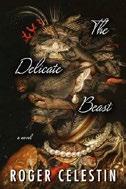
A man reckons with 20thcentury tragedies. What does a life reveal when explored from different angles? This sprawling book begins in 1995 at an informal gathering of artists and academics in a Brooklyn brownstone. They’re discussing the ongoing civil war in Yugoslavia, and one of the attendees, a man from Sarajevo, says he’s going back next week. Robert Carpentier, another guest, asks why he’s returning to a place where people are being killed every day. The next step the novel takes is to jump back several decades and adopt a very different register. Here we meet a boy who’s studying for his First Communion—presumably the younger Carpentier, though the section that follows mostly avoids using names. He lives in the Tropical Republic, a country run by a politician known here as The Mortician. (Think Haiti under the rule of François Duvalier.) The political situation forces the boy’s parents to leave the country, with the rest of the family eventually following. Once they’re settled in New York City, the novel skips ahead to Carpentier in the 1970s, when he’s studying art history in Europe— mainly the paintings of Jean Siméon Chardin. After some time in Europe, he returns to the U.S., where he finds a job and embarks on a series of relationships
before marrying. Civil war in the Balkans isn’t the only crisis referenced here; Carpentier and his wife also watch as friends die from AIDS. Eventually the novel returns to the Brooklyn apartment where it began, and we see how the Sarajevo man caused tensions in Carpentier’s marriage. It’s a stylistically bold look at one man weaving in and out of history, and the subtle effects on his psyche.
An investigation of the ways history does and doesn’t shape us.
Counts, John | TriQuarterly/ Northwestern Univ. (232 pp.) | $24.00 paper | Feb. 15, 2025 | 9780810148017
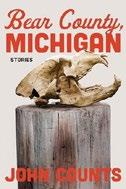
A mostly marginal cast of characters struggles through life in western Michigan in these short stories. The fictional Bear County, Michigan—in a state shaped like a hand, it’s the “middle of the pinkie,” according to one character—is a post-industrial place marked by a lack of good jobs and the beautiful shoreline of Lake Michigan. Its residents long for the things their parents took for granted, like a stable family and a home, and Counts uses that generational gap in flourishing as a way to explore the American decline. The backbone of many of these tales is an encounter between one of Bear County’s young people, who are largely drugaddled and under-employed, and its left-behind elders. The conceit is interesting, but the stories are weakened because they’re populated by stock characters. There’s a sex worker with a heart of gold, a lonely boat captain, a party girl, and a hermit. They’re not fully-formed, and that makes it hard for them to have insight into themselves or their surroundings. They often just speak in blunt declarations. “It’s sad there’s no options for young people in this country anymore. The rich are filthy rich and the poor people like us are just scraping by.
Dermansky knows how awful people are inside, and can make it very funny.
It’s a shame,” one character says, before launching into a clarinet solo. A few of the stories shine, like “The Skull House,” about a reclusive old woman who builds a cabin out of preserved animal skulls. That story manages to be both deeply strange and quite sweet; there’s something admirable in Lillie Korpela, who finds that “collecting and cleaning skulls was so comforting, so soothing, it had become a necessity for living.”
A book concerning misfits should be more thrilling.
Dahl, Arne | Crooked Lane (320 pp.) $29.99 | Feb. 11, 2025 | 9798892420709

Dahl launches a new series featuring Stockholm DI Eva Nyman, of Sweden’s National Operations Department, and her Nova group, which battles impossible deadlines to identify an ecoterrorist bomber.
The first victim, the division head of a steel manufacturer, and the second, a public relations officer, are killed in mercifully limited explosions. But the apocalyptically ranting letters an unidentified source addresses to Eva personally make her fear that worse times are coming. So, she appoints her colleagues Annika Stolt, Shabir Sarwani, Anton Lindberg, and Sonja Ryd to the Nova and tasks them with rooting out the writer who’s taken defending the environment to a whole new level. Unfortunately, the hits keep on coming, claiming more and more casualties by means of a series of meticulously
planned and constructed explosive devices that aim to inflict maximum pain. Even more shocking is the news that forensic evidence points directly to former Chief Inspector Lukas Frisell, Eva’s old mentor, who’s not easy to find because he returned to university and then went off the grid years ago. At length the Nova group manages to track down Frisell, arrest him, and lock him up, all to no apparent avail. The persistence of terrorist attacks even while Frisell’s under lock and key leads Eva’s boss to make him a remarkable offer: He’ll be released with an ankle monitor if he’ll agree to help with the investigation. And he does help, right up to the moment when he escapes custody and vanishes again, leaving Eva and company to bring the terrorist to justice before he can carry out his threat to bomb Arlanda Airport.
An exhaustive and exhausting high-stakes procedural that never lets you forget how tough police work is.
Dermansky, Marcy | Knopf (208 pp.) $27.00 | March 18, 2025 | 9780593320907

A single mom and her 8-year-old daughter spend a weekend with the super-rich. When Joannie’s neighbor Johnny asks her out, and she says she doesn’t have a babysitter, he tells her to bring Lucy to watch movies with his son, Tyson, in the basement. “He promised a nice meal, and Joannie loved free dinners.
Nothing, of course, could ever happen between them because of their names. Joannie and Johnny.” Anyone who’s already read Dermansky will recognize these deadpan sentences. And, of course, something is going to happen on the very next page, actually—a billionaire couple celebrating their anniversary with a hot air balloon ride crash-lands in Johnny’s swimming pool, the wife screaming “I will kill you, if we don’t die!” Meet Jonathan and Julia Foster, a famous tech CEO and his philanthropist wife. Soon, Joannie and Julia are drinking fancy wine out of the bottle by the side of the pool and Johnny is inviting everyone for a sleepover. And the surprises just keep coming, many of them created simply by switching points of view, which Dermansky does every few pages, including not just these four but also Joannie’s daughter, Lucy, and the Fosters’ personal assistant, Vivian, an erstwhile Vietnamese orphan and 24-year-old aspiring writer. Vivian is a genius character, but honestly, they all are, and their inner monologues prove once again that Dermansky knows just how awful people really are inside, and can make it very, very funny. You might find yourself trying to put this book down so it won’t be over too soon. And when it is, you might start it all over again to see how the heck she did it. Has any writer made so much happen in just over 200 pages?
A new Dermansky novel is like a holiday declared out of the blue.
Dess, Sophie Madeline | Penguin Press (288 pp.) | $29.00 Feb. 25, 2025 | 9780593830826

In this provocative debut novel, a woman reflects on her relationship with her brother as he’s dying of brain cancer. After their mother took her own life by walking into Long Island Sound and
their father unravels from grief, Ava and Demetri, only a year apart in age, practically raise themselves. Demetri, a precocious kid, heads off to Harvard, and Ava, a talented painter, tags along, sleeping under his bed. Ava believes their identities are so entwined that she falls apart when Demetri starts dating: “It never occurred to me…that Demetri would be attracted to someone without me. Because different desires would make us what we were not—namely, two separate people.” Ava’s solution is to insert herself into all of Demetri’s relationships, convincing his love interests to slip out of their clothes and pose for nude portraits. Her greatest victory (and shame) is when she finds herself actually falling in love with one of these women. Desiring the same woman, it turns out, drives them apart. Ava is a thoroughly unsympathetic narrator, which is not itself a problem. Writers like Ottessa Moshfegh, Emma Cline, and Elizabeth Strout have created memorably difficult female protagonists. And yet, through absurdity and humor, the slow revelation of pathos, or searing social critique, their novels both wink at readers and nudge them to stop being so judgmental. It’s hard to know how we’re supposed to understand Dess’ novel, which satirizes the contemporary art world—Ava’s first major sale is a series of paintings literally produced as she’s having sex with men—and perhaps Ava, too, though her narcissism starts to feel thin and sad. Right before Demetri dies and he’s barely conscious, Ava shows him a portrait of their shared lover, seeking his approval one last time. It’s a painful scene to read. A novel that can’t decide how seriously we should take its psychologically damaged characters.
Kirkus Star
Evison, Jonathan | Dutton (368 pp.)
$28.00 | Jan. 7, 2025 | 9780593473542

Scenes from a long, unlikely, battletested marriage. Evison’s ninth novel opens in 2023, on Abe Winter’s 90th birthday party. A modest, conservative man— lifelong Republican, sold insurance for years, lives on a quiet patch of land on Bainbridge Island, Washington—he dislikes all the celebratory attention from his wi fe, Ruth, and three children. But there’s a lot going on beneath his stolid facade, which we learn more about once Ruth is diagnosed with a malignant tumor in her jaw, prompting surgery, a difficult recovery, therapy, and suddenly urgent questions regarding mortality and elder care. Evison shuttles between past and present to explore their relationship and clarify their response to the crisis. They met in college as a quintessential oppositesattract couple—Abe a prim “I Like Ike” type, Ruth a progressive poetry lover—and soon settled down and formed a family. Evison chronicles some familiar domestic-novel disruptions—infidelity, resentment over division of labor, a tragic loss—but because we know they stuck together, the novel’s mood is one of accomplishment. As Evison writes, a marriage “is shaped gradually and methodically to withstand the ruinous effects of time and outside forces beyond the control of its principal players.” Their past
Scenes from a long, battle-tested marriage begin with the husband’s 90th birthday.
THE HEART OF WINTER
challenges add to the drama of Ruth’s illness and Abe’s earnest but fumbling attempts to care for her. In the process, he affords this aging couple a dose of realism and dignity that’s often lacking in novels. Evison neatly balances their everyday lives, from running an errand to taking a shower, with a broader portrait of how couples adapt and grow closer in the face of challenges. Evison’s vision is unsentimental, but he’s rooting for Abe and Ruth, and encouraging readers to do the same. A savvy portrait of love and devotion.
Hay, Alex | Graydon House (384 pp.)
$28.99 | Jan. 21, 2025 | 9781525809859

A con woman goes up against an aristocratic family in this twisty tale of Victorian London.
Quinn Le Blanc is the current Queen of Fives, reigning over the underworld from a “humble old house in Spitalfields” known as the Château. At 26, she has her eye on a new mark and is planning the ultimate con, to be carried out in five steps over five days as all proper Château cons must. The target is the Duke of Kendal, who’s about to have a 30th-birthday ball. But the Kendal family rarely goes out in society, their money so old and entrenched they don’t need to parade it around, and Mr. Silk, Quinn’s righthand man, is wary. As Quinn sets the wheels in motion, things don’t go as smoothly as she’d hoped: The Kendals have their own secrets and a troublemaker is waiting in the shadows to wreak havoc on the whole Château. Quinn has five days to pull it off, if she can survive until then. Hay has created a specific, detailed world for his characters to inhabit, a veneer of Victorian London with the intricate rituals of the Château layered underneath. Everyone is a potential agent (or double agent), and there’s a trick up everyone’s sleeve. This leads to a
A con woman goes up against an aristocratic family in this tale of Victorian London.
twisty-turny plot, with different chapters told from the perspectives of different characters—including Quinn, Mr. Silk, the duke, and his sister— with secrets unraveling with each turn of the page. Unfortunately, however, the story jumps around so much that it’s hard for a reader to get a real insight into the characters and why they’re doing what they’re doing. The story is well constructed and the final payoff is impressive, but the book feels something like one of Quinn’s cons: full of flash and dazzle to distract from a lack of depth.
A well-manufactured but shallow tale.
Jackson-Brown, Angela | Harper Muse (368 pp.) | $18.99 paper Dec. 3, 2024 | 9781400241132
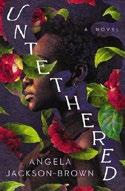
A Black woman grapples with her personal and professional choices in 1960s Alabama.
Katia Daniels hasn’t followed the typical path for a Black woman in Troy, Alabama, in 1967. At 40, she’s devoted to her job as director of the Pike County Group Home for Negro Boys, where she oversees the care of neglected and abused children with a firm hand and warm heart. She’s a caretaker at home, too—since her father’s death, she’s been the support of her nurturing mother and younger twin brothers. But the closest Katia gets to having a love life is reading romance novels in a bubble bath. She’s long been self-conscious about her weight, and a recent emergency hysterectomy has left her feeling that no man will
want her if she can’t bear children. She has a boring platonic relationship with an older man, Leon, but he’s more interested in watching TV with her mother. Then her routine gets blown up. Her brothers, Marcus and Aaron, both serving as Marines in Vietnam, are reported missing in action. At the boys’ home, Katia’s two newest charges bond with each other and with her: a sweetnatured 9-year-old called Pee Wee and Chad, who looks like a grown man but, at 14, is still a kid, and a badly damaged one. Then her high school crush, Seth Taylor, turns up on her doorstep, as handsome and charming as ever, despite having lost a leg in Vietnam—and much more interested in her than she ever dreamed possible. The novel winds its romance plot around the challenges Katia faces in helping the boys in her care and keeping them safe, as well as dealing with family issues as one brother returns deeply traumatized while the other remains missing. But as dramatic as those elements might seem, the novel rarely works up much suspense or intensity— almost every character is so well-intentioned, supportive, and loving that any moment of tension deflates as soon as it begins. The historical setting is gestured to but not evoked in detail, and the methods and atmosphere of the group home seem improbably contemporary for half a century ago.
Warmly drawn but overly idealized characters populate a predictable plot.

The bestselling crime novelist is drawn to the dark side. Given her upbringing, is that any surprise?
BY COLETTE BANCROFT
“MY IMAGINATION GOES dark real fast even if I’m doing fun things,” Alafair Burke says.
Burke’s latest thriller, The Note, grew out of one of those fun things, a girls’ weekend she spent with two friends. They were waiting for a parking spot in a busy vacation town when another car poached the space. It irked them so much that later in the evening, after seeing the woman who had done it walking by with a man, one of Burke’s friends wrote a “kind of preachy” note and wanted to leave it on her car.
Burke had another idea. “I said, as a joke, ‘If you’re going to leave a note on her car, it should say this: He’s cheating on you.’”
Their laughter drew the attention of their waitress and other diners who wanted to know the story. They didn’t leave the note—but later that evening, they saw that someone else had.
“The next day,” Burke says, “I was still thinking, What if we saw it on the news that she was missing or dead or something. I just couldn’t let it go. Three girls do something stupid when they’re really drunk and a practical joke spirals out of control.” And so, The Note was born.
“You have to remember,” Burke says, “I’m the person who took the experience of meeting my husband on Match.com and turned it into a serial killer book.” (That would be Dead Connection, published in 2007.)
The Note is Burke’s 15th solo novel. She’s written two series, one about New York police detective Ellie Hatcher and the other about Portland, Oregon, prosecutor Samantha Kincaid, as well as seven standalone novels, including The Wife, The Ex, and The Better Sister. She also co-wrote six books in the Under Suspicion
I’m the person who took the experience of meeting my husband on Match.com and turned it into a serial killer book.

series, most recently It Had To Be You, with legendary mystery writer Mary Higgins Clark, who died in 2020.
Burke, 55, is crime fiction royalty herself, the daughter of iconic author James Lee Burke. She didn’t step immediately into his footsteps, first pursuing a legal career as a prosecutor in Oregon and a professor at the Hofstra Law School, a position she still holds.
As a novelist, she established early on she was no nepo baby. Her books have garnered an array of nominations and prizes as well as spots on bestseller lists, and she was the first woman of color to be elected president of the Mystery Writers of America.
The Note won’t be the only project fans can expect from her this year. The Better Sister has been made into an Amazon Prime series starring Elizabeth Banks and Jessica Biel, likely to drop this spring.
Burke recently talked with Kirkus via Zoom; the interview has been edited for length and clarity.
The main character of The Note, May Hanover, seems like your most autobiographical character: She’s a law school professor, she lives in New York, she’s biracial. [Burke’s mother, Pearl Burke, was born in China.] What made you decide to put so much of yourself into this character?
I’m always very flattered when people say, “Ellie is so much like you,” or Samantha, or Olivia, because they’re such badasses. And I’m really not—I’m just good at faking it. I’ve got a big old impostor complex to this day.
May is like that. With her big fat brain, she has managed to get into Harvard and to law school and do all those accomplished things, but she still doesn’t really feel like she’s successful. “Fake it ’til you make it,” as she says. She’s really hard on herself. She’s always thinking, Did I say the right thing, is someone mad at me? Those parts of my personality are poured into May. May’s just not quite as good at hiding it as I am.
May has been friends with Lauren Berry and Kelsey Ellis for decades,
but in recent years they’ve been somewhat estranged. The girls’ weekend is meant to mend fences but goes disastrously wrong. What drew you to the complex nature of their friendship?
As kids you can be really close, but then as you get older you wind up in very different places. Kelsey is the rich girl, while May is still kind of struggling; she came from very little and had to work for what she has and feels like Kelsey had everything handed to her, so there’s some resentment over that. Then May becomes a prosecutor and Lauren, who’s African American, has mixed feelings about that—her life’s work is putting people of color in prison. They’re trying to put all that aside, but they wind up in the pot together when the police come knocking on the door, and those tensions start to amplify. They have to decide whether they’re going to stick with each other or throw each other under the bus.
May is also dealing with the aftermath of a viral video that upended her life. Where did that idea come from?
In 2020 I spent a lot of time online. Everybody knows the Karen memes and videos. Some of these people seem like truly terrible people. But some of them are clearly in the middle of having an anxiety attack or they’re in the middle of a mental health episode, and someone’s videoing them. They’re saying please stop videoing me, and the whole world is pointing at them and saying, “Ha ha.”
It’s the whole idea of strangers judging you at your worst moment. So I liked the idea of someone like May—who always wants to be liked, who wants to follow the rules, do the right thing—finding herself the target of that kind of ridicule. It isn’t good for her.
Another element of the book is the impact of true crime communities on the internet. Do you share that

The Note Burke, Alafair Knopf | 304 pp. | $29.00 Jan. 7, 2025 | 9780593537084
interest? And is it related to the fact that as a child you lived in Wichita, Kansas, during the days of the serial murderer known as the BTK killer?
As somebody who spends a lot of time lurking on Web Sleuth and other true crime message boards, I can say it’s an odd kind of hobby culture.
Before the internet, there was Jim and Alafair Burke in their living room playing amateur sleuths. Most parents would protect their kids from a horrible story like BTK, but my dad would be like, “Who do you think did it?” We were like amateur profilers, and we came pretty close.
I think it was the desire to solve the case that drew me to criminal law, and I always read mysteries. For someone who likes control, the reason we like crime stories is you can be scared and confused in the middle of the book, but there is an implicit promise from the writer that the chaos will end eventually, and there might not be justice at the end but there’s going to be some kind of closure, some kind of resolution. It’s fun to be able to do that as a storyteller.
Colette Bancroft recently retired after 17 years as the book critic for the Tampa Bay Times.
Penitence
Koval, Kristin | Celadon Books (320 pp.)
$28.99 | Feb. 18, 2025 | 9781250342997
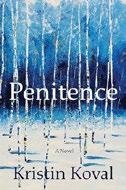
A teenager’s murder of her beloved sibling opens old family wounds and brings dark truths to light.
Death and complications define Angie Sheehan’s life. At 17, she witnesses her younger sister, Diana, die in a ski accident that also injures her own boyfriend, Julian. She eventually leaves to become an artist in New York City, but just as her career begins to blossom, her father develops cancer and Angie moves back to Colorado to help run the family restaurant business and marries David, a law enforcement ranger for the National Park Service. A decade and a half later, she begins caring for her mother, who has Alzheimer’s disease, only to learn that her 14-year-old son, Nico, has juvenile Huntington’s disease. Then one night, her quiet daughter, Nora, kills Nico with her father’s gun. This tragedy sets off a series of life-altering events that include an uneasy reconnection with Julian. A successful criminal attorney now living in New York, Julian reluctantly returns to Colorado to help his lawyer mother defend Nora. Probing the memories of the main characters with sensitivity and insight, Koval takes readers on a journey into the sometimes-painful secrets they have kept from each other. Julian never tells Angie the degree of his involvement in her sister’s death or how it drove him to alcoholism, just as Angie never tells Julian—or David—that she conceived Nico just as she left Julian for David. While exploring the complexities of personal and family relationships, this engrossing, emotionally charged novel also examines the way forgiveness comes from acceptance that “each one of us is more than the worst we’ve ever done.”
An intelligent, deftly crafted suspense debut.
A playful yet earnest examination of how people interact with each other and the world.
Krow, Leyna | Penguin (304 pp.) | $18.00 paper | Jan. 28, 2025 | 9780593299654

A book about relationships and environmental uncertainty in the Pacific Northwest. Through an interconnected series of fabulist tales, Krow explores forest fires, volcanoes, time travel, and the lives of octopuses with verve and wit, while also warning of environmental perils to come. In the opener, “The Twin,” new parents Troy and Jenna discover a baby identical to their son, Jace, alongside him in his crib, sparking anxiety in Jenna. “What, exactly, was I afraid of?” she wonders. “It is difficult to fear an abstraction.” The twin, whom they name Nicholas, along with Jace and their older sister, Ruby, become recurring characters throughout these 16 stories. In “Egret,” Ruby, now grown, crashes her car into a fence, killing a neighbor’s dog. “Ruby maintained,” Krow writes, “that the accident happened not because she was drunk but because she badly needed to pee.” Even in the midst of familial or environmental tragedies, Krow’s prose maintains a playful spirit. After the dog’s death, Nicholas realizes he has the ability to create birds and wildlife; he desperately conjures animals in the aftermath of a forest fire to combat the damage. Krow’s writing is at its strongest in moments like this: descriptive, heartfelt, without polemics. When the family members all pile into a big hug, Krow describes them as being “like a geode in a rock, rings in a
tree, a nut in the shell—like everything good in nature that comes in layers.” Though Ruby and her brothers can’t always communicate with each other, they show us that while “seasons seem to be going out of fashion,” love is not. A playful yet earnest examination of how people interact with each other and the world.
Lee Chang-dong | Trans. by Heinz Insu Fenkl & Yoosup Chang | Penguin Press (368 pp.) $29.00 | Feb. 18, 2025 | 9780593657256

Short stories exploring South Korea on the verge of transformation. How does one endure life under an authoritarian government?
South Korean filmmaker Lee may be best known in the U.S. for his movies, including the critically acclaimed Burning, but this book—originally published in the 1980s and now translated into English for the first time—explores another side of his creative work. In an author’s note, Lee writes that “the short stories... in this collection are based on my actual experiences in those days, or they’re about my family, friends, or people close to me,” and there’s a lived-in realism found here—both in the fraught connections between characters and the threat of state violence. The narrator of “The Leper” learns that his father has been arrested on espionage charges, and when he confronts the older man, he discovers that his father has found an
unexpected poise and confidence. That’s not the only place where loved ones are at risk of incarceration; the threat of a family member’s arrest looms over the opening of “Burning Paper.” Sometimes, the personal and the political converge in unsettling ways. In the title story, Lee describes the way one man wound up in the army: “When the private had come home from university, wanted by the law for avoiding military service, his father had held him by his side and called the police himself. He was handcuffed in front of his father, and fifteen days later he was sent off to basic training.” The collection closes with the harrowing “A Lamp in the Sky,” in which a woman attempts to navigate the world of student activism and is eventually suspended from college. She’s offered a way back in if she informs on her peers, and is threatened with sexual violence by the authorities. These stories abound with emotional violence that sometimes boils over into the physical, and empathetically explores characters reckoning with a lack of good options. A harrowing but clear-eyed look at South Korea’s recent history.
Maldonado, Isabella | Thomas & Mercer (348 pp.) | $16.99 paper Jan. 21, 2025 | 9781662515835

Special Agent Daniela Vega of the FBI goes hunting for a most unusual treasure. Though Gustavo Toro was a highly professional hit
man, he had a conscience, and when he’s betrayed and murdered on orders from his latest employer, he turns out to have left a surprising legacy: an encrypted video meant to be watched by the FBI director in which he reveals that he’s squirreled away details on his long history of murders for hire and hopes that the authorities will find that information and put it to good use. Because he was concerned that this trove might fall into the wrong hands, though, Toro made it exceptionally difficult to find, and when Dani is given the job of uncovering it, every clue she follows seems to lead to a dead end or a dead informant because “someone is cleaning house.” Along the way, Dani’s campaign against the murky Exmyth Technologies leads to a turf war between Special Agent in Charge Steve Wu, head of the FBI’s New York office of counterterrorism, and Scott Hargrave, the Assistant Director in Charge of the FBI’s New York office, with Dani caught in the middle. At length a lead sends Dani to the Lost Dutchman’s Mine in Arizona, where she finds the crucial lead she needs. Even then, however, the author and the crime lords she’s created continue to spark so many violent new complications that Dani constantly has to call on her training as a U.S. Army Ranger. She longs to wrap up the case, which takes quite a while to wind down even after the climax, and get back to the business of helping her mother emerge from the fog that’s kept her in Bellevue Hospital’s psychiatric ward for the past 10 years. If only the FBI didn’t fly its agent everywhere by private jet, she’d be sitting atop a mountain of frequent flyer miles.
A 99-year-old Jamaican woman uses modern tools to deal with a complicated past.
PAULINE
A House for Miss Pauline McCaulay, Diana | Algonquin (320 pp.)
$29.00 | Feb. 25, 2025 | 9781643757223

In a Jamaican village, a 99-yearold woman uses modern tools to deal with a complicated past. At the center of McCaulay’s seventh book is the towering character of Miss Pauline Sinclair, who at the age of nearly 100 is driven by the sense that the stones of her house are urging her to deal with the shady history of that edifice. The stones were originally part of a backra mansion in the bush—a house that belonged to white slaveholders. Miss Pauline came upon the backra estate when she was a child fleeing sexual assault by the local pastor and eventually decided to transport its stones to build her own dwelling on a more advantageous site. Her initiative was copied by her neighbors, creating a whole village of stone houses, and when Miss Pauline became a ganja grower in the wake of Hurricane Gilbert, she was able to put in an indoor bathroom and kitchen, pay for her children’s schooling, and support the family after their father’s death. But now, as she feels death approaching, she’s troubled by the memory of a white man named Turner Buchanan who came to her in 1987 with a pile of paperwork; he subsequently disappeared and a taxi driver was jailed for his murder. She has been keeping secrets about this situation for a long time. One of the most charming elements of the novel is Miss Pauline’s friendship with Lamont, a motorcycleriding teen who helps her use Skype, Facebook, and email to reconnect with relatives and search out others connected to her story. McCaulay was inspired by the discovery of her own complex multiracial genealogy, as she discloses in an author’s note, and she’s even given some of the historic characters the names of her ancestors. As it makes its points about the complex legacy of colonialism and
recaps a century of life in rural Jamaica through the eyes of one fierce and enterprising woman, the novel educates and entertains. Alive with the sights, sounds, tastes, and smells of Jamaica.
McCluskey, Laura | Putnam (336 pp.) $30.00 | Feb. 11, 2025 | 9780593852545

A young cop and her weathered partner brave a tempestuous sea crossing to investigate a death in a remote community off the coast of Scotland. When DI Georgina Lennox and her partner, Richie Stewart, arrive on the island of Eilean Eadar, they are half-chilled to the bone and already known to—and disliked by—most of the people around them. A young man fell to his death from the lighthouse a few weeks before, and they’ve been sent from Glasgow to confirm his death was a suicide. To a community suspicious of “mainlanders,” a category that includes anyone who can’t trace their bloodline back generations, the two cops are a nuisance at best, a threat at worst, and the unfriendly welcome begins to feel downright hostile when George sees someone outside their cottage at night wearing a wooden wolf mask. She can also hear the howls of wolves, despite the fact that there are none on the island. Still recovering from a near-death experience on the job eight months prior, George is dealing with her own trauma, and her tendency to self-medicate in order to keep the headaches at bay. Five days in the salt-crusted, fish-centered village leads to little clarification about Alan Ferguson’s death, but a whole lot of new mysteries, including the disappearance of three lighthouse keepers in 1919. Even if a remote, insular Catholic island guided by a steely-eyed priest sounds like a
Joining an elite entertainment company might rocket you to stardom—or destroy you.
THE DOLLHOUSE ACADEMY
familiar folk horror set up, McCluskey is masterful at building suspense around a sense of place and a feeling of otherness. And George, fretfully uncomfortable in her skin and her partnership, is a prickly, vulnerable, completely engaging heroine with a cop’s instincts through and through, a stubborn streak that nearly gets her into trouble and the courage to risk herself in the quest for truth. Idealistic, maybe. But properly gothic as well.
Montimore, Margarita | Flatiron Books (320 pp.)
$28.99 | Feb. 11, 2025 | 9781250320650

Joining an elite entertainment company might rocket you to stardom—or it might destroy you, as two young women discover in this deliciously sensational thriller.
In 1998, Ivy Gordon is the luckiest woman in the world. Star of the hit TV show In the Dollhouse and known for her numerous award-winning albums, she’s the face of Dahlen Entertainment, a secretive powerhouse run by the mysterious Genevieve Spalding. But Ivy also knows Dahlen’s secrets, and she’s writing them down in her diary. Ivy’s story is intercut with that of narrator Ramona and her best friend, Grace, two young actresses who are invited to join Dahlen’s elite “Dollhouse Academy,” a breeding ground for up-and-coming stars. The culture reveals itself, unsurprisingly, to be cutthroat and intense in every way. Grace is handpicked early on by
Genevieve to be the next superstar, with a spinoff show and music tour of her own, but Ramona struggles in her classes and keeps getting passed over for auditions; plus, she’s kind of creeped out by the pills and medical appointments being foisted on her. Maybe whoever is leaving anonymous, threatening notes in her mailbox is actually trying to warn her away from dangers at the heart of Dahlen, like Project Understudy. No one seems to know what it is, but it’s enough to cause one student to have a breakdown, and Genevieve to threaten Ramona with instant expulsion if she ever mentions it. Maybe handsome Mason, Genevieve’s assistant, can help Ramona uncover the truth. He certainly seems to show up whenever she needs a shoulder to cry on. Montimore’s characters would be chewing on the scenery if they could; everyone is dialed up to 11, extreme versions of their character archetypes, but what could be more fun?
As if the wives of Stepford went to the Valley of the Dolls.
Murray, Victoria Christopher | Berkley (400 pp.)
$29.00 | Feb. 4, 2025 | 9780593638484
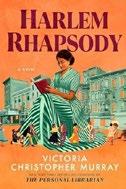
The life, work, and passion of Jessie Redmon Fauset, a lesserknown figure of the Harlem Renaissance, is examined in this historical novel.
“You’ve birthed most of us. It’s like you’re a literary midwife”: This is what her protégé Langston Hughes has to say to
Fauset toward the end of Murray’s novel. Fauset, a poet and novelist in her own right, is best remembered as the mentor of Harlem Renaissance luminaries including Hughes, Countee Cullen, and Claude McKay through her role as literary editor of the Crisis , a magazine founded by W.E.B. Du Bois and published by the NAACP. Not only did she rise to a position of prominence in the literary world—almost unheard of for a Black woman of her time—but she also went above and beyond to edit, uplift, and support her writers. One of the book’s most exciting moments comes when Jessie first interacts with the delightfully precocious 17-year-old Hughes, who has just written “The Negro Speaks of Rivers”and whose work she will continually champion and refine. But Jessie’s life is not without tribulation or scandal. Though we learn about her continual search to find a place for herself as a Black woman writer, much of the novel is taken up by her on-again, off-again affair with the married, and frequently prickly, Du Bois, whom she calls Will. (According to a historical note at the end of the book, Murray extrapolated the affair from information in David Levering Lewis’ W.E.B. Du Bois: A Biography, 1868–1963 , which called the pair “star-crossed lovers.”) At times, Jessie’s bullheadedness can be irksome, and readers may grow tired of the time Murray spends detailing her repetitive, and often saccharine, meetings with Du Bois. But Jessie Redmon Fauset is such a captivating figure that Murray’s success comes from bringing her accomplishments to greater attention. A celebration of a woman who worked behind the scenes.

Owchar, Nick | Ruby Violet Publishers (342 pp.) | Dec. 1, 2024
$17.99 paper | 9798991786300
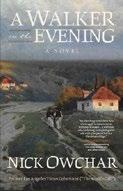
A former priest confronts his demons in this intimate gothic tale.
Owchar’s debut novel opens in 1909 in Galicia, a rural Ukrainian province that adheres to various superstitions, one of which holds that, every night, a different person conducts a walk through the town carrying a “totem” that’s supposed to ward off any troubling spirits. On duty this night is the narrator, Yuri, who grew up in the region but then took a lengthy detour to England—where, anglicizing his name to George Frost, he entered the Catholic priesthood. Gifted at homiletics in divinity school, he won a prized assignment to a church in London, where his provocative sermons caught the attention of not just parishioners but a prominent theater critic. As word spread around his gift for oratory, he entered the inner circle of poet and artist Dante Gabriel Rossetti and poet Algernon Charles Swinburne. This experience charmed the artistic-minded George, but proved a mixed blessing: Drawn into a web of marital tension, spiritualists, and illness, he was soon psychically over his head and tempted to abandon his vows. Owchar’s setup is ambitious, and at times the prose and plotting are overly clotted, but he nicely braids the rustic, folkloric nature of the Galician community with the high-toned London Catholic one, and his depictions of poetic wits and salt-of-the-earth farmers are equally graceful. He conjures a slowly intensifying mood of despair, as George/ Yuri reveals more about the history, losses, and behavior that drew him away from London. The sermon that caught the hip London crowd suggested that the world is overrun
with demons and that God’s intervention is unlikely; Ochwar evokes the sadness, verging on panic, that such a perspective provokes. A canny and ambitious crosscontinental tale of apostolic anxiety.
Sittenfeld, Curtis | Random House (320 pp.) $28.00 | Feb. 25, 2025 | 9780593446737
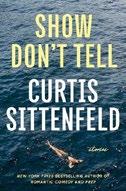
The protagonists in Sittenfeld’s second collection of short stories look back—with mixed emotions. Though the characters here are largely middle-aged men and women reflecting on marriage, career, and friendship, few encounter anything as dramatic as a midlife crisis; these are tales of midlife contemplation. In “The Richest Babysitter in the World,” a professor finds joy in her own comparatively ordinary life even as she recalls turning down a job offer from a then-unknown Jeff Bezos–esque figure; in “Follow-Up,” an attorney awaiting medical test results reminisces about a hookup in law school. Sittenfeld’s characters— including Lee Fiora, the protagonist of her debut novel, Prep (2005), who reappears here in “Lost but Not Forgotten”—typically see the world with an almost hypervigilant level of scrutiny. Cutting remarks or seemingly innocuous gestures take on outsize meanings; characters analyze their own and others’ social positions through the prisms of wealth, artistic talent, physical attractiveness, and celebrity. Happily, the once-insecure Lee has mellowed considerably, and though her powers of observation, honed during four agonizing years at a New England prep school, haven’t been blunted, they’re no longer tinged by self-loathing. Sittenfeld’s politically themed novels have been wildly popular, and several stories use
politics and contemporary issues as jumping-off points for sharp insights on human nature. “A for Alone” follows an artist attempting to make sense of the “Mike Pence rule” (the former vice president’s policy of avoiding one-on-one time with women other than his wife), while “White Women LOL” features a protagonist who displays a stunning lack of self-awareness for a Sittenfeld character—a woman dubbed “Vodka Vicky” after a video of her attempting to oust a group of Black people from a bar goes viral. While the lack of resolution of several entries may frustrate some readers, Sittenfeld’s candor and matter-of-factness make for compellingly intimate and at times wildly funny reading. Astute, keen-eyed musings on lives well lived—and otherwise.
Tara, Jane | Crown (336 pp.) | $28.00 Feb. 25, 2025 | 9780593799444

You know how women start to feel invisible as they age?
Australian author Tara makes it really happen. Expect a surfeit of winsome wisdom; every chapter starts with an aphorism, and more adages are sprinkled throughout the characters’ pun-laced, cleverly entertaining conversations. After all, 52-year-old Tilda Finch is the co-owner—with her best friend,
Leith—of a company creating “inspirational posters and products.” Although Tilda’s husband left her five years ago, her life in an upscale beachside suburb of Sydney seems enviable. A gifted photographer, she’s surrounded by a close cadre of friends and is the devoted, beloved mother of successful, happy twin girls about to turn 21. Then one morning, Tilda wakes up and can’t see her pinky, then her ear. Neither is gone—they’re just not visible. Her doctor explains that Tilda has “invisibility disorder,” an incurable condition according to mainstream medical studies. The doctor recommends a support group. Tilda is disappointed that most of the group members accept that they’ll eventually be completely invisible, although some members do offer funny lines about whether Michael Jackson suffered from the disorder since he “had the signs.” Undaunted, she decides to fight her encroaching disappearance with the help of controversial neuroplasticity therapist Selma, who claims that if Tilda rewires her brain, defanging the memories of past traumas that control her thoughts, she can reverse her condition. Meanwhile, Tilda meets Patrick Carpenter, a handsome, blind musician and wealthy meditation-app entrepreneur. Tilda feels “seen” by Patrick as she never did with her ex-husband. As she evolves from cynicism concerning what she calls “woowoo” to an embrace of Patrick and Leith’s spiritual, mindful approach to life, the novel feels like her company’s extremely witty—if
You know how women start to feel invisible as they age? Australian author Tara makes it really happen.
TILDA IS VISIBLE
manipulative—marketing pitch to women who want to identify with the travails of rich, beautiful, talented, and adored Tilda. For better or worse, this is the perfect read for fans of various TV series starring Nicole Kidman.
Viel, Neena | St. Martin’s Griffin (352 pp.) $19.00 paper | Feb. 4, 2025 | 9781250906328

Anxiety metamorphoses into terror for a young Black woman fiercely protecting her own.
Like a good scary movie, this debut novel never fully explains the monsters within, but sharp portrayals, staccato wordplay, and an absolutely bloodcurdling atmosphere ameliorate the frustration of murky explanations for what follows. When we first meet 25-year-old Calla Williams, there’s not much sign from the outside that her world is falling apart, though she’s struggling at her job, trying to connect with a new boyfriend, and attempting to make a life for herself. Unfortunately, her two younger brothers, Dre and Jamie, are making it damn near impossible. With their father dead and their mother gone, the three siblings are stuck with each other, to everyone’s constant discontent. Middle sibling Dre means well, but he’s a flake who can’t be counted on to show up when it really counts. The real troublemaker is 16-year-old Jamie, full of a uniquely adolescent combination of bravado and recklessness, prone to trouble with school, drugs, and law enforcement. “It’s so hard keeping black boys alive,” Calla thinks, and her particular angst soon gets twisted into a scenario Jordan Peele might admire. When a racist cop stops Jamie at a civil rights protest, it looks like he’s about to be
another fatal victim of violent injustice, but fate—or something darker—has other plans. When a spooky little girl eviscerates the officer and shortly after a terrifying series of encounters leaves Dre marked by strange, unexplainable wounds and Calla haunted by visions of a vengeful specter, they realize taking off may be their only chance at survival. As the trio flees to a remote cabin in the woods (always a good plan in a horror story), spooked readers may find themselves checking to see what’s gaining on them.
A relentless descent into familial fears made manifest, both haunting and terribly familiar.
The Mailman
Welsh-Huggins, Andrew Mysterious Press (360 pp.) | $26.95 Jan. 28, 2025 | 9781613166109
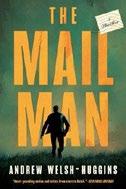
A highly unlikely hero steps up to neutralize a dangerous band of kidnappers. Young Abby Stanfield’s horrible grades trigger an argument between her parents, Glenn and Rachel, over the exorbitant tuition at Bellbrook Academy, making for a typical Tuesday evening for the Stanfields until four masked men—Stone and Vlad and Paddy and Finn, the leader—bust into their home and hold the family hostage. Their intent is murky, but apparently focuses on a woman, Stella Wolford, and her connection to Rachel, who’s an attorney. The intruders’ plan is interrupted by deliveryman Mercury Carter, whom Finn rebuffs at the door. Carter, who’s not who he seems, calculates a bit in his Suburban before breaking into the home himself, causing Finn, Paddy, and Vlad to take off with a captive Rachel. After pummeling Stone, Carter gives chase,
A couple who abandoned their life a dozen years ago have to go on the lam once again, all because of their daughter.
NOT OUR DAUGHTER
accompanied by Glenn and Abby. The series kickoff by the prolific author of the Andy Hayes mysteries spools out like a fast-paced treasure hunt, with Finn eliciting info from the steely Rachel in teaspoons while Carter pursues him. A third narrative thread fills in the details of Carter’s rocky past in short cuts. The twisty plot relies on periodic revelations; suffice it to say that Carter is not the only character with secrets. Some additional juice is provided by the arrival of nononsense detective Rosa Jimenez, investigating a collateral victim of the villains. Welsh-Huggins keeps the story moving, but readers’ engagement will depend on the appeal of the iconoclastic Carter. A brisk and busy chase thriller.
Zunker, Chad | Thomas & Mercer (240 pp.) | $16.99 paper | Feb. 11, 2025 | 9781662516214

A couple who already abandoned their life a dozen years ago have to go on the lam once again, all because of their daughter. Long frustrated in their attempts to bear a child, Greg and Amy Olsen think their luck has changed when they foster Candace McGee’s newborn daughter. They’re right, but not in the way they expected. The night the court unexpectedly awards custody of the
baby to Candace, she turns up at their door covered in blood. Moments after warning them to flee the unknown powers who’ve targeted her and her daughter, she dies, marking Greg as such an obvious suspect that he takes off with Amy and baby Marcy. Thirteen years pass, and things seem quiet. The fugitives have made a new life in Colorado as Cole, Lisa, and Jade Shipley, until Cole’s withdrawal of a substantial sum from a Cayman Islands account to treat Jade’s scoliosis triggers a new FBI manhunt for them. Even worse, the person who killed Candace somehow turns up on their trail again. Cole, whose background in banking security and fraud makes him an ideal candidate to vanish, packs up his family in a trice and hightails it once more, followed by FBI agent Mark Burns, who happens to have a fractious 13-year-old daughter of his own, and the real killer. Zunker pulls all the stops out in keeping the chase moving like greased lightning. And if you feel that the final movement is a bit of an anticlimax, well, it’s hard to imagine how it could have maintained that tension till the last page.
Routine but highly professional thrills perfect for travel reading, preferably when you’re not being pursued by the FBI.

Samantha Harvey Wins the 2024
Booker Prize
The author took home the award for her novel Orbital.
Samantha Harvey won the 2024 Booker Prize for her novel Orbital. Harvey’s novel, published in the U.S. in 2023 by Grove, tells the story of one day in the lives of a group of astronauts aboard a space station. A reviewer for Kirkus called the book, which was a finalist for the Ursula K. Le Guin Prize and the Orwell Prize for Political Fiction, “elegiac and elliptical…a sobering read.”
Edmund de Waal, the chair of the prize’s judging panel, said, “With her language of lyricism and acuity Harvey makes our world strange and new for us.…Our unanimity about Orbital recognizes its beauty and ambition. It reflects Harvey’s

extraordinary intensity of attention to the precious and precarious world we share.”
Harvey was announced as the Booker Prize winner at a London ceremony. Upon hearing her name announced, she reacted with shock, holding her face in her hands for several seconds before taking the stage.
“I was not expecting that,” she said. “We were told that we weren’t allowed to swear in our speech, so there goes my speech. It was just one swear word 150 times.”
The Booker Prize, given annually to “the best sustained work of fiction written in English and published in the U.K. and Ireland,” was established in 1969. Previous winners include Iris Murdoch for The Sea, the Sea, Kazuo Ishiguro for The Remains of the Day, and Paul Lynch for Prophet Song. —MICHAEL SCHAUB
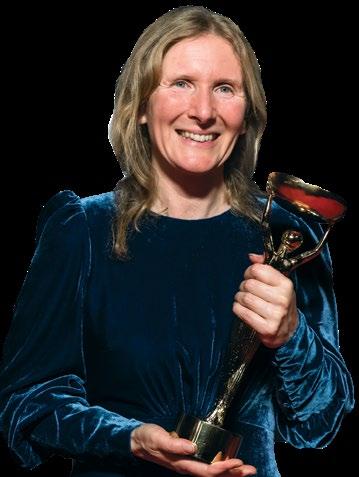
Samantha Harvey


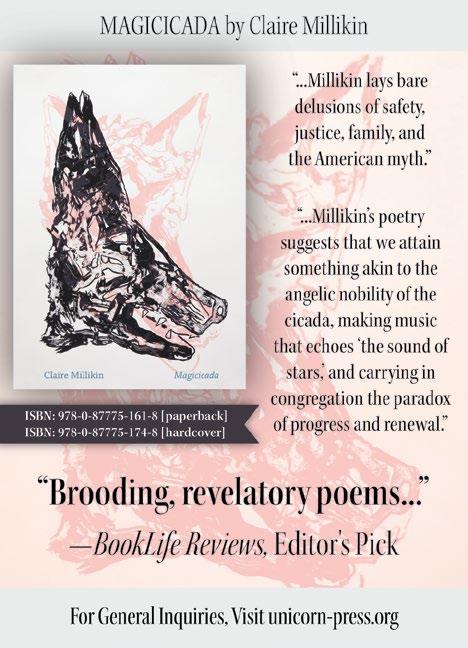
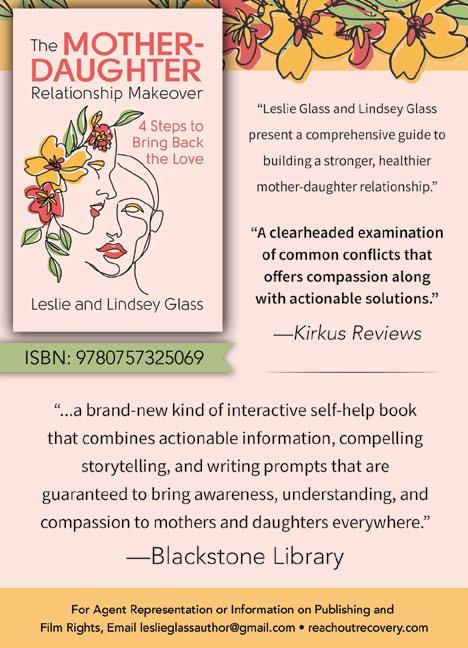

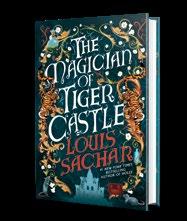
The Magician of Tiger Castle, by the author of Holes, is slated for publication this summer.
Louis Sachar’s first novel for adults is coming this summer, People magazine reports.
Ace will publish Sachar’s The Magician of Tiger Castle, which it describes as “a modern fantasy classic of forbidden love, a crumbling kingdom, and the unexpected magic all around us.”
Sachar is best known for his books for young readers, especially his 1998 children’s novel, Holes, which follows inmates at a juvenile detention camp in the Texas desert. The book won the Newbery Medal and the National Book Award and was adapted into a 2003 film.
The Magician of Tiger Castle will tell the story of

For
Princess Tullia, who falls in love with an apprentice scribe despite the wishes of her father, who wants her to marry a prince. The king enlists Anatole, a magician, to concoct a potion that will convince Tullia to wed the nobleman.
Sachar told People that the book started out as a young adult novel. “I was in the middle of the third draft when it became clear to me that Anatole had nudged his way into the center of the story. Well, it’s not a good idea to have a 40-year old-man, desperate to save his career, as the main character of a book for young people, so I decided to refocus and turn this into a novel for adults.”
The Magician of Tiger Castle is slated for publication on Aug. 5.—M.S.



MORE TO CHECK OUT WHILE YOU WAIT:

The Marlow Murder Club by Robert Thorogood (Poisoned Pen)
Killers of a Certain Age by Deanna Raybourn (Berkley)
The Seminarian by Hart Hanson (Blackstone)
Neighborhood Watch by Sarah Reida (Keylight Books)
The Wrong Hands by Mark Billingham (Atlantic Monthly)
The Clutter Corpse by Simon Brett (Severn House)
Ukulele of Death by E.J. Copperman (Severn House)
The Gardener’s Plot by Deborah J. Benoit (Minotaur)
What Time the Sexton’s Spade Doth Rust by Alan Bradley (Bantam)
The Mermaid Mystery by Tamar Myers (Severn House)
Puzzle Me a Murder by Roz Noonan (Kensington)
Death by Dumpling by Vivien Chen (St. Martin’s)
Final Cut by Marjorie McCown (Crooked Lane)
Arsenic and Adobo by Mia P. Manansala (Berkley)
Finlay Donovan Is Killing It by Elle Cosimano (Minotaur)
Those Opulent Days by Jacquie Pham
On the (very long) library waitlist for the new Richard Osman mystery? Here’s what to read in the meantime. BY
MEGAN LABRISE
Richard Osman’s We Solve Murders (Pamela Dorman/Viking, 2024) is the first book in a new mystery series from the No. 1 bestselling author of The Thursday Murder Club. To call it an eagerly anticipated title is a bit of an understatement—it currently boasts 8,700 holds across seven of the country’s largest library systems. While you’re waiting for We Solve Murders, we’ve got a heaping helping of whodunnits, red herrings, riddles, and world-class wordcraft to enjoy. In Kirkus’ first “Cut the Line: Readers’ Advisory” webinar, we’re joined by Beth Reinker, manager of collection development curation for Ingram Library Services, who presents some Kirkus-recommended titles to read right now. Then, in a panel discussion, I talk with three mystery authors about their latest books, the mystery genre, humor, plot twists, and more: Elise Bryant is the NAACP Image Award–nominated author of Happily Ever Afters, One True Loves, and Reggie and Delilah’s Year of Falling. Set in Southern California, It’s Elementary (Berkley, 2024) is a quick-witted, escapist romp that perfectly captures just how far parents will go to give their kids the very best, all wrapped in a mystery that will leave you guessing till the very end. Says Kirkus: “Myriad mysteries and an enchanting will-theyor-won’t-they romance work in tandem to maintain tension throughout, while boldly drawn characters help spotlight issues such as racism, gentrification, and the devaluation of female labor” (starred review).
Tom Ryan is a screenwriter, producer, and author of the award-winning YA mysteries Keep This to Yourself and I Hope You’re Listening The Treasure Hunters Club (Atlantic Monthly, 2024) is a


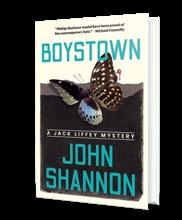
rollicking murder mystery set in a Nova Scotian seaside town filled with pirate lore, family secrets, unforgiveable grudges, secret societies, and of course, a treasure lost to time. Says Kirkus: “Ryan’s masterful interweaving of multiple storylines, surprising plot twists, and often eccentric characters makes for a novel that is as enjoyable as it is suspenseful.”
John Shannon is the author of the Jack Liffey mystery series (Terminal Island , etc.), set in the various ethnic communities, forgotten suburbs, and volatile subcultures of Los Angeles. Boystown (Unnamed Press, Feb. 25) marks the return of Liffey, whose brazen daughter, Maeve, enlists him to help find a missing gay social justice activist. Says Kirkus: “The deft juggling of multiple characters and plotlines, bolstered by a mastery of the sharp one-liner, makes Shannon’s long-running series compulsively readable.”
Editor at large Megan Labrise hosts Kirkus’ Fully Booked podcast.

To watch a video of the session, visit Kirkus’ YouTube page.
Bennett, S.J. | Crooked Lane (320 pp.)
$29.99 | Jan. 21, 2025 | 9798892420907

The queen investigates the death of a sex worker. Bennett’s Elizabeth II already has quite a record as a crime-buster, having solved three cases in 2016 alone. But in this exploit, set in the 1950s, she has help. Joan McGraw, drawn from the typing pool when the queen’s regular assistant private secretary falls ill, turns out to be a find. Smart, intuitive, and sensitive, Joan is just what the young queen needs to help her discover who in her court is trying to sabotage her goodwill trips to France, the United States, and Canada. Joan is tactful in dealing with Elizabeth’s three closest advisors, Private Secretary Sir Hugh Masson, Deputy Private Secretary Major Miles Urquhart, and Press Secretary Jeremy RadnorMilne, whom Prince Philip calls “the men in moustaches.” But she proves her true worth when the palace gets embroiled in a grisly double murder in Chelsea. Clement Moreton, Dean of Bath, wakes up one morning in his London piedà-terre to find two dead bodies in the adjoining bedroom: Dino Perez from Argentina and the escort Perez had hired for the night from the Raffles Agency. The two victims had been cavorting before their demise at the Artemis Club, a venue frequented by the Duke of Edinburgh. When Elizabeth seeks to learn what connection her husband has to the crime, the men in moustaches naturally stay mum. It’s up to Joan to help the young queen find out the truth so that she can face her overseas junkets with grace and aplomb. Bennett blends detection with domestic detail and transnational pageantry to create a royal treat.
In New Orleans, a sleuth gets a bit of ghostly help in solving a murder.
HAUNTING AND HOMICIDE
Burke, Ava | Crooked Lane (272 pp.)
$29.99 | Jan. 21, 2025 | 9781639109289
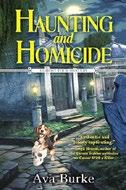
In New Orleans, a first-time sleuth gets a bit of ghostly help in solving a murder. Tallulah “Lou” Thatcher runs her tourism business from her home, a cottage behind her grandmother’s house on Camp Street. Her ability to see and talk to ghosts is a talent that gives her such a distinct advantage in conducting ghost tours in the Garden District that a competitor, Adam Brandt, is determined to prove she’s faking paranormal activity. While visiting with Mamie, the ghost who produces marvelous orbs for her tour, Lou stumbles on Adam’s body and his ghostly form standing beside it. When the police arrive, Dylan Finch, her best friend Cady’s brother, is in charge. Lou’s had a crush on Dylan forever, so she’s extra upset when he puts her first on the suspect list. Adam’s ghost screams whenever he sees her, and she realizes she must investigate his possible enemies in order to prove she’s not the only suspect. In the meantime, Lou’s younger brother, Bryce, has run away from home after being viciously bullied and getting no support from his mother and stepfather. Juggling detective work, her brother’s problems, her business, and taking care of a puppy her Nan rescued is a tough act. Since Adam had both a business partner and a wife, Lou starts by looking into their possible motives. The partner is rude and nasty, and
Adam’s wife had cheated on him. Whoever the killer is, it’s clear that Lou is his next target. An engrossing combination of twisty mystery, ghost lore, and tales of the beautiful Garden District.
Burton, Jeffrey B. | Severn House (224 pp.) $29.99 | Feb. 4, 2025 | 9781448312436

K-9 cops lend a paw to solve a slew of killings connected to a 1994 bank robbery. In a murky prologue, octogenarian Jim Severson wanders into the forest of Illinois’ Kankakee River State Park with dark but unspecified intentions. The story stays in Kankakee but switches to the first-person voice of easygoing dog handler Cory Pratt and his canine sidekicks, bloodhound Alice and springer spaniel Rex. Cory previously provided assistance to his sister, Crystal, a young detective with the Chicago Police Department, and she enlists his help again, this time to search Kankakee for the missing Severson. With canine help, he discovers a mass grave and traces the victims buried there to the infamous robbery of the Crown National Bank. The large cast of supporting characters introduced as the crime is revisited include various relatives of the suspects and FBI fixer Zack Mueller. Intermittent flashbacks to 1994 dramatize the details of the robbery. Back in the present, Catherine Dando, the mother of one
of the robbery suspects, mysteriously goes missing. The discovery of her body shortly afterwards adds urgency to the investigation. Burton works overtime juggling his enormous cast of characters. In addition to the five alleged perps and their clans, there are a clutch of additional detectives: Horton, Andreen, and Lahlum of the CPD, along with Chuck Sims, a very helpful retired detective who conveniently remembers the case and now works at Kankakee River State Park. Sibling sleuths Cory and Crystal have a nice chemistry, but readers may long for more canines and fewer cops. A brisk, crowded Windy City crime yarn, with dogs.
Chow, Jennifer J. | Minotaur (352 pp.) $9.99 paper | Jan. 21, 2025 | 9781250323255

The warm glow of a wedding can’t make up for a dead groomsman in this second installment of Chow’s Magical Fortune Cookie series. As the new co-owner of the Jin Bakery alongside her mother, Felicity Jin feels honored to be spreading happiness to the world—even her surname shines, since it’s the Mandarin word for gold. It’s fitting, then, that the love she and her mother pour into their baked goods leaves the people who eat them with a warm glow of happiness. Felicity’s fortune cookies provide accurate predictions about the future, too. Now, Felicity is planning the perfect dessert for the Leanne Lum–Colton Wu wedding, a “cake” made of tiered egg tarts. She may not get to present it to the guests,
though, since things go wrong before the wedding even gets started when groomsman Miles Wu, Colton’s cousin, fails to show up for the ceremony. Maybe the San Joaquin Valley heat has gotten to him, or maybe the bad vibes between the groom’s divorced parents inspired him to make himself scarce. Felicity has no attention to spare for the drama, since she’s been asked at the last minute to help prepare a traditional tea ceremony she knows little about. With the wedding processional seconds away, Colton asks Felicity’s friend Kelvin Love, the florist, to sub for Miles, hoping Miles will show up in time for the reception. When Miles is found dead under the tablecloth-covered cake table, though, the wedding night devolves into a criminal investigation. If that’s not enough for Felicity to contend with, her long-absent father shows up as a guest at the wedding, seemingly eager to catch up on what he’s missed, though Felicity’s mom warns her not to trust him after all this time.
Good things lie ahead in this series.
Copperman, E.J. | Severn House (240 pp.) $29.99 | Dec. 3, 2024 | 9781448312061

Attorney Sandy Moss struggles mightily to defend a client who seems determined to be indefensible.
Detective
Lieutenant K.C. Trench of the LAPD is in many ways a model police investigator: resolute, methodical, and principled. His stoic personality helps keep his mind trained on facts rather than impressions. He’s not swayed by
The warm glow of a wedding can’t make up for a dead groomsman
hypotheticals or conjectures. But the very traits that make him an excellent detective make him a hellish client. Accused of shooting fellow detective Wallace Schaeffer in the back of the head in Schaeffer’s apartment, Trench digs in. He refuses to speculate about how a bullet with markings that indicate it was fired by Trench’s service weapon came to be recovered from Schaeffer’s skull. Though he acknowledges Schaeffer’s shortcomings as a police officer, he won’t impugn colleagues who may or may not have abetted his misdeeds. He won’t deny that he had good reason to want Schaeffer dead, or that on at least one occasion he threatened to kill Schaeffer. And his brusque, taciturn demeanor makes it hard for Sandy to find other officers who are willing to step up to bat for Trench. Eventually, the challenges Sandy faces become the reader’s challenges, too: With such a black box for a defendant, it’s hard to generate much sympathy for his fate. Trench’s stonewalling leaves much unanswered. Bombshell reveals (and there are several) get brushed off with non-explanations such as, “It was a brief moment when I was dealing with trauma and it had nothing to do with Detective Schaeffer.” After a while, it doesn’t seem to have anything to do with Det. Trench, either.
Readers will miss the trademark Copperman mayhem in this somber outing.
Donovan, Kemper | John Scognamiglio Books/Kensington (336 pp.) | $28.00 Jan. 21, 2025 | 9781496744548
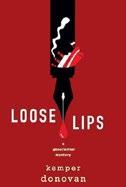
Murder strikes— and strikes and strikes—the Get Lit Cruise, which has attracted 275 aspiring female authors, including one killer. Belle Currer— not her real name, but the Charlotte
The presence of actual stars and studio heads adds glamour to a complex mystery.
DEATH UPON A STAR
Brontë–inspired byline she’s used for ghostwriting credits and her one published mystery novel—has always played second fiddle to Payton Garrett, the MFA classmate who struck it rich as a writer and podcaster. Now that Payton’s organized Get Lit, Belle’s happy to be aboard the Merman Rivera , but not so happy that she fails to notice that her mystery-writing class is much smaller than the poetry class taught by Payton’s wife, Nicole Root, or the romance class taught by Jessamine LaBouchère (not her real name either), or of course the class taught by Payton herself. Intrigue is promised from the get-go by the presence of Flora Fortescue, another MFA classmate who’s suing Payton for plagiarizing her unpublished biography of Lord Byron’s half-sister, Augusta Leigh, for her novel, and by Belle’s announcement early on that, in addition to dinners prepared by Michelin-starred chef Pierre Gasçoigne—one of three men aboard—the cruise will include three homicides before it ends. As she works to bond in one way with ship’s doctor Joan Chen and in another way entirely with journalist Gideon Pereira, Payton’s ex, Belle’s chatty, self-deprecating first-person narrative keeps everything afloat before, during, and after those murders. If the windup feels a tad overextended, you may just be reacting to the claustrophobia stemming from those tiny cabins that keep you cooped up with suspects who dish entertainingly about the problems of writing, especially if you’re a woman.
Spoiler: 28 passengers end up suing the cruise organizer. It’s highly unlikely, though, that any readers will join them.
Meade, Amy Patricia | Severn House (224 pp.)
$29.99 | Feb. 4, 2025 | 9781448314447
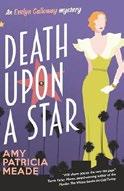
The glitz of Hollywood’s golden age must make room for murder. Evelyn Galloway has moved from New York to California for a dream job as a script consultant on Alfred Hitchcock’s film Rebecca . Her roommate, the lovely dancer Mary Truman, aka Marlena True, gives her plenty of tips on Hollywood life. Catching a quick bite at the studio cafe, Evelyn introduces herself to John Cunningham Margrave, an actor she much admires, and their conversation leads him to invite her to lunch the next day. When she arrives back at the commissary, Margrave isn’t there, but he’s arranged to have Evelyn’s lunch provided along with his regrets. On her way home from work, Evelyn notices some unusual activity at the housing complex where Margrave told her he lived. She’s rudely pushed aside by a veiled woman rushing to a limousine and gets no help from several people loitering nearby. The next day, the newspapers announce that Margrave is dead. Their stories make no sense to Evelyn. When she goes to the police to report what she saw, Det. Ziegler reveals that Margrave was shot. Beyond that, there are plenty of discrepancies among the stories of witnesses the police have interviewed, and the studio fixers have their hands full as they work to cover up the scandal. It
gets worse when the tabloids report that Margrave was in relationships with both film star Madeleine Nabors and 19-year-old Alice Rose Anders, both of whom may have had cause to want him dead. Evelyn, Mary, and Antonio Hernandez, a new friend who works at the studio, refuse to believe it and set out to find the truth.
The presence of actual famous stars and studio heads adds glamour to a complex mystery.
Montclair, Allison | Severn House (224 pp.)
$29.99 | Feb. 4, 2025 | 9781448312375

A wartime betrayal provides the solution to a 1947 murder. Iris Sparks— who’s coping with the death of her lover, Archie, by drinking all the wine he left behind—has moved to a small canal boat and is back to working fulltime at The Right Sort, a matrimonial bureau she owns with her best friend, war widow Gwen Bainbridge. Gwen’s just begun a relationship with Salvatore Danielli, who works at the BBC and has known Iris since their days at Cambridge. Sally and Gwen are both deeply concerned about Iris. The Right Sort’s newest customer is Laurence Haight, Sally’s BBC colleague, who knew Iris during the war; both of them, along with Sally, had to sign the Official Secrets Act forbidding them to talk about their wartime activities. As a radio man, Laurence wants to meet someone with a melliferous voice. When Frenchwoman Jeanne-Marie Duplessis, who needs to be married by next Sunday, says she’ll take anyone, the partners reluctantly agree to look for a match for her. Then, during a visit to the BBC that Sally arranged for Iris, Gwen, her
son, and a friend to watch rehearsals for a new puppet show, a few sentences spoken by the puppeteer in German strike a chord with Laurence, causing him to pull Iris aside and ask her to meet him later to discuss it. Turns out he recognizes the voice of the puppeteer as that of a German who murdered one of the agents he monitored during the war. When Sally and his guests make a stop at a theater owned by the BBC, they find Jeanne-Marie Duplessis’ dead body near a collection of props. The man in charge of the case, DS Mike Kinsey, Iris’ former fiance, suspects Sally. In order to solve the murder and exonerate Sally, Iris must return to her wartime days and uncover clandestine information. A riveting, fast-paced mystery full of wartime secrets, romance, and psychological trauma.
Mosley, Walter | Mulholland Books/ Little, Brown (336 pp.) | $29.00 Jan. 28, 2025 | 9780316573269

Tangled in painful memories of his longmissing father, who was released from prison nine years ago, private investigator Joe King Oliver searches for his old man in this follow-up to Every Man a King (2023).
The 44-year-old King hasn’t seen or heard from his hated/loved father, Chief Odin Oliver, since he was 13. After Chief was convicted of robbing a convenience store and shooting two men, his wife (King’s mother) had a nervous breakdown, was sent to an asylum, and died. Now, King’s ailing 94-year-old grandmother wants him to find her son before she’s operated on for cancer. King’s search, which leads him through a succession of Chief’s friends, lovers, and criminal
associates, overlaps with the case of a woman he’s been hired to find by the wealthy husband she walked out on, taking their 7-year-old daughter—a job the empathetic detective turns on its ear once it becomes obvious that the shady husband is abusive. With its many interconnected characters and layers of family history, the kaleidoscopic plot—narrated by King—isn’t always easy to follow. His desire to sleep with smart and beautiful women he encounters smooths the path. King can’t help showing off his sophisticated taste in food, literature, appearances (one woman’s dress was “the color of Meyer lemons”), and language (“She was so certain about the space she occupied that there was no gainsaying her position”). At the same time, the novel is rooted in street philosophy (“It’s at least three times harder to get outta trouble than it is gettin’ in”) and the ongoing threat of violence. As with Mosley’s great Easy Rawlins series, there’s simply no one else writing books like this one. A dense but deeply reflective sequel.
Murphy, Catie | Kensington (288 pp.)
$8.99 paper | Jan. 21, 2025 | 9781496746481
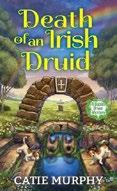
Motives abound for the death of a wealthy man. Megan Malone has become known as the “murder driver” because, in her capacity as a driver for a limo service, she’s found more than her
share of bodies. After she picks up her American friends Rafael and Sarah Williams at the Dublin airport with her two Jack Russell terriers, she takes them to St. Brigid’s holy well, rumored to help couples get pregnant, as they’re hoping. They’re shocked but not surprised when one of the dogs alerts them to a man floating dead in the holy well. The woman who works at the visitors’ center is sure the body must be Seamus Nolan, a member of the Anglo-Irish nobility known as the Irish Druid DS Patrick Doyle of the Garda, horrified to have caught a Murder Driver case, is eager to write it off as an accident. Megan, who doesn’t agree, learns more about Nolan, who’s been rewilding, converting large parts of his enormous estate from farming to woods. When Raf and Sarah urge her to investigate, Megan finds Nolan’s bike hidden in a hedge near the well. Megan befriends Nolan’s teenage daughter, Aisling, who’s overrun by reporters when she comes to see where her father died. Driving Aisling back to the estate, which is even larger than she imagined, she meets Aisling’s unfriendly great-uncle, Adam Nolan, who wants to sell the place, which is currently the subject of a court case over who’s to inherit it—Seamus had been fighting to overturn the requirement that it pass to his closest male relative instead of his daughter. Money is always a motive for murder, of course, but between the battle over the inheritance and the opposed parties involved in the rewilding controversy, Megan has plenty of other options.
An entertaining mystery with plenty of quirky characters.
A private investigator searches for his father, who was released from prison nine years ago. BEEN WRONG SO LONG IT FEELS LIKE RIGHT
O’Connor, Carlene, Peggy Ehrhart & Liz Ireland | Kensington (352 pp.) | $27.00 Dec. 24, 2024 | 9781496751089

Three lively tales of Celtic shenanigans. O’Connor’s is the only story actually set on the Emerald Isle. “Irish Soda Bread Murder” takes place during Galway City’s annual psychic fair. None of the five participants predict that Ronan Stone, the city’s most in-demand psychic, will be felled before the event even starts by a bite of peanut butter hidden in a tin of the titular delicacy. But Ronan’s EpiPen has gone missing, leaving him a goner. How the murderer was able to sneak the smelly allergen into the treat is the stuff of Irish shaggy-dog stories. Ehrhart’s “An Irish Recipe for Murder” jumps across the ocean to Arborville, a small town on the Hudson River where petty intrigue is the order of the day. Handsome photographer Kieran Malone is also dispatched by a bite of soda bread, this time infected by deadly botulism toxin. Amateur sleuths Bettina Fraser and Pamela Paterson crack the case with panache, although the solution is medically implausible. The tale furthest from the motherland is also the funniest. In Ireland’s “Mrs. Claus and the Sinister Soda Bread Man,” a water leak at her B&B calls April Claus, the wife of Santa, home to Cloudberry Bay, Oregon, in the
middle of her annual stint at the North Pole. For reasons unfathomable, she takes three Santaland elves with her. To their surprise, Cloudberry Bay, which sleeps through most of the winter, is in the midst of a full-throttle St. Patrick’s Day festival. The descent of the leprechaun-adjacent elves on the celebration couldn’t be more predictable—or more hilarious.
Murder at its least menacing.
Robb, J.D. | St. Martin’s (368 pp.)
$30.00 | Feb. 4, 2025 | 9781250370792
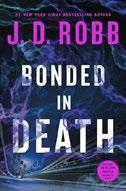
Lt. Eve Dallas and her colleagues in the New York Police and Security Department step outside their comfort zone into counterterrorism. Back in 2024, during the stressful time of the Urban Wars, a courageous band calling themselves The Twelve fought Dominion and other violent fringe groups that sought to end civilization as we know it, despite the presence of a traitor in their own midst. Now, 37 years later, someone’s killed Giovanni Rossi, a retired cybersecurity expert who was one of The Twelve, an hour or so after a summons—ostensibly from another veteran of the group—brought him from Rome to New York. On the body, officers called to the scene find a copy of Dallas’ business card that’s been embellished with a flamboyant threat
Lt. Eve Dallas and her colleagues in the NYPSD step outside their comfort zone into counterterrorism.
to annihilate the seven surviving members of The Twelve. Obligingly inviting all seven to New York—a move you’d think would make it a lot easier for their nemesis to wipe them all out at once—Dallas soon forms a theory about the killer’s identity and sets a trap to draw him out. But her plan turns into a narrow miss, upping the stakes on both sides, for now the killer knows Dallas is on to him. It’s in the nature of the case that there’s less mystery and detection than usual in this long-running franchise—the biggest surprise turns out to be the connection between Dallas and her quarry—but the thrills keep on coming, and the final interrogation, though highly predictable in its broad outlines, is as satisfying as ever. Forget the tangled backstory, focus on the game of cat and mouse, and enjoy.
West, Lilian | Crooked Lane (272 pp.) | $31.99 | Dec. 10, 2024 | 9798892420020

A jar full of trinkets leads a prospective bride to probe a decadesold mystery.
Ever since she moved to the Midwest, Cora’s had a lot of time on her hands. Her future husband, Elliott, insists they live apart, since his conservative family would be scandalized by premarital cohabitation. But he also says there’s no point in her working, since once they’re married, he’ll support them both. Some brides would be busily occupied with wedding plans, but Elliott’s mother seems to have that covered, with very little use for her future daughter-in-law’s opinions on the matter. So, browsing estate sales seems like a good enough way for Cora to while away the hours. When she discovers a diamond ring and a wedding band in a jar of random items she buys for $5, she
becomes obsessed with finding their rightful owner. Beverly, the woman who sold her the jar, has little interest in the rings, but she suggests that her sister Ruth might know something about it. But it’s the third sister, Hazel, who opens the door to a startling series of revelations about her family, including the mysterious disappearance of her mother, who was her father’s second wife. West’s portrayal of the sisters is often heavy-handed in contrast to her descriptions of Cora, who seems vague and unmoored, with no profession, precious little family, and zero insight into her relationship with her boorish fiance. The mystery of the rings’ ownership gets solved, but Cora remains an enigma even to herself.
A small-town drama that packs an equally modest punch.
Woolrich, Cornell | American Mystery Classics (288 pp.) | $25.95 Feb. 4, 2025 | 9781613166277
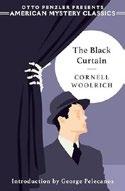
Woolrich’s second noir novel, originally published in 1941, presents an amnesiac with the greatest mystery of all: his own troubled past. After he’s struck by a piece of molding falling from a building, Frank Townsend awakens to find no serious physical damage. The damage, he learns, when he goes to his apartment building to find his wife long gone
and the janitor’s wife agog at his return, is to his memory, which has blacked out the last three-plus years of his life. Frank’s reunion with his wife, Virginia, brings him a deep sense of relief, but nagging questions still remain. As Frank asks himself, “Why do I run away, when I don’t know what I am running away from?” What was he doing during the years he can’t remember? Why is a strange man dogging his footsteps? And will he ever be truly safe again? Spiriting Virginia away from her new home and urging her to take refuge with her mother, Frank follows every slender lead that points to his earlier life and finds that as handyman Daniel Nearing, he’d been wanted for the murder of his employer, Harry S. Diedrich—a shooting witnessed by the victim’s wife, Alma; his younger brother, William; and Arthur Struthers, a neighbor. Aided by Ruth Dillon, the housemaid who’d fallen in love with Dan Nearing, Frank struggles to find exculpatory evidence and predictably ends up in even deeper trouble. Throughout it all, noir pioneer Woolrich consistently subordinates his characters and events to a stifling sense of nightmare whose dispelling by the revelation of the truth about Harry’s murder comes as a distinct anticlimax.
A routine mystery drenched in an unremittingly dark atmosphere.

Eleanor and the Cold War Yardley, Ellen | Kensington (320 pp.)
$27.00 | Jan. 21, 2025 | 9781496750075

Eleanor Roosevelt’s temporary secretary finds that solving murders is part of her duties. When she starts working for Mrs. Roosevelt in 1951, Kay Thompson thinks her job will be interesting and possibly glamorous. Little does she know. Her world changes when she and her employer open the door of a washroom on the Royal Blue train standing in Washington’s Union Station and find the body of a young woman Mrs. Roosevelt had been searching for. Elsa Meyer, an atomic scientist living in Sweden, had asked Mrs. Roosevelt to try to find her daughter, Susan, because she was afraid Susan had been recruited by the Soviets. Kay, who quickly learns that the former first lady is tough as nails, still worries that the State Department will be furious because Kay failed to keep her out of trouble. She notices that whoever was in the room with Susan was wearing the distinctive and expensive Caswell-Massey Number Six cologne, ruling out the porter as a leading suspect. Going to call the police, Kay sees a distinctive-looking man and an exhausted woman with an unruly child who’ll play important roles. When the police arrive in the form of handsome Det. Timothy O’Malley and his rude and racist partner, Det. Barlow, Mrs. Roosevelt explains that Susan had been using the name Susie Taylor, wanted to be an actress, had a lover, and may have been involved in espionage. So, which of those entanglements provided the motive for her murder? Sleuthing with Mrs. Roosevelt makes Kay, whose sole previous ambition was to find an attractive, well-off man to marry, completely change her goals. An engrossing story set in an era of communist hysteria.

The writer was known for her 1992 novel, Bastard Out of Carolina.


Dorothy Allison, who stunned the literary world with her brutal, bestselling novel Bastard Out of Carolina, has died at 75, the New York Times reports.
Allison was born in South Carolina to a single teenage mother; her mother later married a man who sexually abused Allison for years, starting when she was 5. She was educated at Florida Presbyterian College and the New School for Social Research.
She published her first book, the poetry collection The Women Who Hate Me, in 1983, and followed that up five years later with a short story collection, Trash
In 1992, she published Bastard Out of Carolina, which follows Ruth Anne “Bone” Boatwright, a girl who is abused by her stepfather. The novel was a hit with critics and became a bestseller; it was adapted
into a 1996 film directed by Anjelica Huston and starring Jena Malone, Jennifer Jason Leigh, Ron Eldard, and Lyle Lovett. Her other books include the nonfiction titles Skin: Talking About Sex, Class & Literature as well as Two or Three Things I Know for Sure and the novel Cavedweller. Allison’s admirers remembered her on social media. On the platform X, novelist Kristen Arnett wrote, “dorothy allison! the writer who made me want to be a writer - i owe everything i am as an artist to you and your work and your incredible life. you will be deeply missed.”
And author Roxanna Asgarian posted, “Rest in peace, Dorothy Allison, who wrote for the wounded children.”—M.S.

For a review of Bastard Out of Carolina, visit Kirkus online.

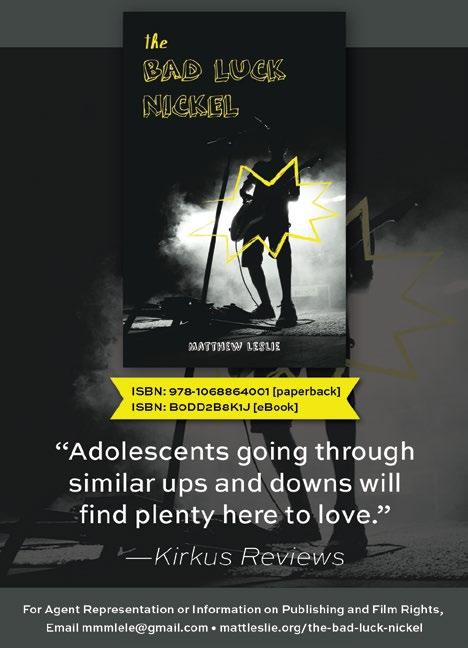



William Morrow will publish Gregory Maguire’s Elphie. Gregory Maguire is returning to Oz.
The author of the bestselling Wicked will publish a prequel to the novel this spring, William Morrow announced in a news release. The press describes Elphie as “the riveting coming-of-age story of a very peculiar and relatable young girl.”
Wicked, published in 1995 by ReganBooks, tells the story of Elphaba, the Wicked Witch of the West from L. Frank Baum’s The Wizard of Oz, and her college roommate, Glinda, who becomes the Good Witch of the South.
The novel was a bestseller and spawned three follow-up books, Son of a Witch, A Lion Among Men, and Out of Oz. The first novel

For a review of Gregory Maguire’s Wicked, visit Kirkus online.
was also adapted into a musical of the same name that premiered in 2003; the show was a smash hit, becoming the fourth-longest-running musical in Broadway history.
The first film in a two-part series based on the musical opened in theaters last fall. It was directed by Jon M. Chu and stars Cynthia Erivo as Elphaba and Ariana Grande as Glinda.
Elphie will tell the story of Elphaba’s childhood. “In response to readers’ longstanding curiosity,” William Morrow says, “Maguire’s Elphie will explore the complexities of Elphaba’s character, offering a profound insight into her transformation into one of literature’s most iconic witches.”
Elphie is scheduled for publication on March 25.—M.S.
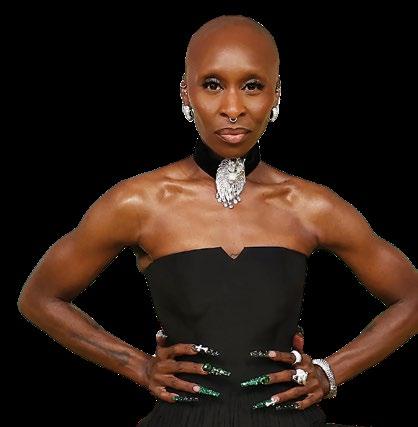
Cynthia Erivo plays Elphaba in the new movie musical.



By Karissa Chen

By M.W. Craven

By Grady Hendrix
Allegra Goodman

Samrat Upadhyay


Crocker, Ed | St. Martin’s (384 pp.)
$30.00 | Jan. 14, 2025 | 9781250287731

A plucky vampire working as a maid in the palace conducts espionage to unravel the mystery of the heir’s murder. Sam has spent the last decade working in the First Lord’s palace. She is immortal, like everyone else—or at least she has the potential to be. As a Worn, a member of the lowest vampire caste, she subsists on cowblood, which doesn’t stop the aging process. Sam has big dreams of moving out of her city, First Light, and passing herself off as a middle-class vampire somewhere else. Of course, the Grays—mortal enemies of the vampires—stalk the city walls and kill anyone who dares to leave. Still, Sam hoards information from the forbidden section of the First Lord’s library to barter and blackmail her way to freedom someday. That curiosity and hunger earn the attention of Daphnée, a lower-ranking vampire Lord who happens to be Queen Leech: commander of an army of Worn spies spread across the city. Lucky for Daphnée, Sam just found a clue that may solve the recent murder of the First Lord’s son, which the maid willingly adds to the Leeches’ amassed knowledge of First Light’s goings-on. Now, aided by a pair of magickless mages and a werewolf who hunts down rogue werewolves, Sam must piece together the mystery of Azzuri the Younger’s death...if she can survive long enough to gather her evidence. Crocker has developed a well-thought-out world here, complete with a vampire stock market for blood strains and centuries of lore. The novel often seems more concerned with showing off its worldbuilding than getting the reader invested in Sam’s mission, however, and the leaps to other characters’ points of view make it difficult to connect with her.
A sweeping paranormal fantasy in which the worldbuilding often crowds out the plot.
Kim, Ewhan | Harlequin MIRA (304 pp.)
$28.99 | Feb. 4, 2025 | 9780778387343

An Everyman flees a mysterious, all-consuming orb, only to reveal himself as an emotional black hole. How many things can change in just a moment, protagonist Jeong-su Kim reflects at the start of Kim’s novel: an expression, a mood, the entire world as we know it. Or at least as Jeong-su knows it: He’s handsome and well-liked at his swanky job, too busy to call his parents but still trying to make up for his shortcomings. Then one night, he witnesses a black orb appear out of nowhere and swallow his neighbor, before turning its slow, ominous path toward the next victim. Cue immediate panic—first in Seoul, eventually worldwide—as people attempt to outrun the inexorable orbs. Are they black holes? UFOs? Foreign experiments? They are indiscriminate in their consumption, though humans discover a few loopholes that merely prolong the inevitable. While a handful of chapters explore the brutal fates of other would-be escapees, the majority of the action focuses on Jeong-su’s odyssey to track down his elderly parents. In the process, he must confront humanity’s ugliest survival tactics, many of which he himself absorbs. Various interludes pair Jeong-su up with other men, from older bachelors representing grim visions of his lonely future to a prolonged period with a younger pseudo-mentee that exposes the toxic masculinity rotting at the core of Jeong-su’s seemingly idyllic life. This emotional revelation comes in a confession whose haste undermines its effectiveness as a narrative bombshell,
in part because Jeong-su fails to learn from his past trauma. Even so, while the book ends with humanity still demanding answers as to what caused the orbs, Jeong-su’s story comes full circle—or, should we say, full sphere—in a rather satisfying fashion. A bleak read that unerringly examines toxic self-isolation, both chosen and forced.
Rath, Emily | Erewhon (592 pp.)
$30.00 | Dec. 17, 2024 | 9781645662204

Two young women are torn apart by fickle gods and have to fight their way back to each other in Rath’s epic historical fantasy. Siiri and Aina are best friends, having grown up together in pre-Christian Finland. Despite the looming prospects of marriage and motherhood, the recent disappearances of other girls, and Swedish invaders from the south, they are able to cling to each other for happiness and companionship. But one day, while they’re at the lake catching fish to prepare food stores for the coming winter, a 15-foot monster and a shadowy wolf-like figure appear, chasing the girls and kidnapping Aina. Aina wakes up a captive in the terrifying realm of the dead, forced to endure the tortures of Tuonetar, the goddess of violent death. Meanwhile, back in the realm of the living, Siiri decides that she must find the legendary shaman Väinämöinen, who will be able to help her find Aina and bring her home. But as Aina learns the secrets of the land of the dead, she’s driven to make choices that might compromise Siiri’s ability to rescue her. Rath says in a note at the beginning of the book that it “should be read as a fantasy,” and that she took some creative liberties with “certain aspects of Finnish shamanism and paganism,” but it is
WHEN THE MOON HITS YOUR EYE
nonetheless a welcome change of pace to read a European historical fantasy that is culturally specific. Rath takes an almost formal tone that is meant to mimic the style of ancient folklore, but it can sometimes come off as stiff. A fun, female-led fantasy adventure based on Finnish paganism.
The Lamb Rose, Lucy | Harper/HarperCollins (336 pp.)
$27.99 | Feb. 4, 2025 | 9780063374607
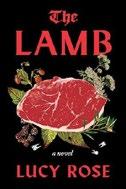
Grimms’ Fairy Tales meets Mommie Dearest in a twisted debut novel about the complex hungers of mothers and daughters. Margot, also known as “Little One,” lives with her mama in a homestead in the forest. “The people out there, Little One, they will never understand us,” her mother tells her. “We aren’t like them. We’re woven from different cloth.” Margot’s mama takes in “strays,” lost souls who don’t have homes, inviting them in, warming them, plying them with tea and blankets—before roasting them with potatoes or crisping them in butter and rosemary from the garden. Tied to her mother by both fear and a fierce love, Margot learns from the older woman’s hunger until it becomes her own. “Her story had to be mine,” Margot muses about a beautiful stray she encounters on her walk home from school. “I wanted to plant those eyes of hers like the pit of a fruit tree in my stomach.” But Margot slowly realizes that things that seem to satiate her mother’s hunger never quite satisfy her,
and her own ache for contact with the outside world leads her to develop bonds with a kindly school bus driver and a classmate named Abbie. The question remains, though, whether these relationships will be able to fill the ache she feels. After all, Margot tells readers she was raised not on breast or bottle, but on blood. One day, Eden, a beautiful stranger, appears in the midst of a snowstorm, changing Margot’s and her mother’s lives forever. The rich, almost unguent prose carries the story through its gruesome developments without, surprisingly, being gratuitous, as it digs deep into the viscera of the complicated relationships between mothers and daughters, lovers, and one’s own physical and emotional hungers. A gruesome yet illuminating comingof-age story that will keep readers awake night after night.
Scalzi, John | Tor (336 pp.) | $27.89 March 25, 2025 | 9780765389091
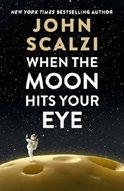
A Wallace & Gromit dream is more of a nightmare in this darkly farcical science fantasy in which the moon inexplicably becomes…well, not green, but decidedly dairy. When the moon and every lunar sample on Earth transform into a cheese-like substance, it seems amusing at first, but the appearance of this newly organic, extremely unstable
satellite has far-reaching, apocalyptic consequences. A variety of U.S. citizens—disappointed astronauts from newly cancelled lunar missions, scientists whose understanding of the universe has been entirely upended, writers frantically adapting their pitches, retirees at a rural diner finding solace in their friendship, a small church community looking for divine answers, bickering cheese-shop owners whose product gets both welcome and unwelcome attention, the ultra-wealthy owner of an aerospace company with a spectacularly self-involved agenda, bank executives seeking a financial angle, and government officials desperately scheduling press conferences—respond in ways grand and petty, generous and self-serving. Those responses can only escalate when a cheesy lunar fragment threatens to destroy all life on our planet. Scalzi’s premise is absurd, but it’s merely the pretext to take a multifaceted, satiric look at how Americans deal with large-scale crisis, something we’re abundantly and recently familiar with, and will no doubt experience again in the not-so-distant future. He writes of denial, conspiracy theories, anger directed at the wrong people, unscrupulous political machinations, and multiple attempts at profiting from the end of the world, for as long as it lasts. There are moments of unexpected kindness and generosity, too. Of course, Scalzi takes aim at his favorite corporate, social, and government targets, as well as at the cheap sentiment that crisis always seems to inspire (as exemplified by a catastrophic Saturday Night Live episode).
A ridiculous concept imbued with gravity, charm, humor, plausible cynicism, and pathos—and perhaps the merest touch of spite.

Ballard, Falon | Putnam (336 pp.) | $19.00 paper | Feb. 11, 2025 | 9780593712924
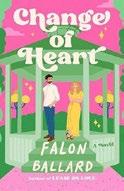
A driven lawyer finds herself stuck in a magical town—and has to find love to get back home. Campbell Andrews only cares about one thing: work. She’s a partner in her family’s law firm and she has zero time for love, though she keeps getting roped into blind dates set up by her controlling grandmother. On a date with pediatric surgeon Ben Loving, she can’t even muster up the energy to have a conversation when there are work emails to be answered. But the morning after her nonstarter of a date with Ben, she wakes up somewhere completely unfamiliar: a town called Heart Springs, where she’s always perfectly coiffed, her makeup is perpetually flawless, and her closet is full of adorable dresses that are very much not her style. Weirdest of all, Ben is her next-door neighbor. Cam soon discovers she’s been sent to this Hallmark hell to complete three tasks: find a career she “really, truly care[s] about,” become part of the community, and find true love. It’s only when she completes all three that she can return home. Gross! Mimi, the owner of the town coffee shop who also apparently controls the magical logic that rules its citizens, sets these ground rules for Cam and ensures that she goes out on dates with several men who are absolutely not right for her as she begins trying out new, Hallmark movie–worthy careers as a bookseller, wedding planner, and baker. But as Cam resists this divine intervention, she starts getting closer to Ben. She thinks she may have written him off too quickly, but he’s not one of the picture-perfect men Mimi demands she fall for. Cam is a spiky, deliberately hard-to-love character at first, and it’s both fun and satisfying to see her realize that human connections and meaningful work can be even more important than chasing someone else’s definition of success. Ballard creates a delightful world
in Heart Springs and an ideal romance hero in Ben.
An entertaining and offbeat romance that balances magic, humor, and heart.
Heath, Lorraine | Avon/HarperCollins (384 pp.) $9.99 paper | Dec. 24, 2024 | 9780063384453
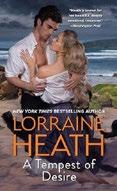
An infamous courtesan crashlands in a viscount’s quiet life.
All Viscount Langdon wants is a bit of quiet to recover from his terrible railway accident, and his private island seems like just the place. But his solitude is disrupted one dark and stormy night when a beautiful aeronaut washes ashore after her hot air balloon collapses, and when he saves her from the ocean, he realizes he knows her all too well. She’s Marlowe, notorious enough for a mononym among the London gossips, a famous mistress who has been attached to the Earl of Hollingsworth for years. Langdon nearly won an evening with her in a card game against Hollingsworth, in fact, and as he appeared to cheat in order not to win, she’s still a bit hurt. Once she comes to and they realize they’re trapped in close proximity by the storm, an intense attraction flares up between them almost immediately, but it’ll have to be a slow burn. Langdon worries he likes her too much to be satisfied with a single encounter, and he also doesn’t want anyone to know that, since his accident, he’s completely lost his ability to understand numbers, undermining his entire life. Marlowe has her own set of secrets, which she’s mulling over as she starts accepting that her life with Hollingsworth may be coming to an end. The two finally give into a sudden deluge of steamy encounters, and their connection goes beyond just the physical. But since Langdon will have to marry and produce an heir soon and Marlowe cares for him too much to
become his mistress, both face difficult decisions. Heath’s many fans will be pleased to see her return with such a strong book about the Scoundrels of St. James characters, especially as Langdon’s parents are the beloved couple of an earlier book, In Bed With the Devil (2008). But it also stands alone very well, and is likely to win her new fans, thanks especially to excellent and empathic character development throughout the well-paced story. A heartfelt and high-flying Victorian romance.
Krentz, Jayne Ann | Berkley (336 pp.)
$29.00 | Jan. 7, 2025 | 9780593639917

A photographer and podcast host realizes she has a stalker in this follow-up to The Night Island (2024).
Seven months ago, Amelia Rivers was the unwitting subject of a paranormal experiment, one that left her with the ability to read people’s auras and the energy left behind in their footprints. Unfortunately, it also left her with a crippling fear of the dark, which is when people’s auras are most powerfully visible. Amelia uses her camera to capture the ghostly auras of a person who’s been skulking around her apartment building, hoping the photos will convince private investigator Gideon Sweetwater that she has a stalker. Gideon isn’t sure Amelia is telling the truth, but he’s determined to help her since he has secret paranormal talents of his own: He can send people into trance-like comas, trapping them in their own nightmares. After disrupting an attempted kidnapping, Gideon and Amelia find clues that lead back to the Lucent Springs hotel in the California desert. Since Lucent Springs was the site of the experiment that changed Amelia’s life, she hopes to discover why she was targeted and bring the mastermind behind the procedure to justice.
YOU BETWEEN THE LINES
With Gideon’s expertise as an investigator, the two interrogate townspeople and the hotel itself in search of more clues to solve the mystery. Gideon teaches Amelia to embrace the darkness that allows her to use her powers, while she teaches him that crystals can help hone his abilities. Krentz’s worldbuilding is interesting and compelling; their inventive paranormal abilities allow Gideon and Amelia to see the world in new, interesting ways. Their romance is perfunctory and even a bit tepid, though, compared to the hunt for the murderous villain.
Another engrossing story about how people with heightened paranormal abilities experience friendship and love.
Naymon, Katie | Forever (368 pp.) | $17.99 paper | Feb. 18, 2025 | 9781538768556

W hen an aspiring writer enrolls in a prestigious MFA program, she’s shocked to discover that her high school crushturned-nemesis is her new classmate.
Leigh Simon has only ever had one true, life-changing crush in her 27 years, and that was Will Langford from Cleveland, Ohio. They attended Rowan High School together, where Will was a wunderkind poet whose father often wrote for the New Yorker. Back then, Leigh had dreams of becoming a writer herself, and was desperate for Will’s approval in their creative writing workshop. Unfortunately, he said her poem was “all style, no substance.” Ten years and a stint at a Boston copywriting firm later, Leigh is hoping to rediscover her passion for writing at Perrin University’s MFA
program in North Carolina. Leigh is ecstatic at the prospect of studying with like-minded writers for the next few years; that is, until she meets her classmates. Will Langford is not only enrolled at Perrin, he’s Leigh’s workshop partner—and he’s vying for the same fellowship she’s coveting. When it comes to their work, Will and Leigh have little in common—he’s a somber, soulful poet with a Moleskine notebook always at hand, and she’s barely even sure if she belongs. But when Leigh remembers an eventful night she shared with Will six years ago, she can’t help but imagine what could’ve been...and what could be now. It seems like Will feels the same way, and it’s hard to deny the existence of a spark between them when Will hands in a poem that’s almost certainly about Leigh. Naymon’s debut is a charming take on first loves and second chances. The characters suffer from old wounds—Leigh and her high school insecurity, Will’s issues with his father’s success—yet the familiarity between them makes it easy to root for their love story, and readers will be itching for the moments when their actions speak louder than their poems. A treat for writers and hopeless romantics.
Tieu, Julie | Avon/HarperCollins (320 pp.) $18.99 paper | Feb. 18, 2025 | 9780063245235
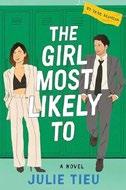
Old passions— and problems— resurface for Rachel Dang at her 20 year high school reunion. Rachel has spent the past 11 years of her life focusing solely on her work at Los Angeles–based
streaming service FreeStream, to the detriment of her personal life. So, when she’s unceremoniously laid off, she’s sent into a tailspin. Single and childless, she still lives with a roommate—her high school best friend, actress Natalie Huang—and has now been relegated to a temporary gig as Nat’s personal assistant in order to pay rent. Floundering is a new feeling for Rachel; a go-getter in high school, she was voted Most Likely to Succeed, and imagined she’d have her life figured out by now. When she receives an invitation to her class reunion from Danny Phan, a former frenemy and secret crush, she realizes it was in high school that she last felt truly accomplished. She decides to attend the reunion, hoping to relive a little of her glory days— and see Danny again. As Rachel and Danny get reacquainted throughout the night, deal with a series of ridiculous mishaps, and rehash the misunderstandings that led to the dissolution of their friendship, they might have a chance to turn a night of reminiscing into romance. Rachel is a relatable character whose career setbacks, relationship letdowns, and general inability to reach society’s predetermined adult milestones will endear her to many readers. But the romance between Rachel and Danny feels forced, manufactured from interstitial flashbacks consisting largely of online chats and study sessions from their high school days that don’t contain the on-page chemistry necessary to build real investment in their adult reconnection. The present-day plot also leans heavily on misadventure and mayhem, to the detriment of building true tension.
A flimsy take on the second-chance romance trope.

THE POET BOB KAUFMAN (1925-1986) took a Buddhist vow of silence after John F. Kennedy was assassinated in 1963, speaking publicly only a decade later when, at an art center in Palo Alto, California, he recited lines from T.S. Eliot and read some of his own work: “All those ships that never sailed.…Today I bring them back.”
It’s unlikely that anyone today would go to such extremes over a political calamity, but some might find solace in a bit of quietude and seclusion. As it happens, several new books explore the virtues of a contemplative life. The most prominent among them is Aflame: Learning From Silence (Riverhead, Jan. 14) by Pico Iyer. The author’s most recent book is about the Benedictine hermitage in Big Sur, California, where he has stayed scores of times over more than three decades. The silence of the setting, high above the Pacific Ocean, allows lyer to focus his thoughts, as do the grand views toward the horizon. The monastery is a perfect spot for not dwelling on anything, as Zen practice would have it. “A lovely complement to the monastic
writings of both Thomas Merton and Patrick Leigh Fermor,” our reviewer writes, “Iyer’s book speaks well to the qualities of those who live both outside and firmly within the daily world and the wisdom, rough and refined, that monks have to offer.” The starred review calls it “essential reading for anyone interested in the monastic tradition and those who follow it.” (Read my interview with Iyer on p. 48.)
For those who’d like to dig deeper into that monastic tradition, there’s Andrew Jotischky’s The Monastic World: A 1,200Year History (Yale Univ., Jan. 14). An English medievalist, Jotischky guides readers through an epic survey of monasteries—“the engine rooms of medieval society.” In his view, they “offer valuable perspectives on how to live under constrained conditions.…Those who still choose such a life today often speak of the freedoms provided by an apparently restricted life.”
One monastery that truly embraces silence is the Grande Chartreuse, the remote Alpine institution that gave its name to the divine herbal liqueur.
Jérôme Sueur, director of the eco-acoustic laboratory at the National Museum of Natural History in Paris, writes about the monastery in Natural History of Silence (Polity, Jan. 28), translated by Helen Morrison. He details how he learned that a 1975 decree protects the monastery’s “zones of calm and silence” by prohibiting noise in the area. “A considerable amount of research has shown the beneficial effects of contact with natural environments,” Sueur notes. “The psychological benefits lead to a reduction in negative emotions such as anger, fatigue or sadness.”
Such a sense of calm is what kept the Finnish author



Tove Jansson and her life companion, Tuulikki (“Tooti”) Pietilä, attached to their modest house on a “fierce little skerry,” which she celebrates in the posthumous Notes From an Island (Timber, Oct. 22).
And then there is the tranquility afforded by getting lost in one’s books. In The Study: The Inner Life of Renaissance Libraries (Princeton Univ., Dec. 3), Andrew Hui examines his subject—“a sanctuary for self-cultivation”—as “an intimate healing place of the soul.” Books, too, are a balm.
John McMurtrie is the nonfiction editor.
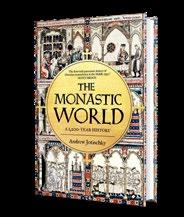


The true story of a littleremembered star.
“What does America want from its stars when they come from the margins?” This is the central question running through Sen’s biography of Merle Oberon, a Hollywood star who audiences believed was “born to well-heeled white parents on the Australian island of Tasmania”—but was in fact the child of a Sri Lankan mother and white father who spent her impoverished early years in Calcutta and Bombay. The child of rape, Oberon—then called Queenie—grew up believing that her grandmother, Charlotte, was her birth mother and was never
told that her real birth mother was Constance Joy Selby, who claimed to be her half-sister. While raising Merle, Charlotte secretly had the future star sterilized at age 17 and masqueraded as Merle’s maid when the two moved to London to help her granddaughter maintain the fiction that she was white. After moving to Hollywood, Oberon’s tribulations continued as she experienced domestic violence and underwent unsafe medical procedures to preserve her light skin. Despite these hardships, Oberon starred in an impressive slate of films— opposite luminaries like Marlon Brando and

Sen, Mayukh | Norton | 320 pp. | $29.99 March 4, 2025 | 9781324050810
Laurence Olivier—that showcased her beauty and undeniable acting skills. Sen’s thorough research, graceful prose, and nuanced analyses of the systems of oppression framing Oberon’s life offer a layered and
engrossing portrait of a woman who skyrocketed to well-earned stardom while enduring the trauma of hiding her race. An extraordinary biography of an extraordinary South Asian woman.
Ali, Samina | Catapult (272 pp.)
$27.00 | March 4, 2025 | 9781646222612

After a brain injury during the delivery of her son, a woman does not recognize her husband or remember having a baby.
“When my neurologist told me that the damage from the strokes had left my brain broken and scattered, when he declared matter-of-factly in his soft, earnest tones that my recovery depended upon me putting it back together as best I could, that there was nothing more the doctors or medicine could do to heal the damage, what he didn’t mention was that some of the pieces were simply gone.” Ali sensed something wrong from the moment she got pregnant. But her doctors saw only a healthy 29-year-old dealing with the anxiety of a first pregnancy. Then, moments after delivery, she went into a coma. When she came out of it five days later, she could no longer even speak English; only the Urdu that had been her first language remained. In short, nonchronological vignettes, Ali attempts to recount what happened from a medical perspective, fill in her life to that point, and chronicle how she recovered her mind and life. She includes reflections on her relationship to her Islamic faith; in the darkest hour, her parents call India to have an imam scale a holy mountain and recite the Qur’an, believed to persuade God to give a second chance. After being released, she is “nearly as helpless as my newborn”—her mother and husband are baby Ishmael’s caregivers for months. She tries to work on an autobiographical novel she has started and, though she doesn’t recognize a word she’s written, does not give up. Though Ali doesn’t name it here, that novel was Madras on Rainy Days (2004), a PEN/Hemingway finalist. Her neurologist, noting that Ali’s is the most
dramatic recovery he has ever witnessed, hypothesizes that “the repetitive process of working on a story based on my personal experience” was key. This memoir seems to continue that process. After the halting pace of her recovery, an epilogue jumps ahead five years with dramatic developments the reader is not prepared for.
A unique record of what it is like to lose everything we think of as ourselves, and to painstakingly reclaim it.
Bardenwerper, Will | Doubleday (272 pp.)
$30.00 | March 11, 2025 | 9780385549653
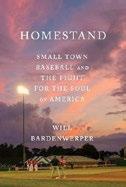
Fellowship forged in the bleachers survives corporate cost cutting.
Five years ago, Major League Baseball dropped 40 of its 160 minor league teams, closing shop in communities across the country. To Bardenwerper, the author of the superb Iraq War book The Prisoner in His Palace, this seemed “emblematic of so much of what was wrong with today’s America.” Curious about how ex–minor league towns and cities were coping, he headed to western New York, home of the Batavia Muckdogs, a Miami Marlins affiliate until MLB’s ruthless cutbacks. Under new local owners, the Muckdogs live on, though the pros have been replaced by college players who pay for their roster spots. Bardenwerper buys a $99 Muckdogs season ticket, befriends fans and ponders big questions “through the lens of baseball.” In his telling, the contraction of the minor leagues is “a story about America, and where we go from here.” Indeed, to learn that a private equity–backed minor league team owner helped MLB “orchestrate” the elimination of teams and subsequently bought more than 20 of the surviving teams is to be reminded that the forces of American corporate consolidation know neither shame nor
mercy. While warning that the minors may yet sustain further indignities, Bardenwerper, chatting with fans and ballpark workers, demonstrates how baseball can be a lifeline in a community battered by deindustrialization. But like many before him, Bardenwerper can get schmaltzy about the sport. Playing catch is like “a sacrament.” There’s communal “magic” in the cheap seats. Thinking about a local who compares Batavia to heaven, Bardenwerper depicts his own “imagined afterlife” as a Field of Dreams –esque ballgame. “Was I guilty of presenting a misleading Disney-like fantasy of the Batavia I wanted to discover” instead of the real thing? At times, yes.
An earnest search for meaning in a community that lost a pro baseball team.
Beinart, Peter | Knopf (176 pp.)
$26.00 | Jan. 28, 2025 | 9780593803899

Petitioning Israel and supporters of its war in Gaza. Beinart, a self-described “Jewish loyalist” whose critiques of Israel have been controversial in some quarters, amplifies his position, challenging the country’s justifications for killing tens of thousands of Palestinians in the current conflict. The former editor of the New Republic denounces Hamas for its Oct. 7, 2023, attacks, during which about 1,200 people—most of them Israeli civilians—were murdered and roughly 250 taken hostage. But in response, Israel has committed “grave crimes” in Gaza, Beinart writes, further entrenching its “subjugation” of Palestinians. “The more brutally Israel behaves, the more brutal [the] resistance is likely to be.” Which is why Israel, he argues, must end an “apartheid” system that deprives Palestinians of basic rights. To those who protest that this would make life unacceptably
dangerous for Jews, Beinart cites the beneficial social developments that followed the expansion of rights for historically oppressed groups in South Africa and Northern Ireland. Though “abandoning supremacy” doesn’t guarantee peace, it would “lift the weight that oppressing Palestinians imposes on Jewish Israelis, and indirectly, on Jews around the world.” But such an about-face is impossible without major modifications to “the story Jews tell ourselves to block out the screams” caused by “the horror that a Jewish country has perpetrated.” Such a revised story’s “central element should be this: We are not history’s permanent virtuous victims.”
A learned, powerful book that asks tough—if contentious—questions.
Betancourt, Theresa S. | Harvard Univ. (320 pp.)
$35.00 | Jan. 21, 2025 | 9780674251052
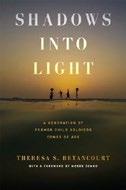
The toll of war on the young. Rebel armies abducted both boys and girls in the Sierra Leone Civil War, which inflicted tens of thousands of casualties and displaced more than 2 million people between 1991 and 2002. Some bore arms, others took roles as scouts, scavengers, cooks, or any other task their captors ordained. Extreme violence—including execution for minor offenses—and sexual abuse were
commonplace, and many of the girls became pregnant. Not surprisingly, they encountered obstacles when returning to civilian life—PTSD, bullying and teasing at school, rejection by families and neighbors. After the war, Betancourt, then a Ph.D. student at Harvard, went to Sierra Leone to study how the survivors were adapting. Now a professor at Boston College, she tells some of their stories, as well as the stories of those who tried to help them become healthy, productive citizens. Not all succeeded. Many of the boys joined gangs or became drug addicts; many of the girls turned to sex work to support themselves and their own children. Those who escaped these traps usually did so with the support of their families and communities. Those working to help the survivors reintegrate found success by persuading family and respected elders to give the survivors support. Still, the programs were impeded by inadequate funding and staffing—there are only three practicing psychiatrists in the entire country—and by a traditional culture that stigmatized mental illness. General readers may find some of the text slow going because of technical jargon, but the story as a whole is inspiring. A bonus for many readers will be the close-up view of Sierra Leone, a country few Americans know well.
An eye-opening look at how young survivors of wartime trauma can achieve postwar success.
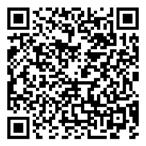
Bond, Sarah E. | Yale Univ. (272 pp.)
$35.00 | Feb. 4, 2025 | 9780300273144

For more on African history, visit Kirkus online.
Ancient rebel with a cause. Spartacus is one of the most popular figures of classical antiquity. And for good reason. An enslaved gladiator from Thrace, on the edge of the Roman Empire, he led an uprising of the oppressed and exploited that shook the pillars of Rome from 73 to 71 B.C.E. A historian at the University of Iowa, Bond recounts Spartacus’ brief but ferocious exploits, which have inspired enslaved men and women for millennia. In a compact book amply footnoted with helpful maps and illustrations, she shows that while Spartacus stood out from the downtrodden crowd, he was not a lone rebel and not the sole figure in Rome who rejected the allure of bread and circuses. In the tradition of E.P. Thompson, Bond offers history from the bottom up. She collapses the distance between past and present and enables readers to see the outlines of the contemporary world in antiquity and the shadows of the ancient world in the present. Bond also examines the power of the state, the nature of Roman repression, military might, and the force of imperial oligarchy. “Slavery was a deplorable part of Roman society from its very beginning,” Bond writes. There’s no doubt about her sympathies in the war between plebeians and patricians—and her feelings about strikes, then and now, to improve working conditions and raise wages. Her book removes layers of myth and fiction that have obscured Roman history. It offers a portrait of life at the heart of an empire that rose and fell and that has served as a paradigm for empires since, from the French and British to the American. Essential reading for anyone eager to learn about a real-life gladiator.
Kirkus Star
Caffall, Eiren | Row House Publishing (294 pp.) $27.99 | Oct. 15, 2024 | 9781955905589

A memoir of illness, the author’s and the planet’s.
Caffall suffers from a congenital disorder, polycystic kidney disease, that, she writes, “killed most of my family before they reached fifty.” With that likelihood of a death sentence upon her, a single mother with a difficult mother of her own, she turns to the ocean and its “threatened sea creatures,” gathering from her studies “a bestiary…a list of fish that will teach me how to live.” Without self-importance or sentimentality, she likens each aspect of her illness, physical and psychological, to the decline of the world’s health. “Our global marine ecosystem works not dissimilarly from the circulatory system in the human body,” she writes, and in that regard that ecosystem is in imminent danger of shutting down: The Gulf of Maine, her central point of reference, is warming rapidly enough that the waters are being invaded by creatures from tropical waters, while the Arctic Ocean is becoming a mere extension of the Atlantic, no longer capped in ice. Caffall writes with the observant care of a natural historian in the vein of a latter-day Rachel Carson: She notes here that acid rain is linked to the rise in red tides, which jeopardize the food chain all the way up to seals and whales, and that the poisons brought into the oceans from industrial farms and metropolitan sewage rob the waters of oxygen and suffocate creatures such as the lobster—a process marked, she writes, by “the same things that overwhelm a body when kidneys no longer filter blood properly.” Whirlpools, bioluminescence, the Gulf Stream, barnacles, and sharks—all figure in Caffall’s graceful and understandably elegiac pages and her closing benediction: that in the mystery and miracle of
An
“anti-biography” that “seeks to make Leonardo unfamiliar.”
LEONARDO DA VINCI
life “lies all that can save you and the world entire.”
A future classic of nature writing—if, that is, there is a future.
Campbell, Stephen J. | Princeton Univ. (336 pp.)
$37.00 | Feb. 4, 2025 | 9780691193687
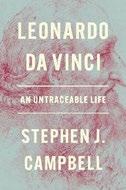
Searching for Leonardo. In a copiously illustrated volume, art historian Campbell considers the challenges of historical scholarship through his perceptive and authoritative analysis of the life, works, and afterlife of Leonardo da Vinci (1452-1519). With only “partial and fragile evidence” of Leonardo’s life, many biographers have filled in the gaps with fictionalizations, creating a mythical persona—homosexual, vegetarian, solitary genius—who has become the central figure in what Campbell derides as “Da Vinci Worlds”: “environments in which the legacy of the Florentine artist polymath is put on show for a mass public of spectators.” He decries the commodification and commercialization that keeps Leonardo’s ghost alive before a voracious public through “the most hopeless new attribution, the most lurid conspiracy theory, the most preposterous evaluation.” Even many scholars, Campbell argues persuasively, reflect their own cultural milieu and assumptions about selfhood, agency, sexuality, and psychology rather than accounting for differences in Renaissance Europe. Campbell examines art historical and biographical interpretations surrounding
many works, including The Last Supper, “stormy exchanges” generated by the Salvator Mundi, and the “dense thicket of myth and wishful thinking” surrounding the Mona Lisa, including the identity of the sitter and her connection to Leonardo. He contests the much-repeated idea that Leonardo was “ahead of his time,” which he sees as an “expression of glib superiority toward the past.” Campbell’s project in this book is precisely to embed Leonardo within the political, social, religious, and scientific tensions roiling European culture in the 1400s and 1500s; to construct what he calls an “anti-biography” that “seeks to make Leonardo unfamiliar”; and to ask: What does it mean to have a self, now and in the past? How can we understand “a nonmodern way of being a person”? A vigorous meditation on life-writing and one artist’s reality.
Carter, Graydon with James Fox | Illus. by Eric Hanson | Penguin Press (432 pp.)
$32.00 | March 25, 2025 | 9780593655900

Revisiting glossy days. Carter navigates the path from his upbringing in rural Canada to founding Spy magazine, a delightfully snarky publication perhaps most famous for labeling Donald Trump (to his indignation) as a “shortfingered vulgarian,’’ fast-tracking to a long, successful run at the helm of Vanity
Fair before moving on to his current gig with the digital publication Air Mail . But his subtitle gives the game away—Was the Vanity Fair era, a skillful amalgam of celebrity journalism and investigative reporting, really a “golden age” of magazine journalism? In this admittedly enjoyable account, it seems more like a product, however well executed, of affluent times, generous pre-internet advertisers, and aspirational readers eager to feel part of a world beyond their income levels or societal status. Carter’s odyssey, surprisingly, is most engrossing when he recounts surviving freezing winters and a stint as a railroad lineman before making his way to New York, that “shimmering vessel of opportunity and reward,” where, Gatsby-like, he begins to climb the greasy pole by talking his way into a stint at Time magazine. Bored by the stultifying culture of the newsweekly, he and a colleague, Kurt Andersen, hole up to create prototypes of Spy. “We wanted the voice,” he writes, “to be a mixture of Time -ese from the 1940s, with its dense, fact-filled writing, and the saucy manner of London’s Private Eye ”—and Mad magazine. “We wanted to be outsiders on the ramparts picking off the big shots.’’ Mission accomplished. But as Spy ’s financial fortunes foundered, Carter was wooed to take over Vanity Fair and join the Establishment, gaining more recognition from the VF Oscar Party than journalism, whose halcyon age was better exemplified by Harold Ross’ New Yorker or H.L. Mencken’s American Mercury. Curiously, Carter begins this memoir by reciting the “Deep Throat” scoop revealing Bob Woodward and Carl Bernstein’s Watergate source. It’s solid reporting, but closer to gossip than lasting literary value. The going was good—but it appears to be gone. An entertaining look back at a life in full.

Césaire, Aimé | Trans. by Kate Nash Polity (336 pp.) | $24.95 paper Feb. 11, 2025 | 9781509559381
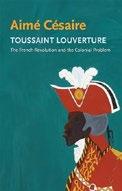
For more by Graydon Carter, visit Kirkus online.
A philosophical meditation on the Haitian slave revolt and its famed leader. “Strategists may sometimes be poets.” So writes the Martiniqueborn Césaire (1913–2008), who had reason to ponder Toussaint Louverture’s uprising against France: Césaire, a parliamentarian in the French National Assembly, was active in the anticolonial movement a century and a half after Louverture’s time and drew inspiration from him. Césaire’s argument is subtle almost to the point of elusiveness: He holds that historical facts are less important than “the relations between them, the principle that governs them, the dialectic that produces them.” Césaire depicts the Haitian Revolution as having class war at its heart, with the mulatto and Creole populations standing distinct from the enslaved Black population, and with, of course, the white slaveholding minority standing even farther apart. Although he does not use the term, the Marxist concept of “false consciousness” comes into play at several points, as when many mixedblood Haitians took the slaveholders’ side when the fighting began. Ironies abound in Césaire’s account: Celebrated as a great liberator at home, for one, Napoleon Bonaparte made a bid to re-enslave Black Haitians, landing a doomed counterrevolutionary army on the island. Césaire is both admiring and unsparing: Founding his revolutionary republic “in the name of Blacks and Men of Colour,” it wasn’t long before Louverture encoded into the constitution his rule “for the rest of his glorious life” and repressed Haitians who disagreed with him. “At war day and night,” writes Césaire, “he was at risk of becoming deformed by the military, becoming mechanistic, schematic….He
no longer persuaded. He decreed.” Among his larger faults, Césaire holds, was the failure to elevate the revolution from the promise of “universal freedom” to that of true independence—and yet, without him there might have been no revolution. A little-known text of much interest to students of anticolonial literature and historiography.
Chadwick, Bruce | Pegasus (336 pp.) $32.00 | Feb. 4, 2025 | 9781639368259

Firsthand accounts from those who witnessed war. There is no shortage of Gettysburg histories, so Chadwick, author of The Cannons Roar: Fort Sumter and the Start of the Civil War—An Oral History (2023), takes a different tack that will captivate the general reader. His book is an oral history of the 1863 battle in the sense that it describes events and individuals through the words of contemporaries— far more often written than spoken. This works better with events than individuals. His sources deliver conventional portraits of the major players. Everyone worships Robert E. Lee, George Meade (the Union commander) is hardworking and competent, Abraham Lincoln wise and sad. Chadwick follows the usual oral history format, introducing a subject, then quoting observers. Historical figures deliver their impressions, as do military officers and bureaucrats. He relies heavily on journalists who apparently roamed the battlefield freely; the British sent a large contingent, mostly to Confederate armies, where they fell under Lee’s spell. This being the first major war in an era of widespread literacy, common soldiers and Gettysburg citizens wrote letters and kept diaries.
An entertaining collection of primary sources.
Christensen, Kim | Grand Central Publishing (336 pp.) | $30.00 Feb. 11, 2025 | 9781538726730

Thoroughgoing exposé of the Boy Scouts’ longunacknowledged history of sexual abuse and subsequent bankruptcy.
Working with a fellow reporter, Christensen knocked on doors and examined hidden archives in order to find himself “peering into a Pandora’s box of sexual abuse involving thousands of Boy Scouts victimized by their leaders and betrayed by the nation’s preeminent youth group.” That number grew as advocacy groups, formed along the lines of support groups for victims of clerical abuse, entered a complex legal fray: In the end, some 82,000 former Boy Scouts sued, and to date, Christensen writes, the adjudicated payout has amounted to a mere $7.9 million. He writes that the Boy Scouts had long known of sexual abusers among the ranks of its adult leaders, keeping files, most recently, on more than 5,000 “ineligible volunteers,” many of whom were nonetheless able to sign on as scoutmasters; these “IV files,” he adds, predominantly concerned cases of “perversion.” These secret files—“secret,” he writes, being a term the Scouts shun, preferring the legalistic “confidential”—are incomplete, since they were purged to ostensibly “protect the privacy of victims, witnesses, and anyone falsely accused of sexual abuse.” As the instances of provable sexual
abuse grew, Christensen writes, the Scouts lost a huge number of members, despite the organization’s reversal of long-standing prohibitions against gay and female Scouts (agnostics and atheists still need not apply)—a reversal that in turn cost the organization the support of the Mormon church, the leading contributor of both Scouts and money, such that “425,000 Mormon Boy Scouts had decamped, likely never to return.” Though the Scouts’ parent organization tested many legal maneuvers, the courts finally ruled against the group, forcing bankruptcy—even though, Christensen reckons, it still has “net assets of nearly $1 billion.”
A vigorous takedown of a supposed moral exemplar.
David-Fox, Michael | Harvard Univ. (480 pp.) $35.00 | Feb. 4, 2025 | 9780674247468

An unsettling look at dictatorial rule.
David-Fox, a historian at Georgetown University, writes how, after overrunning the western Soviet city of Smolensk in 1941, Nazis shipped many of their archives back home, where they became available to Harvard Sovietologist Merle Fainsod for his “foundational” 1958 account of how the prewar city was governed: Smolensk Under Soviet Rule. “A good deal of what was known about Soviet history during the Cold War came
Long after the war, records revealed a grotesquely Orwellian experience.
CRUCIBLES
from Smolensk,” David-Fox writes. The temporary opening of all Soviet archives after 1990 allowed David-Fox to research a far more expansive history, from the Stalin Revolution of the 1920s through “the German occupation of 1941-1943 and the subsequent restoration of Soviet power.” Amazingly, he turns up half a dozen individuals who kept journals or spoke to researchers later, revealing details of a grotesquely Orwellian experience. He begins before 1930, when Stalin decided to jump-start industrialization by collectivizing agriculture. It succeeded—after disruption, violence, and famine—but left the USSR with a permanently unproductive agricultural sector. Then came Stalin’s Great Terror, a nightmare of arrests and executions of purported traitors that was resolved before the 1939 Nazi-Soviet friendship pact. After their apparently easy victory in 1941, most Nazis accepted Hitler’s order to kill the “Judeo-Bolshevik” elite of the USSR and starve the remaining “subhuman” Slavs out of existence or reduce them to slavery. Although the result was massive atrocities, many local Nazi officials understood that controlling their vast conquests (nearly 70 million people at its peak) required some cooperation, and millions of Soviet citizens collaborated and even bore arms. Reconquest in 1943 brought mass retribution, but rebuilding after the destruction left by the Nazis persuaded many leaders to advocate relative moderation. Stalinism returned, disappointing peasants who hated collectivization and idealists working for a system that valued loyalty over competence. But DavidFox assures readers that it didn’t last. Invaluable insights into two genuine dystopias.

Eicher, Jill | Pegasus (384 pp.) | $32.00 Feb. 4, 2025 | 9781639366422
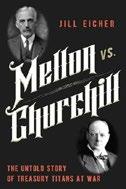
When two political giants wrangled over the little matter of a few billion dollars. If an army marches on its stomach, a country at war marches on a mountain of money. As World War I ground on, Britain sought aid from America. When a British delegation arrived in “top hats and frock coats, looking every bit the way Americans pictured English diplomats,” it returned to Britain with $3 billion, just some of the money the American government and private banks loaned out for the war effort. After the war, as first-time author Eicher chronicles, the job of collecting the debt went to Andrew Mellon, secretary of the treasury, while Winston Churchill, then finance minister, argued vehemently that the U.S. should write off the debt. The relations between the two men, Eicher writes, were chilly, and seldom did they come to terms on that or any other matter. Eicher’s narrative winds into repetitive territory as Mellon dunned Churchill for years—and for years Churchill evaded the bill. Eicher does not adequately address the implications that alternate paths might have yielded: If Germany had not been saddled with an enormous war debt and reparations (which, to its credit, it tried valiantly to pay), would Hitler have been able to rise to power? In that light, Churchill’s proposed alternate strategy might have changed world history: “We should declare publicly,” he said, “that we are perfectly ready to wipe out every European debt owing to us if the United States will accord us a similar release.” Instead, Mellon, though with some misgivings, continued to press for repayment, and Britain and other allies defaulted. Indeed, Eicher notes, to this day those debts “remain outstanding on the books of the U.S. Treasury.”
Of some interest to students of the historical interplay between geopolitics and international finance.
Falconer, Morgan | Norton (272 pp.)
$32.99 | Feb. 18, 2025 | 9781324051428
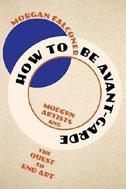
The shock of the new.
Art historian Falconer charts the atmosphere of disillusion, anger, and restlessness that gave rise to avant-garde art, disparate movements that swept across Europe and Russia, beginning around 1910 and continuing for decades. Futurists, Dadists, Surrealists, Russian constructivists, De Stijl, the Bauhaus, and Situationists were bound together by their rebellion against the academy as gatekeepers for artists and against stultifying bourgeois values. They were intent on creating shocking, disorienting works “that defied all the prior categories of art,” such as multimedia performances featuring a rowdy mix of poetry, orations, and music. Some anointed everyday objects as art—such as Marcel Duchamp’s urinal titled Fountain; others insisted that art must evolve into architectural structures. Although some avant-garde artists railed against conventional forms of writing, they produced their own manifestos: The bombastic Filippo Tomasso Martinetti’s Futurist Manifesto was published on the front page of Le Figaro in 1909. André Breton’s Surrealist Manifesto appeared in 1924. Some were drawn to the occult, the unconscious, and dreams; many harbored utopian visions, especially after World War I. Dada, Falconer asserts, arose from the trenches: “anarchic, acidic, preoccupied with a violent, politically turbulent, mechanized world.” Falconer creates lively capsule biographies of idiosyncratic characters in his
well-populated history, including Guillaume Apollinaire, who invented new “isms” to describe the new art; Duchamp, “a prankster without a program”; Dadaists Hugo Ball and Emmy Hennings; Tristan Tzara, Dada’s chief publicist; the Russians Vladimir Tatlin and Aleksandr Rodchenko; Theo van Doesburg, leader of De Stijl, whose aim was to connect with the universal; Walter Gropius, founder of the Bauhaus. With entertaining asides about his own experiences as critic, scholar, and maker of art, Falconer offers a vivid picture of the fervent efforts of artists questioning the meaning of art itself.
A well-informed, spirited cultural history.
Garner, Helen | Pantheon (848 pp.)
$40.00 | March 11, 2025 | 9780553387490

Recounting a writer’s days. Award-winning Australian novelist, journalist, and screenwriter Garner has gathered three volumes of her previously published diaries from 1978 to 1998 to create an intimate chronicle of life, love, family, and the frustrations of writing and aging. As Leslie Jamison writes in an appreciative introduction, the diaries read like “a blend of pillow talk, bar gossip, and eavesdropping on therapy,” as Garner reflects on her daughter’s growing up, her marriages coming apart, and her body inevitably changing during menopause. At 45, she notices “a single white hair” and pulls it out. Shopping, drinking, cleaning house, cooking meals and sharing dinners out, seeing friends, traveling to the U.S., London, and Paris: All these activities fill her days, with writing the center of her life. At times, the world intrudes into her pages: a coup, a rebellion, an assassination, and even Princess Diana, driving past in a Rolls-Royce. “Such a pretty girl,” Garner remarks. The diaries also serve as commonplace books, punctuated with salient passages from an assortment of writers,
including Goethe, Cocteau, Peter Handke, Camus, Thomas Merton, Barbara Pym, Jung, Germaine Greer, and Richard Ford. Garner praises writers she admires— among them, E.M. Forster, Virginia Woolf, and Raymond Carver, while her own work often generates self-doubt. She feels wretched, she notes in 1979, writing three sentences a day. “I’m scared to go to my office in case I can’t make things up,” she confesses a few years later. As devoted as she is to her diary, in 1989, suddenly regretting her “endless self-obsession, anecdotes, self-excuses, rationalisations. Meanness about others,” Garner announces, “I think I might burn all these diaries.” Happily, she did not. Sharp observations and revelations make for lively reading.
Goodman, Matthew | Ballantine (448 pp.) $30.00 | Feb. 4, 2025 | 9780593358924
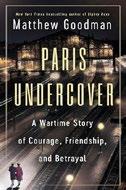
Two women who took on the Nazis. Paris-Underground, a 1943 bestseller, Book of the Month Club selection, and movie, describes two heroic women from the French Resistance. Journalist Goodman, author of The City Game: Triumph, Scandal, and a Legendary Basketball Team, tells what really happened, preserving some heroism while adding some painful details. The women themselves were middle-aged (not, needless to say, in the movie). Prosperous and living quietly, they were as shocked as the world was at the Allies’ sudden defeat in June 1940. Fleeing Paris along with several million others, they returned a few weeks later after the French surrender. Etta Shiber, the American author of Paris-Underground, was anxious not to make waves, but Kate Bonnefous, her assertive British companion, went to work. Already a Red Cross volunteer with a car and papers allowing free movement, she began visiting hospitals for injured Allied
prisoners, purportedly to bring provisions but in fact to help them escape. Beginning in July she became a pioneer in a resistance organization that ultimately guided thousands of Allied servicemen across France and back to Britain. The women guided several dozen before their betrayal and arrest in November 1940. Sentenced to prison, Etta returned to the U.S. under an exchange in 1942. Kate received a death sentence, but it was commuted, and she survived the war, although barely. The final hundred pages describe their postwar lives while casting a gimlet eye on the accuracy of Shiber’s book. Written by ghostwriters, it was heavily fictionalized, full of suspense and events that never took place. Sadly, Bonnefous, then a prisoner, wasn’t fictionalized enough. Her thinly disguised name did not fool the Gestapo, who tortured her brutally in an attempt to get more information. The two never met after the war.
Genuine heroism and well told, with no Hollywood ending.
Kirkus Star
Gordon, Linda | Liveright/Norton (512 pp.)
$35.00 | March 4, 2025 | 9781631493713

The impact of collective activism.
Bancroft Prize–winning historian Gordon considers critical changes in American life through an examination of seven movements that arose from the 1890s through the 1970s. These examples
of “large-scale, participatory activism” include the settlement house movement of the 1890s; the rise of the Ku Klux Klan and fascist groups in the 1920s; campaigns for old-age pensions and unemployment relief in the 1930s; the Montgomery bus boycott of 1955-56, which began the Civil Rights movement; the United Farm Workers movement of the 1960s; and women’s consciousness raising in the 1970s. Besides profiling movement leaders, Gordon pays close attention to what she calls their “followership,” individuals not usually identified as leaders but who developed and promoted strategies and tactics that enabled movements to succeed. Her well-populated history contains familiar figures (Martin Luther King Jr., Rosa Parks, Cesar Chavez) but mostly surprises. In recounting the growth of settlement houses, for example, which burgeoned to 74 residences by 1897, Gordon’s well-known history of Hull-House in Chicago, founded by Jane Addams and supported by wealthy white women, is complemented by the history of Phillis Wheatley Home in Cleveland, founded by Jane Edna Hunter, the daughter of a formerly enslaved mother, to serve migrant Black women. In the 1930s, two movements arose to address economic distress: the Townsend movement, launched by a feisty retired California physician, Dr. Francis Townsend, which resulted in the passage of the Social Security Act of 1935 and identified old age as “a political identity,” and a struggling campaign for unemployment relief, which “engendered hopefulness and a sense of efficacy,” despite facing many obstacles. Whether they effect lasting change, social movements generate camaraderie, solidarity, and the shared conviction that “risks are worth taking.”
A timely, stirring history.
The real story of two women who took on the Nazis.
PARIS UNDERCOVER
Grae, Jean | Flatiron Books (304 pp.)
$29.99 | March 11, 2025 | 9781250857538

A humorist and former rapper contemplates her mortality in 18 essays.
“Getting… deathy with it” was South African native Grae’s way of coping with the impermanence she was forced to accept from an early age. After moving with her parents from Cape Town, she spent a “feral” New York City youth smoking too much “terrible weed” and witnessing violence, all of which led her to a preternatural acceptance of death. What she experienced also led to a determination that she would never allow herself to “die young from capitalism and misogyny.” With sardonic eyes that see the life ahead of her as “remaining years,” Grae muses on the severe burnout she endured from years of grueling work as an independent rap artist; the “assimilation trauma” that partly stemmed from being the South African girl her Black friends would claim wasn’t a “real African”; and the “patriarchy stress disorder” from living in a culture that revealed its misogyny through its disdain for her work as a rapper and its silences around female health issues like perimenopause. Her keen sense of humor and an abiding love of the fashionable and totally outrageous are the survival tools she celebrates throughout the book. Even as she imagines her own funeral in the closing essay, Grae demands that future attendees dance, cry, wear a “fabulous scent,” and look their most decadent in “caftans…trailing sheaths and billowing gowns.” By turns raw, mordant, and hilarious, this book will appeal not only to Grae’s fans but to readers with a taste for quirky and intelligent personal writing touched by the surreal.
A fierce, funny book that embraces life and all its imperfections with open arms.
Griffin, Amy | Dial Press (288 pp.) | $28.00 March 11, 2025 | 9780593731208

Recovered memories of childhood abuse tear through the fabric of a “perfect” life. Griffin’s debut memoir begins with a lyrical account of an idyllic childhood in Amarillo, Texas. Her family owned a chain of convenience stores called Toot’n Totum, whose sparkling aisles of colorful products seemed to the young Amy a kind of paradise. “The best things in life weren’t free. They were shrink-wrapped.” From an early age, she loved running, but also felt she couldn’t stop running— as she grew up, she felt both an intense pressure to be perfect and a disturbing sense of disassociation from her own accomplishments. “From the outside, at least, after I married John and we began building our life together, things did seem ‘perfect.’ I was athletic, tall, and blond. John was successful and respected in his career. I got pregnant easily and gave birth to a healthy baby boy, my son Jack.” Three more children followed. She traces the beginning of her understanding that something was wrong to the day her 10-year-old daughter complained that she felt disconnected from her: “You’re here, but you’re not here.” After her husband had a great experience with a mental health practitioner who worked with MDMA, she decided to try it. Very quickly, the walls came tumbling down. Terrible experiences she had in middle school began to play in her head “like I was the only person in a theater, watching a movie projected up onto the screen from the front row.” The remainder of the book describes her attempts to get some kind of closure, but it turns out that the Texas statute of limitations has expired and people she hopes will be able to confirm some part of her story aren’t able to help. In the end, the only relief she can get is from writing it all down—first in detailed journals she kept at the time and now in
Gross, Michael Joseph | Dutton (480 pp.)
$35.00 | March 18, 2025 | 9780525955238
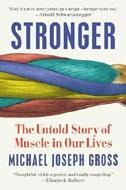
T here’s a good reason to stay strong, and, this book shows, it’s not just to battle the bullies of the world. It’s a pleasing surprise that much of Vanity Fair contributor Gross’ book on muscles should center so closely on ancient Greek and Roman ideas of strength. In part that stems from the fact that one of his principal informants is “probably the only classics professor who is also a record-setting powerlifter” and, on top of that, probably the only classics professor who is also a professor of kinesiology. Charles Stocking benefited from a kind of boot camp run by an older brother, also a classicist, who interested him in the language Homer and other ancient authors use to describe strength, and not always in expected ways; as Gross writes of The Iliad, “When muscle appears on this poem’s bloody battlefield, the material connotes little more than vulnerability—in the gore of dying bodies’ open wounds.” Amid the learned discussions of Greek athletics, in which bodily prowess was put to work in contests that paid homage to the gods, Gross also turns to somewhat more familiar territory: His notes, for example, on how humans lose muscle mass and strength as they age ought to inspire readers of a certain age to get off the couch and hit the barbells: “Conventional wisdom about muscle and aging had been wrong. With effort, older people could make the same
>>> this book. And though it would sound strange to describe the account of something this dark as “good,” Griffin has indeed validated her experience with a well-written and moving book. An important, wholly believable account of how long-buried but profoundly formative experiences finally emerge.


IT’S A COUPLE of days after the U.S. presidential election, and Pico Iyer is contemplating the results from his home in Japan.
“Kamala Harris is actually an Iyer,” he says with a chuckle during a video call, referring to Harris’ original Brahmin middle name, which her parents changed to Devi two weeks after she was born. “She’s part of my clan, so it would have been nice to see a member of my extended family in the White House.”
Raised in England and in Santa Barbara, California, Iyer, who is 67, moved to Japan in 1987 with the hope of becoming a Buddhist monk in the temple city of Kyoto. Instead, he met Hiroko, his wife-to-be, and the couple has lived in nearby Nara ever since. “Soon after I came to Japan,” he says, “I heard this wonderful [saying]…about life being joyful participation in a world of sorrows— the Buddhist feeling that suffering and difficulty and challenge is the essence of real life.”
The election may not have gone the way Iyer wanted—“I’m constantly surprised by events,” he says—but
In his latest book, the peripatetic writer extols the virtues of the contemplative life.
BY JOHN M c MURTRIE
none of life’s obstacles, he maintains, should be “incompatible with wonder and beauty and joy.”
The sentiment echoes words by Albert Camus that Iyer cites in his open-minded and enriching new book, Aflame: Learning From Silence : “The great courage is still to gaze as squarely at the light as at death.” The French philosopher’s “enduring lesson,” Iyer writes, “was that the difficulty—the irrationality—of life need not rob us of our joy.”
A prolific author who is well versed in several genres, from travel writing to essays to fiction, Iyer centers his latest work on a place that has nourished him for decades: the New Camaldoli Hermitage, a small community of Roman Catholic monks in Big Sur, California, that was established in 1958; its deep roots go back to a hermitage founded 1,000 years ago in the Tuscan hamlet of Camaldoli. Kirkus’ starred review calls the book “essential reading for anyone interested in the monastic tradition and those who follow it.”
Iyer first visited the monastery in 1991 on the recommendation of a friend. Initially, he had doubts.
“I grew up in a strong Anglican setting in English boarding schools,” he says. “So, 15 years of chapel every morning, every evening.…I thought, Well, I’ve had a lot of crosses and hymnals already in my life. I don’t need more of that tradition.”
But Iyer quickly shed his preconceptions: “When I drove up there the first time, I noticed the cross, and I noticed the copy of the Bible and noticed the lectern, and within an hour, I didn’t notice [them] at all. I just noticed the silence and the light and the beauty.”
The true gift that the hermitage has offered Iyer is an appreciation of silence in a serene setting—what he describes in the book as “nine hundred acres of live oak, madrona, redwood and desert yucca, a quarter of a mile above the sea.”
In one of the book’s many poetic passages, Iyer writes, “Why am I exultant to find myself in the silence of this Catholic monastery? Maybe because there’s no ‘I’ to get in the way of the exultancy. Only the brightness of the blue above and below. That red-tailed hawk circling, the bees busy in the lavender. It’s as if a lens cap has
come off and once the self is gone, the world can come flooding in, in all its wild immediacy.”
The monastery has only helped Iyer’s writing. “As soon as I step into my little cell, I start wanting to scribble,” he says with an easy smile. “I sit down and write and write and write.…It’s the most creatively stimulating place I’ve ever met, almost to a fault.”
Iyer was also drawn to the monastic order’s longevity. “They’ve dealt with every kind of plague and war and political cataclysm,” he says, “and over 1,000 years, I think they’ve refined a system that is pretty resilient and knows how to deal with changes in the world.”
That includes fire, like the wildfires that occasionally surround the monastery. And the blaze that burned down Iyer’s family house in 1990. A more recent fire forced his mother to be evacuated from her home in Santa Barbara; Iyer also writes touchingly of caring for her after a stroke that led to her death in 2021 at age 90.
Iyer has visited the hermitage more than 100 times in the past 33 years, but one of the reasons he decided to write a book about it now, he says, is that “the world is more divided and despairing than I’ve ever seen it.… Words and ideas are what separate us, but there’s a certain kind of communal silence that speaks for the deepest part of us, where we have much more in common than apart.”
At the hermitage, in the company of 15 or so monks and the fellow guests with whom Iyer shares the silence, worries tend to dissipate: “Such a fresh, unpretentious circle of souls, I think, as I start to chat with the brothers, meal after meal.”
“My homies,” as Iyer affectionately calls the brothers, are “bright, sociable, kind.” He says, “These hermits are the least hermetic people of all, because they’re always looking after other people.” They’re “regular guys,” he adds, “much less full of piety or sanctimony than many people outside the cloister. They’re very down to earth.” One of their rituals is watching Monty Python on Sunday nights in their rec room.
That playfulness was also evident in Leonard Cohen, a close friend who spent time as a monk at the Mount Baldy Zen Center in Southern California. “He would say enlightenment means lightening up,” Iyer says of the late gravel-voiced singer-songwriter. “He was a heavy guy acquainted with suffering, and so for him, his monastic practice was about shedding some of that seriousness and gravitas.”
Iyer dedicates many pages of the book to his friend, whom he calls “a connoisseur of silence.” Cohen, he says, “always had that craving for a simple, uncluttered life.…I was struck at how homemade was the life that he constructed for himself—a little house in a beat-up part of LA where most of the houses had bars on their windows.” As Iyer observes in his book, the true challenge in Zen isn’t to sit still atop a mountain but in the middle of the world.
Iyer’s time in a monastery has inspired him to live modestly, too. In
Nara, he and his wife share a $500-a-month two-room rental apartment in a quiet neighborhood. He tries to spend 15 minutes a day reading something that speaks to “my deepest part—it could be Emily Dickinson or Thoreau.” And he walks a lot. “That’s when I’m liberated from my tiny concerns—a bit.” He owns neither a car nor a cellphone. As he writes, citing the Dominican theologian Meister Eckhart, “The soul evolves not by addition but by subtraction.”
Iyer continues to travel, not wanting to be an ostrich. “I don’t want to feel that I’m ignorant of what’s happening in the world, which is why, when I first started going to the hermitage, I made a point of taking myself to Haiti and Yemen and Bolivia and very difficult places. I thought to see one without the other would be very shortsighted.”
And wherever he goes, he says, he carries the hermitage with him—its calm and clarity and the benevolence of its monks.
There’s a certain kind of communal silence that speaks for the deepest part of us, where we have much more in common than apart.
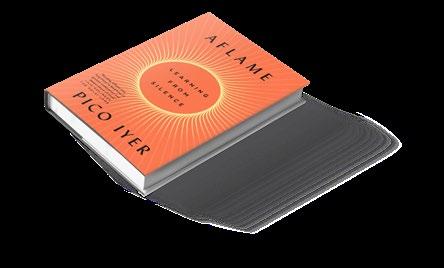
relative gains of strength and muscle as younger people could make.” Interlocutors such as Arnold Schwarzenegger enter the conversation, while Gross surveys all the many reasons that attending to muscles is in our best interests, not least because, according to a study he cites, lifting weights can reduce psychological depression—and who isn’t just a little depressed these days? An engagingly learned look at the human body.
Hajdu, David | Norton (304 pp.)
$32.99 | Feb. 4, 2025 | 9780393540833

A study of the long, uneasy relationship between art and technology. The rise of ChatGPT and other AI-driven creation tools has spiked anxiety about machines cannibalizing, perhaps even overtaking, human creativity. But as longtime music historian Hajdu (Love for Sale: Pop Music in America, 2016, etc.) points out in this lively book, machinery and art have long been closely intertwined. In the late 1800s automata produced music and drawings, and throughout the 20th century devices emerged as experimental novelties and practical helpmates to artists: Bell Labs explored computer-generated drawing in the 1960s, the Moog synthesizer transformed the texture of rock music, and ’80s techno reflected how people “were using machines to produce sounds to stir people to move like components in a machine—a machine of social transformation.” Hajdu doesn’t make a precise distinction between art created entirely by computers and cases in which humans leverage technology to create art—an AI-generated painting that sold for $432,500 at auction in 2018 is not the same thing as, say, the German synth-rock act Kraftwerk. But Hajdu thoughtfully explores how the arrival of
machinery and art is nothing new.
THE UNCANNY MUSE
new technology has prompted handwringing. (Though not always: The Hammond B3 keyboard was warmly embraced by Black soul and gospel acts for its efficient evocation of an organ.)
“The fear of machines taking over for humans is one of the great constants in the history of technology, and it is equally easy to inflate or dismiss,” he writes. A more cohesive thesis about the degree to which concerns are legitimate might offer a path for readers to think about potential and ethical risks of AI and other technologies. But Hajdu is at heart a humanist, and he suggests that the disruptive technologies themselves don’t spell doomsday but are, in themselves, works of art.
Wide-ranging, thought-provoking music history.
Kirkus Star
The Mesopotamian Riddle: An Archaeologist, a Soldier, a Clergyman, and the Race To Decipher the World’s Oldest Writing
Hammer, Joshua | Simon & Schuster (384 pp.)
$29.99 | March 18, 2025 | 9781668015445

T hree self-taught Victorians accomplish one of the most spectacular feats of 19th-century scholarship. Readers who enjoyed the fictional adventures of Indiana Jones might imagine that real-life archeologists aren’t so exciting, but journalist Hammer, author of The Bad-Ass Librarians of Timbuktu, may change their minds. Over centuries, he writes, European travelers, soldiers, and diplomats puttered about ruins, dotting
the deserts and mountains of the Middle East, puzzling at masses of wedgeshaped “cuneiform” script carved into bricks, clay tablets, relics, palace walls, cliffs, and mountainsides. Electrified by the 1820s’ deciphering of Egyptian hieroglyphs, the public clamored to learn what this even older writing revealed. Hammer’s heroes worked their magic from the 1830s to the 1850s. All (unlike Indiana) were amateurs: Austen Henry Layard, a bored law clerk who sought adventure and transformed himself into the world’s most celebrated archeologist; Henry Creswicke Rawlinson, a military officer in the East India Company with a flair for languages; and Edward Hincks, an overworked Irish country parson who never traveled east but became brilliant at translating ancient texts. With a generous cast of supporting characters, Hammer alternates between the crumbling Ottoman Empire’s lawless deserts and mountains, where Layard and Rawlinson unearthed monuments, palaces, and thousands of inscribed artifacts, and Europe, where scholars and enthusiasts (including Hammer’s three subjects) toiled, quarreled, theorized, and cheated to decipher not one but at least a dozen ancient scripts. As a bonus, Hammer delivers a modest but comprehensible primer on cuneiform linguistics. By 1860, to the cheers of an attentive media, the problems were largely solved; Layard and Rawlinson lived long and honored lives; Hincks merely lived long, although he seems to be undergoing long-delayed recognition.
An archeological triumph receives the history it deserves.

For a review of The
Hilburn, Robert | Hachette (544 pp.)
$34.00 | Oct. 22, 2024 | 9780306834691
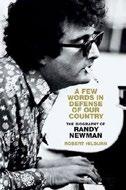
Singing the praises of a great satirist.
Randy Newman is most famous for his perky Toy Story tune “You’ve Got a Friend in Me,” which captures all of his melodic skill but little of his gift for lyrical subtlety. He achieved critical acclaim, and a few moments of pop chart success, years earlier with spikier tunes about sex, bigotry, and greed. Listeners didn’t always get his jokes—“Short People” wasn’t a critique of the height-challenged, and “I Love L.A.” wasn’t a valentine to the city. But he persisted, and former Los Angeles Times pop music critic Hilburn (Paul Simon: The Life, 2018, etc.) dutifully chronicles Newman’s musical story, from his childhood in a storied family (three of his uncles were acclaimed film composers), to songwriting wunderkind (Harry Nilsson recorded a whole album of Newman songs well before he became a star), to his film soundtrack work (for which he’s received 22 Oscar nods, winning twice), and his yearslong effort to mount a musical based on the Faust story. Yet he’s also professed profound insecurity across his career. Hilburn had ample access to Newman, his family, and musical collaborators. But the book mainly chronicles Newman’s work and chart performance, giving his motivations short shrift. How did a well-off Jewish Angeleno understand poor Southerners so well? What gave this insecure man the courage to perpetually provoke, even outrage, his audiences? Divorce and a period of drug addiction are skated over. Though Hilburn describes Newman’s career comprehensively, it doesn’t quite capture a man in full. An ambitious if sometimes shallow exploration of one of pop’s undisputed geniuses.
Hobbs, Jeff | Scribner (336 pp.) $29.99 | Feb. 4, 2025 | 9781668034828
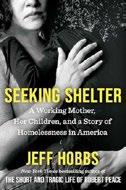
An account of homelessness and precarity as seen through the eyes of a woman and her family.
“Evelyn is really tired of the desert and its people.” Evelyn, a second-generation Salvadoran with a large extended family in the California town of Lancaster, is 29 when we meet her, with five children to take care of and a husband who is steadily descending into joblessness and alcoholism. Evelyn is nothing if not aspirational, and she has her eyes set above all else on living in a place with good schools for her children. The problem, as Hobbs notes, is that for working-class people, living in a place with good schools requires housing far beyond their means. A few aid programs exist, but, Hobbs adds, “the demand and supply within this effective but finite social safety net are increasingly imbalanced, the waiting lists in cities like Los Angeles tens of thousands of names long.” Racism, sexism, and classism complicate poverty—and in Evelyn’s case, so does a failed marriage: when she leaves her husband, taking the children, “they will not have a stable home again for nearly five years.” Hobbs, author of The Short and Tragic Life of Robert Peace, follows Evelyn on a journey that finds her able to earn only enough to afford rent and utilities—or food for her family of six—until finally she finds assistance through a charity called Door of Hope, a door that opens only to a lucky few of what Hobbs estimates to be at least 120,000 unsheltered people in Los Angeles County. One reason, Hobbs notes, is that wellheeled neighbors don’t want group homes or section 8 housing next door, not even in progressive California.
A well-intended work of advocacy journalism that points to the endless obstacles attendant in helping those in need.
Hoffman, Claire | Farrar, Straus and Giroux (384 pp.) | $32.00 March 18, 2025 | 9780374601713

In the gospel business. The charismatic evangelist Aimee Semple McPherson (1890-1944) was a national celebrity as leader of the largest church in America. Largely forgotten since her death, she is revived in journalist Hoffman’s empathetic—and dramatic— account of her life. Raised in a Christian home, the young Aimee claimed to have been infused with the spirit of Jesus when she attended a church of the Holy Rollers in her Canadian hometown. She fell in love with preacher Robert Semple; in 1908, they married, moved to Chicago, and were ordained as pastors, soon traveling abroad as missionaries. By 1910, Robert was dead, and Aimee and their infant daughter returned from Hong Kong to New York, where she and her mother became proselytizers for the Salvation Army. Aimee, though, had bigger ideas: harnessing “the wildness of Pentecostal spirit,” with her mother as a vigilant manager, they drove cross-country to Los Angeles and set up a church in a tent. Preacher, faith healer, and inspiration, Aimee soon amassed thousands of followers whose contributions enabled her to build a megachurch, hire a stage manager to design her spectacles, and rent costumes and scenery from Hollywood studios. Marriage and motherhood (she had a son with her second husband) came second to spreading God’s word. But scandal dogged her: in 1926, she disappeared, turning up in Mexico after a month, claiming to have been kidnapped. When her alleged perpetrators were caught, inconsistencies in her story led to revelations about an affair and fueled accusations of her being a
“fame-hungry huckster.” Lawsuits, bitter family rifts, and money problems marred her last years. Hoffman’s discerning biography is as much a work about faith, self-mythologizing, and ambition as it is, in Hoffman words, “a cautionary tale about fame.” A well-researched portrait of an outsized personality.
Kirkus Star
The Killing Fields of East New York: The First Subprime Mortgage Scandal, a White-Collar Crime Spree, and the Collapse of an American Neighborhood
Horn, Stacy | Gillian Flynn/Zando (320 pp.) $28.00 | Jan. 28, 2025 | 9781638931225

T he hidden story behind one of the toughest neighborhoods in Brooklyn.
The “Killing Fields’’ of the title may sound melodramatic, but it was the longtime nickname of East New York, where redlining and blockbusting fostered white flight and subprime subterfuges cheated residents out of their homes and safety. It’s a badly needed look at a societal problem that goes largely unaddressed while politicians outdo each other with tough-on-crime rhetoric.
Author and journalist Horn sets the stage with the violent death in 1991 of Julia Parker, a 17-year-old girl suspected of talking to the police about the death of a friend. The author jumps back to 1966 to describe the simmering racial tensions fueled by a group called SPONGE (Society for the Prevention of Negroes Getting Everything), described as “the Proud Boys of their day.” Ultimately, Mayor John Lindsay’s office had to reach out to Brooklyn mobsters associated with the Genovese problem to negotiate a temporary truce. Horn guides readers through a subprime Ponzi scheme scandal that predated the Bush-era crisis. Landlords and mortgage banks swindled the community, offering loans for
“The Proud Boys of their day”—and how they hurt a New York neighborhood.
THE KILLING FIELDS OF EAST NEW YORK
substandard housing with minimal background checks. “If the homeowners defaulted, the FHA [Federal Housing Authority] would repay the loan,’’ she writes. Many FHA officials were themselves corrupt, taking payoffs, ultimately resulting in indictments—and convictions—when investigators in the U.S. Attorney’s office caught on to the scam. But Julia Parker, like countless others, was caught in the crossfire. More recently, life in East New York is improving, with fewer food “ghettos” and more community gardens than anywhere else in the city. But Horn provides an invaluable roadmap to how, and why, urban “renewal’’ can go tragically wrong. Solid in-depth reporting with a polemical kick.
Hunt, Lynn | Norton (256 pp.) | $35.00 Feb. 18, 2025 | 9781324079033
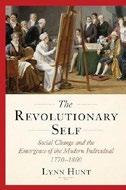
Shining a light on the individual.
UCLA European history professor Hunt explores what she calls a paradox: “the simultaneous discovery that individuals had a capacity for autonomy and that society had the power to sculpt that individuality.” Allied ideas began to form during the Enlightenment, at the end of the 1700s, some of them puzzling: Why, Hunt wonders, was abolitionism so slow to take shape but then so quick to build
into a popular social movement in the decades that followed? Mostly, however, she focuses on subtle transformations in everyday life that helped individuals and individualism emerge: for example, the arrival of the custom of drinking tea, which, unlike the exclusively male world of the coffeehouse, found women at the center of the action as they “presided over tea tables, which became the center of conversation in the household.”
Moreover, such women equipped themselves with things to talk about, as with one “country lady” who collected a fine private library containing the works of Isaac Newton and John Locke. These “silent changes in the status of women” met other changes, not all positive: drinking that tea required sugar, which in those days—back to abolitionism again—called for slave labor. Hunt then turns her attention to the social changes wrought by printers and printmakers in revolutionary France, bringing new ideas to mass audiences, sometimes bewilderingly; as Hunt writes, “ordinary men cannot have found the sudden refashioning of themselves as revolutionary citizens to be easy or stress free.” Taking in subjects ranging from the reform of the French military to the rise of social science, Hunt delivers a work that stands comfortably alongside Natalie Zemon Davis, Emmanuel Ladurie, and other prominent Europeanists.
An engaging work of history that looks to changes in daily life as a key to understanding transformative movements.

Hunting, Mary Anne & Kevin D. Murphy Princeton Univ. (272 pp.) | $65.00 Feb. 18, 2025 | 9780691206691

Women who designed America. In a profusely illustrated volume, architectural historians Hunting and Murphy offer a detailed group portrait of early- to mid-20th-century female architects, many educated at the Cambridge School of Architecture and Landscape Architecture in Massachusetts. Established in 1915 for women’s professional education, the school continued until 1942, when women finally were allowed into Harvard’s architecture department. Although by 1928 at least 27 accredited schools of architecture accepted women, those students often felt unwelcomed by classmates and faculty. The Cambridge School, exceptionally, supported its students’ talents, providing an interdisciplinary perspective and an emphasis on collaboration. Besides benefiting from its pedagogy, students were immersed in the intellectual community of Cambridge, where European Modernism took root early. The school encouraged international connections; in 1935, for example, it sent 14 students on a summer study tour of modern architecture in Western Europe, and many made independent trips to Europe and Mexico. The women were as prepared as possible for a field “fraught with sexism in hiring practices, promotions, titles, assignments, salaries, and construction-site supervision.” As challenging as the field was, many attained positions through school connections; others established partnerships with one another, their husbands, or architects who emigrated from Europe. Excluded from all-male architectural societies, they forged their own social and professional networks. Besides designing houses throughout the country, the women, with an interest in fostering community, became involved in urban
and suburban planning. Many extended their artistic talents to designing furniture, toys, jewelry, textiles—and even shoes, such as architect Alice Morgan Carson’s stunning pair of needlepoint heels that she likened to the art deco Chrysler Building. Although the authors found uneven archival sources, they have succeeded in reviving the work of scores of impressive women. A well-populated, deeply researched history.
Johnson, Benjamin Heber | Yale Univ. (392 pp.)
$35.00 | Feb. 25, 2025 |
9780300226720
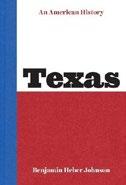
A timely state history that sheds light on today’s national political and cultural landscapes. Johnson, professor of history at Loyola University Chicago, establishes his bona fides early as someone who “grew up in Texas.” Johnson’s previous work on the Mexico-Texas borderlands, including Revolution in Texas: How a Forgotten Rebellion and Its Bloody Suppression Turned Mexicans Into Americans (2003), is apparent in the geographic and chronological range of the book as well as in its inclusivity. As Johnson explains, “This book tries to be a history of all Texans, not just descendants of white southerners like me.” The author distills information from previous Texas histories, including Stephen Harrigan’s Big Wonderful Thing (2019) and more specific studies to create a readable, quick-moving narrative. Occasionally, he skims over important context, like the Mexican-American War, which receives a brief treatment and is never identified by name. Nevertheless, Johnson successfully highlights lesser-known people and details, like the presence of a 10,000-square-foot pavilion dedicated to the culture, lives, and achievements of Black Texans at the 1936 Texas Centennial Central Exposition and the fact that today’s Christian-infused state politics
were preceded by many late-19th-century Texas Christians who argued vociferously for the strict separation of church and state. Johnson also adds nuance to the oft-told stories of the Texas Revolution and its heroes, like Sam Houston, who opposed secession (though he was a slaveowner) and was relieved of his gubernatorial duties when he refused to take an oath of allegiance to the Confederacy on the eve of the Civil War. Johnson persuasively argues that understanding the history of Texas, a state full of contradictions and surprises, is essential for understanding the “history of the United States.” A compelling account of a complicated, conflicted, and cantankerous state.
Jones, Sarah | Avid Reader Press (304 pp.) $30.00 | Feb. 18, 2025 | 9781982197421
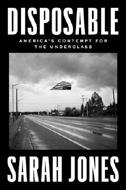
A n indignant cri de coeur against the practice of contemporary capitalism to make people, yes, disposable. It is a crime against humanity, born of contempt indeed, that so many Americans—members of ethnic minorities, immigrants, the elderly and disabled—live lives in which it is “normal” to suffer privation. “In America,” asserts New York magazine writer Jones, “normal for millions can mean fear and hunger and, sometimes, death.” All that came true with the arrival of the Covid-19 epidemic on the watch of a “slumlord president” whose brief it was, by her account, to protect the interests of the ruling class. The pandemic, Jones holds, was a prime example of what Friedrich Engels called “social murder.” One victim was her grandfather, who transitioned from working-class life to “the mercy of whatever rehabilitation center that he and our family could afford,” there being scarcely any safety net for such people in a society based on the fundamental belief
that rich and poor enjoy those conditions because somehow they deserve them. “My grandfather died because a virus killed him, but other hands helped him toward his demise,” Jones holds. Others she profiles are among the “essential workers,” who are disproportionately members of ethnic minorities and whose low rate of pay all too often condemns them to poor, overcrowded housing conditions that are perfect vectors for a pandemic. Jones examines ways in which the excesses of predatory capitalism can be contained, from reparations to the reconstitution of labor unions, higher wages, and other protections. The pandemic laid bare the casual cruelty and inequity of a system that, for most people, means “there is work, and then death.” Undoing that system, Jones insists, will require a radical solution: “Excise an inhuman political economy from the national body, and replace it with something else, something we haven’t yet tried.”
A powerful, heartfelt argument for a more humane economics.
Koerner, Joseph Leo | Princeton Univ. (400 pp.) $37.00 | Feb. 4, 2025 | 9780691267210

Art as dissent. In this lavishly illustrated, wide-ranging book, Koerner, an esteemed art historian, turns his attention to three artists and three works organized as a triptych: the premodern Hieronymus Bosch’s Garden of Delights (1500), Max Beckmann’s Self-Portrait in Tuxedo (1927), and William Kentridge’s Art in a State of Siege (1986). Koerner explores them in light of Kentridge’s title, all in “states of temporal exception.” In a siege, Koerner writes, “life becomes bare survival.” He discusses in great depth others who have delved into what Bosch’s well-traveled painting means—a “spectacle of lawless, godless, rebellious carnality punished without trial”—and the history surrounding it,
including starting a war. “Siege is the occasion, theme, and aesthetic ground of Bosch’s art.” Beckman’s work is an “iconic” Expressionist piece, emblematic of the Weimer Republic, when Germany “stumbled from crisis to crisis in a perpetual state of exception.”
Beckman’s self-portrait, Koerner feels, reveals “Beckman as the artist of the state.” In 1986-88, the South African artist Kentridge produced three silkscreen prints titled Art in State of Grace, Hope, Siege, when his country was in turmoil, its laws suspended. Inspired by Costa-Gavras’ film State of Siege, he had coined the term “Art in a State of Siege” for a public talk. Under siege conditions, art offers in numerous ways a form of dissent. Throughout, Koerner discusses many of these artists’ other works. It takes a while to settle into Koerner’s prose and dense detours into ancillary topics, but once acclimated, it’s an engrossing ride. A challenging but rewarding read.
Kirkus Star
Kureishi, Hanif | Ecco/HarperCollins (336 pp.)
$28.00 | Feb. 4, 2025 | 9780063360501
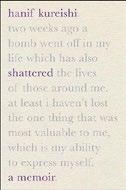
After the fall.
In 2022, Kureishi, then 68, collapsed at his partner’s apartment in Italy, partially breaking his neck and suffering spinal nerve damage and resulting tetraplegia, a near-complete paralysis of his hands, arms, and legs. Dictating verbal diary entries to his partner, Isabella, from his hospital bed
in Italy, then in West London, the celebrated British Pakistani playwright (My Beautiful Laundrette, The Buddha of Suburbia) details his struggle to heal and thrive despite immense pain, frustration, and a missing sense of time, as well as the toll this crushing ordeal would have on his relationship with Isabella: “We will have to find a new way of loving each other,” he admits. Enhancing these provocative entries are the author’s ruminations and pointed perspectives on his life, career, family, childhood, sex, Isabella (whom he proposes to while incapacitated), and his friendship with Salman Rushdie, “one of the bravest men I know.” He also considers the fascist nature of Italian government and how it affects the precarious lives of young queer and nonbinary individuals. Psychologically processing his life-altering condition is one thing, but Kureishi must also contend with his arduous, agonizing, and helpless physical condition and the ensuing rehabilitation suddenly thrust upon him. Yet despite feeling “battered and broken,” the ever-resilient author manages to inject levity and revelatory catharsis into his daunting “new reality.” He contemplates how becoming paralyzed affords him the opportunity to meet and empathize with new people, and he ponders the possibilities of somehow achieving some type of modified sexual pleasure again. The memoir is also cautionary for readers who mistakenly believe they are blessed with hardship immunity: “There isn’t a family on the planet that will evade catastrophe or disaster.” Kureishi harrowingly reminds us that it takes just one fall to upend an entire lifetime, forever.
Refashioning his life after an accident— with grace, dignity, and black humor.
He collapsed, and then he had to face a “new reality.”
SHATTERED
Lam, Barry | Norton (176 pp.) | $24.00 Feb. 11, 2025 | 9781324051244

A philosopher defends the place of discretion— read, bending the rules—in a legalistic world.
“What do you do with a boy caught stealing food to feed his hungry family?” So asks Lam provocatively, answering with an anecdote: A police officer is called to arrest a young shoplifter trying to feed his little brother with pilfered peanut butter, bread, and milk. The officer was no Inspector Javert. Instead, he suggested that the shopkeeper put the kid to work cleaning the parking lot until the food was paid for—a Solomonic solution that flies in the face of a legal culture that increasingly demands invariable sentencing. Discretion, as Lam observes, can often thwart or lessen crime, while mandatory-arrest policies yield unintended consequences, among them a far higher death toll among women who are victims of domestic violence. This may seem counterintuitive, but Lam’s point is that while rules are essential, “if the rules are good, the quality of the enforcer never matters.” All too often the rules are not good, or at any rate not good enough to cover every circumstance, whence leeway is called for: “Interpretive discretion exists because laws sometimes set vague standards.” This interpretive discretion makes room for prosecutors to plea bargain and judges to offer inventive alternatives to cookie-cutter punishments. Still, Lam adds, discretion needs to be attached to laws that have strong “guidance value” so that laws are not applied with “arbitrary and discriminatory enforcement,” as they so often are in, say, cases where the defendant is Black and not white. Legalism isn’t a failed system, Lam adds, but the laws must be good, for if they aren’t, “bad laws followed blindly and enforced unquestioningly have just as much chance to destroy
good governance as the mediocre leader making mediocre decisions.” A convincing case for rethinking inflexibility in rulemaking in favor of discretionary checks and balances.
Lévy, Bernard-Henri | Wicked Son (176 pp.) $18.99 paper | Sept. 10, 2024 | 9798888457832

The eminent French philosopher and journalist champions Israel at a time when that nation is increasingly isolated. Only one option remains to Israel in its war against Hamas and Hezbollah, and by extension Iran, writes Lévy: “That option is to win.” Known to his French compatriots as BHL, Lévy holds that winning must almost certainly come in the form of military action, putting victory squarely in the hands of the Israeli Defense Forces “while taking every possible precaution to minimize civilian casualties.” While Lévy argues that the IDF has taken those precautions, the devastation of Gaza notwithstanding, he does acknowledge exceptions, as with the killing of workers for the World Central Kitchen—a “mistake,” he asserts, that should be adjudicated. As for the precipitating Event—Lévy capitalizes it in the sense of a black swan event that can be guessed at but never accurately forecast—he is unwavering: The death of children is unforgivable, he urges, and on Oct. 7, 2023, “Hamas made no distinction between adults and children,” deliberately attacking civilians and kidnapping and killing minors. Lévy adds, with evident contempt for the defenders of Hamas on the world’s campuses and social media platforms, “I need no lessons on this subject from those who did not weep with me over the children gassed by Bashar al-Assad in Damascus, the children drowned off the coast of Lampedusa in their open migrant boats, the children bled white in Yemen, Nigeria, or Mogadishu.” That may not be a winning formula for
changing minds, but the larger point of Lévy’s essay is that Israel stands alone because of both antisemitism and the tyranny of public opinion, with too many people forgetting that Palestine’s leaders “thought only of annihilating” those on the other side of the wall. Controversial, as Lévy is wont to be, but nuanced, and an argument worth hearing out.
McKinney, Kelsey | Grand Central Publishing (288 pp.) | $30.00
Feb. 11, 2025 | 9781538757406

How gossip shapes our stories and selves. McKinney, reporter, novelist, and host of the Normal Gossip podcast, examines the fundamental role of gossip in human connection. As she observes, “We gossip and we tell stories because that is how we each make sense of the world, with ourselves at the center reaching outward trying to connect with others, to prove to ourselves that we are real, that if anything is true, it is us.” She takes an ambitious journey through the landscape of human storytelling, and her exploration spans multiple domains: religious history (“Gossip and religion are braided together in our history as a species, so it makes sense that our belief systems have created rules around how we gossip and when. Maybe that is why the two—gossip and Christianity—are so intertwined for me”), ancient literature, and contemporary culture. Drawing from The Epic of Gilgamesh, she illustrates how even humanity’s oldest known written story revolves around intimate conversations and shared secrets between its heroes, demonstrating gossip’s timeless role in storytelling. She references literary giants like Jane Austen, Kurt Vonnegut, and Rachel Cusk alongside commentary on reality TV phenomena such as The Real Housewives and The Bachelor franchises,
while also examining celebrity narratives like Britney Spears’ public story. Personal experience enriches McKinney’s perspective, particularly her account of losing hearing in one ear and how this physical limitation has shaped her relationship to information and rumor. While McKinney provides meticulous research and offers some genuine insights in her attempt to elevate gossip to a worthy subject of study, the book’s expansive scope ultimately works against it. What might have been a sharp, incisive essay feels diluted when stretched to book length. The result is a work that, despite some intriguing observations, would have landed with more impact in a more condensed format.
A perceptive, earnestly documented, yet unnecessarily sprawling exploration of gossip.
Ellesmere Wolves: Behavior and Ecology in the High Arctic
Mech, L. David, Morgan Anderson & H. Dean Cluff | Univ. of Chicago (208 pp.) | $32.00 paper | Feb. 10, 2025 | 9780226833729

T he pack, up close. Ellesmere Island, the second-closest landmass to the North Pole, is home to some of the world’s most intriguing species. The wild, snow-white Arctic wolves residing there have captivated renowned wolf researcher L. David Mech for 25 years, and they sustain the reader’s attention as well. Generally speaking, wolves are difficult for researchers to study up close, largely due to their well-deserved fear of humans who have hunted them for centuries. Mech himself had mostly observed wolves from helicopters prior to his time on Ellesmere, stating, “I increasingly realized how truly unique this opportunity was for learning about wolves in a way that my previous decades of study had never come close to….I was now gaining the kind of personal knowledge of these wild
creatures that one absorbs about their pets by simply living with them.” What makes the wolves on Ellesmere so special is their unfamiliarity with and lack of fear of humans, which allows for intimate, up-close interactions. Mech’s account follows his decades of study, as he observes the wolves through summer after summer, witnessing changes in their environment and behavior. His groundbreaking work paved the way for other researchers and documentarians, as he became a steward to these wolves and their trusting nature. The book is sprinkled with delightful photos of pups, yearlings, and adult wolves, along with anecdotes and heartwarming moments that make it a joy to read. Deeply moving and richly described, the book makes it clear that one does not need to be a scientist to find these wolves fascinating. A mesmerizing account of wolves and the researcher who devoted his life to understanding their world.
Star
Miller, John W. | Avid Reader Press (368 pp.)
$30.00 | March 4, 2025 | 9781668030929
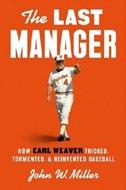
Showman, scrapper, innovator, champion—this baseball manager did it all. His teams won 58 percent of their games and played in four World Series, taking the
title in 1970, but Earl Weaver, who managed the Baltimore Orioles from 1968 to 1982 and 1985 to 1986, might be best known for his frenzied arguments with umpires, clips of which are easy to find and hilarious. As vividly recounted by Miller, when the 5-foot-7 Weaver was angry about a call, he’d scream at the offending ump and maybe “beak” him in the chest with the bill of his cap. He’d kick dirt onto home plate and once tore up a rulebook on the field. He was “a drawing card with stage charisma” in an era when Major League Baseball “managers were American royalty and powerful operators within the game.” Simultaneously, Weaver modernized the sport, forgoing by-the-book tactics like the sacrifice bunt, consulting data when choosing his lineups, and pioneering the use of radar guns to track pitch speeds. Miller makes no apologies for his subject’s flaws, reporting that the heavy-drinking manager passed out in public places and, according to an Orioles executive, ruined one young player’s career for arbitrary reasons. The journalist and first-time author builds an evocative backdrop for his account of Weaver’s rise. When Weaver played in the minors, he went “picking the lettuce”— collecting dollar bills fans passed through ballpark fences. Later, in the heyday of sporting nicknames, long-suffering umps dubbed him Son of Sam and Ayatollah; he was “Le Hérisson, or the Hedgehog” in Canada’s French-language press. That his detractors bothered to mock him only bolsters Miller’s argument. Unlike many of today’s relatively mild, predictable managers, Weaver was a crowd-pleasing ham and a rule-flouting trailblazer. An illuminating, entertaining biography of a mercurial tactician who changed the national pastime.
Afraid of humans? Not these wild, snow-white wolves.
THE ELLESMERE WOLVES
O’Neill, Lindsay | Univ. of Pennsylvania (224 pp.) $39.95 | Feb. 13, 2025 | 9781512827200

A little-known story that exposes the complexities and contradictions of British colonialism during the early 18th century.
O’Neill, a University of Southern California historian, excavates the story of two East African princes who boarded a British ship with the intention of traveling to London, only to be sold into slavery in Jamaica. After years of enslavement, the princes persuaded a lawyer to help them regain their freedom, setting up the next stage of their journey to London and then, finally, back home to Mpfumo, in present-day Mozambique. As O’Neill follows the two men, she shines a light on the lesser-known British slave trade in East Africa and Madagascar and the troubling, naïve, and conflicting interests of the British East India Company, Royal African Company, and Society for Promoting Christian Knowledge. O’Neill’s thoughtful and extensive research is apparent, but information about the princes themselves is limited by the sparse and problematic archival record. O’Neill, acutely aware of the bias implicit in the extant European sources, seeks to reclaim the princes’ agency by questioning her sources and using speculation to “recreate [the princes’] reactions to certain events.” This approach is generally effective but falters when O’Neill speculates about the reasons that one of the princes took his own life before returning home to Mpfumo. Throughout, O’Neill relies on historical context to stand in for the missing details of the princes’ lives. Readers will better understand the complex moral, racial, and trade networks the princes traversed, but much about the princes
themselves—even their given names— remains obscured.
An intriguing subject presented with more historical context than biographical detail.
Piketty, Thomas & Michael Sandel Polity (120 pp.) | $15.00
Jan. 21, 2025 | 9781509565504

Noted political economist meets noted political philosopher in this discussion of inequality and its cures. First, the good news from French political economist Piketty: Inequality is at lower levels than it was a century ago in most places. That, he hastens to add, “is less true in the US, but even in the US it is true as compared to 100 years ago.” In conversation with Sandel at the Paris School of Economics in May 2024, Piketty does most of the talking, though Sandel certainly holds his own. That conversation could not be more timely, for in it the two diagnose what led to the outcome of the 2024 presidential election: Obama’s bailout of the banks in the 2008 crash “dashed the high hopes for a revival of progressive or social democratic politics that his candidacy had inspired,” while formerly Democratic strongholds that went over to Donald Trump in 2016 did so as a measurable reaction to loss of jobs to China. The alienation of the working class remains firm. Says Piketty, “You cannot just blame the right-wing populists, blame their ‘deplorable’ voters, their deplorable leaders”: no, he holds, the Democrats abandoned their core in favor of urban elites, and the winning argument is about jobs, not identitarian politics. Sandel and Piketty kick around some interesting leveling mechanisms, including the thought that elite universities should admit top-level students into a pool from which, say, two thousand entries enter any given school by lottery, eliminating at least some
Plunkett, Adam | Farrar, Straus and Giroux (512 pp.) | $35.00 Feb. 18, 2025 | 9780374282080
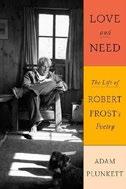
A capacious exploration of Frost’s complicated life and poetry. Plunkett’s first book begins with a discussion of Frost’s interest in having Lawrance Thompson, a young acquaintance who knew the popular poet’s work well, write his official biography, which he would do, in prize-winning volumes, portraying Frost (1874-1963) as an “ornery, erratic old man.” Plunkett then begins his own insightful, non-ornery biography. Long associated with rural New England, Frost was born in San Francisco, where, Plunkett writes, the boy “enjoyed keeping hens in his parents’ yard.” The family moved to the mill town of Lawrence, Massachusetts, in 1884 after his father died. In 1894, Frost published his first poem, “My Butterfly,” oozing Shelley-esque imitations. Plunkett describes the burgeoning poet as “acutely conscious of his strange interiority, varieties of solitary and halfway-dreamed experience.” Later that year, Plunkett argues, Frost wrote his “first truly original poem”—“Flower-Gathering”—for Elinor, his wife. After moving to a farm in New Hampshire, he wrote “Mowing.” The sonnet’s “talk-song” style had a major impact on his poetic voice thereafter. Plunkett
>>> built-in inequalities. Sandel goes on to note that while only some 38% of Americans have four-year college degrees, almost no one in Congress lacks one, meaning the working class is essentially unrepresented politically. They have a fix, and it’s both surprising, intriguing, and worth trying. A conversation between two very smart people, well worth listening in on.
Barbra Streisand and Jimmy Carter are among this year’s nominees.
Five audiobooks have been nominated for the Grammy Award for best audio book, narration and storytelling recording. Barbra Streisand received her 47th Grammy nomination for narrating

For more audiobook recommendations, visit Kirkus online.
the audiobook version of her memoir, My Name Is Barbra. The audiobook, which features a cameo by talk show host Stephen Colbert, is 48 hours long.
Former President Jimmy Carter, who is in hospice care and recently turned 100, scored his 10th Grammy nomination for Last Sundays in Plains: A Centennial Celebration. Carter won the award three times before, for Our Endangered Values, A Full Life, and Faith.
Dolly Parton, who has been nominated for more than 50 Grammys, added another nod for her narration of Behind the Seams: My Life in Rhinestones, the book she co-wrote
with Holly George-Warren and Rebecca Seaver.
Another music legend, George Clinton, earned a nomination for his Audible original, …And Your Ass Will Follow, while Guy Oldfield was nominated as the producer of All You Need Is Love: The Beatles in Their Own Words, the audiobook version of Peter Brown and Steven Gaines’ book.
The Grammy Award for best audio book, narration, and
storytelling recording was established in 1959 under the name best performance, documentary or spoken word. Past winners include Ken Burns for The Civil War, Christopher Reeve for Still Me, and Viola Davis for Finding Me
The winners of the Grammy Awards will be announced at a ceremony on Feb. 2.—M.S.

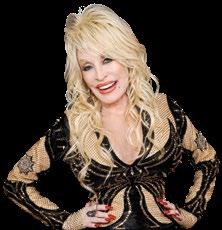
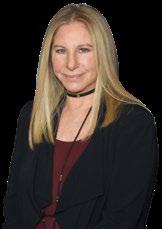



EDITORS’ PICKS:
All the Ways To Go by Jessie Janowitz (Sourcebooks Young Readers)
Stella & Marigold by Annie Barrows, illus. by Sophie Blackall (Chronicle Books)
Linguaphile: A Life of Language Love by Julie Sedivy (Farrar, Straus and Giroux)
The Mighty Red by Louise Erdrich (Harper/HarperCollins)
THANKS TO OUR SPONSORS:
Marvelous Jackson by Laura Anne Bird
Doreen by Doreen by Jo Ferrone
Fully Booked is produced by Cabel Adkins Audio and Megan Labrise.

To listen to the episode, visit Kirkus
Celebrating the life and legacy of New Yorker editor Katharine S. White. BY MEGAN LABRISE
On this episode of Fully Booked, Amy Reading joins us to discuss The World She Edited: Katharine S. White at The New Yorker (Mariner Books, Sept. 3), a sophisticated biography of an influential editor who helped mold a fledgling humor magazine into a cultural juggernaut. In a starred review, Kirkus calls The World She Edited “an entertaining and expansive study of a pioneering literary editor and the era that shaped her legendary tenure.”
Reading, a writer of narrative history and biography, is the author of The Mark Inside: A Perfect Swindle, a Cunning Revenge, and a Small History of the Big Con (2012). She holds a Ph.D. in American Studies from Yale University and has received fellowships from the National Endowment of the Humanities and the New York Public Library. She lives in upstate New York with her husband and two children.
Here’s a bit more from our starred review of The World She Edited: “ In this captivating new biography, Reading, author of The Mark Inside, finally shines a well-deserved spotlight on White’s remarkable career, portraying her as a modern woman whose early feminist roots traced to her college years at Bryn Mawr. White’s keen instinct for talent, discovery of several women writers and others at the start of their careers (Kay Boyle, Janet Flanner, and Elizabeth Bishop, among others), and profound understanding of the marketplace and educated women’s evolving roles distinguished the magazine for decades.…White’s personal life was equally fascinating and progressive, as revealed through Reading’s nuanced, discerning portrait of the disintegration of her 14-year marriage to Ernest Angell (parent to esteemed New Yorker writer Roger Angell) and the ludicrous hurdles to divorce she confronted. Her subsequent marriage to E.B. White, one of her staff writers and seven years her junior, would endure for the next 48 years, and Reading’s portrayal of E.B. is additionally compelling.”



The World She Edited: Katherine S. White at The New Yorker Reading, Amy Mariner Books | 576 pp. | $25.00 Sept. 3, 2024 | 9781328595911
Reading tells me why she chose to foreground the author-editor relationship in writing about White’s life. We discuss several of the writers with whom White worked closely, including Frances Gray Patton, Jean Stafford, and E.B. White; and how White mentored, praised, and often introduced these writers to one another. We talk about why people don’t know more about White’s life; the word formidable, as applied to White throughout her career; and what her youth was like. Reading notes that almost every source for the biography came annotated by White, a prodigious record-keeper. We ponder what White might make of magazine journalism in the modern era, and Reading talks about the special connection she forged with Roger Angell while working on the book. We close by considering whether editing is an art form and what White might have said on the matter.
Then editors Laura Simeon, Mahnaz Dar, John McMurtrie, and Laurie Muchnick share their top picks in books for the week.

The actor will tell the story of his life in the closet and coming out in It Rhymes With Takei.
In a new graphic memoir, George Takei will tell the story of his life as a closeted gay man who came out at the age of 68.
Top Shelf Productions will publish It Rhymes With Takei, co-written with Steven Scott and

Justin Eisinger, illustrated by Harmony Becker with color by José Villarrubia, this spring. In the book, the press says, Takei “presents a charismatic and candid witness to how far America has come…and how precious that progress is.”
Takei was born in Los Angeles and, as a child, was incarcerated in a camp for Japanese Americans during World War II, an experience recounted in the 2019 graphic memoir, They Called Us Enemy, also co-written with Scott and Eisinger and illustrated by Becker.
He rose to fame with his role as Sulu in the TV series Star Trek and its affiliated films, and he went on to appear in movies including Oblivion, Mulan, and Larry Crowne Takei came out as gay in 2005 and has become one of the most recognizable LGBTQ+ activists in the nation.
Top Shelf says Takei’s memoir combines “historical context with intimate subjectivity” and “shows how the personal and the political have always been intertwined.”
It Rhymes With Takei is scheduled for publication on June 17.—M.S.


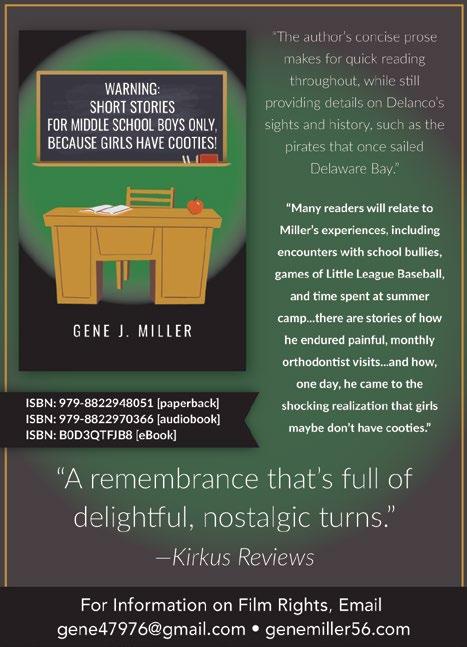



Apple and A24 are developing the adaptation of Michael Lewis’ book.
Lena Dunham will adapt Michael Lewis’ Going Infinite: The Rise and Fall of a New Tycoon as a film, Variety reports. Lewis’ book, published in 2023 by W.W. Norton, is the nonfiction account of Sam Bankman-Fried, the founder of the cryptocurrency exchange FTX. Bankman-Fried was a celebrated billionaire before the collapse of FTX, which resulted in his conviction on federal charges of money laundering and fraud. In March 2024, he was sentenced to 25 years in prison.
A critic for Kirkus wrote of the book, “Not Lewis’ best work, but an intriguing portrait with a useful takeaway: Don’t invest in crypto.”

For a
of
The film adaptation is being developed and produced by Apple Studios and A24. Dunham, best known for creating and starring in the HBO series Girls, will write the screenplay. Her previous writing credits include the films Tiny Furniture, Sharp Stick, and Catherine Called Birdy, an adaptation of Karen Cushman’s 1994 novel. She is also the author of a memoir, Not That Kind of Girl: A Young Woman Tells You What She’s “Learned. ” Lewis’ books have been adapted for the screen before. The film versions of Moneyball: The Art of Winning an Unfair Game; The Blind Side: Evolution of a Game; and The Big Short: Inside the Doomsday Machine were all box office hits and Oscar nominees.—M.S.
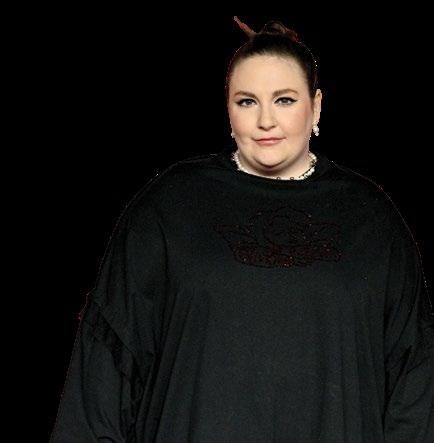
Lena Dunham
In 1994 the world
“was on its way to being measles-free.” Not anymore.
BOOSTER SHOTS
carefully goes through Frost’s first published collection, A Boy’s Will, his “spiritual autobiography,” revealing other poets’ influence on Frost’s work. In 1914, in England, Frost composed “The Road Not Taken”—“arguably the most famous poem in all of American literature.” While there, he published North of Boston, became good friends with fellow poet Edward Thomas, and briefly came under the spell of Ezra Pound. After North of Boston was published in America, Frost’s reputation grew—reviews, readings, lectures, fellowships, all yielding much-needed income. Teaching at Dartmouth College in the 1940s, he wrote a number of poems “that were good of their kind but his best work in prose.” Unfortunately, his personal life was a bit of a mess. In 1959 the poet wrote to Thompson that “one or other of us will fathom me sooner or later.” Plunkett has, now—warts and all.
A superb biography that neatly weaves in nuanced and insightful readings of many poems.
Ratner, Adam | Avery (288 pp.) | $30.00 Feb. 11, 2025 | 9780593330869

A pediatrician examines the rise of once-contained and nearly extirpated diseases, especially measles. Thanks to widespread vaccination programs in the 1950s and 1960s, writes Ratner, diseases such as rotavirus and strep largely
disappeared, so much so that pediatric residents often “go through years of training without ever seeing a child with either of these infections.” Just so, polio had almost disappeared until recently. This describes the situation in the developed, wealthy world, Ratner hastens to add: There is a strong differential in childhood diseases between rich and poor communities, and this should not be so. “Every single child diagnosed with measles anywhere in the world represents a system failure—an inexcusable unforced error,” he urges. That system failure has to do with money: Ratner examines the disease patterns in rich and poor neighborhoods in Texarkana, where “living on the wrong side of State Line Avenue can be hazardous to your health.” Money is one issue, and so is the anti-vaccine movement, which fearfully depicts vaccinations as instruments of government control. The result: Whereas in 1994 the world “was on its way to being measles-free,” we see frequent outbreaks in the U.S. alone, particularly in schools. Much of the anti-vaccine, anti-masking, anti-lockdown mentality draws on misinformation and disinformation, Ratner holds, to say nothing of activists such as Robert F. Kennedy Jr., who has been in the habit of “ghoulishly spreading unfounded anti-vaccine messages in an attempt to ensure that no tragedy would go to waste.” Noting that “the time to secure furniture to the wall is before a child starts pulling up on it,” Ratner closes by arguing that good science-based education should be put to work to supplant bad information and bad intentions—which, sadly, would seem to be wishful thinking. An intriguing look at the costs to children’s health wrought by bad information and poor parenting.
Sacco, Joe | Fantagraphics Books (32 pp.) $12.99 paper | Dec. 17, 2024 | 9798875000904

Voicing his anger over the Mideast. Sacco uses words and illustrations to document stories: He’s a self-described comics journalist. He has combined both forms to great effect in numerous works of graphic nonfiction, including Palestine and Safe Area Goražde, that tell of overseas conflicts. One monumental wordless work, The Great War, depicts the first day of the 1916 Battle of the Somme. Sacco returns to the subject of the Mideast in his latest book, a slim overview of Israel’s recent invasion of Gaza. The urgency of the project is evident in a short introduction in which he writes of beginning it after a friend in Gaza pleaded with him to “plz raise the voice up against these crimes.” Sacco’s answer: “So here, my friend, for whatever it’s worth, I ‘raise the voice up.’” That he does. The book is an impassioned polemic against Israel’s devastating response to the raid of Oct. 7, 2023, in which more than 1,200 Israelis were slaughtered by Hamas fighters. “The scale of the deaths of Israeli civilians left me horrified,” Sacco writes. So, too, did Israel’s retaliation, which has killed tens of thousands of people. “I was only theoretically prepared for the worst,” he continues. “The reality of the assault on Gaza…was almost beyond my comprehension.” Unlike Sacco’s earlier works that feature on-the-ground reporting—the testimony of ordinary citizens imbuing the pages with power—this book is more of a visual op-ed, his scathing critique of the U.S. and Israel accompanied by caricatures of President Biden and Prime Minister Benjamin Netanyahu and biblical-style language: “The way was greased for the Righteous Rampage that smote the People of Darkness.” Elsewhere, he writes, “America had just invented Kinder, Gentler Genocide. The patent is pending.”
A biting commentary that suffers from heavy-handedness.
Kirkus Star
Savage, Jon | Liveright/Norton (768 pp.)
$35.00 | Feb. 4, 2025 | 9781324096108

Songs of freedom. When Little Richard’s “Tutti Frutti” landed in November 1955, homosexuality was a crime in Britain, and gay bars in the U.S. were routinely violently raided by the police. Politicians and major media in both countries referred to people we now call LGBTQ+ as “morally repugnant”— or worse. “Experts” attributed queerness to mental illness that could be “cured.” But as the openly gay American rocker Jobriath (1946–1983) sang in 1973’s “Rock of Ages,” his ode to gay liberation through rock ’n’ roll, “A Little Richard goes a long long way.” Savage, a deeply knowledgeable British music journalist whose subjects have included the Sex Pistols, Joy Division, and teenage culture, tells this enthralling story by focusing on five moments between 1955 and 1979, when gay culture and popular youth culture, in tandem, took quantum leaps into public consciousness, along with the civil rights and women’s rights movements. Savage zooms in and out, from close-ups on artists who pushed the limits of queer art’s popularity in the world at large, to views of the effects they had on British and American societies. His encyclopedic scope ranges from the famous—James Dean, Andy Warhol, the Kinks, David Bowie, Bette Midler, Sylvester—to the less known but no less consequential contributors. This is a longtime project of Savage’s. “As I engaged with performers, fans and other writers during the early 1980s and beyond,” he writes, “I realised that the topic…wasn’t just about freedom for gay people; it was about freedom for all.” A keenly intelligent, comprehensive survey of some of the bravest artists in history.
Selinger, Hannah | Little, Brown (304 pp.)
$29.00 | March 25, 2025 | 9780316570770

A survivor of top-end restaurant work tells all. Call it trauma therapy mixed with a few recipes: Selinger plainly states at the start that the kitchens where she’s logged time, not least of them the vaunted Momofuku, did great psychic damage to her, “and moreover, how pervasive trauma can be when it is not taken seriously.” Albeit somewhat less so than in a generation past, as survivors of that earlier era can attest, the culture of the high-end restaurant scene was the domain of celebrity chefs with massive egos and, in the case of a couple (she’s looking at you, David Chang), the ability to throw monstrous tantrums intended to cow employees: “At Momofuku,” Selinger writes, “toxicity was bred into the brand. There was an inhumanity to the work, but that was entirely the point: you were supposed to feel dispossessed of your humanness.” In that, it’s much like the Marines, but the Marines are less tolerant of sexual harassment, and Marines don’t have to serve imperious clients who demand special attention and then leave skinflint tips on huge bills. (She’s looking at you, Gwyneth Paltrow.) Much of the trauma that Selinger endures comes from the machinations of co-workers or the thoughtless class warfare of the moneyed clientele, but some was self-inflicted, as when she recounts a very bad decision about how to bury a colleague’s pilferage. It’s probably no consolation that some of the once de rigueur bad behavior on the part of celebrity chefs and owners is no longer permitted—witness Mario Batali—since Selinger is no longer part of the scene. “It has now been a decade since my final year in restaurants,” she allows, which leaves the book with an exercise-insettling-scores aftertaste.
It’s not Bourdain, but sensitive readers pondering a kitchen career might rethink it after reading this memoir.
Shenon, Philip | Knopf (608 pp.) | $35.00 Feb. 11, 2025 | 9781101946411

Highly critical assessment of the modern papacy. Journalist Shenon provides a detailed, well-researched, and quite frankly epic examination of the Roman Catholic popes of living memory. Beginning with a brief treatment of Pius XII, who led the church through World War II and the early Cold War, Shenon recounts each succeeding pope up to today’s Francis. His assessments are honest and, at times, brutal. Aside from John XXIII, who called together the Second Vatican Council, the author finds many reasons for fault among these spiritual leaders. Even Pope Francis, with whom the author seems to agree on most topics, is portrayed as highly lacking in the courage, will, and ability to reform the church. Speaking of Francis, he notes: “His greatest failure, like that of John Paul II and Benedict XVI, was his refusal to grapple with the clerical sexual abuse crisis.” Indeed, the sexual abuse scandal acts as a prime focus of criticism through much of Shenon’s work, as these modern popes display utter incompetence in handling the issue, decade after decade. However, many other aspects of the post–World War II papacy also give the reader reason to pause. The unending political maneuvering of the Vatican, its secrecy, and its bureaucratic gamesmanship color nearly every page of this study. The reader finds the Vatican led by popes who display misogyny, hypocrisy, and downright pettiness toward rivals. Shenon especially spotlights these issues by following critical voices for reform, such as theologian Hans Küng, as they struggled with the church through time. Apologists for the church will doubtlessly find plenty of reason to argue with
Shenon, but he also gives them a great deal of material to defend. An extraordinary accomplishment: controversial, but crucial for discussions in today’s Catholic Church.
Shields, Brooke with Rachel Bertsche Flatiron Books (256 pp.) | $29.99 Jan. 14, 2025 | 9781250346940

The iconic former child star would like to change the narrative on “women of a certain age.”
“At fifty-nine, I’m the one making the calls in my life—not my mother or the media or Hollywood or my family—which is something I’ve never felt before.” Shields’ third memoir (her first two were about postpartum depression and her relationship with her mother) paints a three-dimensional portrait of a very real woman, with aspirations, problems, and points of pride that will feel relatable to her target audience. Though she is proud of her accomplishments, and of the 2023 Hulu documentary (Pretty Baby: Brooke Shields) that reviews them, she can be self-deprecating: “My whole life has been Brooke Brooke Brooke, and there’s been this image of me as larger than life, and to be honest it can be a lot. I get a little sick of me.” She is quite specific about her health issues, which include a grand mal seizure and a broken femur, but these stories are told in service of a point about taking the reins of one’s medical care. In a chapter called “More Than Just a Pretty Face,” she writes about taping her thighs to her Spanx to improve the appearance of her knees, though she’s well aware of the irony of railing against beauty standards she helped establish. In “What Could Have Been,” she laments the limitations of her career as an actress: She has no Oscars or Emmys, she compares her accomplishments negatively to those of Natalie Portman
“My whole life has been Brooke Brooke Brooke.... I get a little sick of me.”
BROOKE SHIELDS IS NOT ALLOWED TO GET OLD
and Jennifer Lawrence, but she also admits that the “commodity aspect” of her celebrity has its upside, at least financially. To wit: her new postmenopausal hair care product line, hopefully more successful than the 1980s blow dryers she says are still stacked in her garage. Though the reliance on research sometimes veers into the silly—studies show women criticize themselves eight times a day!—and the pep talk aspect can be a bit much, Shields’ engaging candor generally saves the day. Read the book, watch the movie, order the shampoo. A Brooke Shields festival!
Shubin, Neil | Dutton (288 pp.)
$32.00 | Feb. 4, 2025 | 9780593186527

Going to extremes. There’s something forlorn and frightening, the biologist and science writer Shubin suggests, about being dropped off by a bush pilot in the Arctic wilderness, the opening moment in his book: Once the sound of the plane’s engines faded in the distance, “rocks, ice, and polar wildlife—along with the research we were there to do—were now our entire world.” Much of that research has to do with climate change and how it can be measured, let alone how it can be countered. There, the world offers two vast laboratories: the
Arctic, most specifically Greenland, and the Antarctic, which, unlike its northern counterpart, is internationally administered and cannot be claimed by a single nation, the better—theoretically, anyway—to ensure international cooperation. There are plenty of surprises to discover in both places. One of Shubin’s goals is to study how glaciers move and, more specifically, melt away, as they are doing at an astonishingly rapid rate in Greenland: Writing of a Finnish research team’s findings, for instance, Shubin notes, “the Arctic warmed four times faster than the rest of the world since 1979,” with the resulting disappearance of sea ice. The Antarctic is melting more slowly but is melting nonetheless, and in interesting ways; Shubin takes readers under the Southern Ocean to look at how glaciers melt not from atop but from below, advancing and retreating measurably across the seafloor just offshore. It’s a discovery that he rightly finds unsettling: An astonishing diversity of viruses and bacteria is thawing out with the ice, and “the viruses released by melting glaciers could spill over to local plant and animal hosts.” All’s not hopeless, Shubin concludes in this accessible, nontechnical narrative—but, reading between the lines, there doesn’t seem to be much hope, either.
An alarming report from the ice caps.

Sielski, Mike | St. Martin’s (368 pp.)
$30.00 | Feb. 11, 2025 | 9781250287526

Naysayers can’t ground the coolest shot in basketball.
A staple of postgame shows and social media feeds, the slam dunk is omnipresent, but the opposite was once true, Sielski, a Philadelphia sportswriter and Kobe Bryant biographer, writes in this informative account. Consider the book’s cover star, Julius Erving, who wowed fans by leaping from the free-throw line, 15 feet from the hoop, and slamming the ball home. Born in 1950, “Dr. J” was never more athletic than in the early 1970s, but playing in the ABA, an upstart league without a national TV contract, “he was invisible,” a pro basketball executive tells Sielski. At least the ABA let him dunk. While at the University of Massachusetts, Erving, like every other college player from 1967 to 1976, was prohibited from dunking during games. Sielski shows that race was among the factors behind the purportedly safety-minded rule change. By the late 1960s, Black players like UCLA’s Lew Alcindor—he’d later change his name to Kareem Abdul-Jabbar—were dominating the college game. The “Anti-Alcindor Rule,” as some called the dunk ban, was meant to temper his above-the-rim supremacy, and Abdul-Jabbar was among those who said the rule change wouldn’t have been implemented if he were white. Sielski chases a host of historical leads about early dunkers, yielding memorable, if not always verifiable, anecdotes. Joe Fortenberry, a college player in Texas, dunked in a 1930s game, but his coach said, “Joe, that’s not elegant” and forbade further dunks. Holding two basketballs and tossing a third in the air as he jumped, New York City phenom Connie Hawkins could dunk all three before landing. Sielski writes about great recent dunkers, but his chapters on
Michael Jordan and Ja Morant offer little that will be new to fans. A suitably vibrant history of spectacular doings on—and above—the hardwood.
Soufi, Youcef | New York Univ. (272 pp.)
$32.00 | Feb. 4, 2025 | 9781479832262

A social scientist examines the lives of three Canadian Muslims who left their prairie homes to join the jihad. Soufi, a Muslim convert, attended school with the subjects of his study, members of a community who, after 9/11, became increasingly radicalized even as the most moderate members of that community came under suspicion of terrorism. The three disappeared from Winnipeg in 2007; with their disappearance, one friend remarks to Soufi, “they left a mess.” In a narrative that often reads as an academic report, though with plenty of human interest, Soufi looks at that mess through a geopolitical lens: Thanks to the prominence of the “clash of civilizations” thesis at the time, North American Muslims were viewed as the Other even as political leaders rushed to declare that Muslims were part of the “good” civilization as long as they supported its aims. The result, Soufi holds, was “a community tragically caught in the crossfire of an unprecedented and aberrant type of global war—one without borders and without clearly defined enemies.” Suspicion deepened when the three young men disappeared, two to fall victim to U.S. drone attacks, the other captured and, because born in the United States, now serving a life sentence in a Supermax prison. Soufi observes that during his trial the presiding judge made every apparent effort to avoid conflating
Islam at large with its militant practitioners, yet that connection still comes through because of “subtle and often unconscious slippages between what constitutes the radical and moderate Muslim.” Although a greater threat to domestic safety comes from the white supremacist right, Soufi argues, North American Muslims continue to live under a shadow, all the more so, he says, after Hamas’ Oct. 7, 2023, attack on Israel.
Of more interest as sociology than as a study in the social psychology of terrorism.
Stourton, James | Pegasus (448 pp.)
$35.00 | Feb. 4, 2025 | 9781639368235

Pulling back the curtain on the art market. The art world sometimes seems to exist in a rarified atmosphere, steeped in esoteric language, secrets, and vast amounts of money. Aiming to bring it back to the real world, Stourton, as former chairman of Sotheby’s British office, has the experience to do so. His book combines an account of the auction house’s rise with the story of how London became a center of the art market. Stourton describes a 1958 “event sale” of seven Impressionist paintings from a private collection as a pivotal moment. The event was set up by an enterprising individual named Peter Wilson, then head of Sotheby’s, who realized the business was changing. He invited a gaggle of celebrities to the auction and drew a lot of media attention. The paintings sold for a record-breaking £781,000. The auction also pushed the demand away from the Old Masters who had dominated the art market. Wilson led the company into global expansion and gathered up a supply of
material from old-family British collectors who needed cash. Sotheby’s was able to stay with the trends as the market shifted to modern and contemporary art, although the company’s focus would eventually move to New York. Stourton bases much of the book on interviews and personal recollections, some of which go on too long. Nevertheless, this study will be of interest not just to art aficionados but also business-oriented readers who will want to know how a company creates a market, adapts to change, and thrives. A rare view into the art world, told wryly and authoritatively.
Tolliver, Juanita | Legacy Lit/Hachette (224 pp.) $29.00 | Jan. 14, 2025 | 9781538770221
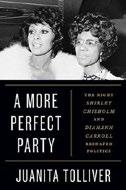
When a Black woman ran for president—more than half a century ago. In 2022, in celebration of the 50th anniversary of Chisholm’s historic campaign as the first woman and African American to run for president, Tolliver interviewed Chisholm’s close friend, U.S. Rep. Barbara Lee. During the interview, Lee casually mentioned that Carroll had held a fundraiser for Chisholm at the actress’ Hollywood mansion—and that she had brought with her the Black Panther Party co-founder Huey P. Newton. Fascinated by this slice of “living, breathing Black history,” Tolliver dove into a research project about the party that uncovered surprising details about the event and its attendees. Among them was that Lee met future fellow House Rep. Maxine Waters at the party—Waters, then an activist, was answering the door for guests. The comedian Flip Wilson co-hosted the get-together, writing a check for
$5,000. It wasn’t an astronomical sum—about $38,000 in today’s dollars—but it was the largest donation the campaign had received, and it paid for ads that helped Chisholm win roughly 5% of the vote in California. This was especially impressive since Chisholm had been excluded from televised debates. Tolliver writes that the fundraiser fueled a sense of optimism among traditionally marginalized groups. And she draws parallels between that long-ago campaign and current-day politics. A Black woman has yet to be elected president of the United States, but that day may come, thanks in no small part to Shirley Chisholm paving the way.
An ebullient and trenchant look at a trailblazing campaign for president.
Turan, Kenneth | Yale Univ. (400 pp.) $30.00 | Feb. 4, 2025 | 9780300254495
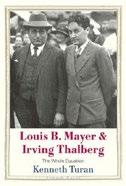
A prolific partnership that established MGM and transformed Hollywood. In yet another lively entry in the publisher’s Jewish Lives series, former Los Angeles Times critic Turan casts an engagingly fresh light on two of old Hollywood’s most powerful studio moguls: Metro-Goldwyn-Mayer’s Louis B. Mayer (1884-1957) and Irving Thalberg (1899-1936). Though both were Jewish, they came from markedly different
backgrounds. The scrappier and more emotional Mayer was born in Russia and emigrated to the U.S. as a young child, building his empire from humble beginnings in the scrap metal business. Thalberg, born in Brooklyn to a family of German Jewish descent, struggled throughout his short life with a congenital heart condition. His intellectual acumen and innate understanding of storytelling would make him a wunderkind of the film industry. Together, they established MGM as Hollywood’s premier studio, producing prestigious films during the silent era and beyond. Under their leadership, MGM became synonymous with glamour and excellence. The studio launched the careers of numerous luminaries, including Joan Crawford, Greta Garbo, Clark Gable, and Norma Shearer—who married Thalberg in 1927. They deftly navigated the transition from silent to sound pictures, with Thalberg bringing innovative practices: test-screening films, acquiring prestigious properties based on bestselling novels and classic literary works, adapting Broadway hits, and nurturing writing talent. Among the notable writers profiled is MGM veteran Frances Marion, whose credits include the Academy Award–winning film The Champ (1931). While several biographies of both Thalberg and Mayer exist, along with memoirs by Hollywood figures like Irene Mayer Selznick, who knew them personally, Turan’s achievement lies in his thoughtful synthesis of these sources. Though he presents little new material, he weaves together stories and anecdotes to create both a vivid portrait of their complex
The two men who made MGM synonymous with glamour and excellence.
LOUIS B. MAYER & IRVING THALBERG
personal and professional relationship and, for modern readers, an illuminating history of the MGM studio system.
A thoroughly engrossing, well-documented biography of two Hollywood legends.
Kirkus Star
The Traitor of Arnhem:
Verkaik, Robert | Pegasus (400 pp.)
$32.00 | Feb. 4, 2025 | 9781639368273
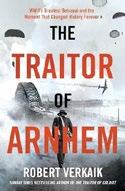
Unnerving findings about one of the great failed Allied operations of WWII.
On Sept. 17, 1944, Operation Market Garden landed a massive Allied force by parachute and glider behind German lines in Holland, and a British division launched an offensive from Belgium to link up. Success would entail outflanking German defenses, crossing the Rhine, and ending the war in 1944. It failed—resistance was far greater than expected. Historians fault poor terrain, bad weather, and faulty intelligence, but British journalist Verkaik, author of The Traitor of Colditz , is not the first to claim that traitors betrayed the effort. One candidate was Christiaan Lindemans, a legendary Dutch resistance fighter. Frequently arrested, resistance fighters often emerged from their interrogation as double agents, and Verkaik provides evidence supporting ongoing suspicions that Lindemans was among them. Turning to Britain, Verkaik writes that 24 hours before the operation, Nazi commanders received a warning from “a shadowy source deep in the heart of the British state, known…as Agent Josephine.” Although aware of “Josephine,” British intelligence never discovered her, possibly because a
A persuasive account of misguided actions across 60 years of warfare.
traitor led the search. That was Anthony Blunt, one of a crew of British communists who kept the USSR informed of Allied operations. With victory guaranteed, Stalin was more interested in slowing the Allies’ advance on Berlin than defeating Hitler. Market Garden’s failure (as well as December’s German Ardennes offensive) accomplished this, leaving the Red Army dominant in Eastern Europe and powerful communist parties in the west. Verkaik often overwhelms the reader with findings from archives, interviews, memoirs, letters, declassified MI5 and MI6 files, and postwar analyses that support, deny, or obfuscate the case for betrayal. He believes that Blunt was Josephine. His evidence is circumstantial, but there is plenty of it.
A disturbing reevaluation of an iconic World War II battle, not definitely proven but well argued.
Outmaneuvered: America’s Tragic Encounter With Warfare From Vietnam to Afghanistan
Warren, James A. | Scribner (336 pp.) $29.99 | March 4, 2025 | 9781668004555

Revealing the naïveté and tragedy of American attempts at nation building.
A searing indictment of overweening arrogance, strategic ineptitude, and criminally wishful thinking, Warren’s latest book is a persuasive account, equal parts maddening and heartbreaking,
of misguided actions across 60 years of U.S. administrations in the theater of irregular war, the repercussions of which will be felt for years to come. A historian and foreign policy analyst, Warren is a visiting scholar in American Studies at Brown University. From Vietnam to Afghanistan and beyond, he argues that Washington’s foreign policy, intelligence, and military decision-makers have too often misunderstood the nature of the wars the nation was fighting, the cultures in which the conflicts were taking place, and the resolve of our adversaries. He also details how these leaders have dismissed far more astute voices within government and the military advising against precipitate action. In the process, Warren says, they have ignored the reality that irregular wars, as opposed to conventional warfare, are chiefly political struggles with a military component, not the reverse, and that poorly conceived involvement often serves to have the opposite effect intended, as in the deeply flawed crusade of the War on Terror. Warren is quick to note that his book is a history, not a battery of policy recommendations, and that the contents are largely a work of synthesis, drawing on the work of many scholars, historians, journalists, and military officers. But his contribution is considerable.
A long-overdue call for American restraint and humility in international affairs.

For more nonfiction reviews, visit Kirkus online.

The author is giving her proceeds from Vanishing Treasures to climate charities.
Katherine Rundell is donating all the royalties from her new book, Vanishing Treasures: A Bestiary of Extraordinary Endangered Creatures, to climate charities in response to the reelection of Donald Trump as U.S. president.
Rundell’s book, published last November by Doubleday, is a look at animals facing extinction, including giraffes, Greenland sharks, and coconut hermit crabs. In a starred review, a critic for Kirkus praised the book as “a clarion call for preservation by way of a delightful bestiary.”
“In light of the election results, Katherine now plans to give 100% of her
royalties from Vanishing Treasures to climate charities, in perpetuity,” Doubleday announced in an email.
“The election result is a staggering, catastrophic blow for the planet,” Rundell said in a statement to Kirkus. “It will be tempting, in the years ahead, to say: the fight is lost—but, the time to give up is never.”
Rundell said that she will be donating her royalties to a series of charities that will change every five years. The initial recipients will be two U.K.-based groups: Blue Ventures, which supports coastal fishers, and the Forest Peoples Programme, which works with Indigenous forest-based communities across the world.
“I love both these charities: their tenacity, and their courage, and am proud to be able to contribute to the work they make possible,” Rundell told Kirkus.—M.S.

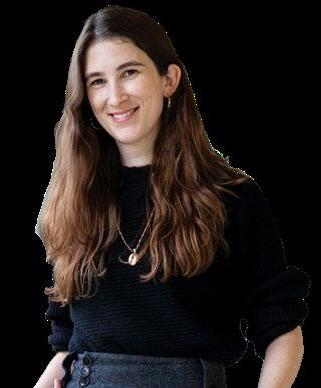





Tom Petty’s guitarist will tell the story of his career in Heartbreaker. Mike Campbell will tell the story of his life and career in a new memoir, the guitarist announced on the social platform X. Hachette will publish Campbell’s Heartbreaker later this winter. The press describes the book as “a fast-paced, tender-hearted rock ’n’ roll memoir for the ages” and “part rags-to-riches story and part raucous, seat-of-thepants adventure.”
Campbell, a Florida native, was an original member of Tom Petty and the Heartbreakers, which was founded by singer-songwriter Petty in 1976. Campbell played guitar on and co-produced some of the band’s most memorable albums, including Southern Accents, Into the Great Wide Open, and The Last DJ.

In Campbell’s book, Hachette says, the guitarist “opens up within these pages for the first time, revealing himself to be an astute observer of triumphs, tragedies and absurdities alike, with a songwriter’s eye for the telling detail and a voice as direct and unpretentious as his music.”
In Campbell’s post on X announcing the book, he wrote, “Playing guitar and writing songs has been my inspiration and purpose. It’s a story of hope, redemption, and gratitude, a testimonial that dreams can come true if you believe in yourself and follow your truth. It took two years to write, and it’s a labor of love. I hope you enjoy the ride!”
Heartbreaker is slated for publication on March 18.—M.S.

Mike Campbell





Pacino





BLUEY, AN AUSTRALIAN cartoon featuring an anthropomorphic puppy, is arguably the hottest TV show with the preschool set today. While kids love the series for its imaginative protagonist, many adults appreciate it for its thoughtful depiction of Chilli and Bandit, Bluey’s parents. Last year, however, the program made a rare misstep. An episode in which the family prepares for a big move ends with them deciding not to relocate, much to Bluey’s relief; many caregivers worried that this conclusion would give kids false hope about their own impending moves.
Granted, a montage of tail-wagging pooches rushing through their beloved home makes for a more feel-good finale than a scene in which the family earnestly discusses harsh realities. But for many kids, relocating is inevitable. Luckily, many picture- book authors are willing to help kids unpack the fraught emotions around moving.
Traci Sorell’s Being Home (Kokila, 2024) is
that rare picture book where moving is cause for jubilation, not sadness. A Cherokee mother and child pack up their house in the city and drive to the reservation, where a beloved community is waiting— their new home is clearly either a place where they once lived or have frequently visited. Suffused in pink, Michaela Goade’s illustrations echo the tale’s celebratory tone as the little one enumerates the joys of relocating: “No more busy streets…No more crowded space.” Best of all, “No more faraway family.”
Beth Ferry and Tom Lichtenheld’s A Moving Story, illustrated by Tom Booth (Harper/HarperCollins, 2024), follows a pair of ursine brothers who love their work as movers. They approach each job with enthusiasm—even when that means reopening every single box after they realize that they may have accidentally packed away a pet turtle belonging to the Panda family’s young cub. Infused with gentle humor, the text and art set a soothing tone that will bolster youngsters
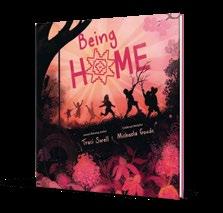
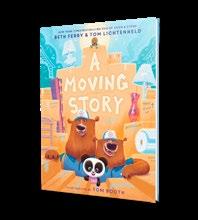

fretting about an upcoming move.

“How can any other place feel like home?” This question, imbued with fear, uncertainty, and yearning, is at the heart of Julia Kuo’s Home Is a Wish (Roaring Brook Press, Feb. 2). A mother, grandmother, and child (who present as East Asian) travel by plane to a new city where everything seems strange…until it doesn’t. Making elegant use of color and visual metaphor, Kuo deftly charts the child’s physical and emotional journey, leaving readers with a thoughtprovoking message: “There are different homes for different times: a home from before, a home for now, even a home for later.”
The young brown-skinned narrator of Mick Jackson’s
We’re Moving House (Candlewick, Feb. 18) has some delightfully off-base assumptions about the family’s move: namely, that the house will be coming, too. The excited child deflates when Mom points out that moving will mean living in a new home—one without familiar nooks and crannies. But one thing will remain the same: the family’s love. In Rashin Kheiriyeh’s charming, childlike illustrations, the protagonist’s wild flights of fancy—the house being placed atop a boat and airlifted by a helicopter— mingle pleasingly with quotidian details, making for a buoyant and wholly original take on the topic.
Mahnaz Dar is a young readers’ editor.
Junior Junior’s only friend is the echo across the rocky canyon from his house. Junior and the echo didn’t initially hit it off; when he hollered his first word—“MINE!”—an argument ensued. But in the years since, an agreeable conversation has persisted between the two. When he declares, “Junior is the greatest in the world!” the echo reiterates the sentiment, enthusiastically. When a new girl moves in next door, Junior finds her less amenable, especially when she argues with him, pointing out that what he thinks is a star is in fact a
planet. Upon realizing he’s wrong, Junior calls the girl an idiot and runs away to play with his real friend, the echo, who resembles Junior and does exactly what he does. It’s fun, until it’s not. Junior wonders suspiciously if the echo truly agrees with him. Setting pride aside, Junior reluctantly ambles home to admit his fault, ready to start fresh. Rex’s deliciously colorful digital pastels burst from the page, anchored by majestically moody landscapes. Junior, the echo, and the neighbor are pale-skinned, expressively highlighted in neon hues, bathing each character
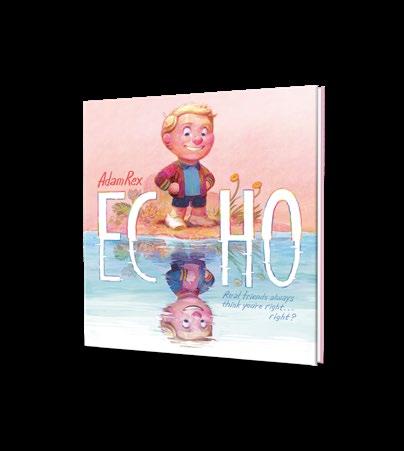
Rex, Adam | Dial Books | 48 pp. | $19.99 March 18, 2025 | 9780593699324
in a playful, glowing aura of light. The result is a valuable message that’s masterfully (and hilariously) conveyed without being heavyhanded: It’s OK to be wrong, and it’s OK to disagree with a friend. A quirky, relatable, and visually spectacular emotional journey. (Picture book. 4-8) Echo
Alexander, K.R. | Scholastic (192 pp.) | $7.99 paper | Feb. 4, 2025 | 9781546116493
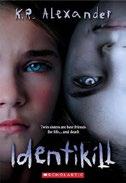
A girl must reckon with her sister’s angry ghost. Chelsea’s twin, Angelica, still follows her around nearly constantly despite having met an untimely death several years ago. Though 12-year-old Chelsea loves her sister, the situation leaves her feeling isolated. To make matters worse, the twins’ former friend Riley has relentlessly bullied Chelsea ever since Chelsea told Riley about Angelica’s paranormal presence. Unbeknownst to Chelsea, when Chelsea pays attention to other people, Angelica is relegated to a scary, mold-ridden underworld; until now, Chelsea hasn’t had any friends to distract her. But when Chelsea befriends her classmate Janette, Angelica’s rage boils over, and for the first time since her death, she begins siphoning off Chelsea’s energy to gain the power to exert her own will on the world. In this existentially chilling and quickly paced tale, psychological fears are equally matched with physical danger as the guilt of moving on after the death of a loved one manifests in multiple ways for Chelsea. Alexander continues to hone a talent for particularly relatable characters with authentic emotions, drawing readers firmly into twisted, nightmarish circumstances. Physical descriptions are minimal.
Will delight readers in search of a fast but freaky ghost story. (Horror. 8-12)

A girl must reckon with her sister’s angry ghost.
Anta, Julio |
Illus. by Gabi Mendez Colors by Rodrigo Reyes Rico & Juan Murillo | Random House Graphic
(224 pp.) | $21.99 | March 4, 2025
9780593651643 |
Series: Hillside Valley, 1

A series opener that explores culture, language, family, and identity. Santi is nervous about leaving his home in New York City to embark on a month of Spanish immersion with his Colombian abuela in rural Hillside Valley; Santi’s mom is European American, and his parents abandoned their plan to raise him to be bilingual. Although he wants to master the language, he worries constantly about embarrassing himself with his “broken Spanish” and poor accent. While wandering around Hillside Valley, Santi meets a group of Dominican, Argentinian, and Nicaraguan kids and discovers that the area has a robust Latin American community. His new friends include him in their secret soccer club, and all seems to be going well. But Santi just can’t shake the feeling that he’s a “big fake”—and he blames this discomfort on his limited skill with the language, which makes him feel out of place. Equally frustrating, his white classmates at home questioned his presence in a beginning Spanish class. This graphic novel is enhanced by clean, brightly colored panels that feature lots of appetizing illustrations of food. Spanish is woven throughout; speech bubbles with dotted outlines signal English translations. This sweet multigenerational story gets to the heart of the displacement that young people often feel when they begin to explore their family heritage, and Santi’s intense frustration and anxiety come across vividly.
An honest take on seeking acceptance
Bath
Antony, Steve | Henry Holt (32 pp.)
$14.99 | March 18, 2025 | 9781250392237

It’s clean-up time for a delightful flock of chicks. A cute but dirt-flecked ball of teal fluff, proudly sprouting three tiny feathers on its head and an additional three on its tail, heads to a grand, old-fashioned porcelain clawfoot tub in a tiled bathroom with a checkerboard floor. Three more chicks—pink, peach, and mango—enthusiastically join the preparations, each in charge of one ingredient: “Sponge, bird”; “Soap, bird”; “Shampoo, bird.” As the original bird runs off, the unseen narrator asks, “What have you forgotten?” Bath toys—an essential element! Everyone shares nicely. All four chicks and the toys just barely fit in the tub, but there’s always room for bubbles. As the bath bubbles over, the narrator wonders if the chicks are still there underneath. “Ah! There you are. Silly billies.” Then it’s time to rinse, dry off, and preen like the pristine puffballs they are. But wait: “Who else needs a bath?” Six completely different baby birds—a penguin, an owl, a flamingo, a toucan, a stork, and a hummingbird—cram themselves into the tub as our protagonists helpfully bring supplies. The towels’ colorful rainbow design matches the book’s endpapers. Background details are clear, but the focus is on the birds. The utterly adorable chicks have big eyes and pale pastel feathers.
Bound to be as popular as a bubble bath. (Picture book. 0-4)
Cat Nap
Antony, Steve | Henry Holt (32 pp.)
$14.99 | March 18, 2025 | 9781250392220
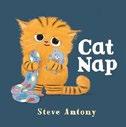
Will Cat finally succumb to sleep?
A fluffy striped orange tabby kitten, its eyes at halfmast, clutches a tiny blue teddy and a soft blanket whose fish print is matched by the book’s endpapers. Other essentials—including a sippy cup with milk—are at hand, but Cat has so many enticing soft toys. Wouldn’t a pretend picnic be a great idea, complete with milk? “Not playtime, Cat,” scold s the unseen narrator. “Nap time!” Cat decides the picnic blanket would make a great cape and perches, paw outstretched, on the upended toy box. “No! Not Super Cat. Nap, Cat!” shouts the narrator. “Oh dear.” That box wasn’t properly balanced: “ Splat! ” “Poor Cat.” Later, the narrator asks, “Cuddle, Cat?” The kitten beds down in a cozy old-fashioned white-painted wood cot on rockers, with a cut-out heart; it’s big enough for all the stuffies, blanket, and Cat. Checklist: “Toothbrush, Cat.” “Pillow, Cat.” “Night light, Cat.” Tucked in, Cat’s eyes are wide: What has been forgotten now? Oh, it’s bow tie–sporting teddy, who’s fallen on the floor, and with a kiss and another cuddle, Cat is ready for “sweet dreams.” Cat stands upright, making a solid rectangle of cloudlike kitten fur, but the expressive ears, eyes, and mouth are all feline. Bright colors make essential details (like the rug and mobile) pop, and the handling is sure. Cat is irresistible.
An adorable evocation of the minor struggles and major charms of toddler nap time. (Picture book. 0-4)
Arthur, Katie | Owlkids Books (32 pp.)
$18.95 | March 18, 2025 | 9781771476010

A child frets about an upcoming celebration. Henry’s birthday party is tomorrow, but the youngster’s been quiet and preoccupied all day. That night, Henry finally confides in older sibling Sam: What if Henry’s new best friend, Marty, doesn’t like the family’s dog, Ketchup? What if she turns up her nose at their grandmother’s confetti cake? What if the elevator in their building breaks down, and Marty has to take the stairs? And what if she judges them for living in a small apartment? Sam counters each of Henry’s concerns: What if Marty finds Ketchup adorable? What if she wants extra helpings of cake? What if she likes counting stairs the way Henry does and thinks their apartment is the coolest? Sam’s measured responses don’t dismiss Henry’s fears; instead, they balance the youngster’s anxieties with equally possible but hopeful outcomes. Comic book–like layouts make for dynamic page designs, allowing readers to linger on various moments. The illustrations themselves are unfortunately flat and murky; characters have off-puttingly blank eyes and bland faces. Scenes depicting Henry and Sam’s what-if scenarios, rendered in childlike scrawls, better convey their emotions and portray the extremes of each hypothetical scenario, ultimately showing kids how to take charge of their worries. Tan-skinned Henry and Sam appear to be biracial (their mother is brown-skinned, while their father presents East Asian); Marty is brown-skinned.
An understated, empathetic approach to helping children handle their what-ifs. (Picture book. 6-9)
Atkins, Jeannine | Atheneum (320 pp.)
$17.99 | Feb. 11, 2025 | 9781665950572
Series: Girls Who Love Science

A biographical verse novel about women born decades apart who followed their passions to become pioneers in their respective scientific fields. Irish American Mary Agnes discovered her love for drawing and observing patches of nature around her late-19th-century Chicago home as a child. She dreamed of studying botany but left school after eighth grade, working as a newspaper proofreader to help her struggling family. For years she did illustrations on the side, eventually becoming a botanical illustrator at the Smithsonian Institution and, later, a senior botanist. In early-20th-century Washington, D.C., young Marguerite studied the rocks and soil along the Anacostia River. She was torn between her burgeoning dream of being a teacher and the need to help her family financially. As a Black girl, Marguerite struggled to allow herself to admit her ambitions, but, surrounded by trailblazing Black women, she persevered, ultimately chairing the geography department at Miner Teachers College and becoming the first African American person to earn a PhD in geology. This story, rich in historical details, is a love letter to the power of individuals to bring about change and uplift others. Atkins deftly brings Mary Agnes Chase’s and Marguerite Thomas Williams’ environments and scientific pursuits to life through language that’s alternately poetic and direct, making the decades of history she covers both thought-provoking and accessible to young readers. An inspiring account of women who pursued scientific excellence and opened doors for others. (author’s note, timelines, character notes) (Verse historical fiction. 10-14)
Kirkus Star
Augustine, Kesi | Illus. by Mokshini HarperCollins (40 pp.) | $19.99 March 11, 2025 | 9780063251342

Faith rides the New York City subway with Mama, finding ways to connect with others along the way. On the train ride home from Grandma’s house, Faith pulls out a peanut butter sandwich (“gooey with honey from Grandma’s beehive”) and enjoys a sweet bite. Then a man named Isaiah who’s fallen on hard times asks if anyone can spare some change. Faith recognizes him. Everyone looks away from him, silent. Faith catches his eye, peanut butter still sticking to the child’s teeth. Heart thumping, Faith offers him the last of the sandwich. He enjoys it tremendously. As they leave the train, Faith wonders what kind of peanut butter Isaiah likes. The youngster imagines having piles of sandwiches with Isaiah and his son; Faith comes up with an idea for the next ride. This delectable story does a lovely job of presenting a child’s view of the sights and sounds of the subway. The moments surrounding Isaiah’s plea for help—busy riders looking away or distracted—ring true and encourage reflection. Mokshini’s energetic artwork makes impressive use of color and shadow, perspective, varied composition, and lines to immerse readers in the world of the train’s interior and the stations; readers will feel delivered from
underground when Faith and Mama finally emerge on the street. Faith, Mama, and Isaiah present Black; other characters are diverse. A lovely experience of wonder and empathy. (author’s note) (Picture book. 4-8)
Auh, Dayeon | Trans. by Tim Mohr
NorthSouth (40 pp.) | $19.95
March 25, 2025 | 9780735845749

Originally published in Switzerland, this retelling of a Korean folktale follows a grandfather who learns that sometimes a different outlook on life is key.
The old man resides in a tiny village; in order to travel to the market, he must climb a mountain with a peculiar reputation. It’s said that whoever falls while hiking Misfortune Mountain has “only three years left to live. Where in the world this tale had come from, nobody knew.” The grandfather anxiously starts up the mountainside, only for the worst to happen. Startled by a sudden noise, he tumbles down the mountain; he appears unharmed but knows that his days are now numbered. After about three years, the grandfather grows depressed and feels sickly, even though the best doctor insists that there’s nothing wrong with him. Eventually his granddaughter visits and offers some guidance: “If you fall down the mountain again, you’ll live three more years…And if
A scaly new hero sure to save the day—and to endear herself to readers.
SHARK GIRL
you fall ten more times, you’ll live another thirty years!” Her words bring about an amusing change of attitude. Auh, a muralist, skillfully incorporates various media—acrylic, watercolor, oil pastel, felt-tip marker, and colored pencil—making each page pop with life. The rich landscapes are lavishly textured with strokes, lines, and blots of color, enhancing the upbeat tone of the text. A bright and lively addition to any folktale shelf. (Picture book. 5-8)
Beaton, Kate | Roaring Brook Press (48 pp.)
$18.99 | Feb. 25, 2025 | 9781250184924

Stand aside, little mermaids. The true, pointytoothed protector of the seas is here! Though she’s part shark and part human, Shark Girl has never had much to do with her human side—until the day a massive fishing net captures her, along with a load of other sea denizens. She escapes and, realizing that the dangerous Captain Barrett is overfishing, seeks vengeance. With the help of a sea witch (“you’ll need a sea witch if you want to get legs”), she disguises herself and joins Barrett’s crew in the hope of inciting mutiny. Rebellions, however, are difficult things to start. Instead, Shark Girl discovers that humans are complicated creatures and that sometimes revenge isn’t as straightforward as a creature born of the sea would prefer. Beaton peppers her conservationist tale with peppy, scaly aplomb. Shark Girl’s the right hero for the job, even if her methods don’t always go how she’d like. Mixing vignettes, comic book–like panels, and full-page spreads, the artwork ramps up the drama; fierce-looking, sharptoothed Shark Girl makes a winsome protagonist. Given that sharks and mermaids are both hot topics among young readers, this title feels like a natural marriage between the two. The
environmental messaging is subtle in the face of the power of a protagonist who’s part shark, part girl, and all awesome. Shark Girl is blue-skinned, Captain Barrett presents white, and the crew is diverse.
A scaly new hero sure to save the day—and to endear herself to readers. (Picture book. 3-6)
Bethencourt, Regis & Kahran
Bethencourt | Little, Brown (40 pp.)
$18.99 | Jan. 14, 2025 | 9780316491174

A Black family looks back on the past—and ahead to a bright future. Nasir and Imani love visiting their grandmother, a famous photographer. Today she has a surprise: “When I was your age, my momma showed me this book of photographs and told me, This is what greatness looks like.” With each turn of the page, the kids—and readers—are transported to a world of Black greatness. An image of Bessie Coleman inspires Imani to dig through Grandma’s old clothes until she becomes the spitting image of the famed pilot, while Nasir takes inspiration from the Tuskegee Airmen for his matching costume. The illustrations effectively blend stock photos of the storied subjects with contemporary photos (taken by the authors) of the two youngsters reenacting pivotal moments of Black history, including Ruby Bridges becoming the first Black student to enroll in an all-white school in Louisiana and Tommie Smith and John Carlos’ protest at the 1968 Olympics. Flourishes of sparkling light swirling through the scenes make clear that Grandma’s book is infused with a bit of magic. Pages and pages of costumed portraiture are equal parts empowering and delightful as the narrative shifts focus to more contemporary figures such as Colin Kaepernick and Beyoncé, culminating with the acknowledgment
that Nasir and Imani could very well be great themselves someday.
A stirring portrait of Black excellence. (brief biographies of the people mentioned) (Picture book. 4-8)
Birkett, Georgie | Candlewick (32 pp.)
$17.99 | March 4, 2025 | 9781536241273
Series: Cheery Street
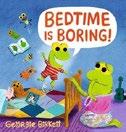
A curious froglet asks too many questions before bedtime. When Cosmo was just a tadpole, he would sleep anywhere and everywhere. Tightly swaddled, he would snuggle down, and the snoozing wouldn’t stop. But as Cosmo grew, things changed. Now he has many important tasks to complete each night, such as practicing karate, writing poetry about cheese, or having tea with a favorite stuffed animal. “BEDTIME IS BORING!” he shouts while hopping on his bed. His bedraggled, sleep-deprived mom tries to establish a bedtime routine, but even after “five stories, 17 kisses, one sleepy song, and two snuggly hubs,” Cosmo’s energy doesn’t fade. He peppers Mommy with a slew of questions. “Do ants sleep through thunderstorms?” “Are there ghosts in my ears?” (His inquiries may spark readers to begin their own set of questions, starting with: Do frogs have ears?) Luckily, Cosmo’s fatigue catches up to him, and he realizes that being tired during the day isn’t worth the fun he has at night. Even in their weary moments, Birkett’s amphibians fit right in on the aptly named Cheery Street; Mommy never wavers in supporting her froglet, and Cosmo tries (“with all of his froggy heart”) to beat his internal bedtime battle. Bright, sunny colors give way to deep purples and blues, lulling little ones to sleep.
A common nighttime challenge faced with love—and yawns. (Picture book. 3-6)
Little Pearl
Bowles, Melanie Sue | Trafalgar Square Books (224 pp.) | $12.95 paper Dec. 17, 2024 | 9781646012527
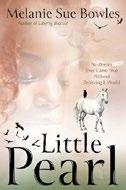
Changes come to the Bakers’ peach farm in this sequel to Liberty Biscuit (2022).
Katherine “Kip” Baker, nearly 15, can’t believe that one year ago, she was a lonely only child, stuck in the middle of nowhere. Since rescuing donkey Liberty Biscuit and horses Raven and Fire, much has changed. Her daddy let her keep the animals, she enjoys a close relationship with her formerly reclusive uncle, and she has a new baby brother. Kip still loves learning, especially how to tend and care for horses, but she’s anxious about starting high school. At the farm, she has the freedom to be herself; at school, she struggles with sitting still, being stuck indoors, and paying attention to directions. A teacher told Mama that Kip wasn’t trying hard enough, so now she’s reluctant to talk to her parents about her challenges. When Kip finds another neglected horse, she must come up with a plan to solve all her issues. Kip is of mixed race, with a Black mom and white dad; as in the previous entry, her voice feels inconsistent and the conversations about race are surface level. The book’s strength lies in its depiction of the ways Kip’s mind works differently from her peers’. Bowles doesn’t diagnose Kip and shares in a foreword that she struggled in the same way as a young person. This intentional ambiguity feels powerful, offering readers a chance to see themselves and feel accepted.
A solid work that affirms neurodiversity. (Fiction. 9-13)
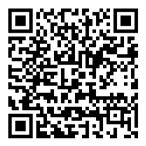
Buckley Jr., James | Penguin Young Readers (96 pp.) | $8.99 paper | Dec. 31, 2024 9780593754948 | Series: TIME for Kids
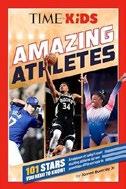
Shoutouts to rising and established stars in 18 sports, from soccer to skateboarding. Confining his selections to athletes active at the beginning of 2024, Buckley dishes up an alphabetically arranged gallery of greats and potential greats that is thoroughly diverse in terms of age, race, nationality, gender, and sport. Some, such as LeBron James and Aaron Judge, will be familiar even to nonsports fans, but there are plenty of achievers who may be less well known for various reasons—golfer Lilia Vu, lacrosse champion Lyle Thompson of the Haudenosaunee Nationals, and Jessica Long, billed as “the most dominant Paralympic swimmer in the world,” for example. Each profile includes a color action photo and a frothy descriptive comment highlighting select exploits both athletic and otherwise. The author commends Simone Biles not only for being gymnastics’ GOAT (Greatest of All Time), but also for how she spoke out about the importance of mental health during the Tokyo Olympics. The athletes’ names are listed in neither the table of contents nor the index, and not all will still be active by the time this book reaches its audience (soccer great Alex Morgan, for one, retired in September 2024). Still, the general focus on early- or mid-career figures will extend the freshness date.
A broad cross-section of athletic luminaries. (Collective biography. 7-10)

A warm and insightful exploration into the nature of grief and healing.
CLOSER TO FAR AWAY
Bussing, Kim | Random House (320 pp.) | $17.99 | March 4, 2025
9780593708071 | Series: The Princess Swap, 2

Two determined girls work to cure a kingdom’s inhabitants of a sleeping curse and keep the Night Witch from seizing the crown. In one week, timid, blackhaired Snow will turn 13 and will become the next queen of Apfel; her mother, Elora, died days after Snow’s birth. Snow doesn’t feel ready, and her stepmother, Lucille, and Lucille’s lady-in-waiting are vaguely menacing. Meanwhile, in the Dreamwood, another nearly-13-year-old girl, strawberry-blond Rose, has lived with Edel, the Fairy of Flora, ever since she was found near Apfel as a baby. Savvy readers may guess some of the plot twists and connections among the characters, but the interwoven stories are engaging even if one suspects what’s coming. The impending Crown Ceremony provides a ticking clock that heightens tensions, and Apfel’s fate makes for high stakes. When the girls magically switch places, each finds herself in an unfamiliar environment. A disguised Snow travels with the Huntsmen in the Dreamwood, encountering bandits and a cockatrice, while Rose sleuths to discover the identity of the Night Witch and develop a cure for the sleeping curse that’s slowly overtaking Apfel. Inventive turns of phrase (“the moon is curved like a fang,” “wings as big as
dread”) provide glimmering touches to this fractured fairy-tale mashup of “Snow White” and “Sleeping Beauty.” This volume stands alone, although it’s set in Reverie, and a few characters from the first Princess Swap book appear in minor roles.
An exciting and inventive double retelling. (Fantasy. 8-13)
Butcher, Kristin | Red Deer Press (240 pp.) | $14.95 paper March 1, 2025 | 9780889957497
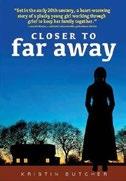
After the sudden death of her mama in 1921 Saskatchewan, Lucy is afraid that her memory will be erased by a new housekeeper. Thirteen-yearold Lucy Barber is determined to fill Mama’s role. Only by learning to do her chores does Lucy feel that Mama is close. First, Aunt Faye visits and interferes with the household; then Papa hires Mrs. Jenkins, who introduces new routines, sparking Lucy’s resentment. Worse, 5-year-old Teddy is forgetting Mama and latching on to Mrs. Jenkins instead. Papa and Tom, Lucy’s older brother, don’t notice the changes—Papa is immersed in work, and Tom seems to be hiding something suspicious and is hanging out with a friend Lucy doesn’t care for. Further disrupting the family equilibrium, Papa blames Uncle Ed for the fire that caused Mama’s death. Lucy is determined to drive Mrs. Jenkins away, keep Tom out of trouble, and bring her family
together, but when she goes too far, the consequences aren’t what she desired. Details about farm life, domestic routines, and Prohibition firmly establish the rural historical setting, while Lucy’s emotional struggles will resonate with a contemporary audience. Lucy is equal parts fragile and fierce as she tries to deal with her grief, and her misguided attempts to keep life from changing are both understandable and heartbreaking. Ultimately, the knowledge that she isn’t alone in her experience helps Lucy move forward. The cast presents white.
A warm and insightful exploration into the nature of grief and healing. (author interview) (Historical fiction. 8-12)
Chick, Bryan | Illus. by Brett Radlicki Andrews McMeel Publishing (320 pp.) $11.99 paper | Feb. 11, 2025 | 9781524884888
Series: The Super Sports Society, 2
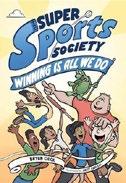
In this second series entry, young ballplayers discover that numbers on the scoreboard aren’t the only way to measure wins. Along with offering mini-clinics in batting, catching fly balls, and safely removing leeches, among other general life skills, the mixed-gender traveling team (newly renamed the Wurtmore Turdles for its port-a-potty sponsor) weathers bullies, crushes on teammates, and undergoes a range of emotional challenges from a lost pet to a lost parent over the course of a summer tournament. Chick stirs generous quantities of coaching and self-coaching into game action that’s highlighted by gleeful just deserts for sneering archrivals who steal a jar of especially potent pickles and later pay the intestinal price. The behavior modeling, sporting and otherwise, may weigh heavily at times but is generally buoyed by the alimentary humor and
an upbeat ending: The Turdles rebound from a tournament loss as Pel, one of the ensemble members who shares narrative duties, takes steps toward healing from the grief of his father’s death and at last cements relations with the team’s catcher, Diesel. Diesel’s real given name, Huyen, cues some racial diversity in the cast that’s backed up by Radlicki’s lively illustrations of the middle school–aged ballplayers. High fly balls and low humor, on and off the basepaths. (Fiction. 8-12)
Conrad, Lauren Paige | Minerva/ Astra Books for Young Readers (40 pp.)
$18.99 | April 29, 2025 | 9781662651809

In this followup to This Is a Window (2024), a backyard is transformed into a vibrant city as a group of children come together for a day of play.
Creating a sign labeled “Cat Pine Falls,” the little ones jump into action. Conrad ably conveys children’s limitless creativity: Acorns become currency, a flipped-over kiddie pool turns into a table at a cafe, trees serve as skyscrapers, and the dangly branches of a weeping willow act as a car wash. Each illustration feels like a freeze frame from an actual day. An image of the “school,” for instance, contains an assortment of items: small sticks tied together, larger sticks resting on an angle against a log, and an overturned watering can. Nothing is labeled, leaving plenty of space for readers to imagine whatever they see—could those larger sticks be a slide? The children vary in skin tone and hair color; all have the same expression, tiny black eyes, and a curve for a smile, making clear their happiness. Consisting largely of simple shapes and blocks of color, the illustrations have an appealing, two-dimensional feel; visual interest will be high, and kids will enjoy picking out details in the art. A winsome foray into a world of pure imagination. (Picture book. 3-5)
Cuevas, Adrianna | Farrar, Straus and Giroux (304 pp.) | $17.99
Feb. 11, 2025 | 9780374390457
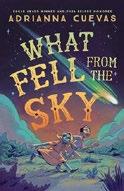
The rural Texas town of Soledad has been overtaken by military personnel. They claim it’s a training exercise to simulate an enemy government takeover—a scenario that feels unsettlingly real amid 1952 Cold War tensions. While doing farm chores, sixth grader Pineda Matlage is startled to find a girl hiding in the barn. Given her white hair, blue-tinged skin, and six-toed feet, he quickly realizes Luisa (as Pineda dubs her) isn’t from Earth, and he and his friends hide her from the soldiers, whom they now suspect may have more than war games planned. Cuban and white Pineda finds he has something in common with his alien friend: He, too, feels like an outsider in a town that doesn’t fully accept his multiethnic heritage. Even his friends struggle with his name, calling him Pete. The kids must rally their divided town to stand up to the soldiers and help Luisa get home. A Black corporal in the newly integrated army joins them as an unexpected ally. Chapters alternate perspectives between Pineda and Luisa, adding layers of insight and allowing readers to experience the story from multiple angles. The dialogue feels authentic, capturing both the weight of the historical moment and the youthful humor and awkwardness of tween friendships. The fact that the takeover of Soledad is based on a real historical event is sure to pique readers’ curiosity.
A story of friendship, identity, and courage showing that even one voice can spark resistance. (author’s note) (Science fiction. 9-12)
Daemicke, Songju Ma | Illus. by Lin Whitman (32 pp.) | $18.99 March 6, 2025 | 9780807530122

A stimulating overview of the Chinese American social and civil rights activist’s long career and achievements.
Daemicke links a teacher’s childhood gift of The Secret Garden to the community gardens that Grace Lee Boggs (1915-2015) later planted in empty lots around Detroit with the aid of young volunteers. The author characterizes her subject as “a gardener not only of plants but also of minds.” Lin echoes that theme in emblematic tableaux that follow Boggs through early troubles finding work “because she was Chinese” and leadership of the Workers Party to grassroots initiatives like the “Detroit Summer” program. She had such close associations with Malcolm X and the Black Power Movement that her FBI file wrongly dubbed her “Afro-Chinese.” She spent decades involved in both local and larger causes and makes a final appearance here speaking to a diverse circle of youthful “solutionaries” (as she called them) about “art, the earth, and change, challenging them to turn ideas into action.” Daemicke brings home the reality that the struggle for civil rights, particularly for Asian Americans, has been long and tragic with a quick closing reference to Vincent Chin, victim of a hate crime in 1982. The narrative ends with hopes of making the world a “healthier, kinder, and more just place for everyone.”
An inspiring tale of a life dedicated to making better people in a better world. (author’s note, timeline) (Picture-book biography. 7-9)

Exceptionally lovely, like a gentle tug at the heartstrings.
THE PEANUT MAN
Daniele, Patricia | Illus. by Junyi Wu
MIT Kids Press/Candlewick (40 pp.)
$18.99 | Feb. 4, 2025 | 9781536230055

An impressive tribute to MIT’s first woman student, who went on to a distinguished career as an ecologist and food scientist.
“Home economics” may sound quaint today, but it was once an innovative concept, championed by Ellen Swallow (later Richards). Not only did she serve as the first president of the Home Economics Association, but along with being an early user of the term ecology, she also helped lead the way in bringing public health into the domestic sphere. Daniele sketches out her subject’s progress from a homeschooled farm child with a love of nature and an active mind to her 1871 entry into MIT at age 28; at first she wasn’t even allowed into the classrooms. From there, she went on to a grueling two-year study of pure and polluted water sources around Boston and similar investigations of unsanitary groceries—both of which led to new state pure food and water standards. What readers may miss unless they read the closing timeline and author’s note is that, despite being denied a doctoral degree, she also opened and ran an instructional “Women’s Laboratory” at MIT in a garage before finally being admitted to the faculty. Her vital legacy continues, the author writes, in the ongoing “fight for clean water and a healthy environment.” In Wu’s softly textured color pencil illustrations,
Ellen stands out as an alert, brighteyed figure.
A warm portrait of a pioneering mind and spirit. (bibliography, source notes) (Picture-book biography. 7-9)
David, Mabi | Illus. by Yas Doctor Trans. by Karen Llagas | Eerdmans (40 pp.)
$18.99 | March 18, 2025 | 9780802856388

This Filipino import offers a colorful approach to healthy eating. Nutritionists often encourage people to adopt a rainbow-hued diet in order to ensure they consume a wide array of fruits and vegetables. Two unnamed brown-skinned, dark-haired kids, accompanied by a bug-eyed chameleon, do just that. As the book opens, they’re presented with a basket of various Southeast Asian produce. Each subsequent page is devoted to a single color, with a few matching foods. “Savor GREEN outside as you play!” One youngster and the chameleon stare in wonder, surrounded by a forest of bok choy as the other child runs around amid a field of moringa. Later, the three of them slowly paddle along a yellow river dotted with islands of pineapples and ears of corn: “Yellow can be syrupy like a spoonful of mango, or mild like corn on the cob.” David’s use of figurative language is downright delicious, while Doctor deftly uses different hues of the same color within a single page, with dynamic results; on one page, blots and spills of orange and yellow bleed into each other. Readers will enjoy noticing how the chameleon changes colors with each scene. The trio
eventually fall asleep, surrounded by the darker shades of purple yam and plums. An equally vibrant guide to the produce mentioned is included in the backmatter, along with tips for incorporating healthy, environmentally friendly practices into one’s life. A delectable journey through the imagination—and the palate. (Picture book. 4-8)
de la Peña, Matt | Illus. by Loren Long Putnam (48 pp.) | $19.99
March 11, 2025 | 9780593110898

In the wake of their lyrical rumination on Love (2018), de la Peña and Long ponder the incomparable possibilities of home. Glimpses plucked from everyday lives—a parent and child cozying up at bedtime, a man fishing as his grandchild observes, a youngster at play as an airplane flies just beyond the window—offer potential representations of home. Perhaps home is a cozy bed on a big rig or a fancy high-rise with its doorman and pool. But, as de la Peña notes, “a home can be lost,” whether due to a flood, a job loss, or other unfortunate tides of life. The author’s constant reference to “you” beckons readers from the first page, capably pulling them from scenes of ordinary comforts to musings on sorrow and back. From there, home becomes a quiet father’s gentle guidance, a hardworking grandma rolling tortillas, and a welcome from a kind teacher. These moments of simple yet exceptional connections among people, and between cities and nature, build to a crescendo that harkens back to the “thump, thump, thump” of the human heart—a potent reminder of life’s promises. Similarly, Long’s acrylic art transforms portraits of ordinary days and nights into formidable reveries, featuring folks varied in skin
color and cultural background. Of course, the penultimate double-page spread framed around a child’s pensive face—Earth reflected in the character’s eyes—is the most astounding. Publishes simultaneously in Spanish. Simply divine. (Picture book. 4-8)
Deedy, Carmen Agra | Illus. by Raúl Colón Margaret Quinlin Books/Peachtree (48 pp.)
$18.99 | March 4, 2025 | 9781682635681

A young Cuban refugee unexpectedly reconnects with her home country in this 1960s-set tale.
“¡MANI! ¡MANI!” Each night, the Peanut Man’s song reverberates through the Havana streets. For little Coqui, that means it’s time to play a game with her friend Emilio, el mansiero (Spanish for peanut vendor). Standing at the window with her thumbs in her ears and her tongue out, Coqui calls out, “Thiddle, thiddle, thiddle !” And Emilio does the same. “Every. Single. Night.” One evening, Mami suddenly announces that the family must flee for los Estados Unidos. As a tearful Coqui confides the news to Emilio, her friend tries to lift her spirits. After all, that new country also promises lots of beisbol, the sport that Coqui loves. Promising never to forget her friend, Coqui leaves Havana for Decatur, Georgia. The seasons pass, and still, Coqui misses Cuba. Then…“PEANUTS!” A chance encounter at a Braves game reveals that home can be one yummy bag of peanuts away. Deedy brings her heartfelt, pensively paced tale to a satisfying conclusion. In a brief yet potent afterword, she recounts the personal origins of this wistful, vividly written immigrant tale of cherished memories and everyday bonds. Rendered in watercolor, colored pencil, and lithograph crayon, Colón’s
artwork—a cozy series of sepia-tinged images—masterfully conjures up a past that still feels immediate. Exceptionally lovely, like a gentle tug at the heartstrings. (Picture book. 4-8)
Denise, Christopher | Christy Ottaviano Books (48 pp.) | $16.99 | Oct. 15, 2024 9780316564526 | Series: Knight Owl, 2
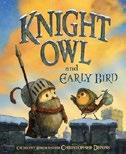
Can knightly deeds bring together a feathered odd couple who are on opposite daily schedules? Having won over a dragon (and millions of fans) in the Caldecott Honor–winning Knight Owl (2022), the fierce yet impossibly cute nocturnal, armor-clad owlet faces a new challenge—sleep deprivation— in the wake of taking on Early Bird, a trainee who rises with the sun and chatters interminably: “I made pancakes! Do you like pancakes? I love pancakes! Where’s the syrup?” It’s enough to test the patience of even the knightliest of owls, and eventually Knight Owl explodes in anger. But although Early Bird is even smaller than her mentor, she turns out to be just as determined to achieve knighthood. After he tells her to leave, she acquits herself so nobly in a climactic encounter with a pack of wolves that she earns a place at the castle. Denise proves a dab hand at depicting genuinely slinky, scary wolves as well as slipping cheerfully anachronistic newspapers and other sight gags into his realistically wrought medieval settings to underscore the tale’s tongue-in-cheek tone. Better yet, a final view of the doughty duo sitting down together to a lavish pancake breakfast/ dinner at dusk ends the episode in a sweet rush of syrup and bonhomie. An immersive, charming read and convincing proof again that even small bodies can house stout hearts. (Picture book. 5-8)
The author’s latest picture book, about author Toni Morrison, delivers a message of hope.
BY MAGGIE REAGAN
ANDREA DAVIS PINKNEY understands how to communicate with kids. It’s evident in her bold body of work, which often spotlights pivotal figures or moments in history; despite the scope of these subjects, she capably finds the story that will draw kids into her world.
That’s true for her latest, And She Was Loved: Toni Morrison’s Life in Stories, a picture book, with illustrations by Daniel Minter, about the Nobel Prize–winning author: someone who’s likely more familiar to parents than to younger kids. But this warm, triumphant narrative, relayed as an energetic poem that feels meant to be read aloud, is a doorway for readers. Pinkney embodies the book’s subject to deliver not a lesson but a message—one saturated with hope. Pinkney spoke with us via Zoom from her home in New York; this conversation has been edited for length and clarity.


Do you consider this a picture-book biography?
And She Was Loved is a praise poem, a love letter, and a thank-you. It’s also an invitation to readers. In this case, using the term picture-book biography is like stuffing a bird in a box. Most books invite you to read a story; And She Was Loved invites a child to be the story. It’s a call-andresponse exchange between Toni Morrison and the kid.
Morrison welcomes us into an experience, giving kids permission to dream. She says, “Now, child, invite your imagination! / Dear one, dream with
wide-open eyes / …Make your mark. / Stitch your story.” At the same time, in the refrain, we are speaking to her, expressing our joy and gratitude: “Oh, Toni Morrison. Do you feel it? You help us soar… up…up…up.”
Morrison is a pretty mythical figure. How did you unearth the person she was before she became a legend?
Toni Morrison is a towering giant. When she was a little girl, she had a vivid imagination that was sparked by her surroundings. As a child, she found power in words and
creative expression. Her childhood, where the early seeds of storytelling were planted, is at the roots of this book’s narrative. She was the only Black girl in her first grade classroom. This was also my experience. In crafting the poem for And She Was Loved, I drew on the feelings of being the one and only child in a setting where you’re unseen but, at the same time, where you’re taking in everything. One of the first places where we gain empowerment as young people is through the words we hear spoken, and the words we use to express ourselves. For Morrison, words became her friends, they invited her to their party, they embraced her. That was true of me, too. I felt so very alone, but books reached out and said, Come along. It’s warm
here. We can be in this together. That made all the difference for Morrison, and for me.
What’s your process for engaging kids in the story of a person they likely won’t encounter until later in life?
The narrative is written in the oral tradition, which is at the core of the storytelling I heard growing up. The stories of my childhood were boisterous, celebratory, harmonic. This is how I’ve chosen to share Morrison’s life with young readers—through syncopation, jubilation, glory shouts, rhapsodies. The refrains bring kids into the storytelling, encouraging them to pick up the rhythms and run with them: “ Oh, Toni Morrison, you liberate all of us. Oh, Toni Morrison, you give us freedom’s flight. Oh, Toni Morrison, you are loved!”
Tell me about the research for the book. Did you come across any surprises?
I, of course, knew that Morrison had written the groundbreaking novel The Bluest Eye. Through research, I learned she crafted much of that novel in secret. At the time, she was a single mother raising two sons. She woke up at the crack of dawn, and, as recounted in And She Was Loved, she wrote “before the dew even knew what to do.” But she didn’t tell anybody she was doing it. She kept Mama Muse close and quiet, while holding down a high-profile job in a publishing house. This speaks to the importance of cultivating solitude and connection with a power greater than oneself. That’s especially important as a writer and is true for kids as well. Young people find creative expression in moments of quiet.
A lot of children’s books celebrate the struggle in someone’s life. And you don’t diminish any of the challenges that she faced, but ultimately the tone of this book is triumphant: It emphasizes the necessity of love in creation. When I was growing up, my parents read Morrison and the works of many Black authors. That had a big impact on me. Mom and Dad talked a lot about uplift, possibility, and Black empowerment. When we sat down at the dinner table, we shared stories— and you better come prepared with a tale that focused on positivity, even in the darkest times. The most nourishing ingredients at our table were stories of
overcoming, moving through, rising above, reaching past, and celebrating what it means to come together when hard times show up. These values have always informed my writing and the storytelling choices I make.
I want to talk about the illustrations, which are very evocative. I’m curious about how much you and Daniel Minter were able to collaborate, and how you felt when you first saw them.
Daniel and I have never met in person, only briefly on Zoom to say hello, very early on when the book’s manuscript was still rough. I was then happy to let Daniel do Daniel. And he sure did do that! Daniel’s paintings are a bold testament to Toni Morrison’s beautiful and prolific legacy. Each painting speaks directly to the human spirit. Daniel has created a kaleidoscope of color, texture, and shape—a prism that calls us to look, and to look
For Morrison, words became her friends, they invited her to their party, they embraced her.

And She Was Loved: Toni Morrison’s Life in Stories
Pinkney, Andrea Davis; illus. by Daniel Minter
again. Like Morrison’s writing, Daniel’s paintings are metaphorical, spiritual, emotionally resonant. Every time I pore over them, I see something different, something very moving.
That endpaper spread was the first thing I noticed, and I found it really arresting. Especially the way it mirrors the cover image, where she’s really young. Those endpapers! They are masterpieces before we even get to the story. Toni Morrison gazing at us, as if she’s saying: Follow me. Our journey is just beginning. As the book progresses, we become so completely enraptured by the art. Daniel’s mastery allows us to transcend this world. To rise above. To take flight. To become exuberant, fanciful, real. And there’s an unexpected gift that I didn’t notice when I received my first bound copy. Hint: Peel back the book’s jacket and prepare for a breathtaking surprise.
What’s up next for you?
The And She Was Loved audiobook will be available on Jan. 7, the same day as the book itself. I was honored and very pleased to be invited to record the audiobook with Hachette Audio. What a tremendous experience! The directorial team did a brilliant job coaching me on musicality, cadence, flow. For all those kids who experience stories by listening, this one’s for you.
Maggie Reagan is a program manager for the American Library Association and lives in Chicago.
THE BEAR-SHAPED HOLE
Kirkus Star
Orris and Timble: Lost and Found
DiCamillo, Kate | Illus. by Carmen Mok Candlewick (80 pp.) | $16.99 April 29, 2025 | 9781536225303
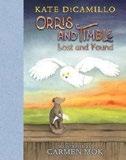
Unlikely friends
Timble the owl and Orris the rat suffer a sudden separation in this second episode of a planned trilogy. Having filled his feathered friend’s head with stories of quests, the bookish Orris should be unsurprised when Timble, who’s growing into a mature owl and yearns to visit the stars and moon, fails to appear one night…and then the next. Still, his friend’s disappearance is enough to make a rat feel fretful, as well as a little abandoned. But worry turns to resentment when Timble does at last come back. It takes a little time and an emotional exchange (“I waited and waited for you.” “I was lost”) to mend fences. Orris also heeds the slogan on a salvaged sardine tin (“Make the good and noble choice”), which the rat sometimes talks to when he’s alone. Laying out her themes early on and then quietly working them into the narrative, DiCamillo packs intense feelings into and between the lines of her simply phrased tale, set off perfectly by Mok’s spare, neatly drawn barnyard settings. As it turns out, Timble has returned with a story of his own, about an owl who flew too high and got lost, and the dramatic telling leaves the two friends perched side by side on the barn roof, as close as ever. “The owl listens to the rat, and the rat listens to the owl, by the light of the stars, by the light of the moon.”
Sensitive and quietly enthralling. (Early chapter book. 7-9)
Dorémus, Gaëtan | Trans. by Emilie Robert Wong | Enchanted Lion Books (40 pp.)
$16.95 | Jan. 21, 2025 | 9781592703883

A toddler bear takes a tactile journey in this translation of a French title. The youngster has finely textured turquoise fur and sports a yellow striped shirt; one wide eye is circled in red. After the cub ambles out of the domestic realm, signified by a pile of toys, an unseen narrator describes everything the youngster encounters. Each sentence begins with the same phrase: “Four paws for dancing over little stones. Four paws for feeling the tickly grass.” Red text denotes sounds or heightened emotion, as when the bear stumbles into thistles (“Ouch!”) or slips in the mud (“Swoosh!”). The compositions provide a rich aesthetic experience with gorgeous multihued backgrounds that change to reflect the mood and the little one’s body language. The scenes brim with delightful details, such as a crimson spider that reacts to each situation. The close-up perspective comes to a climax as the bear stands fearfully on a snow-capped peak at “the edge of the world.” Then the view pans out to show the relatively short distance the youngster has traversed—and an adult with outstretched arms on the other side. The cub runs (on two legs) and wraps two arms around the caregiver, doing what bears do best. Dorémus’ luscious, emotive illustrations will inspire frequent readings. The spare, repetitive narration lends itself well to memorization; be
prepared for little ones to shout out their favorite lines.
Youngsters will relish the ride from exploration to reunion. (Picture book. 2-5)
Dougherty, John | Illus. by Thomas Docherty | Frances Lincoln (40 pp.)
$18.99 | March 4, 2025 | 9780711296619

Some holes are very hard to fill. Loss is difficult to handle, even for adults. This book, a companion to the creators’
The Hare-Shaped Hole (2024), prepares children for the greatest one of all: death. Expressed in sometimes-clunky verse, the narrative follows a young Gerda and her wise, older friend Orlo. These two bears share rapturous times together. Inevitably, things change. Orlo noticeably slows down, and Gerda asks what’s wrong. Orlo explains he’s ill and that he will soon die. Gerda’s filled with anger—one of the stages of grief—and runs away. The digital illustrations do a commendable job of conveying Gerda’s feelings: In one scene, she flees, trailed by black straggly lines that later threaten to engulf her. But, as the text points out calmly, “You can’t outrun sorrow. You can’t outrun pain.” Gerda returns to Orlo and receives—what else?—a huge bear hug. He validates her feelings and assures her that, eventually, she’ll feel happiness again: Gerda will make many memories to fill the bear-shaped hole he’ll leave behind—and time now to create more. Gerda cries when Orlo passes; this, the book explains, is natural and OK. But she’s buoyed by their preparations and, later, eager to let new friendships into her heart. This is a reassuring message, while the colorful, cartoonish illustrations give the text an uplifting feel despite the difficult subject matter; the protagonists’ bond is lovely. Calming guidance for little ones grappling with sorrow. (Picture book. 4-8)
Dunlap, Sydney | Jolly Fish Press (256 pp.)
$19.99 | Feb. 18, 2025 | 9781631639166

Overcoming the past redefines family bonds in this hopeful, heartfelt story.
Thirteen-yearold Sage lives in a trailer park in Virginia with her dad. She’s keeping a secret about her mom hidden even from her closest friend, Alejandro. Feeling guarded and guilty, Sage obsessively imagines do-overs of the day when everything changed. When the estranged maternal grandparents she’s never met invite Sage for a summer visit, she accepts despite her father’s opposition, eager to accept their offer to pay for her flight to Ohio. On the plane, Sage befriends Marla, another girl who’s traveling alone. Sage partially opens up to Marla, revealing her desire to look for clues to her mother’s life while she’s visiting her grandparents. By the time the plane lands, the girls are determined to stay in touch, and their fast friendship eventually leads Sage to a revelation of truths she was previously afraid to admit. Sage’s memories of her missing mom are interspersed throughout the story, even as Sage searches her grandparents’ home, looking for answers that remain just out of reach. She also befriends—and conceals—a stray dog who eventually becomes a source of joy, bringing the family closer together. The story centers on a white-presenting family; racial and ethnic diversity is cued throughout. Complex emotional themes are handled with a gentle touch in this realistic story of resilience. (author’s note, author Q&A, discussion guide) (Fiction. 10-14)

Dyckman, Ame | Illus. by Tim Miller
Orchard/Scholastic (40 pp.) | $14.99 Feb. 4, 2025 | 9781338837872
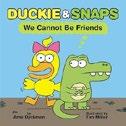
A duckling and a young alligator defy expectations as they make friends. A young duck with a pink bow hatches; soon after, a gator emerges from a nearby egg. Though the more reserved alligator attempts to say goodbye immediately, friendly Duckie coaxes the gator to stay—and even gives the reptile the nickname “Snaps.” Duckie proposes that they be friends and play together. A larger alligator overhears and informs the young ones that this isn’t possible: “We. EAT. Duckies!” “What’s a Duckie?” asks the clueless bird. “YOU’RE a Duckie,” the big gator responds. “Little yellow duckies are TASTY! FRIED DUCKIE, DUCKIE SMOOTHIE, DUCKIE PIE…” Now their roles reverse, and it’s Duckie who wants nothing to do with Snaps. Not giving up easily, Snaps calls Duckie back and forbids others from eating the duckling. The two embrace. Just then, Snaps’ stomach growls, and Duckie must find a way to distract the gator. Though this is a bit of a one-note story, little ones will enjoy the repetitive elements, while the minimalist design choices, such as single-tone colors and a flat illustration style, along with the characters’ cartoonlike expressions, give the book a comic feel.
A kooky tale of unlikely friendship. (Picture book. 4-8)
Edkins Willis, Maggie | Viking (40 pp.)
$18.99 | March 11, 2025 | 9780593693292
thunderstorms—the “inky clouds,” “howling winds,” “scary shapes in the shadows,” and the “CRACKS and the CRASHES and the RUMBLES.”
When all these dreaded things happen simultaneously, the child hides under the kitchen sink. Dad stands on the facing page, holding pillows as he gazes out at the storm. The protagonist is dubious when he suggests they go to a place he calls Thunderland, but the little one follows him to a pillow fort he’s made by the window. Together with their small dog, they huddle inside with assorted stuffed animal friends. The space feels cozy due to the rounded forms, soft lines, and highlights of warm color in the sketchy pictures, which adopt a style similar to some of Dan Santat’s work. An imaginative turn occurs when Dad suggests they invite the storm to play with them, and a lively shouting match ensues. Father and child compete with the storm, with their yelling, the dog’s howls, and thunderclaps conveyed through large, full-caps lettering. The storm’s personification humorously continues as they name the storm “Nancy,” imagine where she came from and where she’s going, and share their cookies with her. By the time Nancy departs, the child is somewhat saddened by her departure, though decidedly buoyed by playful, sensitive Dad’s compassion. Dad and child are brown-skinned.
Share this book for thunderous storytime applause. (Picture book. 3-6)
Eschmann, Reese | Illus. by Charlot Kristensen | Scholastic (144 pp.)
$5.99 paper | Feb. 4, 2025
9781339018157 | Series: Cruise Life, 1
For more by Sydney Dunlap, visit Kirkus online.

Edkins Willis tackles a common childhood fear with compassion and imagination. The young narrator dislikes everything about
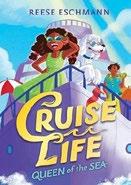
With mixed emotions, Caitlin Cruz boards the Wandering Princess for a weeklong cruise. Ever since her parents’ amicable divorce, Caitlin and her older brother, Dylan, have shuttled between
Dad’s condo near Orlando and Mom’s seaside cottage. Dad was recently hired as a doctor on a cruise ship, and he invites the kids along to spend a week on the ship. Caitlin’s initially perturbed at the prospect of more change, but she’s cheered when Dad says she can bring her bearded dragon, Peaches. She and Dylan soon meet twins Max and Olivia Leone, the chef’s grandchildren, who show them the ropes. Caitlin quickly becomes overwhelmed, and after Max dubs her and Dylan “newbies,” she feels pressured to prove she truly belongs. After the kids have a few run-ins with guests on the cruise, Caitlin frets even more, and when a crisis arises, she attempts to run away. Eschmann maintains a lively tone as the youngster becomes more confident with help from an unexpected new friend. Caitlin’s a creative, inspired protagonist whose relatable anxieties play out against a fun backdrop; readers will especially enjoy excerpts from her What If? journal, where she poses quirky questions and speculates about those she meets. Some may look askance at the fact that Max’s baldness becomes a mystery that Caitlin attempts to solve, and a few plot points strain credulity. Caitlin and her family are brown-skinned and cued Latine; other characters’ ethnicities aren’t specified. A seaworthy series starter helmed by a resolute young protagonist. (Chapter book. 7-10)
Falcone, Ben | Illus. by Kevin Cornell Putnam (32 pp.) | $18.99 March 11, 2025 | 9780593697009

A sweet and silly antidote to a child’s fear. Claire can’t fall asleep after she’s frightened by a loud thunderclap, so her father comes to her bedroom to provide reassurance. Instead of offering comfort through meteorological explanations or soothing words, however, he tells her that he overcame his own fear of thunder when he “realized there are so
many other things that are much scarier.” Though this approach could have easily backfired by introducing Claire to new fears, the scary things her dad describes in bouncing, rhyming verse are funny, not fearsome: “There’s a moose filled with custard holding a sword made of mustard.” While Cornell’s energetic, cartoon-style illustrations use a full-color palette to depict Claire, her father, and the setting, scenes depicting Claire imagining the things her dad describes are cleverly rendered in monochromatic blues. Eventually, her mother joins in on the fun, voicing her own ideas to make Claire laugh. Some adults may wonder why there are no other thunderclaps after the first one—is the storm over? If so, why does Claire still need reassurance? And if not, why aren’t her parents’ playful words punctuated by ongoing crashes? Still, young readers likely won’t notice— and will have a blast alongside the young protagonist. Claire and her parents are tan-skinned.
Imaginative fun—and just the thing to buoy kids through their own fears. (Picture book. 2-6)
Florence, Debbi Michiko | Aladdin (304 pp.)
$17.99 | March 11, 2025 | 9781665950473
Series: Last Chance Academy, 1
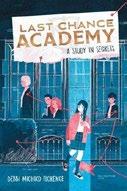
A grieving girl reluctantly embraces new challenges.
Meg isn’t happy to enter a tiny boarding school as a new seventh-year student. People jokingly refer to Leland Chase Academy, several hours from her Connecticut home in upstate New York, as “Last Chance Academy,” a place for kids with complicated pasts. Ever since her mother’s sudden death when she was in fifth grade, Japanese American Meg Mizuno has struggled in school. Her father travels frequently for work, so he gives Meg an ultimatum: Succeed at Leland Chase or she’ll be home-schooled by an aunt she can’t stand. Meg and her roommate, Tana
Rabin, who’s Jewish, each receive a mysterious invitation to participate in a secretive treasure hunt; the winner will get to go with a chaperone of their choice on a fancy vacation to Newport Beach, California. Meg sees this prize as a chance to bond with her dad and convince him to bring her back home, a motivation that draws her into the treasure hunt. The puzzle-filled plot never drags, and the ending will surprise readers, although it lacks a satisfying wrap-up—this series opener is clearly setting up for the sequel. Meg struggles with trusting friends and being honest with her dad, two realistic and relatable themes for middle schoolers that Florence weaves believably into the story. Interesting characters explore a compelling mystery. (Mystery. 9-12)
Gibeault, Stephanie | Illus. by Bambi Edlund Owlkids Books (32 pp.) | $18.95 March 18, 2025 | 9781771475785
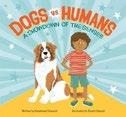
When it comes to perceiving the world, who scores highest: people or pooches?
For readers who wonder how dogs can be so good at “spotting squirrels waaay across the park and hunting down unattended hamburgers,” Gibeault has answers (along with a couple of cheesy dad jokes). Rightly noting that dogs, just like humans, vary widely in individual capacities, she briefly notes that canines’ senses were passed down from their wolfish forbears. She then points out that while dogs may be more sensitive to movements, humans actually have better depth perception and see a broader spectrum of colors as a rule. If Round 1 goes to the humans, Round 2 definitely goes to the dogs, thanks to canine scent receptors and nasal anatomy superbly adapted to reading doggy butts and “pee-mail” on the local hydrant. Readers curious about which contestants will taste or feel the victory in subsequent rounds, or who gets the “upper paw” in hearing, may be in for some surprises.
The final tally ends up a tie, which may be a bit of a cheat, but, following an unscored bonus round about magnetoreception (which dogs demonstrably have and humans might), the author sensibly concludes that for all their differences, “dogs are great at being dogs, and humans are great at being humans.” Both are on display in Edlund’s cartoon illustrations in a variety of breeds, ages, and hues.
A tasty morsel for dog owners and dog lovers. (glossary)
(Informational picture book. 6-8)
Kirkus Star
Gidwitz, Adam | Dutton (352 pp.)
$18.99 | Feb. 25, 2025 | 9780593112113
Series: Operation Kinderspion, 2
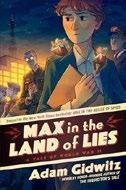
Now working for British intelligence after leaving Berlin in the Kindertransport, 12-year-old Max Bretzfeld returns to Nazi Germany on a secret mission.
During his ostensible mission—infiltrating the Funkhaus, the hub of Nazi radio and propaganda—Max not only faces continual danger, but also struggles with his conscience and even (briefly) his loyalty as he confronts some uncomfortably close parallels between the rabid racism of the Third Reich and that of both the British Empire and the United States throughout their histories. Max is also harboring a secret: Despite being expressly forbidden to do so by his adopted British uncle, he searches for his parents, only to discover strangers living in his family’s apartment. What follows is an absorbing whirl of narrow squeaks and tense, clever exploits, lightened by moments of comfort and comical commentary by Stein and Berg, the dybbuk and kobold spirits perched on Max’s shoulders. Gidwitz, who conducted careful research, realistically portrays a large walk-on cast of real Nazis, from
Joseph Goebbels to Hitler himself, who explain how they rose to power and how nations can be led by the right narratives: “With these grand stories, we can bind our people together.” The cast of fictional ordinary Germans shows how seductive the Nazi promise to “make Germany great again” seemed. This sequel trusts readers with critically relevant insights on necessary vigilance and the human capacity for monstrous behavior. A headlong thriller laced with provocative and topical historical truths. (historical notes, bibliography) (Historical fiction. 8-12)
Gillis,
Kellie DuBay | Illus. by Jacob Souva Harper/HarperCollins (40 pp.)
$19.99 | Feb. 25, 2025 | 9780063315235

What’s a bike for if not to ride?
Accompanied by a “Free” sign, a bicycle attracts the attention of a pigeon (“A big bike!”). After a wobbly ride, the bird crashes and deems the bike “too big for me.” “Bye, bike.” A rhino discovers it next (“A little bike!”) and takes it for a spin. A few bumps later, the rhino decides it’s “too little for me” and bids it farewell. A cheetah rides the bike up a steep incline and then abandons it (“Too slow for me!”). A turtle climbs on and zooms down the incline (“Too fast for me!”). Other animals find the bike wanting for various comical reasons, so it remains alone. Then…a human finds it. It’s not in great shape, but with a little tinkering, it’s good as new, and the mechanic’s child learns to ride it expertly, because it’s “just right for me!” Eventually the youngster outgrows it and leaves it
with another “Free” sign, to the delight of another child, for whom it’s perfect. This whimsical, thought-provoking story will charm readers with its kid-friendly exploration of how an object changes ownership over time; youngsters will appreciate the very satisfying conclusion—and may wish to discuss who left the bike at the start. The energetic, humorous illustrations, set mostly as vignettes against expanses of white space, were created digitally and with old postcards and other textured materials. Human characters are racially diverse. An utterly delightful and free-wheeling tale. (Picture book. 4-7)
Goldman Rubin, Susan | Illus. by Susanna Chapman | Abrams (48 pp.)
$19.99 | Feb. 11, 2025 | 9781419754364

Louis Comfort Tiffany, son of the famed jeweler and the man responsible for the iconic Tiffany stained glass windows, employed a crew of workers, including the “Tiffany Girls,” led by Clara Driscoll.
In 1888, Clara, an artist inspired by nature on her girlhood farm in Ohio, moved to New York City for school. Her sketches of flowers landed her a job with Mr. Tiffany. At first, Clara’s job was to choose and cut colored glass “gleaming like jewels” for Tiffany’s window designs. Her talents generated notice, and soon she led “the only shop of women glass cutters in the world.” Goldman Rubin describes how the windows were designed and
A headlong thriller laced with provocative and topical historical truths.
MAX IN THE LAND OF LIES
assembled, and she provides some history of the cooperation and competition between men and women at Tiffany’s studio, including the perhaps surprising fact that they received equal pay. Eventually, Clara created her own designs for Tiffany’s lamps. One, inspired by dragonflies, earned her a bronze medal from the 1900 Paris World’s Fair. Clara designed lamps with butterflies, poppies, tulips, and flowering wisteria vines, which became “Tiffany’s most famous.” In Chapman’s resplendent accompanying illustration, shimmering with purples, yellows, and greens, Clara is dwarfed by the comparatively giant lamp—a fitting tribute to her outsize, little-known contribution to the art world. A secondary story based on Clara’s letter to her family about her work appears in Chapman’s joyously colored strip illustrations, along with excerpts from the correspondence. A satisfying, behind-the-scenes look at the work of an unsung designer. (author’s and artist’s notes, archival photographs, where to see artworks by Clara Driscoll, bibliography, notes) (Picture-book biography. 7-10)
Gugger, Rebecca & Simon Röthlisberger
Trans. by Tim Mohr | NorthSouth (48 pp.)
$19.95 | March 18, 2025 | 9780735845602

In this Swiss import, words come to life—literally—as a young boy squishes, stretches, and hurls them through the air. Oscar digs up a chest filled with jumbled-up words. He pulls out fluorescent, straightens it out, then tosses it at a nearby hedgehog, who suddenly becomes awash in neon. And that’s just the beginning. He uses hairy to give an old oak tree a trendy new ’do, transforms a beetle into a hulking, “monstrous” creature (he quickly undoes that change with adorable), and, with help from lightweight, lifts a backhoe in the air using just one hand. After Oscar runs out of words, he turns to a neighbor who
has her own stash of words. She teaches him that he can find words just about anywhere, as long as he’s observant: “Use them with care and you can make the world blossom.” With her encouragement, he does just that. This vocabulary-rich story is visually striking and quietly powerful. Full of unusual words like bulbous, tender-leafed, and velvety, it leaves readers with pages full of unnamed images ripe for the claiming. The illustrations are whimsical and playful while also making concrete something that is utterly abstract. Oscar’s world has an exaggerated, off-kilter feel; with the earthy palette and changing perspectives, the art is a strong match for the storytelling. Most characters are light-skinned. Original and absorbing. (Picture book. 4-7)
Gupta, Suhasini | Illus. by Devika Oza Gnome Road Publishing (32 pp.)
$18.99 | March 25, 2025 | 9781957655406
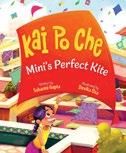
An Indian girl faces down a rival with her brother. It’s Sankranti, “the Indian festival of kites,” and Mini wants to join in the fun. But when she asks her brother, Bhai, for a turn flying the kite, he scoffs, “Kites aren’t for little girls!” Determined to prove him wrong, Mini designs her own “not-soperfect” kite, which, despite her best efforts, simply refuses to fly. Although Bhai initially laughs at her struggles, he finally shows her how to get her kite into the air. Mini is overjoyed to see her kite join those of her neighbors flying over her community’s rooftops—until a red kite flown by someone they can’t see
slices through Bhai’s kite string, ending his fun. “KAI PO CHE!” yells the unseen attacker as the kite flies away. Can Mini stand up to the red kite’s owner…or at least protect her own kite from being stolen? The narrative’s abrupt switch from Mini’s attempts to prove her brother wrong to her focus on the red kite makes for somewhat uneven storytelling. Still, confident, creative Mini will delight kids. Filled with bright, geometric shapes, Oza’s artwork sets a whimsical tone; scenes involving the kite festival are particularly charming, as is a montage of Mini painstakingly designing her own kite. Though it encounters a few bumps along the way, this tale ultimately soars. (Picture book. 3-7)
Hashman, Ashlee | Illus. by Gillian Eilidh O’Mara | HarperCollins (40 pp.) | $19.99 March 18, 2025 | 9780063247840

Hashman honors the brave and pioneering women who have made their mark on the U.S. space program.
A young brown-skinned girl reads a book in her bedroom. Posters of planets and female astronauts line her walls, and her bedspread is covered in rockets. Her love of space exploration is clear. “Planets have orbits, / each star has a place, / but where do girls fit / in infinite space?” With each turn of the page, the young girl gets a close-up view of one of the diverse women who helped shape the U.S. space program. Katherine Johnson leads the way: “They count and they calculate / faster than light, // which is why girls belong / where the stars go at night.”
Each of the women highlighted has a unique ability that the girl observes or mimics—some have brilliant minds and strong bodies; others, like Ellen Ochoa and Eileen Collins, have superb mechanical or piloting skills. The young protagonist sees herself in every role—girls truly belong on this final frontier. The clear and concise rhyming verse is paired with deeply saturated double-page spreads that will delight those who love science, space, and exploring. Accompanied by a brighteyed dog, the girl displays an infectious passion for space travel; readers will emerge ready to join them. Backmatter includes short biographies of the women mentioned and further resources. As the author puts it, “go forth and explore!” This mission reaches its target. (Picture book. 4-8)
Miraculous Sweetmakers: The Sea
Hastings, Natasha | Harper/ HarperCollins (304 pp.) | $19.99 Dec. 10, 2024 | 9780063161320
Series: The Miraculous Sweetmakers, 2

Young candy makers in late17th-century London have both a friend to rescue and realms to save, both on land and under the sea.
Having driven off the evil Father Winter (at least temporarily) in the series opener, asthmatic, white-presenting Thomasina Burgess and her brownskinned best friend, Anne Hawke, are enjoying a growing business inventing and selling medicinal cakes and treats. But when their friend Henry is dragged into the Thames by magical ropes, effecting a rescue quickly forces them to up their game. For all its charmingly delectable setup, the ensuing tale— which involves tackling the ravening Sea Queen, who pollutes waters, corrupts the minds of her captive subjects, and threatens both London and the kelpies, selkies, and mermaids of the adjacent Free Waters—quickly deteriorates into a
slapdash jumble of magical tests, family tensions, and handwringing. The maternally inherited strain of family magic from Scotland that Thomasina assumes partway through the story is likewise underwhelming: It often manifests only as a vague force that pushes the plot along by telling characters where to go and what to do without giving them much real agency. Ultimately, Hastings resolves the crisis with such disorienting speed and ease that readers may feel as if a chapter is missing. A disappointing sequel that doesn’t live up to the promise of its predecessor. (Fantasy. 9-12)
Himmelman, John | Margaret Ferguson/ Holiday House (128 pp.) | $16.99 March 18, 2025 | 9780823458455
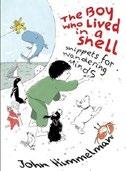
Is it poetry, or is it philosophy?
Only child readers can tell. It’s clear that Himmelman has too long reined in his instincts to fit the picture-book form. Now he’s let loose with a cavalcade of delightfully chaotic, boisterous, and thought-provoking verse. The book calls them “snippets,” most would dub them “poems,” and while both are correct, that label is also insufficient. The titular hero writes brief stories on the walls of the shell for one and all to read. Punctuated by interstitial pen-and-ink illustrations, each story/poem works by its own peculiar internal logic; many are imbued with a dry wit. A wizard turns a potato into a different potato (“one that looked just like / the first one ”) to oohs and aahs; as Himmelman points out, “It didn’t take much to be a wizard in those days.” Some turn achingly poignant, such as several poems that follow a pair of dogs attempting to reunite; another asks, “Can a shadow have a shadow?” If Shel
Silverstein were pared down to his core elements, you might end up with such a volume. By turns humorous, charming, and bizarre, these stories will keep readers musing; they’ll especially appreciate the postscripts on how all the various characters turn out in the end. Characters have skin the white of the page. Overflowing with oomph and pizzazz, this collection will take up space in children’s minds for years to come. (Poetry. 7-12)
Hoberman, Mary Ann | Illus. by Marla Frazee | Little, Brown (88 pp.) | $20.99 March 11, 2025 | 9780316417129
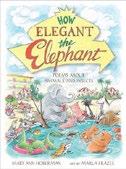
T he late Hoberman’s eclectic, posthumously published collection of high-spirited rhymes, riddles, and limericks focuses on the animal kingdom. Hoberman selected her favorite bestiary poems from over six decades (some long out of print), then wrote an additional eight more for this stirring collaborative compendium with Frazee. Frazee introduces the concept of an animal hotel, and every entry slots so neatly into this form that readers will honestly believe the poems were written especially for this book. What was once a haphazard conglomeration of disparate poems becomes, with these pictures, almost a story about an assortment of quirky hotel guests. As one might expect, the poems vary in quality but have occasional flashes of brilliance, as with the poem “Dragonfly” (“You get what you eat with your feet when you hunt / While you fly which is why your six feet are up front”). Many of Hoberman’s poems adeptly incorporate scientific facts—for instance, a daddy longlegs can regrow its limbs, while ants follow one another based on scent trails. At times, the art provides a delightfully ironic contrast: “Lion” describes a threatening “Mighty beast,”
while Frazee depicts the big cat getting a dye job at the hairdresser’s.
A labor of love, both a fitting tribute to its poet creator and a grand reimagining, thanks to incredible artistic skills. (Poetry. 4-10)
Kirkus Star
The Couch in the Yard Hoefler, Kate | Illus. by Dena Seiferling Neal Porter/Holiday House (48 pp.)
$18.99 | March 25, 2025 | 9780823456758
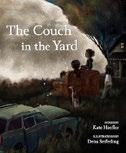
A rural family takes part in a nightly ritual. As the sky darkens, the family tinkers with a rusty old car. After securing the titular couch to the car’s roof, they drive over “the gravelly roads… / up in the mountains, down by the hollow,” to a field of old abandoned vehicles. With a little love and magic, their car takes flight over the open space, where they’re bathed in the light of “a moon that is wondrous, / that will never break” and gaze at the fog, “which hugs the mountain like cozy bedsheets.” After their nightly trek is complete, they return to their humble abode filled with love. Inspired by nightly drives with her family in Appalachian Ohio, Hoefler tenderly pays tribute to an area whose inhabitants are often misunderstood or looked down upon. Using a “House That Jack Built” format, she finds beauty in things many would overlook, like “the field with the school bus surrounded by sheep.” Quotidian details mingle with the strange and surreal, with captivating results. With a shimmering, impressionistic flair, Seiferling’s digital illustrations add texture to the deep blues and blacks of the
nocturnal setting. Author’s and illustrator’s notes further emphasize the importance of finding meaning in the simple and everyday. Most of the family members are tan-skinned and present East Asian; one child is darker-skinned. A spellbinding love letter to rural America—and a reminder to look more closely at the world around us. (Picture book. 4-7)
Holzer, Hannah Rose | Penguin Young Readers (112 pp.) | $13.99 paper | Dec. 31, 2024 9780593754955 | Series: TIME for Kids
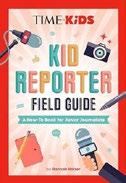
Useful tips for young journalists—and for their readers, too. Holzer, a working reporter herself, offers brief, general advice about picking topics and finding an angle, setting up and conducting interviews, keeping accurate records, and livening up news stories with well-chosen details. Though she skips over blogs, vlogs, and broadcast media and only briefly covers photojournalism and editorial cartoons, she does explain at least some of the differences between news and feature stories, sports reportage, opinion pieces, and reviews. She also provides a taste of journalistic history with nods to Nellie Bly, Ida B. Wells, and Bob Woodward and Carl Bernstein (among other luminaries), lets several cub reporters in the TIME for Kids program chime in with their own experiences and insights, and offers readers a handful of practice challenges like writing a movie
review and a letter to the editor. In line with her stance that the pursuit of truth is a crucial journalistic objective, she includes guidelines for evaluating the trustworthiness of information sources—a section that should be of interest to general readers as well as conscientious budding journalists. Bright spot graphics and color photos of smiling reporters diverse in terms of race and age further lighten this airy introduction. “Go forth!” the author grandly closes, find the stories that need to be told, and “apply what you’ve learned in this book by practicing good journalism habits.”
A slick overview of basic procedures and principles. (bibliography) (Nonfiction. 7-10)
Horn, Peter | Illus. by Jessica Meserve Trans. by Johanna McCalmont NorthSouth (40 pp.) | $19.95 April 8, 2025 | 9780735845671

An endearing guessing game involves 10 animal fathers.
A young tortoise named Sebastian knows that his dad is good at keeping him warm, especially during tender snuggles. But what else can fathers do? Daddy Tortoise has a long list of ideas. “Dads can do lots of things,” he says as a family of birds perch in a nest above. “Like chirp to their chicks to tell them it’s time to learn how to fly.” Sebastian dissolves into a fit of giggles: “Then he’s not a daddy tortoise like you!” Daddy wonders aloud, “Then whose dad is it?” A suspenseful page turn reveals Sebastian’s triumphant answer: “That’s Daddy Bird.” The pattern continues as Sebastian and his dad explore everything from spiders and grasshoppers to frogs and hedgehogs. Layouts vary between full-page spreads and comic book–like panels. Details such as long, shadowy ears or a silky web tucked in the corner of an image offer additional clues as to who the next father might
be. Softly lined illustrations in burnt oranges and bright sunny yellows infuse the forest with warmth, echoing the cozy relationship between Daddy Tortoise and his hatchling. Originally published in Switzerland, this lovely tale invites fathers everywhere to cuddle their little ones close for a delightful read-aloud. Sweet, interactive, and informational—a winsome combination. (Picture book. 3-6)
Husted, Ursula Murray | Quill Tree Books/ HarperCollins (272 pp.) | $15.99 paper March 11, 2025 | 9780063157934

Set in Italy during the Renaissance, this graphic novel introduces readers to Mella, a young girl who works at Sandro Botticelli’s painting studio. Because girls and women aren’t allowed to be members of the artists’ guild or even to be apprentices, Mella is only allowed to clean brushes and tend the chickens at the maestro’s studio. But Mella loves to draw and has a real talent for it. When Datus, Botticelli’s junior apprentice, takes her drawing and passes it off as his own, he and Mella have a spat that tests their previously teasing, humorous friendship. But as they learn to respect each other’s needs, they strike a bargain: Datus will teach Mella how to prepare gesso panels, construct brushes, and mix egg tempera paints, and Mella will teach him how to draw. This story provides fascinating instructions on making paints and brushes that will inspire artistically minded readers, and it showcases the indomitable will of young women who lived in a time when they had defined—and, for the most part, subservient—roles in society. The book’s panels cleverly use a color palette that harks back to the natural pigment colors available in the 15th century, with the artwork accurately depicting historical settings and costumes.
Charming and inspiring: an empowering feminist story enlivened by historically accurate artistic techniques. (glossary, art notes) (Graphic historical fiction. 8-12)
Hutchinson, Shaun David | Labyrinth Road (288 pp.) | $17.99 | Feb. 11, 2025 9780593646335 | Series: The Kairos Files, 2

R aised by Kairos— an agency that investigates “strange phenomena and creatures”— a supernaturally gifted girl embarks on her first solo mission. Twelve-year-old orphan Samantha Osborne, who can make people see her as someone else, yearns to prove her worth to Kairos. Assigned to retrieve a list of monsters who are masquerading as humans that was compiled by a deceased agent, “Sunny” moves in with the Griffin family, posing as a visiting cousin. After younger Griffin son Graeme discovers her deception, she joins forces with him and her old friend Hector, who can travel to the land of lost things. As they follow the agent’s enigmatic clues to the list, Sam also starts to investigate the unsettling Draven family, the Griffins’ new neighbors. She knows they’re hiding something. Though Kairos orders her to desist, Sam’s loyalty to the agency is wavering. Do they really avoid hurting monsters who pose no threat? And what role has Kairos played in her own history? Returning fans will welcome this sequel, focused on the adventurous Sam, and they’ll appreciate Hector’s return as well. Despite the book’s large cast, its characters, mostly cued white, are distinct and interesting. Though the story unfolds at a leisurely pace, the worldbuilding is creative and detailed, and the various mysteries will keep pages turning. Interspersed throughout the story are delightful Field
Guide entries on various types of monsters, Santa Claus among them. This creative sequel explores questions of trust, betrayal, ethics, loss, and the meaning of family.
(Supernatural. 9-12)
JOHO | Graphix/Scholastic (128 pp.)
$12.99 paper | Feb. 4, 2025 | 9781546124962
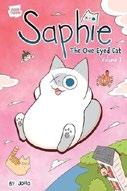
T he antics of a one-eyed cat and her siblings, adapted from a webcomic about the author’s own pets. In a whimsical intro, a somewhat clumsy God bakes three felines. Orange tabby Simba is dispatched from heaven sans fuss. But brown Sahn is too hot to handle and plummets to Earth after he slips from God’s hands. While making the third cat, Saphie, God drops the dough on the floor, so the gray-and-white kitty ends up missing an eye. “A little dust never harmed anybody,” God says with a smile, and Saphie joins the other cats in a family of four humans. Loosely connected vignettes provide a wry cat’s-eye view of everyday life as Saphie endures the indignity of being brushed, the injustice of being put on a diet, and the exasperation of being a big sibling when mischievous black-and-white kitten Sol arrives (after Lucifer crashes God’s kitchen to add “flay-va”). Cat lovers will grin at the feline siblings’ squabbles and sympathize with “human sister” Joho as she attempts to enlist the cats as exterminators, to humorous results. Each cat’s realistically quirky personality is reflected in the onomatopoeia-adorned comic panels, from cool Simba’s deadpan gaze to scaredy-cat Sahn’s wide eyes. Refreshingly, Saphie’s missing eye—given a more secular origin story in a nostalgic adoption flashback—is only part of her (literally and figuratively) well-rounded character. God and Lucifer are tan-skinned; Joho and her family present East Asian.
Catnip for feline fans.
(Graphic fiction. 8-12)
The chef’s Billy and the Epic Escape was criticized as insensitive to Indigenous Australians.
Jamie Oliver has halted sales of his new children’s book after it was criticized for being insensitive to Indigenous Australians, the Guardian reports.
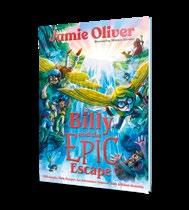
The celebrity chef pulled Billy and the Epic Escape from shelves in countries including the U.S. after criticism from the National Aboriginal and Torres Strait Islander Education Commission (NATSIEC) in Australia.
Oliver’s book, illustrated by Mónica Armiño, is a sequel to his 2023 novel, Billy and the Giant Adventure. The new book followed the young titular character and his best friends as they explore a magical forest that is threatened by a mysterious villain. In the book, the villain kidnaps an Indige-
He was known for illustrating the Magic School Bus series of kids’ books.
Bruce Degen, the author and artist who brought the Magic School Bus series of children’s books to life with his vivid illustrations, has died at 79.
Degen’s son, artist Benjamin Degen, announced his father’s death in an email, writing, “Your thoughts, well wishes and memories helped to buoy his spirits and to turn his last weeks into a celebration.”
Bruce Degen, a Brooklyn native, was educated at Cooper Union and the Pratt Institute and taught art in New York public schools for more than two decades.
nous Australian girl who is living in foster care.
Sharon Davis, the CEO of NATSIEC, said the book was insensitive to Indigenous Australians, who have been forced to reckon with the country’s child removal policies of the 20th century, in which Indigenous children were forcibly taken from their families.
“It perpetuates a racist stereotype that has been used to justify child removals for over a century,” Davis told the Guardian. “This portrayal is not only offensive but also reinforces damaging biases.”
Oliver apologized for the book, saying, “I am devastat-

For children’s books about Indigenous life recommended by our editors, visit Kirkus online.


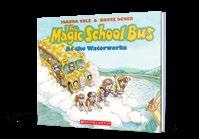
left,
In 1977, he published his first book, Aunt Possum and the Pumpkin Man, which he wrote and illustrated. He would go on to illustrate dozens more books, some of which he also wrote, including Sailaway Home, I Gotta Draw, and Snow Joke
But he is best known for contributing the art to Joanna Cole’s Magic School Bus books, which followed Ms. Frizzle,
ed to have caused offence and apologise wholeheartedly. It was never my intention to misinterpret this deeply painful issue. Together with my publishers we have decided to withdraw the book from sale.”—M.S.

Jamie Oliver
an eccentric elementary school teacher who takes her students on adventures to different time periods and places.
The first installment, The Magic School Bus at the Waterworks, came out in 1986; 12 more books in the original series followed. The books formed the basis for a popular animated television series featuring Lily Tomlin as Ms. Frizzle.
Degen’s admirers paid tribute to him on social media. On the platform X, editor Regina Griffin posted, “How I loved his books. And admired him.”—M.S.

For reviews of Bruce Degen’s books, visit Kirkus online.
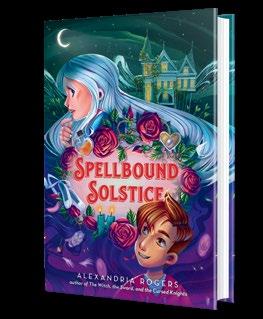

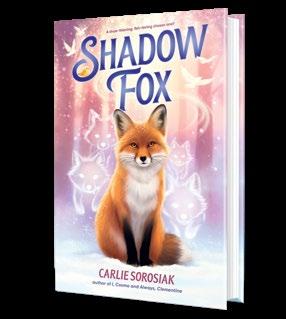



Karsten, Guilherme | Eerdmans (44 pp.)
$18.99 | Feb. 11, 2025 | 9780802856364

A guileless child, a duplicitous “dog,” and an ill-fated fish cross paths. A shout tears through a quiet night. The young narrator’s beloved pet fish is lying on the ground, surrounded by broken glass. (Luckily, the child finds the fish a makeshift home in time.) Who could have done such a dastardly deed? Just then, Ramon Fellini the Dog Detective arrives. While Ramon may look like an ordinary tuxedo cat, he tells the protagonist that he’s “a dog in a cat costume”—and a Master of Disguise. Ramon peppers the child with rapid-fire questions, then decides to take the investigation, and the hapless victim, outside—you know, in order “to recognize the suspect.” Nothing to see here! Ramon returns alone, having reached a truly unbelievable conclusion. All’s well that ends well…or is it? Though the protagonist remains blissfully unaware, the illustrations and Ramon’s slip of the (scratchy) tongue make it crystal clear who’s to blame for this catastrophe, earning this Brazilian import, translated from Portuguese by the author, a well- deserved spot amid the slew of stories in which the main character skips blithely into disaster while a delighted audience screams, “You’re going the wrong way!” The expressive artwork is appealing; the lightskinned, wide-eyed, bespectacled moppet is all worry and naïveté, while self-assured Ramon, with his magnifying glass and case file, is a delightfully devious detective. This is
a charming read for those who like their stories a little macabre—and a lot tongue-in-cheek.
A hilarious reminder for all: Beware the cats—especially those with dubious claims and credentials.
(Picture book. 4-9)
Kurtz, Jane | Illus. by Claire Messer
Beach Lane/Simon & Schuster (40 pp.)
$19.99 | April 8, 2025 | 9781481467032

The true story of an Indian rhino who toured Europe in the 18th century, wowing common people and royalty alike. Orphaned at an early age and initially raised as a household pet by a Dutch merchant, Clara seems to have come as close to tame as rhinos get. Her world quickly opened up when a visiting sea captain proposed taking her on the road so others “could see for themselves just how wonderful a rhinoceros was.” Though it may be a stretch to declare (as the illustrator does in her appended note) that Clara “was very happy in human company,” at least she seems to have tolerated crowds well. In Messer’s idealized color linocuts, Clara comes off as a sort of huge, gray dog who romps with children and licks her keeper’s face, poses unrestrained for artists and scholars, visits Louis XV’s private zoo, and, with a bright smile, greets diverse spectators in groups large and small. In a rather more credible narrative and afterword, Kurtz tucks in homey details such as Clara’s love of oranges. More cogently, while acknowledging that rhinos aren’t pets
A gratifying tale about community, belonging, and cats.
and that leaving them to live in their natural habitats is better than confining them to pastures or cages, she suggests that by being in the public eye, Clara played at least a small part in the scientific revolution by helping to dispel myths and misconceptions about her own species and large animals in general.
A sweet historical tidbit. (map) (Informational picture book. 6-8)
Kyi, Tanya Lloyd | Tundra Books (288 pp.) $16.99 | March 4, 2025 | 9781774882108
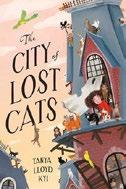
An abandoned mansion inhabited by cats is set to be demolished, but one small girl might be the key to saving it. When 12-yearold Fiona once again attempts to run away from the tiny apartment she shares with her aunt, she happens upon a dilapidated, historic home, known to its feline residents as The City. Perhaps saving this place and these lost cats is the Destiny that Fiona’s been seeking ever since her parents died, leaving her adrift. She quickly realizes this will be no easy feat: Destruction is imminent, and Fiona and the cats all struggle to determine whom to trust and whom to blame. Third-person chapters shift among the perspectives of Fiona (who has dark eyes and curly dark hair), three of the cats (each with a distinct personality), and a demolition worker. Delightful poetic interludes from two lost parakeets who also live in the house, as well as various notes, flyers, and news bulletins, appear between chapters, adding intrigue and offering additional insights into what’s happening in the diverse community. With all these different elements and perspectives, readers may at first require patience, but everything comes together in a rewarding and exciting way with surprising twists and reveals. Fiona’s journey to advocacy is inspiring, and the book thoughtfully touches on not just the need for shelters for animals, but the human housing crisis as well.
A reminder that there’s a spark inside every one of us.
THE QUIET ONE
A gratifying, bighearted tale about community, belonging, and cats. (Fiction. 8-12)
Quiet One Lee, Yiting | Eerdmans (40 pp.) $18.99 | March 4, 2025 | 9780802856418
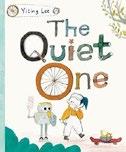
A shy girl dreads an upcoming school presentation but, with a little help, finds her voice.
Milly is the “quiet one” in class, secluded in the corner with a book. She worries about show and tell next Friday—what if she doesn’t have anything to say? At home, she hides out in her family’s junk shed, creating wondrous inventions from old things. One day she repairs a broken robot vacuum. Milly uses her tools and some spare parts to add wheels, appendages, and other frills to the gray, blocky, droidlike figure, and when she turns it on, it opens its eyes and introduces itself as Arnold. At last, Milly has a friend, and she begins to share her ideas with her creation; together, they build a spectacular playground out of found items. Friday arrives, and Lee cleverly depicts the audience as huge and looming figures several times Milly’s size. Milly’s fear is palpable, and she freezes up. But Arnold comes to the rescue, and before she knows it, Milly is swept up, enthusiastically describing how she made Arnold. Watercolor and colored pencil artwork dominated by earthy tones create a warm, childlike look and convey the underlying message that humble appearances can contain great depth and creativity. Milly has paper-white skin and dark hair; her classmates vary in skin tone. A reminder that there’s a spark inside every one of us. (Picture book. 4-8)
Are You a Friend of Dorothy?: The True Story of an Imaginary Woman and the Real People She Helped
Lukoff, Kyle | Illus. by Levi Hastings
Simon & Schuster (40 pp.) | $19.99
April 29, 2025 | 9781665931663

Before “We’re here, we’re queer, get used to it!,” there was the quiet rebellion of “Are you a friend of Dorothy?”
Hoping to find community hidden in plain sight due to bigotry in early-20th-century America, many LGBTQ people would ask others the titular question; a yes meant that the other person was also queer. Stonewall Award winner Lukoff presents a straightforward look at the origins and effects of this simple yet effective inquiry. Who was the “Dorothy” in question—could she have been famed author Dorothy Parker? Or Dorothy Gale, the protagonist of the 1939 film The Wizard of Oz, played by gay icon Judy Garland? While the text is light on concrete facts about this query (a section is devoted to the imagined pursuits of trench coat–clad government officials seeking out “Dorothy”), it more than compensates by effectively showcasing the unabashed joy of living one’s most authentic life, showcased in Hastings’ energetic, appealingly retro digital art, populated by diverse characters. Lukoff notes that while we’ve made progress since then, queer people still face discrimination and prejudice. But, he adds, “we still know how to find our community. And learning about the ways we survived in the past could help people in the future.”
A historical look at the importance of community, now more relevant than ever. (author’s note, two history books for adults) (Informational picture book. 5-8)
Mackler, Carolyn | Scholastic (240 pp.)
$17.99 | March 4, 2025 | 9781338734218
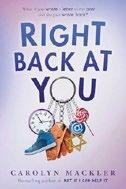
Two misfit 12-yearolds find friendship via a wormhole. It’s 2023, and Mason is having a rough time at school and at home, so his parents send him to a therapist. She suggests that he write a letter about his problems to “anybody or nobody.” Although Mason decides to write to Albert Einstein, a quirk of spacetime causes the letter he’s hidden in his closet to instead find its way to a girl named Talia, who’s living in western Pennsylvania in 1987. It takes a while for both kids to believe they’re not the victims of some elaborate prank, but they become close friends and confidants through typical tweenage struggles—separated parents, sibling friction, bullying, and antisemitism from peers. (Talia refers to herself as “half-Jewish,” and while white-presenting Mason isn’t Jewish, as a New Yorker he has Jewish friends and classmates.) Both children in this epistolary novel put an unrealistic amount of detail into their letters, and at many points their voices sound awkwardly adult, especially when they’re discussing Talia’s experience of anti-Jewish bigotry. Readers will quickly become invested in Mason’s and Talia’s lives, however, and the mystery of how, and why, they’re connected is satisfying enough to keep the story moving forward. Readers aware of recent controversies surrounding Alice Walker may be surprised to see her cited positively in a book that addresses the scourge of antisemitism.
An absorbing introduction to the paradoxes and possibilities of time travel. (Fiction. 10-14)

Manley, Curtis | Illus. by Tracy Subisak Roaring Brook Press (40 pp.) | $18.99
March 11, 2025 | 9781250168238

How to assemble and program a dog. Like live dogs, cybernetic ones turn out to need a lot of work—as Grace discovers when the pooch her parents finally let her get comes as a box of mechanical and electronic parts. Putting them together is only the first step. In addition to dealing with literal and figurative bugs—a circuit-frying moth and a waggy but worrisomely loose tail—Grace soon finds that the pup, aptly named Kit, mechanically obeys a few simple commands exactly the same way, every single time. That won’t do, so Grace determinedly sets out to expand the dog’s default programming, writing dozens of lines of coded instructions that are reproduced in full and making corrections through trial and error that inject a broad strain of unpredictable doggy mischief into her pet without letting him completely off the leash. One last command—“Hugs!”—leads the gleeful young software engineer to a logical conclusion: “Best dog in the known universe.” Closing guidelines for developing and testing coding projects of any sort make Manley’s main purpose clear, but Grace’s general hands-on approach makes a good model for owners of nonrobotic dogs, too. Grace and her mother are brown-skinned, her father is lighter-skinned, and other dog owners in an outdoor scene are racially diverse. Brimming with oodles of doggy affection, as well as useful pointers for young programmers. (Informational picture book. 7-9)
Kirkus Star
Marcus, Leonard S. | Farrar, Straus and Giroux (160 pp.) | $21.99
March 4, 2025 | 9780374392116
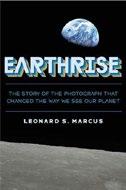
The inspiring and dramatic story of how one of the most powerful photos of all time came to be.
In his customary witty, wellinformed way, Marcus offers a frank and coherent account of the space race, starting with an explanation of how Sputnik and the other early achievements of the Soviet space program kicked off a frantic scramble by the U.S. to catch up. NASA “morphed almost overnight into a high-profile, super-cool New Frontier operation staffed by whip-smart rocket scientists and clean-cut, highly trained All-American space cowboys.” Among the latter was Bill Anders, who snapped the iconic photo on Christmas Eve, 1968, as the Apollo 8 mission rounded the moon on the fourth of its 10 orbits. That photo— turned sideways so the lunar surface would be more comfortably horizontal—created an instant sensation; the author argues persuasively that its depiction of our fragile, floating planet not only became a symbol of Earth Day and the environmental movement, but also profoundly changed (and continues to change) “the way people understand their place in the universe.” Contemporary photos of astronauts, rockets, book covers, presidents, and marching protesters effectively convey senses of
Provocative and thoughtful—rich in period details and timeless insights.
both the tumultuous historical context and the heady excitement of those early ventures into space. Along with overviews of the later lives of Anders and his two fellow crew members, the author closes with a moving reflection that Apollo’s legacies are not only scientific and technological, but human as well. Provocative and thoughtful—rich in period details and timeless insights. (bibliography, source notes, index) (Nonfiction. 11-14)
Marko, Cyndi | Paula Wiseman/ Simon & Schuster (40 pp.) | $19.99 March 4, 2025 | 9781665938938

An uncertain young monster gets tough. Seth should instill dread with his sharp fangs and claws, his intimidating horns, and his odorous drool. But instead of terrorizing people, Seth cowers in fear from just about everything. One day his friend Ruthie asks for his help finding her missing turtle. Seth confesses he’s afraid of turtles. Ruthie encourages him to “monster up” (“Show some fangs! Roar!”), and he agrees to try it. The pals search everywhere: Ruthie’s cellar, a creek, and the woods, all of which frighten Seth. Ruth periodically reminds him to “monster up,” but when the pair stumble upon what might be a haunted house, it’s Seth’s turn to bolster the frightened Ruthie’s flagging confidence. He tells her to monster up! A riotous twist reveals some residents—a group of bats—who are terrified of Seth…and vice versa! As for the turtle? The young monsters find her when they return home. Inhabiting a familiar suburban setting, Marko’s endearing, stick figure–like creatures are more goofy than scary. Kids will enjoy poring over the multiple levels of the various houses the pair explore; adorable ghosties can be found throughout the haunted house, unbeknownst to Seth and Ruthie. Readers will adore this warm, comical story reassuring them they can learn to
overcome anxieties. Onomatopoeic sound effects are incorporated into the humorous, dynamic illustrations. Monstrously encouraging, entertaining fun. (fun facts on turtles, information on World Turtle Day, turtle resources) (Picture book. 4-7)
McAnulty, Stacy | Illus. by Elizabeth Baddeley | McElderry (48 pp.) | $19.99
March 18, 2025 | 9781665937474

It’s 1903, and the prospect of driving an automobile across the United States in under three months seems impossible.
Dr. Horatio Nelson Jackson makes a $50 wager to prove otherwise. One problem? He doesn’t know how to drive. He hires Sewall Crocker, a bicycle racer, as his instructor, mechanic, and companion. Their used Winston Touring Car—which they name “the Vermont”—lacks modern accessories such as seat belts, a windshield, and a roof. There are no freeways or highways yet to connect cities, nor maps to follow. Adding to the pressure, just after the Vermont leaves California, two other automobile teams set out to beat them across the country. Mishaps plague the Vermont on its journey: The duo encounter treacherous terrain, they lack key supplies, and their belongings keep flying out of the automobile—“BOINGY-BOINGY-BOINGY.” Their spirits are buoyed when they adopt an ugly but amiable mascot, Bud the bulldog. Stalls, breakdowns, and a harrowing crash don’t temper the team’s “nothing-will-stop-me spirit,” delivering them victoriously to New York City, 63 days after their departure. Friendly digital line illustrations in sepia tones complement the old-timey feel of the text, enhanced by McAnulty’s quick-witted storytelling, which echoes an early-20th-century newsreel. Comic-style framed panels pull important moments to the foreground and break up blocks of text into
manageable bites. Jackson and Crocker were white; background characters have skin tones ranging from peachy pale to medium brown.
A direct route through a funny, adventurous, historical romp. (map, timeline, fun facts, sources) (Informational picture book. 5-8)
McGuire, Robert | Workman (64 pp.)
$12.99 | $9.99 paper | March 18, 2025 9781523526116 | 9781523526109 paper

A Japanese American boy literally makes new friends and embarks on a wild journey. Mike is bored. It’s raining, and he has no one to play with, so he decides to set off on an adventure. Going alone would be no fun, so he makes a friend using origami—a paper dog he names Zoe. They soon find themselves in the jungle. After exploring for some time, they get lost, but an origami monkey comes to their rescue. Together, the new friends head to the sea, where Mike folds an origami boat. The trio sail to a mysterious island, where they must face an oni, a grumpy, troll-like creature. Based on the Japanese folktale “Momotarō,” this is a quick but fun escapade. The unseen narrator poses questions at critical junctures (“How would they find a way out?”); the origami directions offer answers. Seven origami projects are included, with clearly expressed written and visual instructions. Mike and the page background are drawn in a minimalistic cartoon style, while his friends are folded out of actual origami paper, with cartoon faces imposed on them. The illustrations rely on only a handful of colors, matching the hues of the origami paper. The book opens with helpful information on common origami folds and symbols; it also includes 28 sheets of origami paper and a recipe for gyoza (folded dumplings).
A winning combo of creative craft and absorbing story. (author’s note) (Picture book. 6-10)
Kirkus Star
Mensah, Bernard | Illus. by Raissa Figueroa | Dial Books (32 pp.) | $18.99
Sept. 10, 2024 | 9780593406410
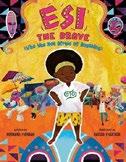
A courageous young Ghanaian girl faces a scary challenge. Nothing fazes Esi—up until the day Mummy and Daddy load up the car and take her to the Kakamotobi Festival, where people dance, eat street food, and don strange masks. Esi assures her parents that she won’t be scared. But when they arrive, the mask-wearing festivalgoers look like monsters “with GOOGLY eyes, DROOPY LOOPY tongues, and TOWERING TALL legs.” They’re so frightening that Esi hesitates to leave the car. But when her parents are seemingly abducted by the creatures, Esi leaps into action. Striking a bold stance that even Max of Where the Wild Things Are would find impressive, she demands that the creatures “GIVE MUMMY AND DADDY BACK NOW.” Her parents quickly remove their own masks and comfort her. “Were you afraid?” asks Daddy. “Don’t be silly.” Esi was never really afraid and ultimately joins in the festivities with a mask of her own. Esi conjures up visions that are simultaneously frightful, dynamic, and all-around enchanting—a wonderful reflection of how very young children often see the world. Mensah’s onomatopoeia-laced narrative is a delight, while Figueroa relies on full-page spreads festooned with arresting West African–inspired patterns, as well as the clever use of negative space, dramatic angles, and vignettes.
A monstrously good time. (author’s note) (Picture book. 4–9)
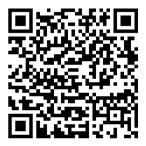
Miller, Kelly Leigh | Atheneum (160 pp.) | $12.99 | March 4, 2025 9781665932158 | Series: Cloud Puppy

Cloud Puppy and her friends explore differences within their shared interests.
Our protagonist—a fluffy white creature who’s “part cloud and part puppy”—loves playing video games, as do many of her friends. But they like different types. Cloud Puppy’s favorite games involve building a farm and caring for a digital pet. Her friend Jack somewhat unhelpfully points out that this is a “lower-tier” game and that he likes S-Tier games, referencing a ranking system that places more competitive games (which also trend toward more violent and scary) in higher regard. According to Jack, the games Cloud Puppy likes are “for babies,” ranked much lower. Cloud Puppy doubts her own tastes, and a kerfuffle ensues. Ultimately, she and Jack decide on a video game trade-off, where each explores games from the other’s chosen genre. This narrative boasts the high-energy cuteness that made the first volume sparkle; likewise, it also explores the challenges of childhood social dynamics. Unicorn teddy bear Berry Rose, strong-willed Cloud Puppy, wild-eyed, reindeerlike Jack, and blobby green Mossquatch form a great team who may fight but always make up and grow together. While the first installment also dealt with an element of nerd culture—comic conventions— this one is more focused on the nitty-gritty of gaming culture, and the conflict may not resonate as strongly for readers who aren’t as interested in the topic. The main story is followed by a shorter one that sees Berry Rose delving into LARPing, offering further opportunity for sparkles, costumes, and imaginative play. A sweet examination of social dynamics that will especially interest gamers. (Graphic fiction. 6-10)
Mull, Brandon | Illus. by Brandon Dorman | Shadow Mountain (256 pp.)
$18.99 | March 4, 2025 | 9781639933792
Series: Tales of Newel & Doren, 1
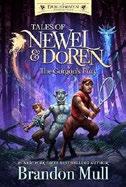
The prospect of earning smartphones as a reward spurs two satyrs onto a quest to rescue Fablehaven from an enraged gorgon in this series opener. Mull returns to the world of Fablehaven with an adventure aimed at a younger audience featuring goat-footed, TV-obsessed Newel and Doren. The cousins face two crises: The gorgon Grumella has begun turning the hidden preserve’s mythical residents to stone in swathes, and unless the two can come up with a truly spectacular prank, they stand to lose the Satyr Games for only the fourth time since the competition’s 1711 inception. So, while chucking in a gratifyingly diverse cast of magical beings from a monstrous hydra, hostile goblins, and a lovely unicorn to a pair of grumpy but helpful sisters (one a swamp hag and the other a bog hag), the author sends his hairy heroes from Connecticut to Florida and various magical realms in search of a solution. They undertake inner quests, too; Newell, who frets about becoming “less satirical” and more “humanly” from all the contact with the outside world, receives savvy character-building advice from an eldritch doll. Existing fans will enjoy this action-packed story that works equally well as an introduction to Fablehaven. The small human cast is minimally described and largely racially ambiguous. Final art not seen.
A fast-paced, literally satirical spinoff. (discussion questions) (Fantasy. 8-12)

Nargi, Lela | Illus. by Anne Hunter
Random House Studio (40 pp.) | $19.99
March 11, 2025 | 9780593647554

A Canada goose experiences love, loss, and, once more, joy.
A male goose courts a female. The two become inseparable, making a nest, raising goslings, migrating with their flock, and returning again and again to the same spot to rear their young over the years. But one day, the male goose starts to fade. He dies, and his mate remains behind, alone, when the rest of the flock flies south for the winter. As the seasons pass, she slowly starts to engage with the world again and finds a new and different chance at love. Realistic illustrations and simple yet elegant text keep the story grounded. Rooting her work in the everyday habits and behavior of Canada geese, Nargi never anthropomorphizes or veers toward the overly sentimental; the female goose’s emotions feel well earned. Though the death of the male is understated, it rings especially true, as do the portrayals of the female waiting and watching other animals returning in the spring. Nargi and Hunter offer a gentle but genuine depiction of loss and recovery. Wrapping up with backmatter containing further information on Canada geese, this is a clear, engaging, and empathetic introduction to these animals.
An effective and moving meditation on grief and hope. (Picture book. 5-9)
National Geographic Kids | National Geographic Kids (216 pp.) | $9.99 paper | Feb. 4, 2025 | 9781426375897

A colorful guide to oddities in the animal world. This album of animal photographs and facts follows the format of previous titles in this National
Geographic series, such as Deadliest Animals on the Planet (2023). From the blue-ringed octopus, whose “shiny blue rings light up,” to three birds with astonishing hairstyles—the hoopoe, the Victoria crowned pigeon, and the cock of the rock—every page has a critter or group of critters with a surprising habit, characteristic, or appearance. Each unusual creature is shown close up, either filling the page or within a circular frame. Text boxes and more circles describe each animal’s peculiarities. Sometimes an animal has a brief exclamatory comment, such as “bizarre!” or “no way!!” The word weird also appears often. While the text is fairly challenging to read, there isn’t much of it, and those attracted by individual images may be willing to work to puzzle out the short paragraphs. The facts are engaging: The tapir, a land animal, likes to poop underwater, and the goblin shark has jaws that move like a slingshot. There’s no apparent organization underlying the presentation of the myriad creatures, both vertebrates and invertebrates, although the index does group them into broader categories (“marine mammals,” “rodents,” “worms”) as well as listing some animals individually. An animal-loving browsers’ delight. (photo credits) (Nonfiction. 8-12)
Naylor-Ballesteros, Chris | Nosy Crow (32 pp.) $17.99 | April 1, 2025 | 9798887771328 Series: Frank and Bert, 3

In the friends’ third outing, Frank faces two challenges: delayed gratification and honesty. Frank the fox (who narrates) and Bert the bear’s previous picnics have been marred by mishaps: rain, wasps, a scary squirrel. But this one will be perfect—plus, Bert has brought along a surprise in his box. The duo set out for their favorite spot under a tree, near some rounded hills.
Novesky’s often-exquisite verse intentionally echoes Plath’s language.
THE POET AND THE BEES
The lunch looks delicious, and Frank can’t wait for the surprise. When it’s unfortunately delayed by Bert’s post-meal nap, Frank opens the box, which turns out to be full of caramel crunch cookies: “my absolute favorite cookies in the whole world.” Surely it would be OK to eat just one? “Or maybe even two…or three…or four…or five!” Uh-oh. Now Frank must explain why the box is empty. Frank blames those scary squirrels—10 of them! But Bert is so worried about his friend’s tussle with the squirrels that Frank feels guilty and decides to tell the truth—and is swiftly forgiven. Their next picnic looks like it might just resemble their last one, with Fox bearing muffins for Bert…but there’s a surprise ending for everyone! The language and pacing are just right, the tone understated, the conflict relatable. The squirrels are manic without being truly scary. Bert’s scribbly fur and Frank’s red hatch marks evoke character, and their accessories, all blue for Fox, all pink for Bert, further help differentiate them.
Another warm and relatable triumph. (Picture book. 3-6)
Poet
the
Novesky, Amy | Illus. by Jessica Love | Viking (32 pp.) | $18.99 Feb. 11, 2025 | 9780593526392

In narrative verse organized from “Spring” to “Winter,” Novesky explores Sylvia Plath’s beekeeping in the year
preceding the poet’s death.
As she mentions in a note, Novesky—herself a poet and beekeeper—takes inspiration from Plath’s letters and poetry, including several bee-focused poems that conclude the posthumously published collection Ariel . (As Novesky explains, she draws from the revised edition that aligns with Plath’s own intended order of the poems, rather than her husband Ted Hughes’ arrangement.) In “Spring,” Plath’s sleeveless dress and palpable fear during her introduction to her bees derive from her poem “The Bee Meeting.” Novesky’s often-exquisite verse intentionally echoes Plath’s language, including thrice-repeated words and phrases. Lines in “Summer” reveal the necessity of Plath’s early-morning writing: “In the blue hour, her hour, / the poet writes / until the babies wake / just past dawn. / She writes like mad , / a poem, a poem, a poem.” Italicized phrases and lines are pulled directly from Plath’s own writing, a fact Novesky doesn’t specifically acknow ledge. Love’s muted watercolor-and-ink illustrations imbue the book with a fitting poignancy, contrasting practical details—such as the poet caring for her hive or her children— with tender images of flowers, seasonal changes, bees, and jarred honey. The opening and closing illustrations depict snowdrops, completing the seasonal cycle. Novesky successfully refocuses the lens from Plath’s tragic death to the poet as artist, centering her hopeful ambition and keen relationship with nature.
Attentive, deeply respectful, lovely. (author’s note, photograph of Plath) (Picture-book biography. 5-9)
DOWNPOUR
Glitch Girl!
Oet, Rainie | Kokila (448 pp.) | $18.99 March 11, 2025 | 9780593696514

In this work inspired by the author’s life, J —, a neurodivergent, nonbinary trans girl, grasps for love and community as she plunges and loops on the roller coaster of her life. J —, who uses she/her and they/them pronouns, wants to “be good”: for her parents, who used to make her feel loved; for the teachers who don’t seem to like her; for the Guests in the computer game Coaster Boss, who keep leaving her theme parks; and for classmate and crush Junie, who trusts her. But the rules she’s supposed to follow are impossible. She forgets her homework and makes too much noise in class. Her parks are in debt, and her Guests die in accidents. Desperate for kindness, friendship, and self-understanding, J — latches onto Junie when they meet at the start of fifth grade and obsesses over an imagined love between them, even as the two drift apart. This coming-of-age story follows J —, the child of Russian Jewish immigrants, from fifth through seventh grades. The narrative, written in spare, direct verse, spirals deeply into J —’s traumatic, abusive upbringing and her unhealthy fixation with Junie, which spawns a rivalry with Junie’s friend Garrison. Coaster Boss acts as both a mechanism of escape and a reflection of her mental health. Although the majority of the narrative is heavy with loneliness and anxiety, the resolution is hopeful and empathetic.
A turbulent, emotionally wrenching coming-of-age story. (author’s note, interviews) (Verse fiction. 10-14)
Ohnari, Yuko | Illus. by Koshiro
Hata | Trans. by Emily Balistrieri
Red Comet Press (40 pp.) | $18.99
March 4, 2025 | 9781636551142

An onomatopoeic account of the joys of a sudden summer rain.
The weather is “hot, hot,” and though the book’s East Asian–presenting protagonist is initially perturbed by the downpour, the little one soon comes to appreciate it. The child notices new odors—the smell of the sky and of the ground—and sounds as droplets splatter against a yellow umbrella: “The rain is singing!” The youngster abandons the umbrella, gleefully accepting the rain’s invitation (“Let’s play! ”), leaping and splashing barefoot in puddles.
Translated from Japanese, the text is filled with a grand variety of made-up sounds, which would be great fun to read aloud, with a little practice: “KER-BABABA. ZUBABABABA. PLIP-PLOONK. KER-PLUNK. PLOOPOOPOOPOOPOOP.”
Depicting an idyllic suburban setting and making use of dramatic angles, Hata’s illustrations would show well to a group. His portrayal of rain reveals close attention to detail; in some scenes, long gray lines fall from the sky, while in others, we’re treated to fat, shimmering droplets. The child’s enjoyment is clear through words, action, and body language, even as the little one stands huddled against the escalating downpour. “Sopping wet feels good.” Eventually the weather clears up, but it’s clear that the rain is welcome anytime: The book ends on a whimsical note, with the child seated
in a bathtub, holding the yellow umbrella up against a shower of cascading water.
A delightful, sensory-rich appreciation of a childhood pleasure. (Picture book. 3-6)
O’Neill, K. | Random House Graphic (240 pp.) $21.99 | March 4, 2025 | 9780593182314
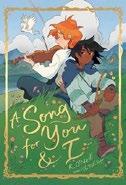
Two young people travel their own paths to personal authenticity. In O’Neill’s latest graphic charmer, readers meet Rose, a young ranger preparing for the Name Carving ceremony. Rangers are in touch with “the ways of the land” and swear “equally to serve its wildness and its humanity.” But Rose, along with their winged horse, Kestrel, is assigned to a post in the decidedly dull Lamb’s Ear Meadow, where they meet Leone, a laid-back violinist who only performs in front of his sheep. As the Name Carving looms nearer, Rose grapples with their identity, yearning to carve Rowan , the name that truly fits them, into the wooden door but fearing the consequences. Unbeknownst to Rowan, Leone faces similar struggles. Ever since his family laughed at his music, he’s feared playing for others. When Rowan makes a dangerous and impulsive decision, the pair are propelled on a journey that will change them both forever. This touching stand-alone work is lushly rendered and adorably whimsical in its wholly accessible worldbuilding. Thoughtful pacing moves the action gently forward, with many wordless sequences spotlighting the natural world’s wonders. In addition to the visual beauty, readers will find a heartwarming tale that’s certain to buoy both heart and spirit in its explorations of gender identity expression and defying expectations.
Rowan has warm, dark, copper-toned skin and wavy black hair, and pale, freckled Leone is a redhead. A sweet and thoughtful rumination on the joy of being one’s true self. (author’s note, sketchbook) (Graphic fantasy. 10-14)
Page, Tyler | First Second (208 pp.) $22.99 | March 11, 2025 | 9781250851574

Spanning 1989 to 1990, Page’s latest graphic memoir looks back on seventh grade, when he navigated shifting friendships and body-image issues. After winning an extra-large T-shirt in a competition and having to buy husky jeans during back-toschool shopping, Tyler begins to look at himself differently: “I’m not fat. Am I…?” While changing in the locker room, Tyler struggles with the ways his body differs from those of other boys, especially those who are developing muscles; even watching TV shows like He-Man reminds him that he doesn’t resemble society’s physical ideal. While Page’s cartoon art is appealing and clearly presented, the narrative loses focus as it juggles multiple storylines, including brief encounters with a bully, Tyler’s frustration as lighthearted jibes between friends turn mean-spirited, his own casual cruelty toward a fellow student, and a budding relationship with a classmate wrestling with her own insecurities. Tyler’s father’s quest to lose weight and to get the rest of the family to adopt healthier habits takes up a lot of narrative space while barely affecting Tyler’s examination of his own body. Though related, these elements don’t hang together well, leaving the book uneven in spots. Nevertheless, Tyler’s journey feels authentic as he slowly finds “a place for myself in the world…where I [can] just be myself.” Tyler and most characters present white.
Lacks cohesion but still a relatable look at bodies and self-acceptance. (author’s note) (Graphic memoir. 10-14)
Papademetriou, Lisa | Scholastic (256 pp.) $7.99 paper | Feb. 4, 2025 | 9781338603088

Se venth grader Lizzie MorrisArtino grapples with anxiety, a crush, running for office, a well-meaning but misguided mother, navigating friendships old and new, and an emotional support dog who’s more popular at school than she is. Lizzie’s mounting worries and tension, caused by her desire to please everyone around her, manifest in her imagining worst-case scenarios. Physical symptoms, such as stomachaches and panic attacks, begin to interfere with school. Papademetriou infuses the text with humor despite the serious issues she addresses, and ultimately, Lizzie inhabits an environment that’s populated with supportive friends and family. New friend Ant is solidly in her corner, even as she contends with a nasty election cycle against an opponent who’s both popular and petty. The first-person narration contains realistic dialogue, which, along with the use of texting and social media, adds to the authenticity of Lizzie’s perspective; the adults in her life, however, filtered through her perceptions, come across as twodimensional. The plot is slow to develop, and the obvious conclusion feels tacked on in order to neatly solve the main source of Lizzie’s difficulties. Still, readers will root for Lizzie, and she does have an empowering moment of standing up for herself, but because this scene happened so close to the end of the book, it leaves little time for a thorough resolution. Lizzie is of Greek and Scottish descent. Despite uneven pacing, offers a satisfying depiction of middle school pressures. (Fiction. 8-12)
Park, Jane | Illus. by Lenny Wen
Simon & Schuster (32 pp.) | $19.99
March 11, 2025 | 9781665929509

A child of Korean descent realizes that not everyone sees things the same way.
Nervous about starting a new school, the young narrator dons sneakers rather than a favorite pair of eye-catching red shoes (“I want to fit in, not stand out”). Mom understands; she’s eschewed a sparkly top today. At school, the child notices that others have very different conceptions of Mom.
“Your mom is so quiet,” another parent says. “Your mom is so serious,” says Principal Pat. The child charmingly debunks each observation. “Outside Mom” may be quiet, but “Inside Mom” is anything but. While many see Mom as a serious, down-to-earth, rigid presence, a different side of her emerges: a chatty, prank-loving woman who once bravely uprooted her life to emigrate to a new home. The young protagonist can relate, soon withdrawing after feeling uncertain in this unfamiliar classroom: “I become quiet…Like an Outside Me.” But Mom reassures the child, who in turn cherishes those few moments when Inside Mom reveals herself outside the house, such as when they meet up with friends. Offering a thought-provoking lesson in perception, Park has crafted a balanced and sensitive look at an immigrant family’s experience, delightfully lightening her energetic narrative with moments of comedy. Wen deftly uses cooler colors to portray scenes of Outside Mom while employing a warmer palette for the expressive and boisterous Inside Mom.
Warm, insightful, and tender. (Picture book. 5-8)

Park, Linda Sue | Illus. by Lenny Wen
Allida/HarperCollins (32 pp.) | $19.99
Feb. 25, 2025 | 9780358663928

In Newbery Medalist Park’s latest, a child explores the community through the eyes of others.
Eye imagery is ever-present in this book, starting with the opening pages. The protagonist, who presents East Asian, awakens; surrounded by vibrant yellow sheets that resemble an eyelid, the child’s face looks like a pupil. Downstairs, the youngster notices family members’ eyes: “Smiling eyes / bright eyes / twinkling eyes—wink!” At school, the child’s diverse classmates smile with their own “shining eyes,” “wide eyes,” and “surprised eyes— blink!” The protagonist observes the other children’s eye colors: “Brown eyes / green eyes / hazel or blue / You can see me / and I can see you!” Scenes of a charming neighborhood are warmly textured with blots and lines of bright colors that bring movement and depth to each page. The tale gently transitions to a neighborhood street as Park muses further on eyes. Characters pick out glasses; others read stories (some via braille). They also use their eyes to express—and notice—emotions. As the child eventually falls asleep, Wen leaves us with the image of constellations in the sky forming the shape of an eye. Paired with warm and whimsical portrayals of an inclusive, supportive community, the verse is simple and jaunty yet potent, encouraging young readers to consider this sense from various angles.
Eye-catching and inspiring. (Picture book. 4-8)
Pendreigh, Kirsten | Illus. by Elke Boschinger | Chronicle Books (44 pp.) $18.99 | March 18, 2025 | 9781797218670
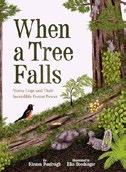
A tree can provide a place for many forest residents to grow, to rest, and to shelter—even after it falls.
The comparatively small figures of a multiracial family, glimpsed hiking or sitting on a log for a snack, are clearly entranced by the lovely, lush Pacific Northwest forest setting— readers will be enchanted, too. Pendreigh’s spare accompanying narrative is as grand and stately as the trees themselves. Over a span of years, a towering Douglas fir “suns and sways” until it “grows old. / Sap slows. / Roots let go. / Green goes brown. / The tree falls / down” with a crash and begins a “new life” as “Nurse Log.” The author anthropomorphizes her subject: “She is a place to grow,” and she “mothers” new waves of flora and fauna, from lichen and jelly fungus to towhees and bear cubs. As a reservoir of moisture in drier seasons, the log also nurtures a western hemlock “tree child” that grows from seedling to sapling, “hugs his nurse mother” with roots, and, as the old log crumbles into the soil, rears up over time to become a home and shelter in turn for many species. Pendreigh’s afterword underscores the significant role trees play, even after they’re dead, in many habitats. It’s a profound lesson for young readers to
Underscores the significant role trees play, even after they’re dead. WHEN A TREE
FALLS
absorb, even as they pore over the expanses of precisely detailed ferns, fungi, and furry forest wildlife in the pictures.
Poetic, revealing, and visually delightful. (Informational picture book. 6-9)
Person, Halcyon | Illus. by Joelle Murray Scholastic (40 pp.) | $18.99
March 4, 2025 | 9781546130451
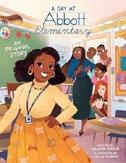
T V’s Abbott Elementary provides the setting for this original story. After discovering an acorn avalanche in her classroom, Miss Teagues realizes there’s a squirrel somewhere in the school. Now she and the other teachers have two tasks: tracking down the rodent and fixing the huge crack in the wall that’s spreading due to the acorn stash. The characters behave exactly as fans of the show would expect them to; Mr. Eddie shrieks in fear, Melissa tries to lure the squirrel out with a hoagie, and Ava plays ’90s hip-hop in the hopes that it’ll entice the creature. Readers unfamiliar with the series may enjoy the antics, but they’ll have very little context for the characters’ behaviors. The book also alternates between using characters’ first names and their honorifics and last names (for instance, the protagonist is referred to both as Miss Teagues and Janine), which may be confusing. The illustrations are vibrant, and care was clearly taken to depict the show in this new format. The school itself is identical to how it appears on TV; it even includes an effective rendering of the front of the building’s iconic mural. The character designs are accurate, incorporating instantly recognizable outfits from the series. As in the show, the cast is predominantly Black.
A fun novelty book for adult fans of the show but unlikely to appeal to newcomers. (Picture book. 4-8)
Pimienta, Jose | Random House
Graphic (256 pp.) | $21.99
Feb. 18, 2025 | 9780593569450

A nonbinary tween explores their identity after they move from Mexico to the U.S. with half their family.
Twelve-yearold Ave lives in Mexicali, Baja California, with their dad, Rodolfo, older sister, Cruz, younger brother, Ramón, and mom, Joss. When Joss is offered a teaching position at the University of Kansas, she takes the American-born half of the family to Lawrence, leaving behind Mexicanborn Cruz and Rodolfo. While Joss and Ramón embrace the change and quickly make connections with locals, Ave struggles to find their place, seeking solace in an anticipated family reunion—but stumbling upon a secret instead. Pimienta explores the complexities of identity through multiple lenses, including language, culture, values, gender, and family structure. The characters, who variously identify as Mexican, Mexican American, and Latinx, are illustrated with a range of skin tones. Different-colored fonts represent language shifts: blue when English is being used and black to indicate Spanish that’s translated into English; occasional Spanish words and phrases appear. The artwork lovingly and accurately captures the rough beauty of the desert and the ambience of the Midwestern college town. In their author’s note, which includes photos of the landscape around Mexicali, Pimienta describes their engagement with “the complicated yet sincere question I’d been asking ever since I moved to the United States: ‘If I don’t live in Mexico, what makes me Mexican?’”
An intriguing variation on border stories that looks at the challenges surrounding an intentional family separation. (Graphic fiction. 9-13)
BEANSPROUT
Potter, Ellen | Illus. by Sara Cristofori McElderry (112 pp.) | $17.99 | March 25, 2025 | 9781665926812 | Series: Squirlish, 3
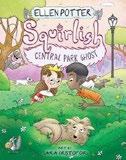
Is there a monster in Central Park?
Cordelia (who describes herself as “squirlish”— “a little bit girl and a little bit squirrel”) was abandoned in the park as a baby and raised by a squirrel; she lives in a treehouse and knows Chittering, the language of squirrels. One day, Fenton the rat (well versed in Chittering himself) tells Cordelia and her human friend Isaac that the Central Park Zoo sea lions have been spooked by a monster lurking around their pool. Groundskeeper Viola informs them that the beast is in fact a coyote that she and her colleagues have been trying to catch so they can bring him to a wildlife rehab center. Using their special skills, the trio track down the lonely, frightened coyote, who’s been separated from his pack. The ensuing adventure is filled with twists and turns and a quirky cast of human and animal characters. Moments of suspense and danger are leavened by humor. This third series entry finds Cordelia more secure in herself, and her friendship with Isaac has deepened. The Central Park setting is key to the narrative—where else but New York could a squirlish youngster encounter a wild coyote, take part in a dog parade, and earn the admiration of the Yankees’ star pitcher? Detailed cartoon art captures the action and depicts a diverse cast of humans. (Cordelia is
light-skinned, Isaac is brownskinned, and Viola presents Black.) Joyful, charming, and fantastically funny. (Fiction/fantasy. 7-11)
Reul, Sarah Lynne | Charlesbridge (48 pp.)
$17.99 | March 11, 2025 | 9781623544751
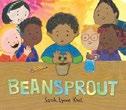
A child learns to overcome disappointment and try again. Ben’s class is planting mystery seeds. Each student picks one unidentified seed from a grab bag of possibilities, uses observation to hypothesize what it will grow into, then plants it to test their predictions. Ben picks out a seed and names it Bean. Enchanted by the seed, Ben speculates that Bean might be magic and grow to an enormous size. But even though Ben does everything right, Bean never grows at all. As the other students’ plants sprout, Ben navigates feelings of jealousy, blame, and sadness. Classroom teacher Ms. Greene reassures Ben, “Sometimes things don’t grow, and we don’t know the reason why.” Determined never to grow anything again, Ben has a change of heart upon spotting the bag of leftover mystery seeds. To save them from being thrown away, Ben relies on the scientific method and the support of classmates to grow a new garden in Bean’s honor. The illustrations feature cutout characters pasted onto abstract watercolor backgrounds, their colors shifting to reflect the mood. The narrative arc and STEM concepts are integrated effectively, with scientific thinking and problemsolving helping to propel the story.
Backmatter provides more information about how seeds grow. Ben and Ms. Greene are brown-skinned; the class is diverse. This layered story plants seeds of learning about nature, the scientific method, and emotional resilience. (Picture book. 4-8)
Robinson, James | Illus. by Brian Rea Penguin Workshop (304 pp.) | $18.99 March 18, 2025 | 9780593523957

In this memoir, an outgrowth of his documentary of the same title, Emmy-winning filmmaker Robinson recounts how he changed others’ perceptions of his disability. Born with anomalous retinal correspondence, a form of strabismus that prevents his eyes from focusing simultaneously, Robinson found reading a time-consuming “obstacle course.” Worse than the shame of falling behind his classmates was when strangers stared at his outward-turned eyes, feelings captured in pointed notes and Rea’s cartoon illustrations. When Robinson reached middle school, his architecture professor mother took time off to home-school him and his dyslexic older brother. Under her tutelage, Robinson discovered helpful reading strategies—and a passion for documentary films, which ultimately led to his studying film at Duke University. In 2021, the New York Times published his autobiographical short
film, Whale Eyes (titled after his own term for his condition), affirming visually disabled people and enabling nondisabled people to better understand Robinson—and themselves. Robinson (who presents white) candidly explores numerous topics, including disability tropes, privilege, and ways to turn “out-trigue”—the discomfort we feel with the unfamiliar—into empathetic connections. Myriad interactive visuals immerse readers in Robinson’s perspective. Backgrounds switch from white to black, sentences spiral, and words and letters scatter across the pages, which often need to be turned sideways or upside down. Unfortunately, these effects may overwhelm some neurodivergent or print-disabled readers, reducing the very connections Robinson strives to make.
Frank, unusual, and insightful. (note on surgery, resources) (Memoir. 11-18)
The Girl and the Robot Rodriguez, Oz & Claribel A. Ortega Disney-Hyperion (320 pp.) | $17.99 March 25, 2025 | 9781368081856

Mimi is struggling with the aftermath of the traumatizing deportation of her father when a new friend crosses her path.
Twelve-yearold Mimi, who’s cued Afro-Latine, lives in Brooklyn with her mami and papi, immigrants from the Dominican Republic, until one terrifying night when men in dark uniforms driving white vans take her father away, and her world collapses. Mimi
A well-crafted biography of a singer who deserves many more tributes.
UMM KULTHUM
grows isolated and distant from her mom and three best friends. Like her dad, Mimi knew how to fix broken things—“pretty much anything you could think of Mimi could put back together”—everything except her friendships and family. Joining a school robotics competition drives her to grudgingly team up with her old friends, if only to win the prize money to afford a lawyer and save her dad. But everything is thrown into disarray when colorful lights appear in the night sky, and a creature falls to Earth. Mimi must trust others in order to not only repair her new broken robot friend, but also reunite it with its family and mend her own relationships. In the vein of other classic tales of extraterrestrial encounters, this fresh novel puts a contemporary spin on the story of a child who befriends and rescues an alien, highlighting the plight of refugees, immigrants, and asylum seekers from both nearby and galaxies far away. Fractured friendships and families are repaired with help from new friends from far away. (Science fiction. 9-13)
Rossner, Rose | Illus. by Emily Emerson | Sourcebooks Wonderland (40 pp.) | $12.99 | March 4, 2025 9781464220531 | Series: Punderland

T his latest in the Punderland series pays tribute to educators.
“Teacher, thank you a HOLE lot for everything you do.” The accompanying illustration depicts a young doughnut with a backpack smiling up at a larger, bespectacled one. The puns come fast and furious: “You’re special and TEA-riffic / in all you say and BREW!” A cheery teapot pours hot water into a sweet-faced little cup. “I couldn’t have picked a better one, / I love you to my core.” A pair of anthropomorphic apples—one small,
one larger—hold hands and beam at each other. It isn’t clear who this book’s audience is—or whether it even has one. Given that the story is addressed to teachers, it feels more like a gift for educators than a kids’ book, though much of the text will elicit groans or, at best, a slight chuckle from adult readers. Those looking to share it with the students in their lives will be disappointed; youngsters will likely react with confusion at some of these lines: “I’ve learned a LATTE from you. / Words can’t ESPRESSO just how much.” “You were meant 2B my teacher— / on point in every way!” (This last is paired with an image of two pencils doodling together.) The art features bright, primary color digital illustrations of personified objects. A lackluster, punny tale in search of an audience. (Picture book. 4-8)
Umm Kulthum:
Roumani, Rhonda | Illus. by Ahmed Abdelmohsen | Crocodile/Interlink (48 pp.) $19.95 | Nov. 26, 2024 | 9781623716608

In spite of sexism, the singer also known as “Egypt’s Fourth Pyramid” built a storied career with her voice and integrity. Growing up in a village where few families believed in educating their daughters, Umm Kulthum (1898-1975), who was named after a daughter of the Prophet Muhammad, defied expectations early by memorizing the Qur’an. Described as “no ordinary girl,” she became known across the countryside for her resonant voice. She appears here with a large head that’s disproportionate to her body and a face that betrays every emotion. In full-bleed, double-page illustrated spreads, bright lights and dark shadows present realistic scenes with abstract whimsy, an approach that’s by turns affecting and off-putting. The cartoony facial expressions
are an odd complement to the text’s length and seriousness. Still, the fascinating dimensions of Umm Kulthum’s life journey keep the story engaging, while the narrative’s thoughtful context provides down-toearth perspectives of Arabs’ joys and struggles against colonial rule. Desert tones and Egyptian motifs pay homage to the culture Umm Kulthum so glorified with her classical religious music and “traditional ways.” A primer on Arabic instruments, a note about the author’s own connection to the singer, and a bibliography offer excellent jumping-off points for interested readers. They’ll also want to search for a recipe of Umm Kulthum’s favorite dessert, “a milky, creamy, heavenly pudding called muhalabiyah.”
A well-crafted biography of a lesser-known singer who deserves many more tributes. (Picture-book biography. 4-8)
Rudansky, Isaac | Greenleaf Book Group Press (320 pp.) | $16.95 Feb. 4, 2025 | 9798886453164
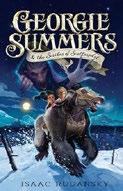
Eleven-year-old Georgie sets out to the rescue after seeing his dad snatched into thin air by a hideous figure. In a confusing debut that reads like a first draft, the kidnapping impels the young slingshot expert to go from doggedly enduring vicious bullying at school to intrepidly plunging after his father through a portal to Scatterplot, an otherworldly realm where the memories of everyone in New York are uploaded by omnilingual Scribes. Classmates Apurva Aluwhalia (who’s cued South Asian) and Roscoe Harris (who reads Black and is confined to a role that’s largely limited to comic relief), each motivated by their own concerns, follow white-presenting
Georgie on his adventure. In Scatterplot, they must remain alert for the “tribe” of “bad people” called Altercockers, formed by the exiled Rollie D. Meanwhile, Flint Eldritch, the menacing figure who was responsible for Georgie’s father’s disappearance, is bent on using the Aetherquill, a magical pen that can rewrite reality in unpredictable ways, to replace all those recorded memories with fake ones. In a story that’s marred by stilted dialogue, flat characterization, and awkward turns of phrase, Georgie and his friends, along with Scatterplot siblings Edie and Ore, embark on a quest to save both his father and the entire realm. The puss-oozing, misshapen villain Flint, crawling with bugs, does at least provide a memorably lurid element of horror. The novel ends with an abrupt cliffhanger. A half-baked jumble of poorly connected themes, incidents, and tropes. (Fantasy. 10-13)
Salsbury, Sandra | Doubleday (40 pp.) $21.99 | March 11, 2025 | 9780593805879
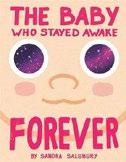
This infant is too busy for sleep! A baby lies in a crib, seemingly asleep. Readers turn the page to discover that the little one is actually wide awake and ready to chat, climb, dance, jump, yell—everything but sleep. Mama, Papa, and Sister are not amused and try various remedies to get the overactive tot to slumber. Mama and Sister give Baby a binky (she hurls it back), Papa cuddles Baby (an alert Baby starts exploring the inside of Papa’s nose), and the whole family gathers for a comforting hug after Baby tumbles out of her crib. But she has no intention of sleeping. When at last it seems as though Baby has tired herself out, it turns out to be another ruse, to the dismay of her exhausted
family; as the sun starts to rise, Baby is still going strong. Salsbury’s energetic, ebullient prose makes liberal use of exclamation points and enormous font size for effect, paired with a comic book–style layout (which alternates between vignettes, panels, and full-page spreads) to engage wiggly readers who will see themselves reflected in Baby’s nonstop antics. Parents might bemoan the lack of a perfect solution, though the reality will be a familiar one. This tale’s a logical choice for active toddler storytimes and to share before bedtimes that get endlessly delayed. Mama is tan-skinned; other family members are lighter-skinned. Punchy, silly, and likely to be a favorite. (Picture book. 3-5)
Who Is Amy Schneider?: Questions on Growing Up, Being Curious, and Winning It Big on Jeopardy! (A Young Readers Edition of In the Form of a Question)
Schneider, Amy with Tanya Lee Stone Simon & Schuster (160 pp.) | $18.99 March 4, 2025 | 9781665933056

The Jeopardy! champion answers the big questions in this young readers’ adaptation of her memoir. In nine chapters (among them “How Did You Get So Smart?” and “How Can I Fully Be Myself?”), Schneider covers her run on the popular game show, her gender transition, life with attention deficit disorder and depression, fame, friendship, and her love of learning. She writes in a casual, approachable tone, explaining concepts at readers’ level while never veering into the preachy. The book is chock-full of big and small life lessons, from the way Schneider figures out the meaning of a new word, like oviparous (“Because I know that ovi - means ‘eggs,’ I can guess that -parous might mean
something like ‘giving birth’”), to the importance of self-acceptance. Charting a long journey that culminated in her finally feeling comfortable in her own skin, Schneider discusses the anguish of joining the Boy Scouts, the community she found as a theater kid in high school, and her pride in raising visibility among trans people. Her candid, humorous voice will entice readers, especially those who have also felt like outcasts for being “too smart,” who are neurodivergent or queer, or who otherwise struggle to express their true selves. She offers a critical look at the concept of intelligence, acknowledging that it is complex and difficult to measure and encouraging learning for its own sake; ultimately, this is a lesson in living life with curiosity and confidence. A fun, honest memoir that champions knowledge. (Jeopardy! trivia) (Memoir. 8-12)
Schu, John | Illus. by Holly Hatam Candlewick (40 pp.) | $17.99 March 4, 2025 | 9781536226492

Ruthie Rose takes her spark of a writing idea and grows it with the help of her community. As soon as Ruthie Rose wakes up, she has an idea that begins to take root. She shares it with Ms. Alexandria, “a book-talking, idea-loving librarian”; Mr. Zayn, “a collage-making, idea-loving artist”; Ms. Adelaide, “her story-sharing, idea-loving teacher”; and Lily-May, “her purple-wearing, idea-sharing friend.” The idea bounces around and finally takes shape. It’s “The Poetry Place”: “a space for everyone, a space for anyone to explore.” The illustrations blend bright, cartoonlike characters and settings with elements of collage. Ruthie Rose’s idea grows from her mind across the page, a thought bubble layered with text and painted vivid
watercolors. A crinkled leather book in her hands is so realistic that it appears touchable. Disappointingly, these components appear sparsely throughout the book, though they are the most visually interesting elements. Still, Ruthie Rose’s idea bounces to life in a way that reminds readers that the most successful ideas are those that grow with community support. Muppetlike Ruthie Rose is beige-skinned with big red glasses and a mop of curly auburn hair; the supporting cast is diverse. A sweet reminder that tending to our bright ideas can be transformative. (Picture book. 4-8)
Silvestro, Annie | Illus. by Ziyue Chen Paula Wiseman/Simon & Schuster (32 pp.) $19.99 | March 25, 2025 | 9781665941693

A child feels left out when her BFF meets someone new. Sally and Sonia have been friends since they were “smaller than small,” sharing laughter, tears, and, after Sonia’s deafness is discovered, sign language. One day, Sally shares an idea that’s “greater than great”: planting a flower and vegetable garden. Sally and Sonia happily spend sunny days in their garden and rainy days in their clubhouse—until a young boy named Dev and his puppy, Pops, move in next door. Sally likes Dev but finds Pops too exuberant for her liking. So while Sonia spends her time with Dev and Pops, Sally sadly tends the garden and visits the clubhouse alone. One afternoon, Dev accidentally lets go of Pops’ leash, and the dog tramples the garden. Initially, Sally is “madder than mad,” but when she opens up about her loneliness, Sonia explains that Sally is still her best friend, and Dev is lonely after moving away from his own best friend. Dev, who’s learned some signs, apologizes, and Sally and Sonia welcome him and Pops to their clubhouse. The alliterative, rhythmic text makes for an ideal read-aloud,
and the gentle resolution encourages communication and empathy. Characters’ matter-of-fact attitude toward Sonia’s deafness is refreshing, and Chen, herself deaf, clearly depicts their American Sign Language signs in sunny, expressive cartoon illustrations. Sonia has light skin; Sally and Dev have brown skin and curly hair. A warm, inclusive take on friendship and conflict resolution. (glossary of signs, author’s and illustrator’s notes, resources) (Picture book. 4-7)
Kirkus Star
The Peach Thief
Smith, Linda Joan | Candlewick (384 pp.)
$19.99 | March 4, 2025 | 9781536237788
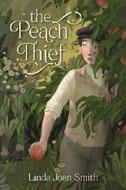
Scilla, destitute and starving, scales the walls of a grand estate’s kitchen garden, with far-reaching consequences. On a rainy night in Lancashire, England, in 1850, 13-year-old Scilla, formerly a resident of the Ormskirk Workhouse and now alone after the death of her companion, Dora, climbs into the Earl of Havermore’s vast kitchen garden. Food is what she’s after, and what she craves most of all is a peach, a fruit she’s tasted once before and has since dreamed of. She’s caught—and because she looks like a boy in her rough trousers and cap, stern head gardener Mr. Layton agrees to her offer to scrub plant pots to make up for the damage she caused to the earl’s cherry tree. Smith’s writing evokes the verdant atmosphere of a large 19th-century walled garden, from the ingenuity of “glass-houses” for cultivating pineapples and strawberries to the espaliered fruit trees trained to grow against the high brick walls. Supported by this rich atmospheric setting, Scilla’s journey of anxiety over her deception and her crush on a garden boy, whose rule-breaking challenges her moral compass, is made more acute by her
Chock-full of riveting information about these smallest of specimens.
love of learning how to garden and the novel sense of finally belonging somewhere. Scilla, who presents white, finds a caring motherly figure in housekeeper Mrs. Nandi, who’s Bengali and from Calcutta. Tantalizing details from Mrs. Nandi’s backstory, along with other storylines, enrich this deeply layered novel. Nuanced, richly atmospheric, and exquisitely written. (map, author’s note) (Historical fiction. 9-13)
Steinke, Aron Nels | Graphix/ Scholastic (256 pp.) | $14.99 paper March 4, 2025 | 9781338849325

At the start of sixth grade, Mira Toledano-Stone, an aspiring animator with social anxiety, decides this will be the year she conquers her fears and starts speaking in school.
In the comfort of her home, Mira has no problem talking, but no matter how much pressure she puts on herself, she can’t find her voice at school. On the first day of middle school, her plan to start fresh falls apart, and soon she’s become a target of bullying once again. Making stop-motion animation films is Mira’s outlet, but her younger sister always invades her space. To make matters worse, Mira’s parents betray her when they invite Chloe, her “pretend nice” former best friend, to live with them while her family deals with a crisis. With the help of a therapist, Mira navigates middle
school woes and confronts her social anxiety. This coming-of-age graphic novel depicts a diverse world around Mira (who’s Jewish and has lightbrown skin and dark hair), including her crush, who uses they /them pronouns. The relationship-focused plot has high appeal, but Mira’s parents’ complete lack of awareness— until a teacher calls home—that she hasn’t been speaking in school stretches the limits of believability. Additionally, the narrative, which Steinke explains in an author’s note reflects some of his own experiences, primarily focuses on Mira’s acquiring speech without acknowledging other forms of communication.
A compelling school story that could have explored its central topic with greater depth. (Graphic fiction. 9-12)
Stewart, Melissa | Illus. by Brian Lies Beach Lane/Simon & Schuster (40 pp.)
$19.99 | March 4, 2025 | 9781665947169

Come along on an informative countdown of 10 of the world’s smallest mammals. Most children are familiar with elephants, cats, and dogs. But what about their smaller cousins? An anthropomorphized ferret, clad in a jaunty bow tie and jacket, takes readers on a museum tour to learn about 10 mini-mammals from all over the world. This newest addition to Stewart’s prolific portfolio of nonfiction picture books is chock-full of riveting information about these
smallest of specimens: In the winter, when food is scarce, the Madame Berthe’s mouse lemur consumes insect poop; the Etruscan pygmy shrew takes 40 breaths in the same amount of time a human breathes once. The author also tells an engaging story that makes adept use of humor and alliteration as the furry narrator wrangles the subjects into ranked order, from the (relatively) largest to the very tiniest; the ferret’s asides and questions build suspense (“Is this lively leaper the mini-est mammal of all?”) and add whimsy. Lies’ illustrations, created with acrylic paint and colored pencil, are amazingly lifelike, featuring incredible texture and detail. Each spread depicts a creature gazing out earnestly from a wooden picture frame; the facing page shows the mammal in its natural habitat. That each of the featured animals is portrayed true to size will further delight youngsters. Readers can delve even deeper with the appended “Mini-Mammal Small Stats” section, while a list of selected sources will extend their learning further. A surefire hit for budding wildlife biologists. (Informational picture book. 4-8)
Stremer, Jessica | Illus. by Gordy Wright Holiday House (40 pp.) | $19.99
April 1, 2025 | 9780823457038
Series: Books for a Better Earth

A lyrical tribute to the scientists who solved an ecological mystery and spurred efforts to save many species from extinction. In a spare narrative made up of free verse and reading like a detective story, Stremer describes the way
declining populations of brown pelicans led concerned researchers to discover how the common pesticide DDT passed up food chains and weakened eggshells, to devastating effect. Only after the rising waves of public protest that ensued after one scientist “wrote a book / about springs / when songbirds would no longer sing” were officials forced to legislate efforts to ban the substance and protect vanishing species. It still took nearly 37 years for the pelicans to recover their numbers, Stremer continues—and even now they and many other threatened species are still in dire need of “people just like you” to “stand up, / speak out, / and inspire change.” Readers will be further engaged in the cause by Wright’s flowing scenes of ungainly pelicans diving and nesting, lightand dark-skinned scientists in lab coats and equally diverse marchers waving banners, and a wildlife crossing built over a busy roadway providing safe passage. For those in need of a little more solid information, she identifies some significant environmental laws (along with that anonymous “scientist” writer, who is, of course, Rachel Carson) in the backmatter, which includes more facts about pelicans, the specific effects of DDT, and the environmental movement’s rise.
A scientific success story, with a cogent reminder that work remains to be done. (glossary, bibliography, index) (Informational picture book. 6-8)

Sugiura, Misa | Labyrinth Road (368 pp.)
$18.99 | Feb. 25, 2025 | 9780593564141
Series: Momo Arashima, 3

Momo and friends are back, this time trying to save Momo’s father and the mortal world from Izanami the Destroyer. It’s been six weeks since Momo and her friends and battle partners Ryleigh, Jin, Danny, and Niko secured the Mirror of the Sun and saved 888 children from a nine-tailed fox demon. Momo wants to return to a time when everything felt safe. Izanami, the Queen of Death, appears to Momo in a nightmare, revealing that she’s imprisoned Momo’s father, who’s believed to be dead. The queen threatens to kill him unless Momo finds and brings her the Jewel of the Heart, a treasure that would help her restore her full powers and destroy the mortal world. With the help of her friends, Momo sets out to find the jewel, save her father, and defeat Izanami before she kills everyone on Earth. Along the way, they encounter a creepy mermaid and enter the dungeon of the Spider People. Even with the help of unexpected allies, they’re embarking on one of their most difficult quests, especially if they can’t stop fighting long enough to act like a team. This funny and exciting series closer explores themes of friendship, trust, truth and lies, power, and self-discovery. Momo’s friends also work through personal issues relating to family and identity. As before, Japanese legends, folktales, and religious traditions are woven throughout; this volume features the new addition of Indigenous Ainu influences.
A riveting end to an action-packed trilogy. (author’s note, glossary) (Fantasy. 8-12)
Kirkus Star
Tagholm, Sarah | Illus. by Jane McGuinness | Bloomsbury (34 pp.) $18.99 | March 18, 2025 | 9781526627339

Follow a tadpole through its transformation into a frog, a process sometimes accompanied by big feelings. Like the adage says, life comes at you fast. One minute you’re relaxing in the “jellylike” Wibbly (frogspawn), then “oh my crikeys!,” you’re a tadpole with a “tail-thing.” This U.K. import smoothly and clearly details the stages between tadpole and frog, from gaining front and back legs to losing one’s tail and breathing air. Our protagonist evades the “hungermuncher” fish and “furry dangermonster” cat, before the tale ends with older, wiser frogs reminiscing, “Do you remember when we were the Wibbly?” While some life cycle books feel dry, this one is enlivened by humor and the modest but compelling narrative, which follows a distinctive pink-cheeked tadpole who’s decidedly ambivalent about this whole metamorphosis business. Our hero experiences jealousy when fellow tadpoles easily learn “water-flying” and apprehension when the others mature more quickly; it’s a relatable reminder that frogs (and people!) grow at their own pace. Frequent exclamation points propel the springy narrative, and sprinkles of quirky invented words and unconventional grammar feel very froglike indeed. Some might look askance at the “fasterest” frogs eating “juicable dinners,” but it’s definitely evocative language. Splashy illustrations in ink, mixed-media, and Photoshop leap with energy, while the gently rounded, big-eyed frogs are cute yet still accurately rendered. A page of backmatter nicely summarizes the frog’s life cycle.
A hopping good book perfect for budding biologists. (Picture book. 3-8)
A lyrical tribute to the scientists who solved an ecological mystery.
PLIGHT
Tanaka, Saki | Henry Holt (40 pp.)
$18.99 | Feb. 25, 2025 | 9781250909602

A puffy cloud navigates the emotional landscape of friendship. Nimbus, a pinkish-yellow, personified cloud with facial features, hair draped across one eye, and arms and hands, enjoys solitary play: drawing with lightning bolts, playing “peekaboo with the sun,” and gleefully showering raindrops onto the Earth. When the extroverted Cumulus wants to play a guessing game, Nimbus becomes overwhelmed and flees. That approach-and-retreat pattern repeats with two other clouds whose overtures of friendship are initially unwelcome; Cirrus mistakes Nimbus’ bolt for a tail, and Stratus is eager to play hide-andseek. Relying on watercolor, colored pencil, crayon, and tissue paper, Tanaka has created softly textured, expressive scenes in keeping with the subject and conveying each character’s emotional state. The dialogue mirrors each cloud’s personality; the boisterous Cumulus speaks in all caps, while the sweeping Cirrus uses “looooooong,” drawn-out words. Nimbus eventually starts seeing things from different perspectives, noticing what their new acquaintances would appreciate. (Most of the clouds use they/them pronouns.) Retracing their steps, Nimbus invites each cloud to play after explaining their needs: “Want to quietly guess what this puddle looks like?” While several aspects of the story will have general appeal—such as finding animals in cloud formations— introverted or neurodivergent readers will especially appreciate Nimbus’ transformation, their reflective
moments, and the language they use to express their needs.
A congenial introduction to clouds and self-care. (cloud chart) (Picture book. 4-8)
Taylor, Will | Scholastic (240 pp.) | $7.99 paper | Feb. 4, 2025 | 9781339042695
Series: The School for Wicked Witches, 2

The adventures of rebellious 11-year-old water witch Ava Heartstraw continue. The second book in the series picks up where the first ended: Ava, Crow Backpatch, and Henry Buffle return to Swickwit, the School for Wicked Witches, after realizing they didn’t belong at West Oz Witch Academy after all. But going back to the magical school, which is surrounded by a boiling lake and broken glass hills, comes with consequences. Ava and her friends must attend detention each day until they’ve repaired every brick from the Yellow Brick Road that was destroyed in their initial escape. While the first-year witches catch up on their classes, the evil Vivienne Morderay schemes to find a book that she’s convinced is kept at Swickwit, one that contains the secrets to becoming the most powerful witch in Oz. After their falling-out in the first book, Ava and her roommate, Tinabella, have made up, and now they’ll need to work together to face off against Morderay in a battle for the powerful
book. Both young witches contend with their pride and ambition as they navigate a treacherous school campus that’s locked in Wicked Mode, alongside Crow, Henry, and the Moldy Horse. Clever entrapments and magical obstacles abound, although new plot points overshadow the development of some of the original characters. A cliffhanger ending will leave readers ready for more. The fantasy-diverse characters are varied in appearance. A humorous, lightly characterized sequel that explores good and evil. (Fantasy. 8-12)
Teckentrup, Britta | Doubleday (32 pp.) $17.99 | March 4, 2025 | 9780593902004

An up close and personal glimpse into the lives of various animal families.
Courtesy of see-through holes on each page, children will get a sense of how some of these creatures live, love, and provide ever-watchful protection for each other in the wild. Narrated in gentle, lilting verse that will be easy enough for the youngest audiences to understand, the book also offers an introduction to names for animal groups: “A herd of elephants cross the trail, / Steadily walking, trunk to tail.” “Baby lions stay close to their mother. / This pride will care for one another.” Youngsters will derive great comfort and satisfaction knowing that animal families, whether on land, in trees, or underwater, stick closely together, providing love, warmth, defense, and guidance—just as readers’ own families do. This delightful book, originally published in the U.K., covers familiar, beloved creatures that live in a variety of habitats, including gorillas, owls, polar bears, manatees, and more. Notably, readers will also see male parents serving important, nurturing
roles in their youngsters’ lives and development—a father emperor penguin keeps his eggs warm, while a male wolf goes out hunting “to feed his playful, hungry brood.” The lush, heavily textured illustrations reflect the animals’ natural behaviors, coloring, and habitats by day or night. Warm and soothing—the very epitome of family. (Picture book. 3-6)
Thai, Chi | Illus. by Linh Dao
Candlewick (40 pp.) | $18.99
March 18, 2025 | 9781536239607

Members of a family leave their country behind in search of a new home. Although the young narrator was born after the end of a long war, the family still leads an uneasy existence. They face ramifications for having been on the losing side: “Every day felt like it could be our last,” the protagonist confides. And so, Mum sells the family’s possessions for gold and negotiates for passage out, and they make the dangerous trek under the cover of darkness to a tiny boat. Rations are limited, heavy rains create tumultuous waves, and a mechanical failure occurs. But hope lies ahead. Drawing from her own experiences as a young child fleeing Vietnam with her family, Thai recounts an affecting story of the impact of war and displacement. Lingering trauma and guilt surface at times, but the book closes on a note of hope and gratitude as the family sits down to a New Year’s meal. Though much has changed, the narrative comes full circle to emphasize what
has remained the same: the family’s love. Taking on dramatic angles and making expert use of visual metaphor, Dao’s expressive artwork captures the family’s complex emotions. While the story is rooted in the Vietnamese diaspora of the 1970s and 1980s, it’s a tale that will resonate with many; as Thai explains in her author’s note, hers was one of millions, and the number of refugees and displaced people has only grown substantially since. A poignant reflection on one refugee’s experience. (Picture book. 4-8)
van Leer, Samantha | Pixel+Ink (240 pp.)
$18.99 | March 4, 2025 | 9781645952930
Series: The Extraterrestrial Zoo, 1

In a world where aliens fall to Earth, a girl shoulders adult responsibilities to care for them. Ever since her mom died and her dad left, 13-year-old Ava Ardent has cared for the 32 Extraterrestrial Living Beings in the Alien Zoo. But life gets even harder when Ava’s uncle Pete, an Iraq War veteran, hires 14-year-old Harley as an intern just as a hurricane is barreling toward Maine. Most of the ELBs get loose during the storm, and Uncle Pete goes off with the police, leaving Ava and Harley to care for the one remaining ELB and chase one that escaped into the woods. In this high-stress, high-stakes situation, Ava and Harley bond, sharing their histories and becoming each other’s
A strong-hearted girl confronts forces of greed and environmental abuse.
THE SECRETS OF UNDERHILL
first real friend, but when they make a startling discovery that flips Ava’s world upside down, she pushes Harley away in order to keep him safe. Through people’s reactions to the escaped aliens, van Leer explores deeply relevant themes; as Ava says, “When humans feel threatened, they will always choose themselves.” Ava’s devotion to the ELBs is wholly believable, and her competence is admirable. The supporting cast includes compelling characters whose backstories inform their actions. The ELBs are uniquely imagined, though their origins remain mysterious. A climactic rescue scene requires some suspension of disbelief, but the ending is satisfying, leaving enough open threads for the series to continue and hinting at a possible romance between Ava and Harley, who are cued white.
A science-fiction adventure with heart. (Science fiction. 10-14)
Waldman, Jenna | Illus. by Erica J. Chen Apples & Honey Press (32 pp.) $19.95 | March 25, 2025 | 9781681156736
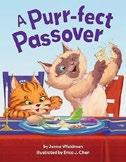
The trio of adorable cats from Purr-im Time! (2023) return to celebrate Passover. The variously colored kitties prepare by cleaning away all the crumbs (even reaching into a mouse hole, to the consternation of the rodent within), decorating matzah covers, bringing out plenty of food (including matzah balls and gefilte fish), and setting the table and welcoming guests. The seder proceeds as planned, with the kitties dressing as Pharaoh and Moses to reenact the Passover story; an image of Pharaoh enduring the plagues will elicit giggles. Later, the kitties burst into song, enjoy a delectable meal, search for the afikoman, and then bid their guests goodbye before cleaning up. Waldman employs action-packed,
upbeat verse; her rhymes are highly descriptive, with delightful catlike twists, as when a visiting kitten sings of the Four Questions, beginning with “Meow-nistanah” (Ma Nishtana)—not exactly standard Hebrew. Exuding joy and enthusiasm, the kitties are the stars of these bright, large-scale illustrations. Though the major aspects of the holiday are named, the author doesn’t explain them, so adults may want to offer additional context to readers unfamiliar with Passover. Still, these cats are having so much fun that many newcomers will eagerly come along for the ride.
Thoroughly delightful. (a note for families, instructions on making a “meow-tzah” cover) (Picture book. 3-7)
Walker, David | Atheneum (40 pp.) $19.99 | Feb. 25, 2025 | 9781665943857

A young panda is reluctant to go to sleep until the real reason she’s been putting off bedtime comes to light. Little Panda plays all day with her friends, but when it’s time to climb into bed, she isn’t ready. She tries to explain to Mama that her friends are still up, so why can’t she stay awake, too? Mama tiptoes with her through the forest to show her that Bird, Monkey, and Little Lion are all fast asleep. Back at home, Little Panda grumbles that her pillow is too thick, and she’s hungry and even a little thirsty, too. Mama and Papa try reading aloud and singing, but nothing helps. Finally, Little Panda admits that she’s afraid of the dark. Mama thoughtfully asks some fireflies if they’ll share their light; they agree, and Mama fills a jar with a few insects—a makeshift night light! Walker’s gentle rhymes (“Come, my sweet girl, day’s turned into night. / So drift off to sleep and close your eyes tight”) will lull
readers to sleep even amid Little Panda’s protests. Mama and Papa meet every obstacle with reassurance and patience (though their eyes become increasingly drowsy, and their heads droop down). Smudged greens, blues, and purples wrap readers in a cozy nighttime blanket, getting them ready for sleep, too. A sweet nighttime offering that will lead to snuggles and yawns. (Picture book. 2-5)
Wallace, Kali | Quirk Books (320 pp.) $17.99 | Jan. 28, 2025 | 9781683693888

A strong-hearted girl confronts powerful forces of greed and environmental abuse. Eleven-yearold Nick Sixsmith and her mother, Theo, pause their itinerant lives as arborists to return to Mistwood, the home of the ancient, magical ironwood trees. Frustrated by their inability to determine the cause of a rapidly spreading blight, Theo returns to the home she abandoned before Nick’s birth to look for clues in the ancestral Heart Grove. Nick and her 12-year-old cousin, Oliver, along with their friend Lizard, become enmeshed in disturbing mysteries surrounding the Forestry Company’s new mill. Soon, they must fight to protect not only these magnificent trees, but also the whole city. Aided by the maligned inhabitants of Underhill, including Lizard, whose underground homes in the caves formed by the roots of the ironwood trees are threatened, the extended Sixsmith family goes to battle, hoping to prevent an environmental and social disaster brought about by unmitigated avarice. This warmhearted fantasy set in a rich world of magical botany and strong family bonds will appeal to newer fantasy fans; more experienced readers may
find the character development predictable and yearn for greater emotional depth and complexity, livelier dialogue, and more showing rather than telling in the narration. Fortunately, Nick is a likable protagonist, the plot is well paced, and the timely messages come across without too much heavy-handedness. Most main characters are cued white; Oliver has light-brown skin. A solid fantasy for nature lovers seeking gentle tales. (map) (Fantasy. 10-14)
Ward, Chloe Ito | Illus. by Gael Abary Allida/HarperCollins (32 pp.) | $19.99 Feb. 25, 2025 | 9780063334144

A child embraces her skin and all that it represents. A young Japanese American girl reflects on the differences between her grandmother’s soft, pale skin and her own, which is as “gold as the grass that billows beyond the banyan tree.” Ignoring the warnings of adults who recommend that she stay in the shade for fear of tanning, she finds beauty in her scars, her freckles, and the color of her skin. After all, she was “made for more.” Her skin embodies her rich cultural heritage and holds the story of her ancestors as they journeyed from Japan to Hawaii, “from sand to sand, old roots planted in new soil.” Her skin represents the freedom to break from tradition, to explore and “[bathe] in blue sky until the sun settles beneath the sea.” It connects her to her family and to her home. In compelling, lyrical prose, Ward draws from her own family history and journey to self-acceptance to combat traditional East Asian beauty standards that idealize light skin. Abary’s digital illustrations in soft coastal hues pair beautifully with the story, subtly blending in
Japanese visual elements with Hawaiian landscapes through patterns and textures.
A radiant and joyful celebration of skin, family, and immigration. (author’s note) (Picture book. 4-8)
Kirkus Star
Watson, Renée | Bloomsbury (208 pp.)
$17.99 | Feb. 4, 2025 | 9781547605897
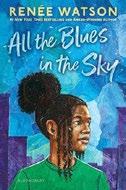
In the Newbery Honor–winning author’s latest, a Harlem teen copes with overwhelming pain while learning how to open up. Sage’s 13th birthday was the worst day of her life; it was the day her best friend, Angel, was killed after a hit-and-run. In the wake of Angel’s death, Sage takes part in grief counseling with four other students; she connects with Ebony and DD, whose losses were sudden as well. Sage grapples with conflicting emotions, but the person who could help her sort them out is gone forever, leaving her convinced it was her fault. She wishes her life had concrete answers, like the math problems she enjoys. Instead, new friendships and a possible romance raise more questions. Finally, all her pent-up anger and sadness spill over, and Sage can longer hold in her feelings. Much to her surprise, speaking honestly helps lift the veil of sadness and sets her on a path toward healing. Watson has crafted an achingly beautiful novel that masterfully captures the realities of loss—the constant reminders of what life used to be like, the guilt that haunts Sage, and the anguish of “talking about someone you love in past tense.” Sage’s voice, rendered in a mix of prose and free verse, is visceral and wholly authentic, while the supporting characters are also richly and fully realized. Characters are cued Black. A heartfelt portrait of the complexities of grief and the indomitable human spirit. (author’s note, resources) (Verse fiction. 10-14)
Winterbottom, Julie | Illus. by Susan Reagan Rocky Pond Books/Penguin (48 pp.) $19.99 | March 25, 2025 | 9780593620229

The true story of a girl whose love for pond scum saved America’s waterways.
At age 5, Ruth Patrick took her first look at pond scum in her father’s microscope. The shimmering, gliding, gemlike creatures she saw were diatoms: microscopic algae that would determine the course of Ruth’s life. Though it wasn’t considered proper in 1913 for a girl to tromp through muddy streams, Ruth’s father nurtured her interests, encouraging her to “leave the world a better place than you found it.” Working for the Academy of Natural Sciences in Philadelphia after graduate school, Ruth aimed to measure the effects of pollution on rivers, a topic that hadn’t yet been investigated. She spent a summer collecting samples and identifying species, concluding that the key to understanding a stream’s health was biodiversity (a term that had not yet been coined). Ruth devoted her later years to organizing community action against pollution, helping to draft laws to safeguard waterways, and educating generations of young scientists. The text flows naturally from scientific terminology to lyrical storytelling, making this an excellent choice for a classroom read-aloud. Ethereal, hand-painted watercolor wash illustrations are enhanced by delicate digital ink lines. Blue, green, and brown hues evoke the murky streams, while intricate line overlays highlight the crystalline details of microscopic diatoms. Budding naturalists will eagerly dip their toes into this one. (more information about Ruth Patrick, quote sources, timeline, selected bibliography) (Picture-book biography. 6-9)
While fasting, a child learns that Ramadan is about so much more than eschewing nourishment.
Yamasaki, Katie | Norton Young Readers (40 pp.)
$18.99 | March 11, 2025 | 9781324053927

A young artist’s joy expresses itself in drawings— everywhere.
Kengi, who uses they /them pronouns, is in trouble. They draw everywhere—on the food in the refrigerator, on toilet paper, on the bathroom mirror, and even on people. They draw rainbows and cars, fish, and fruit. Others are constantly cleaning up what they see as Kengi’s mess. Kengi’s fed-up principal demands that the child “stop drawing like this…or else.” Fortunately for Kengi, art teacher Ms. Beatriz points them toward Mural Island, a haven for artists. There, Kengi paints with abandon, making “their most breathtaking masterpiece ever,” a joyous scene of happy, engaged children surrounded by balloons, flying creatures, and rainbows aplenty. Alas, Kengi returns to Mural Island the next day, only to find their art has disappeared again—others have painted over their work. A friend wisely says, “None of it lasts too long so we just love it while it’s here.” The promise of artistic collaboration that day inspires Kengi to paint another bonanza of uplifting scenes. Yamasaki, herself a well-established muralist, relies on cheery colors and undulating patterns to depict the artistic passion pouring out of Kengi—a rainbow palette that covers not only furniture and walls, but also characters’ skin and hair and whole city blocks seen from a bird’s-eye view. Most characters present Black. Exultant. (Picture book. 4-8)
York, Rabiah | Illus. by
Maneli Manouchehri
$18.99 | March 11, 2025 | 9780593325766
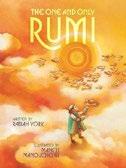
In a blaze of color, the 13th-century Persian poet’s life takes a turn. Images filled with rich jewel tones, bold geometric shapes, and birds galore introduce the boy Muhammad, before he became Rumi, one of the bestknown poets in history. Exquisite linework and expansive compositions paint a mystical picture of his early life in Central Asia 800 years ago. Muhammad loves to listen to birdsong and his father’s ney (flute), “soft and sweet as a gentle rain.” But his peaceful world is shattered when Genghis Khan’s army approaches. Packing his belongings in a rush, Muhammad wishes his bag were “big enough to fit everything he loved…. But the bag [is] just a bag.” After he flees with his parents, arriving in Baghdad and continuing on to Mecca, his mother and father remind him to “never stop singing,” and he tells himself to “be like the sun!” Exploring a potentially lesser-known side of the poet, the concise yet lyrical narrative itself evokes Rumi’s potent verse. When the family finally settles in a new home, they temper their sadness with gratitude that they’re still together. Holding fast to “quiet hope” and the “entire universe” within himself, Muhammad opens his heart to new friends and grows up to be “the one and only Rumi.” An author’s
note underlines the teaching that “hope in the darkest of times can always be found.”
A dazzling tribute to a luminary figure. (Picture-book biography. 5-9)
Zahri, Inda Ahmad | Crocodile/Interlink (32 pp.)
$18.95 | Jan. 28, 2025 | 9781623716189

While fasting for the first time, a child learns that Ramadan is about so much more than eschewing nourishment.
Deenie is worried (“Can I really survive without food and water until sunset?”), but the youngster is reassured by Mom’s gentle words (“You can try it for a couple of hours if you like”) and the knowledge that Ramadan offers the opportunity to replace bad habits with good ones. Although the experience is initially a bit isolating (feeling hungry, Deenie sits out soccer practice), each day Deenie fasts a little longer. The protagonist realizes that Ramadan is also about expressing gratitude, taking time to reflect, and showing kindness. Most importantly, Deenie finds a sense of belonging. As Eid arrives, Deenie looks back on the month and marvels: “Inside of me, something has grown bigger and better than ever before.” Calm and gentleness of spirit are at the forefront of this book. With so many different flavors of tales about Ramadan, Zahri has made the inspired choice to focus on personal growth. Her illustrations are warm and inviting, conveying the closeness of family and the unity of community during such an important month for Muslims. A heartfelt author’s note precedes the story, and a glossary defines Arabic phrases. The family is tanskinned; though race and ethnicity aren’t specifically mentioned, Zahri mentions growing up in Malaysia, and in the mosque, Deenie’s mother sports a prayer dress typically worn there. An uplifting and unique take on Ramadan. (Picture book. 4-8)

AT A TIME WHEN the U.S., like many countries, is painfully divided, the ability of the arts to foster empathy and build bridges across differences is more important than ever. Describing books in terms of windows, mirrors, and sliding glass doors has become commonplace, but many people don’t know that the phrase originated with Dr. Rudine Sims Bishop, Professor Emerita of Education at the Ohio State University. Dr. Bishop is among the most significant modern figures in literature for young people: Her insights have resonated globally, shaping scholarship at the highest levels of academia, guiding classroom teachers and librarians in their daily work, and fundamentally shifting practices among publishers, authors, and book award jurors. As a member of the Coretta Scott King Book

Awards Round Table’s Archives and History Standing Committee, I had the tremendous honor of helping to create a tribute video to honor Dr. Bishop, in which Jacqueline Woodson and other influential figures spoke of her profound influence. (It can be viewed on the American Library Association’s YouTube page.)
As Dr. Bishop famously wrote, “Literature transforms human experience and reflects it back to us, and in that reflection we can see our own lives and experiences as part of the larger human experience.” Kids need affirming books that hold up mirrors to their lives. Equally critical are the books that open windows, showing them communities unlike their own, and the ones that are sliding glass doors, inviting them to enter


different worlds. Adults must be mindful of providing young readers with a varied, balanced selection of books that fill all three roles. Don’t underestimate the impact of this: After all, if books didn’t possess transformative powers, we wouldn’t see people trying so hard to ban some of them.
The following books will serve different roles—as windows, mirrors, or sliding glass doors— depending on who picks them up, but each one is passionate and authentic.
Just Until by Joseph Moldover (Margaret Ferguson/Holiday House, 2024): In this insightful exploration of a family in crisis, a teen longs to escape her small, economically stratified town, but her widowed father gains custody of her nephews, who need her too.
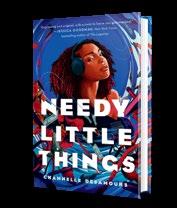

Briarcliff Prep: Sophomore Year by Brianna Peppins (Disney-Hyperion, 2024): A high school girl attending a Historically Black Boarding School struggles with balancing academic pressures, relationship troubles, and an extracurricular project in this novel that skillfully tackles mental health concerns and treatments.
First Love Language by Stefany Valentine (Penguin Workshop, Jan. 14): This nuanced coming-of-age tale set in Salt Lake City delves into themes of family, faith, culture, adoption, and belonging through the stories of two multiracial Asian American teens who fall in love.
Needy Little Things by Channelle Desamours (Wednesday Books, Feb. 4): This insightful debut thriller centers on a Black girl, possessor of the power to sense others’ needs, and on the search for her missing friend. It shines a spotlight on inequities of race, gender, and socioeconomic status.
Say a Little Prayer by Jenna Voris (Viking, March 4): In this thoughtful work, a bisexual teen, shamed by the pastor of her Baptist church, seeks revenge—in the process learning a great deal about herself and those she loves.
Laura Simeon is a young readers’ editor.
Sixteen prominent writers for young people offer teens a comprehensive picture of what’s at stake when books disappear from schools and libraries.
Effectively combining essays, graphic narratives, and short stories, this anthology offers young adults the tools they need as they advocate for their right to read. Maia Kobabe lays the groundwork with graphic representations of book censorship by the numbers, highlighting the exponential increase over the last several years. The subsequent section, “Book Ban FAQs,” provides important background knowledge and common language. A recurring theme is the power of
books to help us realize we’re not alone in the circumstances we face.
Elana K. Arnold’s autobiographical “The Things, the Things That Happened, the Things That Happened to Me” is a heart-wrenching example, cutting through the silence of rape culture. Isabel Quintero and Ellen Hopkins muse on knowledge as power while Traci Sorell takes on the erasure of Native peoples from history and literature. Kyle Lukoff connects book censorship to efforts to erase problematic history. Kelly Jensen’s “Our Whole Radical Anatomy” introduces readers to the legalities of book censorship. Robin Stevenson
Jennifer Chen

Ed. by Pérez, Ashley Hope; illus. by Debbie Fong | Holiday House | 304 pp. | $19.99
March 4, 2025 | 9780823458301
touches on the effects of self-censoring. Brendan Kiely’s and Padma Venkatraman’s short stories offer fictionalized accounts of teens affected by censorship efforts. Editor Pérez introduces readers to teens around the country who are taking action to ensure
their freedom to read and provides tips, reading suggestions, and other resources. Together these diverse contributors’ voices form a potent whole. An empowering and critically timely blueprint for action. (select sources) (Anthology. 13-18)
Youngdahl
food isn’t just a source of pride but a love language.
HANGRY HEARTS
Kirkus Star
Atkins, Marcie Flinchum | Versify/ HarperCollins (320 pp.) | $19.99 March 4, 2025 | 9780063339316
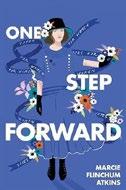
In this verse novel based on real people and events, four sisters support one another in the turbulent fight for women’s right to vote in early-20thcentury America.
Matilda Young, nearly 15, lives in Washington, D.C., with her parents, older brother, and three older sisters. She observes that there’s a “fault line in our family— / men vs. women,” one exacerbated by the question of suffrage. Matilda is afraid to engage in public action that might lead to her arrest and initially agrees to sort mail at the headquarters of the Congressional Union, a group that’s pushing for an amendment that would give women the vote. She also takes on a vital caregiving role within the movement. Matilda’s mother encourages her: “The actions you take each day / add up / even if they seem small,” and eventually Matilda starts picketing at the White House, even as her dad and brother criticize her and the cause she believes in. As World War I drags on, police action against suffragists escalates, resulting in some imprisoned women going on hunger strikes. The verse structure successfully conveys the grit, trauma, and violence of the times, adeptly emphasizing the activists’ doubt, pride, persistence, and exhaustion. Atkins’ skillful use of concrete poetry greatly enhances the work. Most characters are white; the book explores
class conflicts as well as African American women’s struggles for the vote. Powerful, necessary reading. (dramatis personae, author’s note, historical notes, timeline, quotes, places to visit, further reading, sources) (Verse historical fiction. 13-18)
Caletti, Deb | Labyrinth Road (416 pp.)
$19.99 | March 18, 2025 | 9780593708613

A Seattle teen conceals her true identity as the long-abandoned daughter of a celebrated tech giant to gain entry into his household. Eleanor feels on the outside of her relationships with her emotionally abusive mother and seemingly perfect older sister, Rosalind. She’s even more distant from her famous father, Hugo Harrison. But Hugo’s work in AI has made his company a household name, and his wife, Aurora, and young son, Arlo, constantly appear in Aurora’s carefully curated social media feed, giving Eleanor a window into their lives. Eleanor has kind, quirky, supportive, fabulous friends in Arden Lee and Clementine, but when Aurora posts an ad for a nanny for Arlo for the summer months, she can’t resist applying (without revealing her connection to the family). As Eleanor begins to feel increasingly uneasy about the top-secret work her self-centered father is doing, this thoughtful novel at times almost crosses the line into the thriller genre. The tech mystery propels readers on, as does the romance Eleanor has with Nino, a home-schooled boy whose father also
works for Aurora. Caletti compellingly explores big questions about class, the ethics of AI, and the price people pay for depicting perfect lives online. But Eleanor’s poignant vulnerability with those around her as she yearns for a family that will truly accept her is the real focus, easily bringing readers into her corner. All main characters read white. An at times heartbreaking but ultimately hopeful story about chosen family. (Fiction. 14-18)
Carni, Kellyn | CamCat Books (320 pp.) $19.99 | Feb. 4, 2025 | 9780744311051

What if Alexei and Anastasia, the youngest children of Russia’s last czar, didn’t die with the rest of their family but instead magically traveled to a parallel universe using an enchanted necklace?
This new universe is similar to their own, but here, the rebel terrorist group Narodnaya Volya hasn’t yet overthrown the czar. Grand Duchess Anastasia longs to save her family, but Alexei is determined to ascend to the throne, even if that means sacrificing his sister and the Other Alexei, this universe’s czarevich. Soon Anastasia is caught in a web of conspiracies, fighting to save her family, her brother, and her budding romance with Lev, a mysterious soldier. Blending real historical characters and events with fictional ones, this fantasy is a fast-paced, sometimes bloody adventure tale. Anastasia’s voice is centered in her first-person narrative, but she doesn’t come through as a fully rounded person and enduring historical figure. Other characters’ third-person perspectives create suspense, only occasionally getting bogged down in redundant explanations. The complex plot relies on convenient eleventh-hour contrivances, and yet some threads remain unresolved. The disparity between royalty and commoners is mentioned, but readers may also want
to read Candace Fleming’s The Family Romanov (2014) for more information. The absence of backmatter is a missed opportunity to provide information that would further readers’ appreciation of the story.
A diverting speculative fiction romp best appreciated by Anastasia devotees. (map) (Historical fantasy. 12-18)
Chen, Jennifer | Wednesday Books (320 pp.) | $13.00 paper March 18, 2025 | 9781250374400

Two teens fall in love despite their families’ long-standing rivalry.
Taiwanese American Julie Wu and Korean American Randall Hur had a friendship as special as the one between their grandmothers, who dreamed of opening a fusion restaurant together. But when the women’s plans suddenly crashed and burned one fateful Lunar New Year’s Eve, the once-sweet family friendship came to a bitter end. These days, Julie and Randall only see one another at the Pasadena Farmers Market, where their families compete for customers. But then the ex-best friends are paired for a school community service project, along with London Park, their wealthy, entitled classmate. The high school juniors temporarily set aside their grudges, only to find themselves falling for one another and sneaking around to make out. Readers’ mouths will water over the descriptions of delicious Taiwanese and Korean dishes that appear throughout this strongly characterized story in which authentic homemade food isn’t just a source of pride but a love language. While Julie and Randall’s complex relationship is the primary focus, their story is deepened and enhanced by their special connections with their
respective family matriarchs: Julie hurts for her ahma, who is emotionally burdened by the accident she caused years ago, and Randall never wants to disappoint his halmeoni, who lovingly accepted him when he came out as trans.
A delectable treat handmade with love. (Romance. 13-18)
Cook, Elora | Little, Brown (384 pp.) | $12.99 paper | March 18, 2025 | 9780316574150

A high schooler joins forces with her ex-crushturned-enemy to avenge her family. Behind all the glitz, glamour, and designer clothes of the wealthy elite of Scarsdale, New York, lie betrayals and deadly secrets that rising senior Tasha Nicastro has been shielded from—until the night her father and sister are brutally murdered during a party at their mansion. She’s shocked to be made the new boss of the Nicastro Mafia and to learn that since childhood she’s been groomed for the role. Tasha must decide if she has what it takes to run the state’s most powerful crime family—and track down the traitorous mob boss who killed her loved ones. Leo Danesi has avoided his mob ties for as long as he can, but he’s finally forced to reckon with his family’s past and future, as well as his feelings for Tasha, when his mom accepts a surprising invitation and he ends up at the Nicastros’ party. At times, the weak and unclear motivations behind the complicated decisions made by some of the characters, who are largely cued Italian American, distracts from the actionpacked drama. But the story, told in Tasha’s and Leo’s alternating first-person perspectives, brings the characters to life through distinct voices that together paint a picture of a violent and sinister underworld of organized crime.
A fast-paced and unpredictable mafia page-turner with an enemies-to-lovers duo hot on the case. (Thriller. 14-18)
Currie-McGhee, Leanne
ReferencePoint Press (64 pp.)
$33.95 | Jan. 1, 2025 | 9781678210021

A guide to understanding mental health crises and how friends can react to them helpfully.
Citing recent statistics in her introduction, Currie-McGhee points to the rise in teen mental health problems. Acknowledging nonprofessionals’ limitations, she argues that teens can still have an impact by listening to their friends, urging them to seek care, and simply being there. Chapter 1 offers tips for teens to identify friends in crisis. The second chapter, “Talking and Listening,” explains various types of intervention within teens’ reach and describes training programs that help them learn how to recognize and respond to signs of suicidality in peers. Next, the author covers practical ways to support friends, such as educating oneself and dealing effectively with social media. The fourth chapter, “Reaching Out for Help,” covers professional attention, and the final chapter focuses on empathy fatigue, setting boundaries, and self-care for those who are supporting friends. Throughout, Currie-McGhee counsels intervening rather than ignoring problems. The book doesn’t need to be read cover to cover; some repetition of content allows it to be used as a resource to dip into as needed. The work is accessible and brings the clinical issues to life through clear, direct writing that incorporates anecdotes and uses a minimum of technical terms. Text boxes highlight quotations and elaborate on key concepts, and the colorful layout includes stock photos of a diverse array of young people.
An accessible, practical guide to a critical subject. (source notes, resources, index, picture credits) (Nonfiction. 12-18)
The Encanto’s Curse
de la Cruz, Melissa | Putnam (352 pp.)
$19.99 | March 4, 2025 | 9780593533116
Series: The Encanto’s Daughter, 2
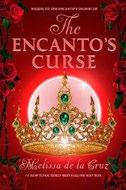
Time is running out for the cursed ruler of Biringan in this follow-up to The Encanto’s Daughter (2024).
In the months following her coronation as queen, MJ Robertson-Rodriguez still struggles to control her magical powers as an encanto and to fully adapt to her royal role. She’s heartbroken over ex-boyfriend Lucas Invierno, her protector and the boy she still loves, who’s officially engaged to the unpleasant Amador Oscura, his childhood friend and MJ’s nemesis. Thankfully, MJ has her closest friend, Nix, by her side, but she finds herself trying to prevent a war when Crown Prince Qian of Jade Mountain, Nix’s monster-hunting brother, unexpectedly arrives at Biringan and demands that his sister return home immediately. However unfortunate all these circumstances are for MJ, the most troubling issue at hand is the news that a manananggal, a terrifying vampirelike monster, is terrorizing the kingdom at night. Meanwhile, MJ is haunted by nightmares in which she hungers for flesh. Her discovery of an ancestor who was similarly afflicted requires MJ to choose between her heart’s deepest desires and breaking a terrifying curse. The lush backdrop, infused with Philippine folklore, sets this fantasy series with a racially diverse cast apart. The horror elements are also well executed, but MJ’s passionate romance with Lucas and a potential love triangle fall flat due to weak characterization.
A rousing sequel that’s stronger in its fantasy than its romance aspects. (map) (Fantasy. 13-18)
Eig, Jonathan with Yohuru Williams & Michael G. Long | Farrar, Straus and Giroux (256 pp.)
$19.99 | Jan. 7, 2025 | 9780374393106

A trimmed-down version of Eig’s much-lauded 2024 Pulitzer Prize winner for adult readers. In an epilogue, Eig states his intention to portray a great man who also happened to be a human being who “chewed his fingernails, shouted at the TV during game shows, and got mediocre grades in school.” If too many such homely details are missing or relegated to multiple pages of bulleted “Extra Facts” in the backmatter to bring King particularly close to younger audiences, in their often-dramatic recitation of his career and magnificent accomplishments the co-authors do describe both his history of plagiarism and his serial infidelity. They also include clear proof that, like all of us, he was subject to piercing doubts, fears, failures of nerve, and errors of judgment. The skimpy selection of photos will leave readers wishing for more, but discussion questions and lavish source notes offer plenty of pathways to further research. And, as if King’s violent death and that of so many others in the struggle for civil rights weren’t evidence enough, direct transcriptions of a threatening phone call and a rabid hate letter (composed by the FBI) give chilling proof of the scope of the racism he faced. This searching study
An excellent informational book that’s both heartwarming and heartbreaking.
leaves King’s shining legacy intact, all the more admirable for its attachment to a fallible man who is glimpsed here behind the icon.
A frank and nuanced character study, though its subject remains an august and somewhat remote figure.
(timeline, index) (Biography. 12-18)
Fergus, M.L. | Tundra Books (352 pp.)
$13.99 paper | Jan. 14, 2025 | 9781774886076
Series: The Fractured Kingdom, 1

A young woman unwillingly becomes entangled in a prophecy.
Persephone, who only knows a life of enslavement and scarcity, is confronted with a chicken thief who changes her life. Azriel plays on her sympathies, persuading her to hand over a chicken before purchasing Persephone from her owner. Handsome, blue-eyed Azriel believes Persephone can save his people, the nomadic Methusians, and fulfill a prophecy that would put one of them on the throne to “unite the five clans of Glyndoria and set things to right for all people.” However, dark-haired, violet-eyed Persephone doesn’t believe in the prophecy and dreams of escaping to freedom along with her devoted animal friends, a dog, a horse, and a hawk. Meanwhile, the Regent Mordesius, a clever and power-hungry adviser in the royal court, will stop at nothing, manipulating young King Finnius of Erok and torturing the innocent as part of his quest for Erok to rule over all of Glyndoria. He also hopes to heal his deformities (sustained in childhood when the rest of his family was burned alive) through the fabled Pool of Genezing. Romance and comedic dialogue and situations balance the bloodthirsty villainy, and the surprise twists will keep readers guessing. The third-person omniscient voice moves the engaging plot along. Unfortunately, Mordesius’ character arc and the brutal language used to describe his physical
differences evoke ableist tropes. The main characters are cued white. A fast-paced trilogy opener full of intrigue and surprises. (Fantasy romance. 14-18)
Freeman, Megan | Chicken House/ Scholastic (320 pp.) | $20.99
Feb. 4, 2025 | 9781546116615

In a world where every child has a “brain defect”—a “cognitive disease” that can be mild—those with the severe version called Grimm-Cross Syndrome are trapped at Wildsmoor Facility.
For 15-year-old Emily Emerson, who presents white, and the others at Wildsmoor, which is run by the evil Matron (who’s also the only fat character), the Grimm is dangerous, rendering them capable of causing earthquakes, breaking bones using only their minds, and worse. They’re given medication to stop their symptoms from manifesting. Emily knows that at 18, she’ll have to leave—but not what happens next. After losing her pills one day, she experiences withdrawal symptoms but doesn’t tell anyone for fear of punishment. When two other grimmers, Gabriel and Emir, recruit her to their cause, Emily is introduced to a life without numbing medication. To set the other kids free, Emily must learn to control her immense powers over nightmares (her own and other people’s), come to terms with her own darkest dreams, and learn how to lead in a world where imagination is feared. Although the story is largely entertaining, the repetitive narration slows the pace. Readers who find benefits in using medication to support mental health may find the messaging lacking in nuance. Traumatized Emily struggles with panic attacks and tells herself that she can “force those thoughts away. I can choose to breathe. I can choose how to react.”
An excessive reliance on tropes undermines a perennially popular premise. (Speculative fiction. 13-16)
Goldsmith, Connie | Twenty-First Century/Lerner (128 pp.) | $37.32 Feb. 4, 2025 | 9798765627594
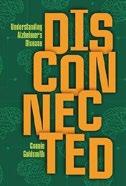
A concise yet comprehensive overview of all the stages of Alzheimer’s disease and current research. This approachable text combines easy-to-follow science-based facts with anecdotes and interviews that show the disease’s impact on real people and their family members, including children’s author and illustrator Kevan Atteberry and children’s and teen author Margarita Engle. Within these stories, readers encounter scary aspects of the disease—the fear and grief of coming to terms with a diagnosis and dealing with symptoms as they progress—as well as the comfort sufferers can find, for example through music and support animals. The book’s structure flows well, beginning with an introduction to dementia in its various forms, one of which is Alzheimer’s disease, followed by its signs and symptoms and diagnosis and treatment. The final chapters describe caring for and communicating with Alzheimer’s patients and the state of research into treatments and cures. The author compassionately covers the critical matter of self-care for caregivers as well as coping mechanisms for both the affected person and their loved ones. The text is broken up with illustrations, photos, and infographics that clarify the medical content. This colorful, attractively designed work includes photos showing a diverse range of people. Goldsmith, a veteran nonfiction author with a science background, offers teens an excellent informational book that’s both heartwarming and heartbreaking. Helpful, wise, and informative. (glossary, source notes, selected bibliography, further information, index, photo acknowledgments) (Nonfiction. 12-18)
Grant, Allison Sweet | Dutton (320 pp.) $19.99 | Feb. 18, 2025 | 9780593616918
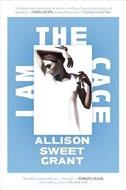
After enduring harrowing medical treatments, a young woman retreats, seeking isolation. It’s 1999, and Justine Elisabeth Amos, who graduated high school about a year ago, has left her family and best friend behind and cloistered herself in a cabin in the isolated Wisconsin town of Fish Creek. She goes by her middle name, reads, writes poetry, and works at a local store. Above all, she avoids getting close to people. But when she gets stuck in a snowstorm and 25-year-old Noah, the local sheriff, helps her out, personal complications re-enter her world. Justine is running from the aftermath of medical abuse. Diagnosed with fibular hemimelia and congenital short femur in childhood, she underwent excruciatingly painful surgeries and other procedures. Grant provides a complex look at insidious torture in the name of medical treatment. What ultimately broke Justine’s spirit were the thoughtless, cruel moments during which her consent was continually disregarded. Each time someone—a medical professional or family member—should have supported her but didn’t, this choice was, in their minds, defensible. Justine’s strained relationship with her mother is another realistically complicated source of pain. While her connection with Noah would have benefited from being more fully developed, their romantic attraction rings warm and true. Her struggle to reclaim her identity and ability to connect in the face of aggressive dehumanization is raw yet ultimately hopeful. The main cast reads white.
An honest and almost unrelentingly bleak look at an underdiscussed source of trauma. (Fiction. 14-18)
Everyone’s a suspect in this thrilling tale armchair sleuths will enjoy untangling.
WE WERE WARNED
Nightweaver
Gray, R.M. | Little, Brown (432 pp.)
$19.99 | March 4, 2025 | 9780316587259
Series: Nightweaver, 1

R aised at sea as a pirate with her family to escape land-dwelling monsters, a 17-year-old suddenly finds herself a captive, navigating a world of magic and politics in order to survive.
Aster Oberon has lived on the Lightbringer with her parents and six siblings her entire life. Six hundred years ago, people took to the sea after Nightweavers began hunting and enslaving humans. After her family’s ship is attacked, and her oldest brother, Owen, is killed, Aster and her family are brought to shore and sold into service at Bludgrave Manor, home of the wealthy and influential Castor family of Nightweavers. Despite their lowly status, the other members of Aster’s family seem relieved to have left their hard life at sea behind; Aster is the only one with the urge to run. But the night she tries, handsome, green-eyed Will, the son of Lord Castor, stops her with a promise: He’ll help her find the monster who killed her brother. What follows is a complicated web of half-truths, political conspiracy, magic, bloody gore, and forbidden desire. The worldbuilding in this debut grows to the point where it’s challenging to keep up with the details, and readers may become confused about who’s on the side of right and who or what they’re fighting for. Aster and Will’s romance becomes a bit repetitive, but overall, the plot offers
enough twists and turns to keep readers’ attention. Main characters present white. An overstuffed yet engaging series opener. (Fantasy. 13-18)
Hawk, Sasa | Harper/HarperCollins (352 pp.)
$19.99 | Feb. 25, 2025 | 9780063335035

A teenager fights for love and her family using all the power she has. Eighteen-yearold Elia is a Conjurista in Isalindra with the ability to magically open any lock. Limited by her age—at 19, she’ll legally be an adult—Elia has, at her ill papa’s request, been using an elixir to keep him alive, siphoning off his magic to create doors to other places for customers of her family’s travel shop. In this way, she’s managed to support her four younger siblings. When her 8-year-old brother, Myron, is touched by god of death Morthanos and turned into a Deathfate, Elia decides to return to Serratura at the behest of handsome scholar Prince Trystoferian, who agrees to support her family in return for her taking this risk—years earlier she was banished from the kingdom under pain of death. Trys is desperate to find the Scroll of Peace in the Serraturan Great Library, and Elia believes the library contains a scroll that will save Myron from the misery of being a Deathfate. But when things don’t go as planned, Elia must try to save both Myron and Trys, whom she’s grown to feel more for
than she expected. Unfortunately, their romance comes across as forced, and serious moments are interrupted with awkward exchanges that don’t quite land. The worldbuilding is immensely creative, however, and the community supporting Elia and her siblings is appealing. Main characters are cued white.
An enjoyable debut set in an originally wrought world. (Fantasy. 14-18)
Ichaso, Chelsea | Sourcebooks Fire (368 pp.)
$12.99 paper | March 4, 2025 | 9781728299709

A twisty whodunit set against the backdrop of a town haunted by a deadly curse. High school senior Eden Stafford didn’t want to attend the all-night party at Fairport Village, the scene of several grisly murders of teens over the decades. But she and her mom need the money; ever since her dad fled to avoid embezzlement charges, finances have been tight, so she agrees to work as an assistant to her friend Henry, who’s filming a documentary at the ruined seaside resort for a film school application. When Henry’s dead body is found, followed by that of classmate Diego, Eden realizes that the old curse is killing kids again. She reluctantly teams up with Caleb, her former best friend who turned into her bully, and his clique to work out what really happened to the first victim, Nicolas—and what his death has to do with whoever or whatever is stalking them now. Ichaso provides an impressive roster of suspects, keeping Eden (and readers!) on guard as the mystery plays out. Eden’s growing feelings for Caleb complicate her investigation even as she deals with past hurt and recriminations that add layers of emotion and suspicion. The town’s history is entertaining, and the crimes’ dual
timelines allow for extra sleuthing. The crumbling California resort setting is vividly depicted. Most characters present white. Everyone’s a suspect in this thrilling tale that armchair sleuths will enjoy untangling. (Mystery. 14-18)
Lin, Alice | Delacorte Romance
(320 pp.) | $12.99 paper
March 4, 2025 | 9780593814826
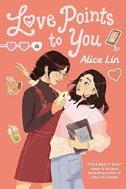
A teen artist navigates changes in her family and her romantic life.
When Lynda Fan’s widowed dad marries Amy, Lynda doesn’t have many feelings about the whole thing. Next year, she hopes to be at the Rhode Island School of Design; she’s sure she has the artistic skills to get in, though covering tuition might be a problem. So Lynda is less than thrilled to learn that her dad and Amy are spending a fortune on private violin lessons for her new stepsister. Lynda knows it’s time to take matters into her own hands. She just doesn’t expect salvation to come in the form of Angela Wu, a former it girl who’s now a standoffish brainiac. Angela, it turns out, is a secret fan of otome games—story-based video games with romance plotlines. She’s creating her own ancient China–inspired game, and she wants Lynda to develop the concept art and character design. And she can afford to pay well. As Lynda slowly gets to know Angela better, she’s surprised by what she finds. Lynda, who’s asexual, doesn’t always pick up on romance cues, but she’s pretty sure there’s something growing between her and Angela. Limited characterization and an abrupt ending keep this novel from reaching its potential either as a romance or as a coming-of-age story. Through her primarily Taiwanese American cast, Lin thoughtfully unpacks stereotypes around Asian parenting. Lynda’s changing family
dynamics and her awareness of the role she plays are also highlights. Promising but underdeveloped. (Romance. 12-17)
Liu, Jennie | Carolrhoda Lab (256 pp.)
$19.99 | March 4, 2025 | 9781728493213

After her relationship with a white boy is discovered, a spirited Chinese American teen tries to evade her father’s marriage ultimatum.
It’s the spring of 1924, and 16-year-old Ruby Chan is in trouble. News of her disastrous fling with Russell Blythe has reached her parents. Her father, who recently became the proprietor of an antiques store, is determined to prevent her from bringing more shame upon her family and their Los Angeles Chinatown community. To Ruby’s horror, Ba requests a San Francisco matchmaker’s services and announces that he’ll also be seeking a husband for Ruby during his upcoming trip to China; one way or another, her future will soon be decided. Unable to accept an arranged marriage and still working through everything that happened with Russell, Ruby takes steps to secure her independence, starting with a job at a department store. She also befriends 19-year-old Anna May Wong, the daughter of a local laundry store owner and a rising Hollywood actor whose daring, often villainous, film roles are dividing the Chinese American community. The story alternates between Ruby’s present and her memories of Russell, weaving together themes of Orientalism, sexism, and the tension between first- and second-generation immigrants’ approaches to assimilation. Despite some awkwardly expositional dialogue, Ruby’s determination and pride in her cultural heritage are easy to root for, and her narrative closes on a satisfying note.
Charming and informative. (content note, note on terminology, author’s note, discussion questions) (Historical fiction. 13-18)
Lobb, M.K. | Little, Brown (400 pp.)
$19.99 | $12.99 paper | March 25, 2025 9780316575485 | 9780316575492 paper
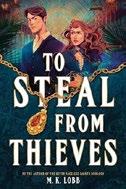
In an alternate 19th-century England, the banning of alchemology— the use of magic to alter mechanical devices—has driven buyers and alchemologists to the dark market. When Zaria Mendoza’s father died, she inherited his alchemology notes and a list of illegal commissions. Completing the outstanding orders allows 18-year-old Zaria to scrape by, but manipulating magic comes at a steep cost to her health. Desperate to be rid of her father’s debts and escape London’s slums with her best friend, Jules Zhao, Zaria accepts an offer from Kane Durante, a young man tasked with stealing a necklace from the Great Exhibition of 1851. Failure isn’t an option for Kane, the adopted son of Alexander Ward, who rules the city’s underbelly. Kane has grimly accepted his fate as Ward’s successor, but he jumps at the chance to free Fletcher Collins, his only friend, from Ward’s control, something Ward promises in exchange for the necklace. Much of the book is spent exploring Zaria’s and Kane’s motives through secret-laden third-person chapters that reveal the pair’s feelings of unworthiness in relation to their friends. The story lightly addresses themes of economic inequality and British imperialism as it inches its way toward a heist that unfolds in a flurry of nail-biting twists and turns. The cast is ethnically diverse: Zaria had a Spanish father and English mother, Kane’s parents were Italian, Jules is British Chinese, and Fletcher is Irish. For patient readers seeking a moody, character-driven fantasy. (Historical fantasy. 13-18)
Just 17 when she wrote her debut novel, this author shows wisdom beyond her years.
BY MATHANGI SUBRAMANIAN
LIKE MANY AUTHORS, Lily Braun-Arnold spent the pandemic writing a book. Unlike most, though, Braun-Arnold was only 17 years old. Now a junior at Smith College in Northampton, Massachusetts, she’s celebrating the publication of her Kirkus-starred debut, The Last Bookstore on Earth, a queer enemies-to-lovers romance about two young women struggling to survive a climate-related apocalypse while protecting the ruins of a beloved community bookstore. The fast-paced tale asks compelling questions about who we become when faced with disaster, and what we are willing to do to protect ourselves and the people and places we love. Over a video call, Braun-Arnold and I spoke about optimism, oppression, the ups and downs of editing a book while still a college student, and the unexpected societal freedom that could accompany the end of the world. Our conversation has been edited for length and clarity.

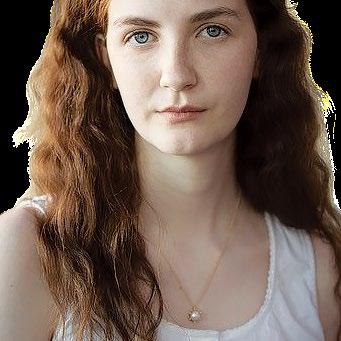
for them. This book came from me wanting the truth to be that people might choose to do bad things but aren’t inherently bad.
Why did you decide to set this novel in a post-apocalyptic world?
It’s my comfort genre. You have these characters who are in the worst possible situation. Everything has ended around them. They are deprived of whatever it was that used to bring them joy. Yet they continue to persevere. I find any sort of light at the end of the tunnel that they’re inhabiting very inspiring.
That is such an optimistic way to think about the end of the world!
I wrote this book in about two weeks when I was 17. I
was graduating from high school and looking out on what life after adolescence was going to be. When emerging into this new phase of my life, I wanted optimism to be the energy that I carried with me. Literature often argues that there is an inherent evil inside us all. I’m thinking of Lord of the Flies , which says that when people are left to their own devices, they will do violent things. And that’s not a new sentiment: Plato believed that if we could be invisible, we would do bad things, because no one would hold us accountable
I’m not sure I align with that anymore. My first draft ended with the bookstore burning down and this community effort at rebuilding. That starry-eyed optimism—that’s something that’s definitely shifted.
Wow, you were only 17! Was this your first book, then?
This is my third book. The other two were horrible and should never see the light of day, but they were important steppingstones for me to figure out what I wanted to write about and how I wanted to write it. They were both apocalyptic and danced around themes I explored in The Last Bookstore. I just
couldn’t figure out the piece that was missing. It turned out the piece was the bookstore!
Why do you think the bookstore was the missing piece?
It gave the main character, Liz, a purpose. The other drafts that I wrote had a meandering plot where these people were surviving because that’s what they were supposed to do. Like, Liz was surviving because it was the only thing she could think of to do in the moment. When you’re presented with crazy circumstances, you just sort of move on the best you can in whatever capacity that is for you. Having the bookstore as a place to go back to— whether it was something she recognized as a
purpose or not, at least it helped her want to keep fighting.
Also, the bookstore acted as a glue that bound the whole thing together. There’s a certain level of escapism and hopefulness inherent within bookstores. But then also, at the bookstore where I work, we have regulars. You know them, and you know about their lives, and they know about you. Like, when I left for college, people were giving me cards and graduation presents, because they knew me. That sense of community works really well for an apocalyptic setting.
The bookstore in this novel is also the site of a romance between the two main characters. Can you tell us a little bit about why you included a post-apocalyptic romance and, in particular, a queer one? When there are so few people, they tend to really bond. They hold on to what they have. The romance felt like a natural progression.
Plus, this book has a unique setting. There isn’t a society to abide by. When the societal aspect is removed, and the world has literally ended, homophobia is not the biggest concern. This creates a really wonderful opportunity for a queer romance without the framework of how are people going to accept me?
As a queer person, and the kid of two dads, I love queer representation and think there should be more of it. This was me doing my part to add to the existing canon of queer literature.

The Last Bookstore on Earth Braun-Arnold, Lily Delacorte | 320 pp. | $19.99 Jan. 7, 2025 | 9780593899489
I like to take feelings or ideas and move them into the framework of a story that will allow them to be explored.
In your book, the apocalypse was a weather event the characters call The Storm. Why did you choose climate change as the force that ended the world? When I was planning this book, I thought, what is the most realistic way that this apocalypse could come to pass? Unfortunately, in my mind, that is climate change. I think it is one of the biggest threats, if not the biggest, to humanity as
build on. I chose acid rain as the apocalyptic event, but I embellished it. Acid rain will do things to flora and fauna more than people. It cannot eat through human skin, like it does in the book.
What was it like to edit a book while in college?
It’s definitely…interesting. It’s all about finding time. Normally, for me, that’s between 9 p.m. and 1 a.m. There are moments where I’m like, Oh, I have three essays due, and also I should probably work on that thing for my editor, but I sort of muscle through it the best I can. It’s probably easier than doing it at any other point in your life, though? Like with a full-time job?
Do you see writing as your future full-time job?
I’m not sure how long I’m going to write books. I get my inspiration from personal experiences. I like to take feelings or ideas and move them into the framework of a story that will allow them to be explored. I started writing about the apocalypse during Covid. Is that a coincidence?
a whole right now, and something that absolutely has the capacity to cause immense, large-scale destruction.
At the time—my senior year of high school—I was in an environmental science class. The beginning of the idea for the storm came from that class. Then, from there, I read a lot of peer-reviewed articles on JSTOR just to see what I could
Probably not. Now, I go to a historically women’s college in this current, modern era, and I have something to say about that experience. So, I’m working on inklings about that.
I think I’ll write books until I feel like I don’t have any more stories to tell. I only want to write as long as I have something to say.
Mathangi Subramanian is a novelist, essayist, and founder of Moon Rabbit Writing Studio.
Miller, Jr., Keith F. | Harper/ HarperCollins (448 pp.) | $21.99
Jan. 7, 2025 | 9780063264977
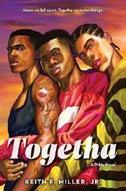
T his timely follow-up to 2023’s Pritty uncovers more of the elaborate political conspiracy targeting Black, queer, working-class communities, while casting gang life and masculinity in a whole new light. Boyfriends Leroy and Jay had finally figured out how to make their romance work when they were nearly killed. This sequel picks up in the wake of that close call. The teens are determined to bring down the Bainbridges, a powerful local family with political aspirations who have secretly been behind the rise in gang violence in Savannah, Georgia. The Bainbridges’ efforts have turned the media against the BDs, or Black Diamonds, sowing division within their ranks and even leading to the creation of a gang whose sole purpose is finishing the group off. While Jay plans to utilize his love-letter writing business to undermine the Bainbridges’ network and gather evidence of their wrongdoing, Leroy commits more fully to the BDs, revealing a refreshingly progressive and restorative version of the group that’s more in line with historical grassroots Black activism. The first-person narration shifts among the points of view of the two lovers plus another boy, Will, manifesting a complicated love triangle—and eventually a queer quadrilateral—alongside the highstakes politicking. Love is messy.
Gang violence is real. But by story’s end, the young men’s intimacy and tenderness are offered plainly as a path toward healing and liberation. A masterclass in love for those who feel unlovable. (Fiction. 13-18)
Mooney, Carla | ReferencePoint Press (64 pp.)
$33.95 | Jan. 1, 2025 | 9781678210168

Mooney traces the history of student-led protests in the U.S. and their influence on national discourse.
Mooney’s well-researched book weaves together landmark movements, like the civil rights sit-ins of the 1960s, anti–Vietnam War efforts, and the Black Lives Matter protests in the wake of George Floyd’s May 2020 murder, along with less well-known but significant campaigns, such as demonstrations during the Great Depression that led to government relief programs. Mooney captures both the idealism and the complexity of activism, noting its power to create change but also its risks: violent clashes with authorities or counter-protesters, infringement on others’ rights, and disruption to the public order. She spotlights successful grassroots youth movements like the March for our Lives, which focused on gun violence, and controversial protests like those at Columbia University against the Israel-Hamas War, which led to student arrests, suspensions, and expulsions. Mooney’s fact-driven tone makes this work useful for student reports but will feel detached to readers
A riveting companion novel that will leave readers eager for more.
expecting an impassioned account. This valuable resource is both instructive, as it covers the historical context of protests as well as their legal implications, and timely, with its inclusion of topics such as digital activism.
A compelling exploration of a key aspect of civic engagement. (photo credits, source notes, for further research, index) (Nonfiction. 12-18)
Ogle, Rex | Norton Young Readers (336 pp.) $18.99 | March 25, 2025 | 9781324052821

A hardworking high school senior strives to keep his future bright while driving around his drugdealing friend. Benny and Lawson, both raised by struggling single moms after their fathers left, are neighbors, best friends, and total opposites. Lawson, a white boy who’s charismatic and popular, goes to school mainly to deal drugs—not to study. Mexican American Benny, who’s quiet and studious, ranks near the top of their class. Lawson helps Benny come out of his shell at parties and stands up for him against bullies, and Benny is there when Lawson needs a ride. Benny’s mom holds down multiple cleaning jobs, works to stay sober, and encourages her son to go to college. By contrast, Lawson’s mom, who’s on welfare, depends on Lawson dealing marijuana to make rent. As graduation nears, the duo find themselves on dangerously different paths. Feeling trapped by his dependent mother and a new, violent drug boss, Lawson starts selling harder drugs. The risk of getting arrested or attacked because of Lawson’s drug dealing terrifies Benny, who threatens to stop driving Lawson around. Written in swift, emotive verse from Benny’s perspective, this work will leave readers empathizing with Benny’s struggle to prioritize his own future while remaining loyal to the childhood best
friend he genuinely wants to help. But it’s the expertly paced plot twist at the end that makes Benny and Lawson’s story heartbreakingly unforgettable. Achingly, beautifully written. (Verse fiction. 14-18)
Patel, Sajni | Rick Riordan Presents/ Disney (416 pp.) | $18.99
Feb. 25, 2025 | 9781368098779

In this twist on the story of Persephone, a young woman makes a life-altering bargain to save her loved ones. Years before Manisha, the protagonist of 2024’s A Drop of Venom, met monster slayer Pratyush, her older sister, Eshani, made a secret trade with the shades, exchanging her life to ensure the survival of her fellow naga. Hiran, the brooding Gatekeeper of the Nightmare Realm, whose spirited sister, Holika, can manipulate dreams, has repeatedly appeared in Eshani’s dreams, though she believes she’s simply imagining him. When the shades finally demand repayment, Eshani must locate the underworld’s Gatekeeper—unaware it’s Hiran—to fulfill a prophecy. Instead, she finds herself in the clutches of the nefarious Shadow King, Hiran’s sadistic half brother, who believes that Hiran died on their father’s funeral pyre. Patel carefully establishes the initial worldbuilding, which unfolds gradually, before pulling the characters together in a thrilling third act that blends action and introspection even as Eshani and Hiran confront their destinies and their growing romantic bond. The dual perspectives reveal each protagonist’s personal struggles— Eshani’s with mastering her power over plant life and Hiran’s with keeping his shadow self, the Gloom that “made him crave violence and darkness,” in check. Grounded in
Indian lore, the story features brownskinned human characters and offers a fresh cultural perspective on themes from Greek mythology. A riveting companion novel that will leave readers eager for more. (author’s note) (Fantasy. 14-18)
Peters, Stephanie | Jolly Fish Press (160 pp.)
$9.99 paper | Jan. 1, 2025 | 9781631639098
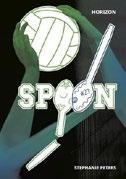
A seemingly harmless game has unexpected consequences. Linden High student athletes must follow a strict code of conduct or face being benched or suspended. Varsity volleyball player Macy has been on the starting lineup all season, but after she injured her ankle, the coach moved new student Alliyah into the starting spot for the playoff matches. One evening after a game, Alliyah convinces Macy to drive her home—even though Macy has a junior license that means she can only drive with family members in the car. If discovered, this infraction would cause trouble for Macy at home and on the team, and Alliyah takes the opportunity to extort a favor from Macy in exchange for keeping the secret. Alliyah also introduces a schoolwide game she calls Spoon, in which each student carries a decorated spoon and must produce it within five seconds if challenged. The game becomes increasingly intense and affects team morale, in large part owing to Alliyah’s behavior. Macy knows that she should tell their coach about Alliyah’s divisive actions, but it would mean owning up to her own missteps. Believable peer conflicts propel this well-paced novel for reluctant readers, which is packed with detailed descriptions of volleyball matches. Most characters present white; Alliyah has brown skin and black hair, and Macy’s crush is cued Black.
A tense, realistic novel with especially strong appeal for sports lovers. (Fiction. 12-18)
Phillips, Jennifer | Jolly Fish Press (160 pp.) $9.99 paper | Jan. 1, 2025 | 9781631639135

How can you find a new normal when you can’t even be sure what’s real and what’s not? Before the summer when his life fell apart, high schooler Kai Lum’s biggest worry was balancing school with on-the-job training to support his ambition of becoming a chef. Now he’s got a bipolar diagnosis, psychiatrist appointments to keep up with, a family that’s crowding him with worry, new meds that come with a host of troubling side effects, and the nagging fear that his friends are growing apart from him. And on top of it all, the voices that tell him everyone in his life is against him just won’t shut up. Desperate to “get back to normal,” Kai, who’s Chinese American and white, must decide whom he can trust and learn to accept help before everything spirals out of control again. This book, written in simple, straightforward language that’s accessible to reluctant readers, follows a clear plot trajectory, and even though the beats might feel predictable, they still come together to tell a gripping tale. Kai’s first-person point of view allows readers to viscerally feel what he’s experiencing as he struggles to make sense of his new reality while situations slip further out of his control. The challenges Kai’s family and friends face are also fully explored in the story.
A compassionate, heart-wrenching depiction of teenage mental illness. (Fiction. 12-16)

Purdie, Kathryn | Wednesday Books (400 pp.) | $14.00 paper
March 25, 2025 | 9781250372598

Following their adventure in The Forest Grimm (2023), Clara and Axel journey again into the woods, hoping to complete their mission and lift the curse plaguing their village.
To succeed, they’ll need to bring a murderer to justice and recover the missing page of the magical Book of Fortunes, a powerful artifact that grants each villager a single wish. As the forest creeps closer to the line of ashes that marks the borders of Grimm’s Hollow, luring more residents into its dangerous depths, Clara, who has scoliosis, relies on her ability to see visions of the past to unravel the mystery. Navigating the forest proves treacherous when twisted versions of fairy tales—such as “Rumpelstiltskin,” “The Twelve Dancing Princesses,” and “Jack and the Beanstalk”—stand in their way. But the most difficult obstacle Clara and Axel face is learning to trust one another when Clara’s visions suggest that their loved ones may be hiding dark, possibly deadly, secrets. Clara’s visions introduce multiple red herrings, complicating the narrative’s timeline but adding intrigue along with numerous suspects. The tension between the leads escalates as their diverging intentions spark conflict, adding emotional stakes to their quest in this duology closer. Most characters are cued white.
A thrilling and satisfying dark fantasy merging a murder mystery with eerie fairy tales. (Fantasy. 13-18)
Ricketts, Chris | Little Island (296 pp.) | $11.99 paper March 11, 2025 | 9781915071552
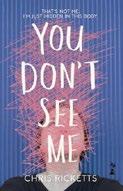
A trans boy in Dublin struggles with hiding his true self.
Seventeen-yearold Ros, who presents white, tries to remain unnoticed in a school that’s divided into cliques—the stereotypically girly Flock, the studious nerds, class bully and rugby star Tadhg and his followers, and the lone goth. Ros couldn’t feel more out of place as a closeted trans guy. When his best friend, Sarah, convinces him to attend a party hosted by Tadhg, he’s not expecting Eddy, Tadhg’s older sister, to be so charming. Ros spends the night holed away with Eddy, developing a major crush, but the brilliant night sours in the light of day, as Tadhg and the Flock, convinced that Ros is a lesbian, become determined to ruin his life. Ros now faces a battle on two fronts: plagued both by the homophobia of his peers and the sinking feeling that, by remaining closeted, he’s lying to Eddy about who he is. The story’s development is undermined by stilted dialogue and outdated representation: Even though the novel is set in the present day, the framing of gender-related concepts feels out of step with information that modern teens will have access to (for example, Ros’ online research consists of searches for transsexualism and transgenderism). Readers may find that the self-harm scenes (Ros began cutting himself when he hit puberty) and an aborted suicide attempt veer alarmingly close to trauma porn.
A well-intentioned novel that falls short in its handling of sensitive topics. (author’s note) (Fiction. 16-18)
Painterly, atmospheric backgrounds add a stark elegance.
OLD AS STONE, HARD AS ROCK
Rosswood, Eric & Kathleen Archambeau Mango (222 pp.) | $18.99 paper
Dec. 10, 2024 | 9781684816897

Brief biographical sketches celebrating queer people’s contributions to society. Activists and authors Rosswood and Archambeau present accessible community histories that educate and inspire by presenting their subjects as changemakers, not victims. The short profiles, which are prefaced by black-and-white photos, are grouped by area of influence: “Activism,” Business,” “The Arts,” “Film & Television,” “Government & Military,” “Music,” “Religion,” “Science, Health, and Technology,” “Sports,” and “Literature,” showing their broad range of interests and abilities. Some of the people featured are well-known historical figures (such as Bayard Rustin, Alan Turing, and Frida Kahlo). Others are contemporary, like Pete Buttigieg, RuPaul, X González, Esera Tuaolo, and Megan Rapinoe. Despite a U.S.-centric focus, the authors include some international names—for example, Jóhanna Sigurðardóttir, Jin Xing, Daniela Vega, and Leo Varadkar. The diversity in the Americans, who include immigrants and working-class folks, contrasts with the omission of African subjects; similarly, the book includes no queer Muslims. Nevertheless, this strong work will appeal to teens seeking queer role models and joy-centered narratives and may encourage readers to contemplate what it means to be a hero. It also holds value for adults who are raising or working with teens. A clear and persuasive introduction emphasizes the need to push back against the erasure of
LGBTQ+ lives and stories from history curricula and public conversation.
An inviting and readable book framing queer people as admirable and valuable members of society. (resources, photo credits) (Nonfiction. 14-18)
Sain, Ginny Myers | Putnam (352 pp.)
$19.99 | March 4, 2025 | 9780593625484

As people vanish in the mountains surrounding her remote Arkansas town, a teen with the ability to locate the dead tries to find the killer.
Seventeen-yearold Dove Warner can hear the song of the dead. It resonates through her body, a bone-deep thrum that propels her towards a victim’s burial place. This grim talent is useful in Dove’s hometown, Lucifer’s Creek, where the sheriff has relied on her in recent years to find the remains of people who have died under mysterious circumstances while hiking the Aux-Arc Trail. Oddly enough, the rising body count hardly disturbs the locals—except, that is, for Dove’s best friend, Lowan Wilder, who believes he’s being haunted by the restless spirits of the murdered hikers. Dove is, ironically, very skeptical about the paranormal, but it’s clear to her that Lo’s fear is genuine, as is his insistence that putting an end to the killings will appease the spirits. Folk magic, a family curse, and the specter of an ominous regional cryptid combine with vivid descriptions of the Ozark Mountains setting to give this story a distinct sense of the Southern gothic. Like the sulfurous stream that gives Lucifer’s Creek its name, the central mystery twists and turns in unexpected ways, building up to a chilling reveal in the final act that skirts the edge of horror. Main characters read white. Gripping and intensely atmospheric. (Paranormal thriller. 14-18)
Sanna, Alessandro | Trans. by Ammiel Alcalay | Unruly (184 pp.) | $34.95 Feb. 4, 2025 | 9781592704217
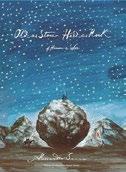
In this translated work, an Italian artist grapples with the intractability of war as part of the human condition. This wordless picture book for older readers opens with Sanna’s descriptions of his attempt to “bring to life, in painted form, the poems of Ungaretti, Apollinaire, Hemingway, Mandelstam, and others,” as well as an introduction by translator Alcalay, offering his interpretation of the images that follow. Strategically framed, pictorial narratives develop in five stages, labeled “Humanity,” “Fire,” “Sea,” “Sky,” and “Infinity,” each depicting progressively more technologically advanced forms of warfare. First, a stone rolls from a mountaintop onto a barren landscape; two figures emerge, and one clobbers the other with the stone, which then tumbles into a different setting where more fighting ensues. As more weapons and different tactics appear, readers witness an increasing scale and scope of conflict and violence through illustrations that at times feel universal and at others reference iconic, recognizable scenes from diverse times and places. Titanic hands and figures appear, manipulating tiny, silhouetted humans and horses, intimating tensions between creator and creation, and, as Sanna puts it, “the age-old, tormented contest to dominate all things that can be named.” Constellations in deep blue skies mirror battle scenes below. Painterly, atmospheric backgrounds add perspective and a stark elegance, accentuating the bleak solemnity. The montaged compositions occasionally evoke Peter Sís’ art and Shaun Tan’s The Arrival
A haunting, poetic visual interpretation of one of humanity’s existential dilemmas. (Picture book. 12-adult)
Our Infinite Fates
Steven, Laura | Wednesday Books (352 pp.)
$20.00 | March 4, 2025 | 9781250333889

Teens are doomed to repeatedly fall in love—and kill each other.
Welsh teen
Branwen is the latest reincarnation of Evelyn, a being who’s over 1,000 years old and is fated to die, again and again, shortly before their 18th birthday. Intertwined in their fate is Arden, with whom they have fallen in love over the course of 100 lifetimes, and who is their perpetual murderer/victim: When Arden kills Evelyn, Arden immediately dies as well, and vice versa. This time, Branwen needs to stay alive long enough to donate stem cells to her sister, a leukemia patient. To do so, she’ll need to figure out who Arden is in their current form and convince them to help. The story is interspersed with chapters from their previous incarnations, offering glimpses of a variety of times and places and helping to create a sense of urgency as the mystery unfolds. Notably, they are French soldiers who die in the Great War and, in the 1930s, Algerians raised to hate the French colonizers. Steven delves into the inherently queer concept of swapping bodies and switching genders; Evelyn doesn’t have a strong attachment to living as a particular gender, but Arden expresses a preference for “being a boy.” Some of the incarnations enable the author to explore same-sex longing and romance in various contexts, although the brevity of these interludes leads at times to insufficiently nuanced representations of the cultures at hand.
An intriguing romantic fantasy with characters readers will root for.
(Fantasy. 14-18)

Smart and moving; a beautiful tribute to those living with the threat of wildfires.
A
Taylor, D.L. | Henry Holt (368 pp.)
$19.99 | Feb. 4, 2025 | 9781250331687

Tainted magic and a father’s twisted nature unite an heir and a runaway. Like royals before her, Mancella entered the Broken Citadel at age 8 and emerged with the magic to summon animals—albeit at a fearsome price. Over the years since, she’s endured the manipulations of her father, the Prime, hoping that her sacrifices as heir apparent can protect others. Silver, a young thief on the run from the Prime’s draconian Academy, strikes a deal with a shadowy figure to secure a better future for himself. Disguised as a servant, he infiltrates the castle grounds with the goal of seducing and double-crossing Mancella. When her father’s demands cross a line, Mancella is drawn to Silver and the rebellious plot he’s a part of, causing both to vacillate between duty and lust. This gruesome book is not for the faint of heart, but those who can stomach Mancella’s brutal acts of violence toward animals (which are balanced by depictions of the emotional toll of these acts) will find elements to relish. Though Silver’s character development is not as robust as Mancella’s, their romance still simmers. This debut’s worldbuilding and lore are ambitiously sketched but ultimately let down by generic language and other missed opportunities for more robust development. The leads’ alternating first-person narration highlights divisions between the social classes in this vaguely European historical setting. Main characters are cued white.
A uniquely twisted if unevenly executed dark fantasy duology opener. (Fantasy. 14-18)
Teerdhala, Swati | Disney-Hyperion (304 pp.) | $13.99 paper
March 11, 2025 | 9781368096126

A college romance with festivities at its heart.
Maya Sastry’s first week at Neadham University starts off in a hopeful way, with a meet-cute involving a boy with “heart-melting dimples” who helps her after she drops all her notebooks on the ground. However, despite this promising beginning, self-centered gamer Thomas turns out to most definitely not be the man of Maya’s dreams. Instead, Indian American Maya puts all her effort into her classes, baking, and putting together the best Holi bash Neadham has ever seen. As it turns out, getting involved with the Hindu Student Association’s event committee means working with gorgeous, charming upperclassman Nishant Rai. He and Maya have what seem to be very different plans for both the festival and life. Nishant, who’s a DJ, is imagining an “EDM festival meets old-fashioned Holi dance party with bhang,” a traditional drink containing ground cannabis. To Maya, Holi is a meaningful time, “the festival of renewal. A time to celebrate life and love…traditional and nostalgic.” But ideas meld, as do lives, and what follows is the distinct possibility of romance. The story, which is populated by a cast
of well-sketched characters, explores the leads’ personal insecurities and toxic exes alongside the vagaries of college life and event planning. A small amount of family baggage gets checked in as well. Altogether these elements make for a bright and fun read.
A story of self-discovery and falling in love, with a dash of color and a sprinkle of breeziness. (Romance. 15-18)
Voris, Jenna | Viking (304 pp.) | $12.99 paper | March 4, 2025 | 9780593692745

An outcast teen in Ohio returns to Bible camp with a secret vendetta. Riley Ackerman’s family stopped going to church after the sanctimonious Pastor Young publicly shamed her and her sister, Hannah; Riley came out as bisexual, and Hannah had an abortion. But walking away forever is proving difficult for Riley since the pastor’s twins, Ben and Julia, are her longtime best friends—and she has a secret crush on Julia that she’s afraid to reveal. When Riley gets in a fight at school with Hannah’s former best friend, she dodges suspension by accepting a deal from the principal: She agrees to attend church camp over spring break (along with peers who see her as a lost soul) and submit an essay containing her reflections on what she’s learned. But Riley won’t be subdued so easily. She decides instead to write a scathing takedown of Pastor Young’s teachings, which becomes a secret crusade to undermine his authority among the other campers, too. But in the process of seeking her revenge, Riley becomes aware that her feelings on the situation—and maybe everyone else’s—are more complicated than she realized. Though the book’s themes are seemingly heavy, they’re sweetened by pop culture references galore and the narrator’s sharp, clever sense of humor. Riley and the majority of the cast
members in this Midwestern Baptist community are white.
An original blend of queer romance, nuanced revenge plot, and religious deconstruction. (Fiction. 14-18)
Winans, Justine Pucella Bloomsbury (240 pp.) | $19.99 March 11, 2025 | 9781547616312
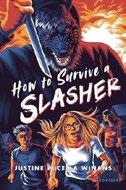
There’s a new murderer in Satterville, Ohio—better known as Slasherville thanks to the fictionalized accounts of the town’s two massacres by a pseudonymous author. CJ Smith, a white-presenting, bisexual, genderqueer teen, abhors Moon Satter’s novels because their own life is so entwined with the actual events. Their dad survived the first massacre, perpetrated by a killer who donned a wolf mask at a summer camp in 1996, but he was killed in the second attack, six years ago. CJ survived by hiding in a closet. When an unpublished manuscript for a third Moon Satter novel shows up on CJ’s doorstep, they think it must be a prank…until elements of the story, which recounts new Wolf Man killings, start to come true. When the final girl in Satter’s unpublished novel instead winds up being the first victim in real life, CJ must step into the main character role to stop the killings. This metafictive work plays with horror tropes in entertaining and exciting ways and keeps the suspense up with twists aplenty. CJ is a captivating lead, figuring out how to stand out and take charge and when to ask for help and accept support. Secondary characters, including CJ’s Costa Rican American classmate and new friend, Nadia Martínez, and Sebastián, Nadia’s cousin and CJ’s crush, are equally dynamic. These relationships add warmth and humor to a story that’s not afraid to dabble in the dark.
An engrossing slasher story that honors the genre while feeling fresh. (Horror. 14-18)
Kirkus Star
Youngdahl, Shana | Dial Books (368 pp.) $19.99 | March 18, 2025 | 9780593405512

A high school girl grapples with personal worries and the devastation wrought by the wildfire that engulfs her small town.
Caprice
Alexander both loves Sierra, California, beyond reason and hopes to escape it. While dealing with the stress of senior year, Cappy, who’s white, is also developing an app she hopes will launch her career. At home, she tiptoes around her older brother, Beckett, newly sober after months in rehab. Written after the devastating Camp Fire of 2018 in the author’s hometown of Paradise, this compelling novel has a highly effective narrative frame: The fire doesn’t come as a surprise, but that early knowledge enhances rather than dampens the building tension as Cappy and her family (including their beloved gramps and gram) draw closer to the day that will change everything. Interspersed throughout are archival entries of items lost in the fire, each with an explanation from its owner of the object’s significance. Besides cleverly tying to the book’s conclusion, this structure makes the broader communal loss visible, enlarging the scope of the work beyond Cappy’s individual struggles. Helping Cappy navigate Beckett’s recovery process and the fire’s aftermath are her best friend, Alicia Johnson, one of the few Black people in town, and her crush, River Parker-Holt, newly arrived with his moms and hoping to put down roots after dozens of moves. Smart and moving; a beautiful tribute to those living with the threat of wildfires. (content note, author’s note, resources) (Fiction. 12-18)
Zhao, Amélie Wen | Delacorte (400 pp.)
$22.99 | March 4, 2025
9780593813843 | Series: Three Realms, 1

A set of mystery trials is all that lies between a teenage girl and a coveted prize that can save her mother.
Demons have spread across the land, killing mortals and taking the emperor’s throne. Since 19-year-old Àn’yīng’s father was killed by a demon and her mother’s soul was partially eaten, she’s been looking after her family in what remains of their world. With the magic Àn’yīng learned from her father, she’s kept her mother and little sister alive; acquiring a pill of immortality would allow her to restore her mother’s soul, but Àn’yīng’s only hope of obtaining one is winning the trials of the Temple of Dawn, which are laid out for mortals who hope to prove their magical and physical prowess to the Kingdom of Sky for a chance at eternal life. At the trials, she makes both friends and enemies and struggles with determining whom she can trust and who seeks to use her for their own purposes. Àn’yīng’s father may have laid her path out for her, one that intersects with the fate of the kingdom, in ways she cannot predict, but her priority is survival, no matter the cost. Featuring star-crossed lovers whose relationship unfolds against the backdrop of a demon apocalypse, the novel remixes tropes in new ways, delivering a distinctly Chinese setting and enough twists to keep readers guessing.
A page-turning blend of magic, competition, family, romance, and oh-so-many secrets. (Fantasy. 13-18)


Labyrinth Road will publish the sequel to Blood at the Root.
LaDarrion Williams will bring readers back to Caiman University in a new young adult fantasy novel, People magazine reports.
Labyrinth Road will publish Bones at the Crossroads next summer. The press describes the book as “a wholly unique and electric saga of
magic, heritage, and community.”
The novel is a sequel to Blood at the Root, which was published last May. That book follows Malik, a teenager with magical powers who enrolls at a historically Black university where he seeks answers about the disappearance of his mother 10 years earlier. A critic for Kirkus called the book “a well-thought-out magical world that provocatively centers Black experiences.”
Bones at the Crossroads finds Malik back at the university, coming to terms with the family he recently discovered while confronting a dangerous new threat.
On the social platform X, Williams revealed the inspiration for the book’s title.
“I was always fascinated with Bone Thugs-NHarmony ‘Tha Crossroads’ video since I was a kid and writing Bones at the Crossroads, I would always refer back to that video and pull some inspiration from it,” he wrote.

LaDarrion Williams

“That’s how I came up with the title. Malik will be at a crossroads on a lot of things and he’s going to have to deal with what happened in book 1.”
Bones at the Crossis scheduled for publication on July —M.S.



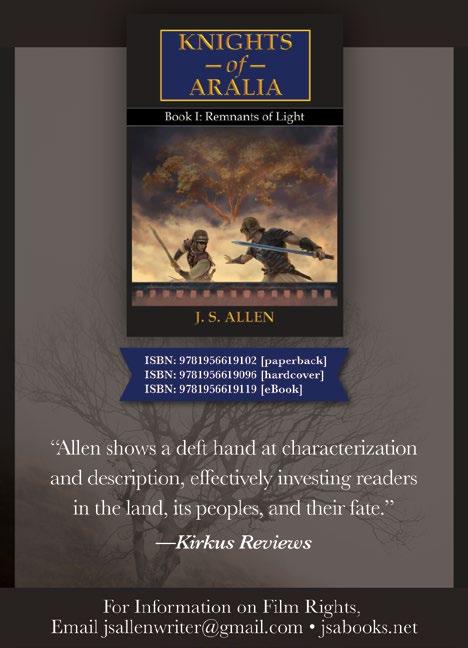
Meyer and Tamara Moss are collaborating on a murder mystery, The Escape Game. Marissa Meyer and Tamara Moss are writing a young adult murder mystery that will be published by Putnam Books for Young Readers in 2026.
The press announced the acquisition of the book, The Escape Game, in a news release, calling it “a twisty, fast-paced murder mystery set on a game show where contestants must break out of escape rooms to win the million-dollar prize.”
Meyer is known for her Lunar Chronicles series of young adult science fiction novels, which kicked off in 2012. An animated film based on the series is in the works. Moss is the author of the Lintang series of children’s books.
The Escape Game will follow Sierra Angelos, a contestant on an escape-room game
show whose sister was murdered while a contestant on the previous season.
Meyer said the book was inspired by her family’s love of escape rooms. “The idea for The Escape Game first came to me when we were doing a ‘Mona Lisa Heist’ themed room. We were busily working our way through the puzzles when I thought, What if we opened one of these props or doors and found a dead body ? And what if we had to solve the clues in the room in order to also solve the murder?”
The Escape Game is scheduled for publication in April 2026.—M.S.

For reviews of the Lunar Chronicles, visit Kirkus online.
Marissa Meyer





Kylie Lee Baker



Lauren Blackwood
By Isabel Ibañez
Angela Montoya


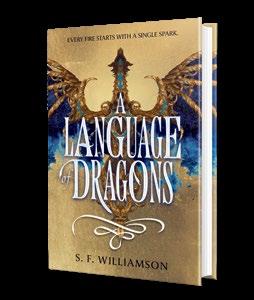

Mark Twain once said, “Everything human is pathetic. The secret source of Humor itself is not joy but sorrow. There is no humor in heaven.” Hilarious! He was onto something, though; as we begin a fraught new year, a good laugh is a candle lit against the darkness (don’t laugh directly onto the candle, that will defeat the purpose). Twain heads up a proud literary lineage that includes such erudite jesters as Robert Benchley and Calvin Trillin alongside populist truth-tellers like Will Rogers, Irma Bombeck, and Dave Barry— keen observers of the human condition who tell us what we already know in ways that we’ve never thought of, uniting us in all of our benighted, beautiful ridiculousness.
In an era of the written word dominated by partisan pundits, social-media scolds, and click-baiting cynics (where have you gone, James Thurber? Our nation turns its lonely eyes to you), some recent Indie titles are keeping the flame alive:
In Thoughts Like Buckshot (2024), novelist Edward Fahey leavens philosophical musings with absurdist humor (as Twain also once observed, “laughter without a tinge of philosophy is but a

sneeze of humor”). There is much variety on display in Fahey’s collection—the author tackles subjects from European travel to the Theosophical Society to ghosts with Tourette syndrome in pieces that are, per our reviewer, “often poignant” and “refreshingly self-aware.” It’s hard not to like a spiritual seeker who sees the silliness in fellow travelers anointing themselves as “Guru something or another. Or Light Seeds, or Star Farts.” Our reviewer judged the anthology to be “an insightful, quirky memoir and eclectic collection of observations on spirituality, life, and love.”
Julianna Newland makes her perspective clear in the very title of her 2023 corporate survival guide, All Up in Your Bizness: Managing Your Business Crap. In a sea of getting-ahead-at-work


books, Newland’s irreverent take is a balm to readers weary of New Agey platitudes and robotic businessspeak. Advising her audience to dress appropriately for the office, she cautions against wearing one’s undergarments over one’s clothes (“I don’t care what Madonna does”) and lays out the perils of cutting loose at company parties (“the office snitches also will be there”). Our reviewer notes that Newland is “often serious and refreshingly candid under the humorous surface”; this is, at heart, a sincere etiquette primer designed to help wary workers navigate a sometimesbewildering social/corporate landscape. Newland has the wit to understand that such an undertaking can be funny.
Radu Guiaşu paints with a broader brush in her
collection, A Good Day and Other (Mostly) Humorous Stories and Lists. Guiaşu flits from topic to topic like a hummingbird doing a stand-up set, addressing logical inconsistencies in the premise of Jurassic Park (“The only thing separating the T. rex from people is a rather shabby electrified fence”), pointing out the omissions in self-help books (“Know your limitations, but don’t share that knowledge with anyone”), and proffering observations about running with the bulls at Pamplona (“generally speaking, quadrupeds are faster than bipeds”).
“No matter the topic, it’s funny stuff,” opines our reviewer, who praises Guiaşu’s collection as “delightful and eclectic.”
Arthur Smith is an Indie editor.
A collection of statistics and personal stories from people within the trans community. After years of research, Boylan, the parent of a transgender young adult, and Kirby, a therapist specializing in genderdiverse teens, have assembled a collection meant to both educate and inspire. Accounts from the transgender community and their parents—covering issues such as identity, coping with familial rejection, etc.—mix with more encyclopedic information, such as the definitions of terms like biological sex and gender. Occasional graphics feature answers to questions such as, “How would you describe gender dysphoria in 10 words or less?” The authors explore all aspects of the transgender journey, from the idea
that not all “gender-diverse” people feel the need to medically transition to becoming an ally. Each section begins with an excerpt from Rula Sinara’s Just Embrace, while occasional boxes feature “Thoughts from a Therapist…” that offer a professional’s advice for parents (on teens exploring gender diversity, for example, or desiring a legal name change). The final section includes the results from two surveys in which 150 additional participants answered questions like, “What has been the hardest part of your gender journey?” Boylan and Kirby approach the subject with openness and compassion, exploring not only the basics behind the trans experience, but also more peripheral topics, like

autism (which is common in the trans community) and religion (which is often a tricky topic for trans people and their families). But the true emotional impact occurs when the authors hand over the stage to those who are trans: “They want to erase us. They say they hate the sin and love the sinner as they silently watch us die. And the reason is that we make them
uncomfortable because we are different, and they could never be. And that is our superpower.” With an extensive list of resources, as well as intimate anecdotes, this anthology could prove to be a true lifeline for trans youth and adults. An emotional, engaging, and informative look at the real-life struggles and triumphs of trans people.
Abrams, Daniel Lawrence | Solstice Publishing (352 pp.) | $22.00 paper | Sept. 10, 2024 | 9798327070943

In Abrams’ SF novel, a billionaire fraudster’s yearning for tech-assisted immortality upends an influencer’s life. Everybody claims to have their so-called red lines that they’d never cross—but what if a chance to live forever presented itself? That’s the question facing wealthy but ill criminal Chuck Rosti, who’s scheming to steal the Vekhuman technology developed by Roxy Zhang, which will give him a new lease on life, both literally and figuratively. Getting past the fearsome security at ZerQuali, which Roxy founded, presents a challenge, however. Enter Roxy’s ex-boyfriend, Stu Reigns, an idealistic influencer whose perennially ropy finances leave him vulnerable to Chuck’s offer of $3 million to steal the tech. Stu’s complicated history with Roxy gives him all the emotional justification he needs to “find a way to buy some happiness, dammit.” Of course, nothing is simple in a dystopian setting with 96-degree temperatures, overdriven artificial intelligence, and lethal security robots called “RoboKrupkes.” Before long, Stu winds up mired in double- and triple-crosses, as he must also stay one step ahead of a team of Russian thugs who want the tech for themselves. Fans of cyberpunk SF will find plenty of thrills in these pages, delivered in suitably unapologetic slam-bang fashion by Abrams: “The Robo-Krupke zipped five feet off-angle, whipped around, and fired one shot…. The metallic smell of blood stained the air.” An additional twist comes from a series of hyperlinks (“ONLY CLICK IF YOU’RE FEELING ULTRANERDY”) that readers may click for deeper dives into characters’ backstories, defining scenes, and assorted ephemera, if they’re so inclined—or they may
simply enjoy the white-knuckled ride as it stands, from the safety of their armchairs. Either way, the outcome should amply satisfy aficionados of alternative, tech-centered SF. A supercharged, high-stakes cyberpunk thriller.
Kirkus Star
Barton, Katherine | Ériu House (158 pp.) $15.81 paper | Sept. 27, 2024 | 9798218493981
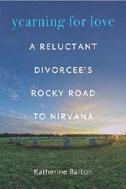
In Barton’s memoir, a woman details her journey to self-actualization as a divorcee. When the author retired, she didn’t expect divorce on the horizon—but after 20 years of a difficult marriage, she realized her resentment was unsustainable. Rather than spend the rest of her life in a situation that made her unhappy, Barton decided to divorce, despite her fear of being alone. The author and her husband, John, married when the former was 42 and the latter was in his 50s. They soon had a daughter, Jenna, who was not John’s first child (the others are not discussed in this memoir). Barton began her journey to Nirvana from a Methodist upbringing; her father was deeply religious, so much so that she at one point refers to him as “the pastor.” While dealing with her divorce, Barton delved into Buddhism, which she now practices. This account is loosely chronological, covering the time from the author’s decision to divorce to the present, with regular flashbacks to her childhood and marriage. These flashbacks also generally occur chronologically, although sometimes without preface, leading to somewhat abrupt shifts on occasion. This happens frequently when Barton discusses therapy sessions, which she uses as a framing device to relate her present to her past (for example, as Barton
recounts her mother leaving, the narration snaps back to the present with, “The therapist looked shocked”). That this feels only slightly jarring is testament to the fact that Barton’s prose is so engaging that the reader easily goes with the flow. Although there is much sadness in this story, the author evinces a refreshingly progressive view of divorce; in ending her union, she found herself “freed from the bondage of lifeless agreements, and I could reclaim the energy and vitality of creating something that was truly my own.”
An intimate portrait of self-discovery after retirement and divorce.
Burns, B. John | Self (220 pp.) | $21.95 $12.95 paper | Sept. 6, 2024 9798338522271 | 9798337881331 paper

Burns retells his father’s remembrance of his first year at Boston University in 1947 and the two extraordinary foreign students he roomed with. Bernard J. Burns—much to his chagrin, he was eternally called Buddy—was born in 1929, a “veritable Depression baby”; the gloomy time hung over his entire childhood like a storm cloud. When he matriculated at Boston University in 1947, admitted on an academic scholarship, he was given an opportunity to begin anew—to refashion himself and attempt to convince people to refer to him as anything other than Buddy. In addition to the daunting nature of the big city (Buddy grew up in Worcester), he was surrounded by older students, veterans of the war, and men who had killed other men in combat; it was an intimidating experience for a 17-yearold boy of provincial origins, a predicament thoughtfully rendered by the author, Buddy’s son. Buddy was fortunate enough to make good friends with two of his roommates, both
OBELISK ODYSSEY
foreigners, and years later he regaled his son with the fascinating stories of their exploits. Pong Sarisin hailed from Thailand, born into one of the most prominent families in the country (the “Kennedys of Thailand”). His father was the nation’s secretary of state at the time, and his fiancee was the daughter of the prime minister. Fernando Uribe Senior was born in Medellin, Colombia, and his father, Eduardo, founded the newspaper El Diario, a liberal publication that agitated for reform. Buddy’s time with his two foreign friends supplied the kind of education a university curriculum never could— at one point, Pong took him to meet a prince, who turned out to be Prince Bhumibol Adulyadej, the grandson of King Chulalongkorn, “who spent four decades modernizing Siam.”
Burns’ recounting of his father’s stories can be a bit long-winded and personally idiosyncratic—as he admits, these are reports of “an old man’s recollections of life as he knew it,” and they often read precisely as such, even though they are gently dramatized. Still, he intelligently captures a pivotal time in the history of the university, in which it was flooded by soldiers cashing in their GI Bills and changing the landscape of collegiate life forever. Pong and “Ferdie,” as Buddy called him, are two utterly captivating characters, excitingly exotic to Buddy at the time and both caught up in the political tumult of their nations in a way Buddy was not. (Pong’s father led an uprising against the prime minister, and disappeared for a time in the chaos.) Ferdie would become a prominent politician in Colombia and was eventually assassinated by the drug cartels he refused to bow down to. What emerges from this personal narrative is a powerful demonstration
of the fact that the immigrants who come to America to work and to live are more often than not motivated by the same aspirations as their nativeborn counterparts, and often bring with them far more experience and maturity than their new countrymen. “Some, like Pong and Ferdie, are sent here from families that are truly prominent in their necks of the woods, and the American education will enable them to return to pick up the banners and run with them,” Burns writes. “They sit fearlessly in the crosshairs of history.” This is a captivating remembrance, packed with historical and cultural insight. A thoughtful memoir brimming with marvelous anecdotes.
Ciccone, Mark | Amplify Publishing (272 pp.) $28.00 | Nov. 12, 2024 | 9798891382596
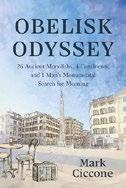
Ancient Egyptian obelisks show us deep connections between past and present, according to Ciccone’s winsome cultural meditation. The author, a self-described “semi-retired world traveler,” recounts his quest to visit all the obelisks—slender, tall, four-sided monoliths tapering to a pyramidal cap—that were quarried from Aswan granite in Upper Egypt, commissioned by pharaohs in the second millennium BCE, among them Queen Hatshepsut and Ramesses II. Ciccone saw 11 such
monoliths in Egypt, but he focuses on those that now reside in other countries. They include the obelisk in New York City’s Central Park, which visually rhymes with Manhattan’s ultra-thin skyscrapers and, Ciccone contends, symbolizes the supersession of pharaonic absolutism by democracy. Also included is the monolith in Paris’ Place de la Concorde, which, the author asserts, rhymes with the Eiffel Tower and evokes the darkest elements of the French Revolution, and the one in Dorset, England, which has a Greek inscription that helped scholars decipher hieroglyphics and, the author says, bears witness to the need to unite people instead of dividing them. He also looks at eight obelisks brought to ancient Rome, whose people adored everything Egyptian; these monoliths were later topped with crosses and sited at churches. Ciccone’s survey includes informative data on obelisks’ heights, weights, representations of the sun god Ra, and migrations through the world, along with piquant sketches of the sites and colorful anecdotes; one tells of a 19th-century Italian architect who remounted an obelisk and got his hand caught between the monolith and its new pedestal, he reports; his hand had to be amputated and remains under the obelisk to this day. Along the way, the author supplies a breezy travelogue and keeps up a perceptive, atmospheric commentary on human nature as revealed in the monuments (“in the growing dusk, with the help of another Scotch, it struck me that obelisks were mysterious—a still not entirely understood product built with a spiritual intent to satisfy ambitions for eternal life by bored and probably scared powerful men”). The result is a charming disquisition on a revealing facet of architectural history. A wide-ranging survey of iconic landmarks featuring captivating lore and intriguing ruminations.
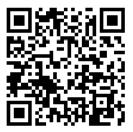
Crookston, Emily | Amplify Publishing (192 pp.) $19.95 paper | Oct. 1, 2024 | 9798891382046
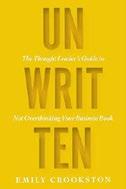
Professional ghostwriter
Crookston offers a how-to guide for businessbook writing for people who run businesses. First off, the author presents a useful exercise to help readers determine whether writing a book is “the highest and best use of your time.” If it is, then Crookston provides methods to brainstorm the book’s content, to confront obstacles one faces as a writer (“How will I recognize and manage my procrastination?”), and to schedule one’s time to write the book in 80 days—and that’s just the introduction. What follows is a thorough, and thoroughly engaging, manual that includes chapters on how to figure out what type of book to write (how-to, interview book, or memoir), and various aspects of the writing and editing process. These feature checklists and instructions that any writer can put into practice. From there, Crookston delves into methods of publishing, promotion, marketing, building a launch team, and using one’s book to advertise one’s business. It’s a comprehensive manual that draws heavily on the author’s background as a business-book ghostwriter, imparting specific, real-world advice in every area. For instance, how exactly does a business leader turn their expertise into a compelling concept for a book? “Our job is to turn subject matter experts into big idea experts,” she says of her ghostwriting. This book is filled with such actionable information, including a marketing plan. Particularly engaging is Crookston’s granular timeline for developing, writing, editing, and publishing Unwritten itself—the first book she’s published under her own name. Such
straightforward information will spur many readers to finally put pen to paper and write the book they’ve been thinking about for years—whether it’s business-related or not. Overall, Crookston presents a blueprint that should serve potential writers well. A compelling and detailed guide to business-book authorship, from idea to implementation.
Damon, Kate | Wild Rose Press (312 pp.) | $19.99 paper Jan. 8, 2025 | 9781509259540

In Damon’s thriller, jurors who sent a famous athlete to prison are turning up dead. This novel takes place in the aftermath of a high-profile trial, as 72-year-old retired teacher Helen Ryder (known to the other jurors as “Schoolmarm”) and other jurors reconnect after a series of suspicious deaths among their peers. Two months before, they voted to convict basketball player Roger “Buck” Dempsey for the murder of his wife, and now it appears that someone is exacting revenge. Helen, hardware store owner Harold Ashman (nicknamed “Shoe”), actor and science fiction writer Alex Manning (known as “Reporter”), and the lively exotic dancer Mindy Laine (aka “CeeCee”) investigate, which leads them into a web of deceit and danger. The novel does a great job of blending suspense with characterdriven drama, as each juror brings their own personalities and emotional baggage to the proc eedings. As they try
to make sense of the unexplained deaths, difficulties arise—not just in the investigation, but also in their personal lives; for example, Helen’s family is threatening to place her in an elderly care home. Damon, who also writes bestselling novels as Margaret Brownley, manages to balance an entertaining whodunit with insights into the diverse worlds of the jurors, whose lives have been drastically changed by their shared experience. The pacing is tight, with each chapter revealing just enough to keep readers hooked. The dialogue, especially between Harold and Helen (“Helen shot a daggered look in Harold’s direction. ‘You actually listened to something I said? That’s a first’”), adds lighter moments to an otherwise tense narrative. Overall, this twisty novel offers a unique mix of courtroom drama and post-trial mystery, while its subtle romance elements make it feel well-rounded. A clever and entertaining whodunit that blends suspense, humor, and heart.
DePaul, P.A. | Northfair Publishing (343 pp.) $16.99 paper | Oct. 8, 2024 | 9781959324072
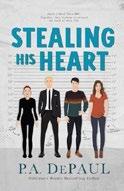
A professional thief and the FBI agent tasked with catching her must collaborate to foil a kidnapping plot in DePaul’s romantic suspense novel. Holly Bell is a thief. Her latest heist is interrupted by Jackson Kendrick, an FBI agent she finds foxy, even though he is her nemesis. She’s trying to steal a sword from a movie
A clever and entertaining whodunit that blends suspense, humor, and heart.
JURY DUTY IS MURDER
set; a huge explosion allows her to get away. In the chaos, Holly’s uncle, Liam, is kidnapped. The kidnapper, millionaire Darien Burton, demands a ransom: Holly must steal a device called the Infostrata Cryptix. Holly decides that the only person who can help is Jackson. She makes contact, and he tells her that the Cryptix contains a computer virus that can provide unfettered access to everything on the internet, including secure data. (It takes some doing, but he ultimately agrees to help.) Attraction zings between Holly and Jackson as they work together to find safe places to hide while they look for the Cryptix. Tracking down a hacker to Saint Croix at a couple’s retreat, Jackson and Holly pretend to be a couple on the rocks, which only ratchets up the sexual tension between them. But in order to foil the kidnapping plot, Holly has to ask Jackson to compromise his values and put his job at risk, which he is reluctant to do—even for Holly, with whom he is starting to fall in love. The novel is a fun romp. There’s real danger, and Burton is a clever antagonist, but the dynamic between Jackson and Holly is the star of the show. The dialogue is zippy and the tension between the leads is thick enough to cut with a knife. (“If only Jackson hasn’t been living rent-free in my wildest fantasies. Working with him day in and day out has us discovering a sexy, unlikely obsession that can only lead to heartache since we’re on opposite sides of the law.”) There’s plenty of suspense to keep the story moving forward as Jackson and Holly have to wriggle out of various spots of trouble; overall, it’s a fun page turner.
A sexy, suspenseful romance.

Duncombe, Kristin Louise | Transformation Press (252 pp.) | $17.95 paper Aug. 13, 2024 | 9798991074100

Duncombe discusses the long process of coping with sexual trauma.
In 1979, when the author was 10, she and her family left Washington, D.C., for the Ivory Coast. Her father worked for the United States Foreign Service, and his career took the family to such far-flung places as Indonesia and India. Life at the U.S. Embassy in Abidjan seemed pleasant, but all was not well below the surface—the author states that she was a preteen when a friend’s father began to molest her. This man, Bill, tended to be a hit with kids due to his own childlike nature; further down the road, several other girls shared similar stories of abuse. Bill was reassigned with his family to a position in Washington. The Foreign Service would not press charges, and Bill did not even lose his job. The author goes back and forth in the memoir between these traumatic events and more recent occurrences. By 2016, Duncombe was a psychotherapist living in Geneva, Switzerland, with her two children and her husband. After she and her husband underwent a separation, she re-entered the dating world; the text describes these experiences alongside a re-examination of the author’s past. Details are not glossed over, and Duncombe even allows for occasional humor. (One date in Geneva decided the author needed a spanking. The author states, “I most definitely did not want a little spank”; she felt “absurd as my flesh jiggled with each slap.”) The intensely personal material is raw and gutsy. Of one unsettling sexual encounter, Duncombe writes: “I squeezed my eyes closed, praying for it to be over.” There are blander scenes, as when the author takes a predictably awkward Krav Maga class with her teenage son. Still, the work contains a great deal of substance. A highly revealing account of abuse and the struggle to overcome it.
Kirkus Star
Emmons, Scott | Illus. by Pete Whitehead Self (32 pp.) | $15.95 paper Sept. 13, 2024 | 9798337511085

A picture-book guide to fantastic island monsters. Imagine a safari where instead of lions, giraffes, and ostriches, there is a creature called a Zabb: part eagle, part chimp, part crab, part chicken, and part beagle. In Emmons’ picture book, a cordial blue-skinned and green-eyed monster named Cornelius leads tours of the tropical and snowcapped Creepington Isle’s magnificent monsters. When arriving at the dock, never mind the tentacles, scales, and claws; the dapperly dressed Cornelius, in a blazer, button-down, bowtie, and bowler hat, is a gracious host. Some monsters have onomatopoeic names that seem befitting, like the Yumbler, the Bammer, and the Gabble. Others have names that are a combination of their features, including the Bink (who has big, stinky feet) and the Slurm (a long, slime-loving worm). Some have names that just seem randomly nonsensical, such as the Bleephus, the Yopp, and the ZillaMa-Zong. Regular animals live there too, as squirrels, penguins, spiders, and butterflies are seen in the coconut trees and on the ice. (Kaijan, a giant flying chipmunk, seems out of place.) At the tour’s end, there’s a monster party, and Cornelius assures readers that “there’s nothing to fear.” The author’s rhyming descriptions are catchy and fun (“She munches on bicycles, fences and trees. She’ll eat a piano and spit out the keys!”); they complement Whitehead’s outlandish looking monsters, with their occasionally gross traits. This rhyming jaunt through monsterland will surely invite giggles.
A boisterous roundup of creepy but friendly creatures with butt horns, multiple eyes, fuzz, and more.
Erickson, J.M. | Self (210 pp.) | $12.99 paper | Aug. 31, 2024 | 9781942708551

Set in a near future, Erickson’s SF novel—a reimagining of Joseph Conrad’s Heart of Darkness —follows an alleged terrorist on Mars and the man tasked with killing her.
Former captain Willard Bennett has been in prison for more than two years, mostly due to his failure to complete a mission involving Cassandra Kurtz, a convicted insurrectionist whose attacks on Mars’ colonies has challenged “the very foundation of [the Third Republic] society” and jeopardized the fascist government’s expansion on Mars. (The Third Republic is considered a successor to the Third Reich.) After having his elite patrician status and all of its benefits revoked, Bennett is given a last chance at redemption: He must locate and destroy Kurtz’s base of operations on the red planet and assassinate the elusive terrorist. Once Bennett begins going through confidential files chronicling Kurtz’s nightmarish past, however, he experiences an epiphany of sorts—his privileged existence has allowed him to sleepwalk through a reality that includes slavery, sex trafficking, and the dehumanization of entire populations of people. His search for Kurtz through the subterranean wilds of Mars—which are populated by genetically modified beasts—quickly turns into a search for himself as he is forced to reevaluate his entire life and all of his misinformed decisions. The cast of deeply developed characters and the impressive focus on worldbuilding are obvious strengths, as is the relentless pacing, but the novel’s real power comes from its timely thematic punch: “I can easily see why it would be better to be free in hell than a servant above” (John Milton joins Conrad in the novel’s literary allusions. Erickson ends the novel with a tantalizing revelation, which could easily be
on a resilient
BEYOND MULBERRY GLEN
expanded into future installments of the series.
A page-turning cautionary tale providing a glimpse into a world in which greed, racism, and hate shape our future.
Fleming, Ann | Illus. by Stefanie Geyer
Kahu Publishing (44 pp.) | $20.99
$12.99 paper | Sept. 3, 2024
9798988910930 | 9798988910947 paper
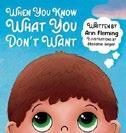
Fleming’s picture book offers youngsters tips on how to gauge what they truly want.
Professor Finelly McTueful, a wizard with a long gray beard and brown skin, offers his advice while hovering on a cloud above Egyptian pyramids, a polar iceberg, and, finally, on a desk in front of a blackboard. When you know what you don’twant, he says, then “in that moment precisely, // you’ll know what you DO want, / you’ll know it concisely.” By offering examples such as wanting a bully to be kind, wanting a liar to tell the truth, and wanting health when one is sick, the professor professes that knowing what you do want is “like having a map, / guiding you out / of that negative trap.” A pale-skinned boy then applies positive thinking to refocus on things that make him happy: his friends, a day at the beach, jokes, and imagination. Geyer’s full-color cartoon illustrations use light and shade to add nuance to the story’s examples. The little boy’s expressions in the illustrations when things go wrong validate his negative feelings, adding depth to the book’s overall emphasis on
positivity. The rhyming and rhythm in Fleming’s text are effortless, occasionally adding challenging words to the mostly simple vocabulary (concisely, brutish). An effervescent, rhyming case for positive thinking.
Florence, Millie | Illus. by Astrid Sheckels | Waxwing Books (288 pp.)
$17.66 | Jan. 7, 2025 | 9781956393095

In Florence’s middle-grade fantasy novel, a young girl’s heart is tested in the face of an evil, spreading Darkness. Eleven-year-old Lydia, “freckle-cheeked and round-eyed, with hair the color of pine bark and fair skin,” is struggling with the knowledge that she has reached the age to apprentice as an herbalist. Lydia is reluctant to leave her beloved, magical Mulberry Glen and her cozy Housetree in the woods—she’ll miss Garder, the Glen’s respected philosopher; her fairy guardian Pit; her human friend Livy; and even the mischievous part-elf, part-imp, part-human twins Zale and Zamilla. But the twins go missing after hearing of a soul-sapping Darkness that has swallowed a forest and is creeping into minds and engulfing entire towns. They have secretly left to find a rare fruit that, it is said, will stop the Darkness if thrown into the heart of the mountain that rises out of the lethal forest. Lydia follows, determined to find the twins before they, too, fall victim to the Darkness. During her journey, accompanied by new friends, she gradually realizes that she herself has a dangerous role to play in the quest to
stop the Darkness. In this well-crafted fantasy, Florence skillfully equates the physical manifestation of Darkness with the feelings of insecurity and powerlessness that Lydia first struggles with when thinking of leaving the Glen. Such negative thoughts grow more intrusive the closer she and her friends come to the Darkness—and to Lydia’s ultimate, powerfully rendered test of character, which leads to a satisfyingly realistic, not quite happily-ever-after ending. Highlights include a delightfully haunting, reality-shifting library and a deft sprinkling of Latin throughout the text; Pit’s pet name for Lydia is mea flosculus (“my little flower”). Fine-lined ink drawings introducing each chapter add a pleasing visual element to this wellgrounded fairy tale.
An absorbing fantasy centered on a resilient female protagonist facing growth, change, and self-empowerment.
Gibbons, Loreen | She Writes Press (312 pp.) $17.99 paper | Jan. 7, 2025 | 9781647428204
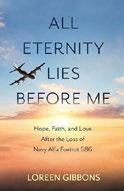
In this memoir, Gibbons tells the story of how her husband and other Navy servicepeople faced an emergency when their plane hit a storm off the Soviet coast.
This book presents a detailed retelling of the journey of Navy Alfa Foxtrot 586’s final flight in 1978. The crew was given an intelligence-gathering mission to fly from Adak, Alaska, over international waters “along [a] predefined track that is designed to be far enough out to sea to remain in international airspace, yet close enough to trigger a Soviet response.” The crew also added a last-minute extra navigator, who, as it turned out, had spent the night drinking beer; he was deemed to be safe for duty (following the Navy’s 12-hour “bottleto-throttle rule”). Gibbons’ play-by-play
of the events of the mission tells of the 13 crewmembers and two guests as the plane hit a storm, and the group leapt into survival mode. The book also specifically offers the first-person recollections of the author herself, who was the wife of mission commander Lt. Cmdr. Jerry Grigsby. After the terrible events unfolded, her story is one of a relatable middle-class suburban life in California turned upside down: “One side of the backyard has a play area for the girls where Jerry had built a playhouse with a Dutch door….Everything, it seems, brings back a memory of Jerry.” The text includes a glossary of naval terms and a collection of pictures of Navy Alfa Foxtrot 586’s crewmembers, their families, and tributes to their service. The narrative, which draws on accounts of relatives of the servicepeople involved, is well-paced and effectively presents enough details to give readers context while avoiding excessive military jargon. It’s a notably emotional story, as well, in how it makes the servicepeople’s loved ones a key element of the story. Unlike many books about military operations gone wrong, this book goes far beyond the initial tragedy to tackle the realities of people grappling with grief and loss. A helpful bibliography is also included, featuring citations and links. An often-affecting account of a naval tragedy and its aftermath.
Gibbs, Jeffrey Wade | April Gloaming Publishing (284 pp.) | $18.99 paper Oct. 22, 2024 | 9781953932297
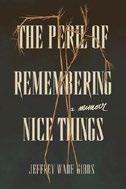
Debut author Gibbs blends family history and memoir in this nonfiction exploration of the legacy of Southern racism.
“So, why did your daddy kill himself?” a family member asks the author in the opening lines of the book. This jarring question sets the stage for a Southern Gothic memoir in which Gibbs
seeks to understand his father’s death by piecing together his own childhood in the South and his family’s connection to the lynching of John Henry Williams in 1921. The author’s devious grandmother, Memaw, emerges as the book’s unsympathetic antagonist, along with her father and brothers, who, she alleges, took part in the lynching. While the book’s narrative of racial violence and generational trauma provides some of its most engrossing passages, Gibbs also excels at analyzing his family’s internal psychology. For instance, his often-homeless father, who struggled for years with alcoholism and an “utter lack of purpose,” is not a stereotypically compelling figure; the author’s depiction, however, limns a tortured, brilliant man who could not escape his family’s history and the place they called home. His “big brain,” the author speculates, “had nothing to do but grind itself to death in the benighted ignorance of backwoods Florida.” As for Gibbs, he left the United States after graduating college, spending his adulthood in Tokyo, India, and, currently, Turkey. With a graduate degree in creative writing from the University of Arizona, and as the author of more than a dozen published stories, essays, and poems, Gibbs is a talented writer who effectively evokes the Old South through his compelling storytelling. The text doubles as a fascinating interrogation of autobiography as Gibbs questions “well-crafted” memoirs in which the author’s memory is “cleansed of chaos and uncertainty”— just as white Southerners have often misremembered history to fit their own internalized narratives. The author also introduces readers to the Japanese practice of zuihitsu (translated as “follow the pen”), which explores the power of memory and history through free association. While at times scattered due to the author’s stream-of-consciousness approach, this family history is a tour de force. A gripping, insightful reckoning with America’s original sin.

Reunion by the Lake
Gilbert, James | Atmosphere Press (194 pp.)
$24.99 | $15.99 paper | Oct. 15, 2024 9798891324473 | 9798891324114 paper

An ailing, embittered man finds himself dependent on his long-suffering wife in Gilbert’s family drama. Facing imminent death, Richard Collins invites his three adult sons—Seth, Dexter (“Deck”), and Nick—to join him and their mother at their southern Illinois lake house. It’s anything but a cozy family reunion, as Richard plans to reveal the shocking details of his will—he seems to be anticipating the devastating impact with almost spiteful satisfaction. Richard, an overbearing retired lawyer, snaps at Grace as she tends to his meals, refills his whiskey, and physically assists him; the division of his wealth will be the patriarch’s last chance to really throw his weight around. While tension between the couple is palpable, it’s Richard’s final wishes that force Grace to re-evaluate their life together. On the surface, Grace is a dithering, doting wife, but secretly she questions whether she ever truly loved Richard: Was his unkindness and harsh judgment of their children emotional abuse? Nick, a professional cellist who keeps his boyfriend private, constantly disappoints his father; commitment-phobe Deck has arrived with yet another new woman in tow; and Seth, the adopted misfit, has found a sense of belonging in religion and with his wife, but he earns little selling roadside flowers. As the family gathers, festering issues surface, evoking a feeling of intense claustrophobia. Through carefully crafted interiority and multiple points of view, Gilbert captures the complexities of damaged relationships in a way that feels unnerving and real. (Reflecting on marriage, Richard bleakly considers the “androgyny of two sexless bodies bound together in greying frailty.”) The story’s pacing lags due to excessive backstory and repetition;
however, the lake-house scenes are so intimate and immersive it’s like being a fly on the wall witnessing a family in crisis. Although some wounds are never completely mended, there is healing, and each of the characters undergoes varying degrees of transformation. An intense and despairing portrait of an ordinary, dysfunctional family harboring deep-seated resentments.
González, Katherine | Posada Publishing (378 pp.) | $19.99 paper Oct. 10, 2024 | 9798991166805
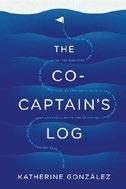
González tells of sailing the high seas with her husband in this debut travel memoir. From almost the moment they met, the author knew that her future husband Andrés dreamed of sailing around the world. Their dating life was filled with hikes, kayaking, and short sailboat rides, but a long voyage seemed far out of reach: They would have to quit their jobs, sell their house, buy a boat, and live frugally off savings as they went. Still, González wanted to help Andrés achieve his dream, and before they were even married, they purchased a 34-foot Pacific Seacraft they named Ana María. Three years later, the boat and their lives were sufficiently ship-shape to finally begin their voyage—a two-year journey down the West Coast to Mexico and across the Pacific, island hopping all the way to New Zealand. Andrés, the more experienced sailor, was captain; González, the co-captain, took it upon herself to keep a detailed log of the trip, recording accounts of their adventures from snorkeling in French Polynesia to riding deadly storm swells off Cape Mendocino. (Sections of Andrés’ “Captain’s Log” also appear in the text.) In addition, she chronicled their daily existence aboard the ship, from the ever-changing menu and travelers they met along the way to the particular
discomforts of the cramped craft. (In one memorable entry, the captain and co-captain grew so tired of changing into dry clothes while coming in and out of a squall that they simply began sailing naked.) González’s prose is as breezy as one would hope for someone tooling around the South Pacific. “Now, we’re not monsters,” she writes, about the birds who hitchhiked on their boat. “We know spotting Ana María must feel like a miraculous provision of muchneeded respite, so we proposed a peace treaty: You can land and ride on the bow from here to Hiva Oa. You can ride on the warm radar…But NO sitting on the solar panels!” Here is a buoyantly escapist reading experience for seasoned sailors and daydreamers both.
A lovely nautical memoir about chasing dreams to distant latitudes.
Goodrich, Joseph | Illus. by Alex Nimurad | Wisdom House Books (34 pp.) $19.99 | Aug. 30, 2024 | 9781732855342
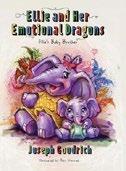
In Goodrich’s picture book, a young elephant girl’s dragon friends help her deal with her emotions when she meets her newborn brother.
Ellie, a purple-hued elephant, has four pals, who were first introduced to readers in Ellie and Her Emotional Dragons (2018). Each of the four dragons symbolizes one of Ellie’s emotions, popping out of her cupboard or backpack if she’s happy (yellow), sad (blue), scared (green), or angry (red). She’s happy at the thought of seeing her new baby sibling; sad at having been briefly separated from her mom; scared by the noise, bustle, and smell of the hospital; and angry when hospital routine keeps her waiting. In each instance, a dragon encourages her either to embrace happiness or to employ coping mechanisms. Goodrich tells a straightforward story, employing simple, non-rhyming language with repetitious
elements that will quickly acclimate young readers to the narrative. The use of colors is astute throughout, both within dialogue (matched to dragons/ feelings) and in riotous outpourings of emotion that sweep and swirl across images. Nimurad’s busy illustrations are vibrant against the white backdrops and make superb use of texture, and Ellie’s body language is expressive throughout. A caring, colorful guide to feelings that parents can read with their children.
Grimes, Ivy | Grimscribe Press (142 pp.) $20.00 paper | Aug. 21, 2024 | 9798218442453

Grimes riffs on the magic of glass objects in this debut fiction collection.
Glass can represent many things: clarity, fragility, artificiality, illusion. In these 17 tales, the author forms glass into all manner of ideas to beguile her characters and reflect—darkly—aspects of their off-kilter lives. A woman who lives in a glass tower welcomes in a wandering girl with a penchant for fibbing: She may or may not have eaten her own mother. A bookstore employee meets a customer who pays for things with apples and gives her a strange book made entirely of glass. A pair of brothers, both veterans, visit a museum of glass art, only to have the pieces draw out the long-simmering tensions between them. A woman treats an ailing wolf with glass pills that are meant to purify one’s insides. A girl is forced to care for her grandmother’s glass dog, who eats light instead of food: “There weren’t many lights in grandmother’s house (she said they gave her a headache), but the dog had a special lamp, a very bright one. You knew he was eating if he got hot to the touch and glowed a little.” In these pages, readers will also encounter glass turtles, glass coffins, glass pianos, and even a glass cabbage. In addition to all the glassy imagery, the stories are united by Grimes’ comic
A wry and memorable collection of sleek fables.
GLASS STORIES
strangeness—the premises are always slightly dreamlike, and the dialogue is oblique, with inevitable intrusions of the humorous and the surreal. In “Glass Cabbage,” the eponymous crystalline vegetable found by a hungry woman in the woods is weird enough before it is revealed to contain a severed human toe: “When she turned the glass cabbage, rolling it around to see the toe from different angles, the toe moved, too. It bumped against the glass edges in a way that looked painful. But there was no one to feel any pain from it, was there?” Fans of Kelly Link and Aimee Bender will enjoy these original, abstruse folktales and the elusive magic that animates them.
A wry and memorable collection of sleek fables.
Kirkus Star
Johnson, C.W. | Baryon Dreams Press (348 pp.) $19.99 paper | Sept. 24, 2024 | 9798991428422
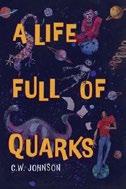
In Johnson’s novel, a brilliant physicist tries to build a life after narrowly surviving a childhood filled with reanimated dinosaurs, runaway aliens, and mutated Mexican beaded lizards.
Addressing an unidentified listener, John Chant recounts the wonder and heartbreak he experienced growing up as the child of parents Alan and Ann, two extraordinarily brilliant but emotionally unavailable scientists permanently at war with each other. It’s impossible to
accurately convey the off-the-wall lunacy comprising the first act, but suffice it to say that it chronicles young John’s many adventures before the irrevocable rift between his parents leads to the ultimate dissolution of the family. (It’s clear that John’s eventful childhood has left an indelible mark on his psyche, and he wonders if he will forever be an outsider and alone.) That the author is able to follow all this up with even more absurdist insanity in the ensuing acts as John kicks off his teaching career at a university (“College of Inhumanities”) testifies to Johnson’s expansive storytelling prowess. Somehow, seemingly disparate story elements (like stolen “probability pumps” and the sullen kid John befriends in fifth grade) all weave together seamlessly in an unforced and pleasing fashion. This fantastical “memoir” following protagonist John’s attempts to navigate academic life (“‘Never fear blood ’ was in fact the school sports motto”) after growing up a curious kid in an even curiouser family is a true work of literary alchemy. Packed with deep pathos and unrelenting dark humor, the novel delves deeply into questions about the true nature of love in all its mysterious—and quite possibly mystical—components. One of the most moving episodes in the story occurs when John and Ann speak for one last time at the latter’s gravesite—Ann’s confession to her heartbroken son is simple, concise and absolutely devastating, and the emotions it stirs feel fully earned and organic. By contrast, one of the funniest episodes happens when Dean Pancake—John Chant’s longtime simian nemesis—meets his ultimate fate. Some might find the humor morbid, and maybe even cruel; readers on Johnson’s wavelength will be too busy guffawing and welcoming the laughter. Heartbreaking and hilarious.
Kirkus Star
Keegan, Brendan P. | Forbes Books (256 pp.)
$29.99 | Nov. 19, 2024 | 9798887501666

A guide to transforming a business (and possibly entire industries) via disruption. Keegan, a successful capital fundraiser, author, and podcast host who has sold a number of his own businesses, here teaches readers how to disrupt an industry or transform a business; the prerequisite, per the author, is learning to be a fearless leader. “To truly disrupt, you must channel your courageous self and instill that same level of courage in others,” Keegan writes. “And to do that, you must have true faith in yourself and your team, and they in turn must have that same faith in you.” Keegan takes readers through a thorough and engaging breakdown of his “eight pillars for transformational growth,” which include leadership, culture, people, systems, intelligence, emotional intelligence, flexibility, and fearlessness. The book begins with a concise description of what constitutes disruption (think of Amazon changing the way we shop or Google Maps changing the way we get driving directions) and proceeds to explore successful examples—and even some failures, such as Bed Bath & Beyond. A look at Lego and how it has evolved and changed over the years is particularly compelling, as is a discussion of Keegan’s own Merchants Fleet, which he led
through transformations as chairman, CEO, and president. The bulk of the book takes deep dives into the author’s eight pillars, which aren’t anything new; plenty of books have been built around these concepts. What distinguishes this work is how engagingly and practically the author presents these ideas. It’s a near-perfect mix of Keegan’s considerable real-life experience (relevant and entertaining anecdotes are sprinkled throughout) and business theories that should work for anyone aspiring to become a stronger leader. The text is nicely paced and progresses logically, ending with four lessons the author learned while leading Merchants’ transformation: Use the author’s pillars framework, value your employees, expect short-term pain for long-term gain, and be daring. Here, Keegan serves up guidelines to do all of this successfully. A practical and well-considered road map to success through innovation.
Kellebrew, Liz | Unsolicited Press (184 pp.) $18.95 paper | Jan. 28, 2025 | 9781963115277

Family history becomes intertwined with the realities of crossing the Oregon Trail in Kellebrew’s historical novel. In 1852, Marilla Washburn’s family follows the Oregon Trail and experiences its harshness, suffering the loss of Marilla’s brother Henry and enduring cholera along the way. At 15 years of age, Marilla marries John Black, an Irishman who escaped an alcoholic father to sail to Oregon. John and
Marilla enjoy a gentle courtship and a happy marriage. Soon, their story becomes intertwined with that of Marilla’s brother Walter, the first of her siblings to be born in Washington territory. He’s a gunslinger, drunkard, and idealist; the author follows him from his marriage to an Indigenous woman named Little Frogs to a stint prospecting for gold in Alaska. Kellebrew’s book is part memoir, part history, and part fiction, blended together in a series of vignettes and scenes that draw the interlinked characters in her family history together. (“I suppose Walter’s bones lie there to this day, one neat bullet hole punched through his skull.”) Interspersed throughout the text are the words of her ancestors Walter Meikle and John Meikle, framing Kellebrew’s exploration of the latter half of the 19th century through the eyes of her own family. Readers will enjoy the lyrical writing style (“We saw the river take him, Henry my brother, my mother’s son, and yank him downstream like an autumn leaf”), though occasionally the flicking from past to present, and between first-person narration and third-person imaginings in the author’s voice, is somewhat jarring. This approach does, however, allow space for Kellebrew to pontificate on the various themes that are woven into the narrative, including Indigenous rights and the ownership of land, homelessness, and the strength exhibited by her forebears in taking these journeys. The whole book is drawn together by the threads of movement and worldbuilding as Kellebrew observes, “In the grand scheme of things, civilization is the anomaly, permanent habitation the aberration.”
A sensitively crafted history of pioneers and immigrants for American history enthusiasts.

Kuipers, Marie | Life to Paper Publishing (194 pp.) | $23.70 paper
Oct. 24, 2024 | 9781990700620

In 33 short, opinionated, eccentric, impatient, but fair-minded essays, Kuipers expounds on experiences that have made her a loving aunt and a shrewd editor.
The topics of the author’s cultural criticism range widely. One expounds on her fandom for Justin Bieber; another on the ridiculousness of the public outcry following Sports Illustrated ’s inclusion of “an allegedly ‘plus-sized’ model (heavy emphasis on the air quotes)” in its swimsuit issue; and yet another on “guyarrhea”—an aptly-named gastrointestinal ailment that the author dealt with as a teenager after sudden encounters with cute boys. They’re bound to get some readers angry, or excited, or possibly both. Some essays will remind readers that they don’t need to force a cheery facade to enjoy life, and accounts of the author’s experiences with roller derby and live chickens may make them laugh out loud. These pieces are also riddled with charming digressions, which lend the book a gossipy readability. Some cover more serious topics, such as the author’s fraught relationship with her mother during the latter’s battle with mental illness, which manifested as hypochondria and extreme anxiety; another addresses Kuipers’ battle with Lyme disease, which left her weakened and suffering from brain damage. These more difficult accounts she generally approaches with sensitivity while still maintaining an endearingly crass tone. Between all the expletives, readers will catch glimpses of a serene, life-affirming positivity: Lyme disease may have affected her memory, she notes, but it also gave her “the lifetime privilege of being allowed to forget people’s names.” Her mother’s worried request that she improvise a helmet out of kitchenware suggested that something was deeply wrong, she says, but it also led to the
drinking game “Colander Head.” A career copyeditor, Kuipers delivers clean, snappy text—with occasional made-up words and expletive-laden insults.
A hilariously honest collection of revealing works.
MacDonald, Marc | FriesenPress (282 pp.) | $22.99 paper Sept. 16, 2024 | 9781038311887

A lovelorn man’s life takes an unexpected turn when he becomes a caregiver for a crass nonagenarian in MacDonald’s novel. Alex Chambers begins his story in a parking lot during a rainstorm in front of Silver Springs Health and Rehabilitation Center, where he intends to work as a live-in volunteer. His motives are unclear, and the staff greets him with trepidation; the center’s administrator, Susanne Rogers, informs him that their promised space for him is no longer available. However, she offers him another, less desirable assignment, and he soon begins his tenure as a caregiver for a notorious resident of the facility’s geriatric unit: Mae Seasons, a crass 91-year-old who’s been there for more than a decade, terrorizing any staff members assigned to her. Her crude gestures, foul language, and no-bullshit policy soon put her at odds with Alex, who’s oddly tight-lipped about his reasons for volunteering at Silver Springs. The pair become an unlikely match: a reticent young man and an elderly woman who becomes determined to bring him out of his shell. Eventually, Mae coerces Alex into giving her a straight answer, and the pair becomes bonded by shared regret and misery. Some readers are likely to recognize similar stories from literature and film, such as Harold and Maude (1971), but this book is equally as heart-wrenching as any that have come before it. However, MacDonald’s witty prose and original characters imbue the story with an optimistic liveliness: “I was a few hours away from meeting the most
exquisitely unique, infuriating, charming, and heartbreaking woman of my life.”
The clever title, in addition to describing the story’s setting, refers to Alex’s reason for coming to Silver Springs. Overall, the story leads readers on a journey of redemption that comes to a hopeful, cinematic conclusion.
A cozy, if somewhat familiar, tale of love and grief that will nonetheless leave readers satisfied.
McIntire, Susan | Peregrinate Press (398 pp.)
$37.99 | $18.99 paper | June 26, 2024 9798990374003 | 9798990374010 paper

Speaker and workshop leader McIntire presents a reflective guide to banishing stress by spending time in nature. In this lavishly illustrated nonfiction debut, the author acts as a guide for what she refers to as “a sensory journey where nature speaks directly to our souls.” She invites her readers to take this voyage in order to shed the nagging pressures of the modern age: “Imagine transforming the stress of daily routines with a rejuvenating interaction rather than meditating or numbing it away,” she writes, before turning the bulk of her narrative into a tactile, hands-on encounter with the world around us. Illustrations by the author and selections of the author’s poetry return consistently to the theme of nature’s healing potential; this is key when she notes the enormous number of medical issues that have their roots in stress. “Our tech-dominated era often leaves us craving simplicity,” she asserts, and the natural world, when appreciated with what she calls “sensory fitness,” has the ability to ground the worrying soul and calm the anxious mind. In addition to advocating mindfulness and journaling, she offers several exercises
designed to “open doorways to deeper understanding.” Many of these activities take the form of what she simply calls “invitations”: smell invitations, taste invitations, or even “state of mind” invitations that “inspire us to seek out a new song, illustrating how music can be a joyful, transformative experience for the brain.” Several other exercises throughout the book are “indoor journeys,” which include storytelling or quiet reflection.
Throughout the book, McIntire takes the tone of a gentle, encouraging life coach who understands the distractions and distortions of the modern world and wants to help her readers to overcome them. Her championing of what she characterizes as the “garden journey” will cause readers to feel a keen sense of empowerment. This book offers a rare methodology of self-care that doesn’t rely on any technology, theology, or even trips outdoors (“sometimes,” she assures her readers, “meaningful adventures occur right where we are”). However, McIntire is also politely insistent on the virtues of going outside and literally touching grass: “Our modern lives are inextricably linked to nature,” she writes, “even when we don’t make time for it.” Her descriptions of the healing and calming power of the outdoors are the most lyrical and most convincing passages in her book. However, she’s just as compelling when she’s describing the simple measures that people may take to slow down, look inward, and defuse the tensions that accumulate day-to-day—even if that method merely involves sitting in a “comfortable spot by a window or nestled in a cozy chair.” With a tone of sincerity and clear, straightforward prose, she manages to avoid the sort of sentimentality that might otherwise attend a plan that urges readers to appreciate “nature’s evolving lessons”; instead, she slowly crafts a working model for using the simplest of tools to counter the demands of contemporary living.
A wise and accessible invitation to live a less anxious, more natural life.
Moran, Victoria | Monkfish Book Publishing (234 pp.) | $18.59 paper Jan. 14, 2025 | 9781958972595

Moran shares tips on aging well in a culture obsessed with youth.
The author, a longtime yogi and prolific self-help writer, here focuses her attention on the concept of aging. While acknowledging that genetics and lifestyle choices greatly influence how one ages, she also draws attention to the cultural and spiritual aspects of the process. Heavily influenced by Eastern practices, Moran alternates between concrete suggestions (for good skin care, wear sunscreen and eat herbs like tulsi, amla, and ashwagandha) and more esoteric musings (“just think of your inner being as soul or spirit or whatever word you like. Terminology aside, that inner being is the real you, and it does not age. The more thoroughly you can identify with the part of yourself that has been you all your life, the more youthful you will feel and appear”).
Occasional text boxes contain “Practices for the Path” with additional exercises for readers to try, like “Adapt an appropriate and appealing asana routine for yourself.” Moran includes plenty of personal anecdotes, such as her experience bungee jumping at age 43, as well as yogic parables, like the tale of the blind sea turtle. The author’s voice remains warm and conversational throughout,
easing readers into sometimes rather complex concepts—the idea of the body’s three doshas (or energies), for example, with the dominating one being “solidified at the moment of conception as your body type.” In addition to all of the spiritual notions that Moran introduces, she also addresses some very practical issues, including the importance of a living will. It is the deftness with which Moran handles this delicate balance between the metaphysical and tangible that makes her guide such a pleasure to read. Her approach to aging may hover in the periphery of the mainstream, but there is valuable information here—whether or not one subscribes to all of the ideas. A thoughtful and engaging reflection on what it means to get older, both physically and spiritually.
Morris, Guy | Guy Morris Books (390 pp.) $17.99 paper | July 3, 2022 | 9781735728667

In Morris’ thriller sequel, a hacker extraordinaire tries to avert global catastrophe involving cuttingedge artificial intelligence and biblical prophecy. Derek Taylor was once a highly respected National Security Agency contractor, but due to the events of Morris’ first series entry, Swarm (2020), he’s being unjustly pursued as an international fugitive—even though he stopped a deadly computer-virus threat. As a member of Spy Net Online, Taylor is determined to find an AI program
A thoughtful and engaging reflection on what it means to get older.
AGE LIKE A YOGI
called SLVIA that escaped its labs after being created by fellow member Nelson Garrett. Relying on the help of his partner, Jester, and his own AI program, WITNESS, Taylor discovers that a Knights Templar historian has been murdered in Portugal, leaving behind a cryptic clue that could be explained by centuries-old letters at the Vatican. Taylor sets off on a global chase that will take him to Italy, Israel, and elsewhere as he tries to determine what SLVIA itself is after. Meanwhile, back in Washington, D.C., Jenn Scott, a former U.S. Navy lieutenant and Taylor’s love interest, is mourning the death of her father and suspects foul play. Also, global political tensions are on the rise, especially between Saudi Arabia, Israel, and Russia, as well as in the United States, where a former president (an obvious Donald Trump stand-in) is stoking conspiracies. Casual readers may be at a loss to keep up with this installment’s convoluted plot; Morris’ present-tense narration tends to summarize events quickly, like facts in a dense report, leading to information overload. However, returning readers, and those able to put occasional questions aside, will find a rich tapestry of wild ideas and new spins on genre staples. Morris melds events from today’s headlines with Dan Brown–style concepts, Tom Clancy–esque characters, and high-tech sleuthing that’s reminiscent of James Bond spy tales. He creates impressive action setups and striking images, such as terrifying Vladimir Putin deepfakes. It’s far from a smooth journey for Morris’ hero, but he certainly makes engaging stops along the way. An action-packed thriller with a confounding plot but intriguing takes on genre tropes.

For more Indie content, visit Kirkus online.
Ortega-Medina, Orlando | Amble Press (300 pp.) | $20.95 paper Jan. 14, 2025 | 9781612943022

A young gay man and his faithful dog weather harrowing violence in El Salvador and a long trek to America in Ortega-Medina’s hallucinatory novel. Isaac Perez, a teenager living in San Salvador in 1978, dreams of becoming an astronaut. Isaac starts an affair with Gerónimo, a handsome, politically engaged altar boy, but his deepest bond is with Ahbhu, an injured Australian Cattle Dog pup that he nurses back to health. The promiscuous Gerónimo never fully requites Isaac’s love, but Ahbhu is supremely faithful to him; indeed, their communion is so intense that Ahbhu is able to hold telepathic conversations with Isaac. This comes in handy as El Salvador’s civil war, pitting left-wing guerillas against the army and right-wing death squads, escalates in the 1980s. When a bus carrying Isaac and a group of left-wing activists is stopped by soldiers, Ahbhu guides him to safety as a massacre begins in which Isaac’s brother Arturo is killed. Framed for the murder of a soldier, Isaac flees north toward the United States, assisted by Suchi, a no-nonsense lesbian who belongs to an underground railroad for migrating gay people. In Mexico City, Isaac meets dreamboat Diego and his father, Don Federico, an Indigenous seer who can also converse with Ahbhu. This magicalrealist yarn suffers from weak main characters: Ahbhu is heroic but onedimensional, and Isaac comes off as passive; he’s dependent on everyone and his dog to steer him. Fortunately, the supporting characters are vibrant and sharply etched—the hard-bitten Suchi flintily surmounts all challenges but is helpless prey to a leggy con woman— and Ortega-Medina’s prose is evocative and punchy (“Before we had even a chance to react, Cano dragged the driver off the bus, shoved him onto the ground,
and put a bullet in his head, the sound of the single gunshot ricocheting off the hills”). The fantasy elements are a bit goofy, but the storytelling is vigorous and gripping.
An uneven but entertaining story of war and exile, its shaggy-dog whimsy redeemed by strong writing.
Pizzo, Brenda | Self (210 pp.) | $14.95 paper Dec. 1, 2020 | 9798574942581

Pizzo’s novella recreates a day in Provincetown, Massachusetts, when Jackie Kennedy visited writer Gore Vidal. Based on a paragraph from a 1961 newspaper, this short novel imagines a moment in history when the First Lady took the day off and met novelist and essayist Gore Vidal at his hotel in Provincetown. They were already friends, and also relatives, as they shared a stepfather. Gore was born at West Point and had a senator grandfather while Jackie was raised in polite Manhattan society and the Merrywood Estate in Virginia before attending Vassar. If America has landed gentry, they were members of it, though both characters come across as possible proponents of egalitarianism. Importantly, this day comes two years before Gore wrote a critical piece about Robert F. Kennedy in Esquire, after which Jackie never spoke to him again. In Provincetown, Jackie and Gore stroll to town and have a seafood pasta dinner. They discuss the White House renovations, the Kennedys’ meeting with Khrushchev (“Do you know Khrushchev sent the children a puppy?”), and a dinner at Versailles with Charles de Gaulle. For his part, Gore reminisces about family friend Amelia Earhart and talks about his current chums, such as Tennessee Williams. Between the two of them, they seem to know everyone, and the cool sophistication they possess comes
across as refreshing rather than snobbish. For Jackie, this was a fun day away from the kids, while for Gore it was possibly his final encounter with Jackie before being shut out completely. Pizzo’s story, built around a single news item, is heavily researched and told in a way that seems more than plausible. Great care was taken to convey what Jackie’s early history and life at that time were like, and the voice used for her thoughts is convincing. Less time is spent on Gore, but the author deftly captures his lofty intellectualism, catty wit, and dislike of Truman Capote. Both were from privileged backgrounds but still had their problems, and reading about each in the company of a close friend is intriguing. An enjoyable trip back in time with two fascinating people from politics and letters that rings true historically.
Quinn, Katherine | Entangled Teen (448 pp.)
$15.99 | Dec. 3, 2024 | 9781649376794

A woman warrior fights to save her love and her country in Quinn’s fantasy romance, the second in a series.
Kiara Frey has been abandoned in the Mist. She traveled there as a member of the Knights of the Eternal Star on a quest to rid their homeland of a decades-long curse, but after a misunderstanding involving a magical artifact, the Knights’ commander—and Kiara’s love—Jude Maddox marooned Kiara and her sidekick Jake in the Mist. Due to an opportune run-in with some immortals, however, Kiara learns she needs to find Jude and bring him to the Moon God’s temple in order to retrieve a sacred moonstone necessary to trap the deity, make him mortal, and kill him, thus ending the eternal night that has plagued the land for decades. Meanwhile, Jude has made it back to civilization, where he is now wanted by his king for the crime of desertion. Jude
is bent on keeping the Godslayer—a weapon that does just what its name suggests—out of the king’s hands, but that may be impossible with the forces of an entire kingdom arrayed against him. When Jude is captured, Kiara must turn to the greatest thief in the realm—a crime boss known as the Fox—to rescue him and help them reach the temple. Quinn writes with every knob turned all the way up, the emotions of her characters resonating with the same intensity as the book’s fantastical elements. Here Kiara and Jude’s desire for each other increases under the influence of magic: “His eyes burned, his stare piercing, seeing beyond my barriers and walls. I gazed right back, past his doubts and insecurities, past the mask he wore for everyone but me. The raw truth of him was perfect, made for me, and my pulse danced with anticipation.” The plot will be nearly incomprehensible for those who have not read the previous volume, but fans of Quinn’s distinctive world of finicky gods and blighted lands will enjoy this conclusion to her duology. A blistering romance novel laden with sword-and-sorcery elements.
Rachilde | Trans. by Lauren Fischer Rachilde & Co. (252 pp.) | $16.99 paper Nov. 2, 2024 | 9798991663403
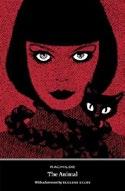
Fischer offers an English-language translation of an erotic 1893 character study by French Symbolist novelist and playwright Rachilde.
The story centers around Laure Lourdès, who’s born in the
“little southern town” of Estérac in France. She’s described as “innocent, yet troubled by ridiculous ideas” and “born with the germ of evil,” which the author connects to her exploring her sexuality at an early age. She and a boy whom she considers an “ugly… peasant” find that “their need to rub each other was driven like a sudden appetite for green fruit.” Later, when she’s older, she falls in love with the local priest, to whom she confesses having sex with a one-eyed man, although her infatuation with the cleric only goes so far as a kiss. She then meets wealthy Henri Alban, who wants to start a family like the ones found in the works of Charles Dickens, “his favorite author.” He and Laure become engaged with plans to go to Paris, where Laure will be “a young provincial let loose in toyland.” However, when Henri finds out about Laure’s affair with the unattractive clerk nicknamed “the Cyclops,” it sparks trouble. In time, though, she will declare “Pleasure is my religion…!” This story, originally published more than 130 years ago, offers much for modern readers to dissect. Its pronouncements on the topic of love, such as “love is proven by death” and “to stop loving is sometimes to commit murder” come across a bit like misquotations of French philosophers, and readers will find some developments in the 19th-century milieu, such as Laure’s eventual fate, to be predictable. The old story of a country girl in the big city is also still quite common today. However, there are also multiple lines that still resonate in the modern era, as when the narration points out how “seemingly insignificant details make monsters” and “Real pleasure was only to be found in concealing one’s
enjoyment.” Dickens it’s not, but readers will still find much of interest in this mischievous work.
An unapologetically offbeat and insightful adventure of a young Frenchwoman.
Reinard, Cara | Bookouture (330 pp.) $11.99 paper | Nov. 8, 2024 | 9781835252598

A n embryologist at a fertility clinic faces moral quandaries when her ex and his wife become clients in Reinard’s suspense novel Magda Batey, the implant physician at a Pittsburgh fertility clinic, directs the lead embryologist, 36-year-old Emily Daugherty, to meet with and gracefully reject two potential clients; they’re risky prospects that could bring down Batey’s success numbers. Emily is surprised when the couple in question turns out to be her former college boyfriend, Ben Holiday (“The only man I’d ever thought of having a child with, and I just let him go.”), and his wife, Ally. Emily can’t bring herself to disappoint the pair, who’ve suffered four miscarriages, so they advance in the clinic’s IVF process, where, according to Emily, “The real conjuring of life occurs behind closed doors, in a highly regulated laboratory led by me.” Reinard then begins interspersing chapters from Ally’s perspective; she’s a marketing analyst who’s annoyed by Ben’s job switch, which moved them from Shelby, North Carolina, to Pittsburgh, and she’s harboring secrets. The women’s fates become intertwined, as Emily also undergoes IVF at the same time. Overall, Reinard crafts an enjoyable, twisty suspense novel that calls to mind Paula Hawkins’ 2015 bestseller The Girl on the Train. As the story goes on, the author nicely develops her two main female characters with nuanced complexity; readers may not find either to be completely likable, but they always remain compelling. Reinard
also effectively depicts Emily’s chilling egotism and questionable ethics, as conveyed in flashbacks and particularly in the clinic, where she sees the embryos as “my babies” before they’re anyone else’s. An unpredictable and engaging thriller featuring two fascinatingly flawed women.
Rosensaft, Menachem Z. | Ben Yehuda Press (254 pp.) | $19.95 paper
Jan. 27, 2025 | 9781963475388

A Jewish author reflects on the Psalms through the lens of the Holocaust.
“Again and again, we are told that Adonai is and always has been merciful and compassionate,” writes Rosensaft in the book’s introduction, adding, “yet, we know that no such divine intervention… that no divine lovingkindness manifested itself at Auschwitz.” In this poetic reconfiguring of the Bible’s Book of Psalms, the author reinterprets the ancient writings (“in what may well be the ultimate manifestation of chutzpah”) in the context of the Holocaust (Rosensaft’s brother was killed in a Birkenau gas chamber in 1943). A legal scholar by trade, the author has published multiple works that combine memoir, poetry, and Holocaust remembrances. In these pages, responding to all 150 Psalms individually, the author balances his mastery of Jewish theology with a raw writing style that is unafraid to question, lash out at, and lament God’s seeming passivity in the face of evil. In his response to Psalm 23, a Biblical passage that has comforted Jewish and Christian believers for millennia, the author describes feelings of “emptiness” where there exists “no shepherd / only foes” as the children of God walk “through the valley of death.” Similarly, in his reimagining of Psalm 101, the author declares to God, “I will not sing to You…while slaughters of the
innocent / remain unpunished.” As the son of Holocaust survivors who was born in a displaced persons camp in Germany shortly after the war, Rosensaft writes from a place of deep-seated pain and generational trauma. The work’s final section, “The Relentless Continuum of History,” highlights the perpetuation of antisemitic tropes (such as the notion that Jewish “killers…betrayed Christ”). One concluding poem, “Simhat Torah Requiem,” recalls the horrific events of October 7, 2023, stating that, “the ss have returned / to merge into hamas”; another laments the death of both Palestinian and Jewish children as Adonai and Allah watch in “anguish.”
A haunting reimagining of the Book of Psalms.
Sheetz, Adam | Self (138 pp.) | $7.99 paper Oct. 4, 2024 | 9798341220379

In Sheetz’s novel, a festive event turns deadly in small-town Jingle Bell Falls, thrusting Marigold Morris into a whodunit full of quirky suspects. Marigold, a yarn store owner and amateur sleuth, is known for tackling new mysteries around Christmastime. This time around, a holiday staple—the town’s Winter Carnival—turns into a crime scene when Claudia Stillman, Marigold’s longtime rival, is found dead under unusual circumstances. Marigold quickly becomes a prime suspect, due to her fraught history with the victim, which complicates her own pursuit of the truth. She soon finds herself navigating a fresh partnership with Shane Collins, a new deputy in town whose serious approach contrasts sharply with her more intuitive, community-focused style. Together, they dive into a colorful investigation involving eccentric townsfolk, longstanding feuds, and unexpected alliances.
Amid the holiday festivities, the pair untangles secrets lurking beneath the town’s cheerful facade. However, their journey is complicated by Dictionary Davey, a mischief-making kid detective who revels in adding to Marigold’s challenges. Sheetz’s story deftly blends cozy and quirky elements with genuinely puzzling twists, resulting in a mystery that’s as whimsical as it is engaging. Each revelation brings the investigators closer to the truth while also raising the stakes, adding tension to the lighthearted and charming small-town atmosphere. The unique character dynamics and witty dialogue (“The only reason you solve all the murders,” Dictionary Davey tells Marigold at one point, “is that they always happen around Christmas, and I’m usually at my gam gam’s”) make this a perfect read for those looking for wintertime tales with lots of suspense and humor. A delightful cozy mystery with holiday charm.
Strassberg, Adam | Nat 1 Publishing (95 pp.) Dec. 1, 2024 | 9798337610870
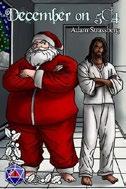
Strassberg presents a brief fantasy novella about discussions in a psychiatric hospital between two men who resemble Jesus Christ and Santa Claus. In this short, somewhat whimsical tale, two very different men meet in a ward for patients with mental illness: a short Jewish man named Josh with a brown beard, and Nick, a big-bellied fellow with white whiskers. Josh was just committed by paramedics because he was found wandering in traffic after breaking up with his boyfriend; Nick is the former CEO of Myra Toys who used to travel frequently on business (“I basically lived my life out of a big red sack,” he says, in one of Strassberg’s many winks at the reader. “I must have
A complex and atmospheric story of a crime in a First Nations community.
BLUE STAR
carried that bag over my shoulder forever”). Both men find themselves in the ward during the Christmas season, and they initially conflict as they fall into arguments about metaphysics in the common rooms. Josh is spiritual and empathetic, assuring Nick that “God doesn’t want our independence; he wants our interdependence.” Nick, guessing that Josh is an unhoused person, is sharply intolerant at first: “I know if you’ve been bad or good, and you’ve all been bad,” he rumbles. “My tax dollars go to pay for the land where you illegally squat in your tents.” In the slow, skillful development of the relationship between these two men, Strassberg plays on the initial gimmick of having Jesus and Santa analogues meet, and steadily broadens the story into a more ambitious meeting of the minds, drawing on elements of philosophy. Nick is predictably jolly, but Strassberg’s greatest creation is Josh, who prays only for “an ordinary mortal life” and is the source of most of this slim book’s most memorable passages: “Perfection is the enemy of the good, but for me, I’ve met perfection,” he complains at one point. “And perfection has met me and just won’t leave me alone.” Very little happens in the book other than these verbal encounters, but readers will be too interested to notice. An intense novella of ideas that looks into the heart of faith and generosity.

Van Clieaf, Valerie | Porteous Publishing (273 pp.) | $10.99 paper Aug. 7, 2021 | 9780995218031

In Van Clieaf’s mystery series starter, the kidnapping of an Indigenous girl in rural Canada catapults a detective sergeant into an investigation involving corruption and human trafficking. This well-paced procedural, told from the perspective of the victims, police officers, and criminologists on the case, ties in stories of past and present abuse. After 11-year-old Carey Bolton is abducted from her hometown in northern British Columbia, her cousin, a student in Vancouver, enlists the help of Morgan O’Meara, a filmmaker and teacher of Anishinaabe and Irish heritage. Morgan and her partner, Lucas Arenas, who’s a Guatemalan immigrant of Ixil-Maya descent and professor of criminology, begin looking into the disappearance with and without the help of police. Things become dangerous for Morgan after she visits a seedy flophouse and a swanky members’ club; she survives an attack, thanks to a passerby who happens to be off-duty Detective Sgt. Alex Desocarras. Details of police work effectively alternate with stories of Morgan’s recovery, Lucas’ memories of his past, and Carey’s grim imprisonment. As the investigation narrows its focus, the team uncovers links to dirty cops and international traffickers. Overall, Van Clieaf’s novel explores complexities of identity in
depth, as simmering tensions between authorities and Indigenous communities feed into the main plot. Less compelling, however, are the book’s extended ruminations on Guatemalan colonial history, although the author cites reference works—some more recent than others—for readers who wish to dig deeper. Fans of the fourth season of True Detective, starring Jodie Foster and Kali Reis, will appreciate the moody ambience and subject matter; those left wanting more can explore the second volume of the Alex Desocarras series, Red Paint (2020).
A complex and atmospheric story of a crime in a First Nations community.
Von Hessen, L.C. | Grimscribe Press (244 pp.) $20.00 paper | Nov. 20, 2024 | 9798218491857

Machines, dolls, and ghastly things animate von Hessen’s debut collection of somber horror tales.
In “The Contagion,” the Dreiyer family’s annual road trip includes a stop at a bed-and-breakfast—that’s where 7-year-old Sylvia peeks into a trunk of dolls, one of which, she swears, moves on its own. Decades later, when looking for inspiration for a TV show she’s working on, she returns to the inn and makes a startling discovery. Von Hessen’s 14 stories herein tackle such diverse subgenres as the undead, body horror, and something more Lovecraftian (“Spectral Golem”), but there’s a discernible theme of identity that runs throughout the book. Characters interrogate their pasts; the narrator of “The Patent-Master” travels to an island coastal town, where the discovery of their late mother’s former profession is the first of many surprises. In one of the collection’s highlights, “The Obscurantist,” Brooklyn-based Andrei’s lifelong obsession with a girl who once appeared on an obscure variety show ultimately
leads him down a dark path. These tales are bleak, forgoing humor and zeroing in on individuals who find themselves in miserable, appalling, or lethal circumstances. A few of the entries dive deep into visceral and grotesque imagery; one that’s sure to turn stomachs is “Roscoe’s Malefic Delights,” which is about a newly opened eatery with only one item on its menu: These “delights” (“reminiscent of blood-drained white worms or skinned, flattened rats’ tails or stringy strips of tripe”) definitely don’t look appetizing, but their appearance may not be their worst attribute. In every chilling moment and unexpected turn, the author’s prose is nothing short of intoxicating—unforgettable passages equate one man with “the human embodiment of a prolonged sigh”; a “sloshing” akin to a “half-empty jar of preserves” describes something that ideally shouldn’t be making that sound. Razor-sharp writing distinguishes stories that enthrall as often as they unnerve.
Walsh, Casey Mulligan | Motina Books (338 pp.) $18.99 paper | Feb. 18, 2025 | 9798887840413

Walsh recounts her quest for love, acceptance, and family in this memoir.
As a child, the author lost both of her parents; as she got older, her other relatives seemed to pass away in quick succession. Forced to confront such trauma at a young age, Walsh struggled to adjust as best as she could—yet she craved a true family and
the unconditional love that comes along with it. In the early 1970s, she married Will Simonson and thought she’d found her true love. The couple quickly built their family, first with two boys, Eric and Kyle, and later a daughter, Kate. It soon became apparent, however, that Walsh and her spouse were not a match made in heaven as, per the author, Will’s drinking habit intensified (along with his lies). Throughout her suffering marriage, Walsh tried to make things work, noting, “It’s nearly impossible to untangle the web created by my need for family and fear of living a lifetime alone.” Unfortunately, in the 1990s, things only worsened: Walsh and her husband divorced and the kids were caught between them. The author describes Will’s unwillingness to discipline and how he used this laissez-faire attitude to gain his children’s favor; Kate, still young, turned against her mother, and a hostile custody battle ensued. Meanwhile, Kyle was not doing well in school, and Eric, who declined to go to college and later enlisted in the Navy, could not seem to make his life work. When Eric died and Walsh found herself, once again, facing an onslaught of grief, she and her family tried to pick up the pieces. In this memoir, the author is unflinchingly honest and vulnerable, examining her deep well of trauma-induced loneliness and her desperate love for her children. She devotes equal time to her struggles (like Eric facing a sexual assault charge) and to her successes (such as her new career as a speech pathologist). Walsh’s prose is accessible and heartfelt, and she lays her grief and adversity all out on the table for readers while maintaining as optimistic an outlook as possible.
A stirring and relatable portrait of a struggling family.
Razor-sharp writing distinguishes stories that enthrall as often as they unnerve.
SPIRITUS EX MACHINA
Kirkus Star
Mistaken Mulozi:
Wilkie, David & Gilda Morelli | Self (316 pp.) $7.99 paper | Oct. 10, 2024 | 9798218480233
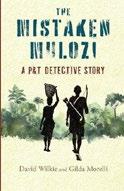
Two paths converge as the gofers for a corrupt African village general and an Indigenous woman of the forest embark on perilous journeys to solve unfolding mysteries.
Wilkie and Morelli’s richly textured story is brimming with vividly-etched characters, headed by 16-year-old Pumbafu—his name means “idiot,” but he’s sharp as a tack. When General Beaudoin, who holds court in Mama Dorkas’ Rafiki Bar in a Zaire village, sends him to find a boy called Sharpie, Pumbafu finds his quarry stabbed to death—and the Lebanese husband and wife who own the store where Sharpie’s body was found are missing. They will each suffer the general’s considerable wrath if Pumbafu doesn’t find some answers. Meanwhile, 16-year-old Toh’lee turns her back on her family and her clan to search for her mother, who was banished from her village after she was accused of being a witch. Along their journeys, Pumbafu and Toh’lee encounter several memorable characters before meeting and forming a partnership. One of the most impressive is Sister Anna, a nun who ministers selflessly to villagers. Her assistant feels sure “she is a saint. But none of the men in her order in Rome will ever see that, nor acknowledge its truth.” On the flip side of that coin
are General Beaudoin and his son, Chai, who “is always causing some problem for himself or those around him.” Right now, the problem is that Chai is missing. This is a propulsive read, steeped in the cultural milieu of 1990s Congo. Wilkie and Morelli write with a vivid sense of place, an economy of exposition, and a poetic sensibility (“The road surface is as slick as potter’s clay”). A glossary at the end of the book translates African words and phrases sprinkled throughout the text, but they can be defined in context. A character roster is also helpful, but most of the players are impossible to forget.
The game is afoot with two unlikely sleuths; this looks like the beginning of a beautiful series.
Winckler, Terry | TerWin Publishing (318 pp.) $18.00 paper | Oct. 5, 2024 | 9798988144939

Winckler recounts a vivid journey through civil-wartorn Guatemala in the early 1970s and mid-’80s in this memoir that explores the conflict’s impact on a group of guerrilla fighters.
The author first arrived in Guatemala in 1972 as a volunteer aid worker trying to treat cases of tuberculosis in a Mayan village. The country was already more than a decade into a civil war, in which hundreds of students and professors around Guatemala City had been “disappeared”: “If there were
A propulsive read, steeped in the cultural milieu of 1990s Congo.
THE MISTAKEN MULOZI
witnesses, a rarity, they would speak of men driving white vehicles with dark windows who opened doors and snatched victims.” Upon his return, Winckler became a reporter in a small California town, and he returned to Guatemala in 1985 as a journalist. He met another reporter from England who was traveling to Nebaj to search for his missing colleague, and the pair spent six days with guerrilla fighters. He met a woman named Ana, who was a member of a new group called the Revolutionary Organization of the People in Arms. Ana was one of the few women to have gone “up the mountain”—a term that guerrilla fighters use to describe their calling, in which “the most immediate probability is to die,” as one guerrilla put it. In the book’s middle section, Winckler transitions from a freeroving style that moves forward and backward in time to a more experiential series of day-by-day, diary-like entries. Throughout, his prose is lively and filled with descriptive detail that brings the environs and people to vivid life: “In rhythm we entered more densely forested terrain, took a sharp left, and plunged through bush into a small opening where five green-clad figures awaited, full of smiles, embraces and good cheer.” Winckler is also careful to always situate his personal story within the larger contexts of Guatemalan and world history, particularly highlighting the connections between the troubled country and the United States. He also effectively traces the impact of the guerrillas’ actions upon his return to Guatemala in 2017.
A clear-eyed, reflective, and compelling mix of personal narrative and journalism.

For more Indie content, visit Kirkus online.
8.
Kirkus Media LLC 1140 Broadway, Suite 802 New York, NY 10001
9. Full Names and Complete Mailing Addresses: Publisher and CEO: Meg Kuehn Editor in Chief: Tom Beer 1140 Broadway, Suite 802 New York, NY 10001
A. T
B Paid and/or requested circulation
1. Paid/requested outside-county mail subscriptions
2 Paid in-county subscriptions
3. Sales through dealers and carriers, street vendors, counter sales, and other non-USPS paid distribution
4 Other classes mailed through the USPS
C. Total paid and/or requested circulation
D Free distribution by mail
1 Outside-county
2 In-county
3 Other classes mailed through the USPS
4 Outside the mail
E. Total free distribution
F. Total distribution
G Copies not distributed
H. Total I

10. Owner: Herbert Simon Revocable Trust - Herbert Simon Trustee Kirkus Management LLC 1140 Broadway, Suite 802 New York, NY 10001 31%
11. There are no bondholders, mortgagees, and other security holders owning or holding 1 percent or more of total amount of bonds, mortgages, or other securities.
12. Tax Status: The purpose, function, and nonprofit status of this organization and the exempt status for federal income tax purposes have not changed during preceding 12 months
Publication Title: Kirkus Reviews Issue Date for Circulation Data Below: Oct. 1, 2024
Extent and Nature of Circulation: National distribution to libraries, publishers, publicists, and other publishing professionals





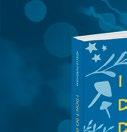











“A




















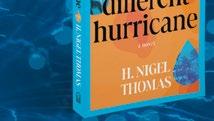
“Sharply observed, fiercely researched, starkly revealing, written with wit, verve, and insight.”
— MICHAEL CHABON
“In












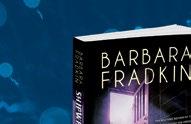





— JUDITH ELAINE COWAN










SHIPWRECKED SOULS








“Two families with ancient wartime secrets collide in this riveting return of the beloved Inspector Green... A beautifully told story.” — IONA WHISHAW dundurn.com @dundurnpress
















